software as a service
description: software licensing and delivery model in which software is licensed on a subscription basis and is centrally hosted
149 results
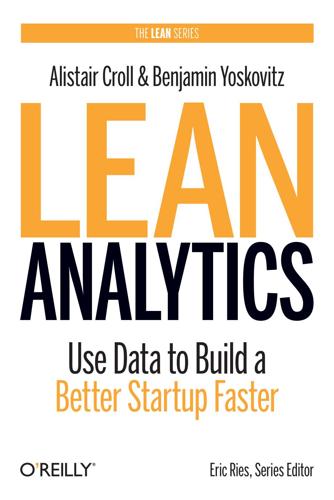
Lean Analytics: Use Data to Build a Better Startup Faster
by
Alistair Croll
and
Benjamin Yoskovitz
Published 1 Mar 2013
Rose, Kevin, Measuring the MVP Rubicon Consulting, Content Creation and Interaction The Rules of Work (Pearson), Span of Control and the Railroads Rumsfeld, Donald, Eight Vanity Metrics to Watch Out For Running Lean (Maurya), Running Lean and How to Conduct a Good Interview S SaaS (Software as a Service) model about, Model Two: Software as a Service (SaaS) Backupify case study, Backupify’s Customer Lifecycle Learning ClearFit case study, ClearFit Abandons Monthly Subscriptions for 10x Growth key takeaways, Wrinkles: Freemium, Tiers, and Other Pricing Models measuring metrics in, Model Two: Software as a Service (SaaS), Paid Enrollment OfficeDrop case study, OfficeDrop’s Key Metric: Paid Churn ROI in, The Penny Machine stage comparisons in, Model + Stage Drives the Metric You Track upselling in, Model Two: Software as a Service (SaaS), Content Creation and Interaction, Freemium Versus Paid user flow depicted through, Churn Complications wrinkles in, ClearFit Abandons Monthly Subscriptions for 10x Growth Sack, Andy, Getting Answers at Scale Salesforce, The Minimum Viable Vision Salesforce.com, What DuProprio Watches Scale stage (Lean Analytics) about, What Stage Are You At?
…
Farina, Massimo, Static Pixels Eliminates a Step in Its Order Process feedback, user (see user feedback) Feld, Brad, Moz Tracks Fewer KPIs to Increase Focus Ferriss, Tim, Measuring the MVP FireClick survey, Conversion Rate FireWire technology, Pricing Metrics Fishkin, Rand, The Discipline of One Metric That Matters Fitbit device, About Those People Flickr site, Correlated Versus Causal Metrics Flurry analytics firm, Model Three: Free Mobile App Flurry mobile analytics firm, Percent Active Mobile Users/Players Followermonk tool, Finding People to Talk To for-sale-by-owner marketplace, What DuProprio Watches force multipliers, The Lean Canvas The Four Steps to the Epiphany (Blank), Customer Development 4SquareAnd7YearsAgo product, Beyond the Viral Coefficient fraud, tracking, What DuProprio Watches, What DuProprio Watches free mobile apps model (see mobile apps model) freemium model about, Model Two: Software as a Service (SaaS) Buffer case study, Buffer Goes from Stickiness to Scale (Through Revenue) key metrics for, Model Two: Software as a Service (SaaS) paid versus, Freemium Versus Paid Revenue stage on, Where Does the Money Come From? sample churn calculations, Churn Socialight case study, Socialight Discovers the Underlying Metrics of Pricing wrinkles in, ClearFit Abandons Monthly Subscriptions for 10x Growth Frito-Lay, Swiffer Gives Up on Chemistry G GAMESbrief.com, Bottom Line Gannett, Allen, Selling into Enterprise Markets Gascoigne, Joel, Is My Business Model Right?
…
Hoskins, Titus, Click-Through Rates Hotwire site, Model Six: Two-Sided Marketplaces Huffman, Steve, Bottom Line Hyatt, Nabeel, Attacking the Leading Indicator hybrid mode (e-commerce model), What Mode of E-commerce Are You? I IaaS (Infrastructure as a Service) model, Model Two: Software as a Service (SaaS) IEEE (Institute of Electrical and Electronics Engineers), Slower Cycle Time Imagine (Lehrer), Stars, Dogs, Cows, and Question Marks in-game advertising, Model Three: Free Mobile App inactive users, defining, Churn Indiegogo site, Model Six: Two-Sided Marketplaces information, kinds of, Eight Vanity Metrics to Watch Out For Infrastructure as a Service (IaaS) model, Model Two: Software as a Service (SaaS) inherent virality, Stage Three: Virality, Virality Instagram site, Static Pixels Eliminates a Step in Its Order Process installation volume metric, Model Three: Free Mobile App Institute of Electrical and Electronics Engineers (IEEE), Slower Cycle Time integration cost metric, Stickiness and Usability intrapreneurs about, Lean from Within: Intrapreneurs BCG box, Changing—or Innovating to Resist Change?
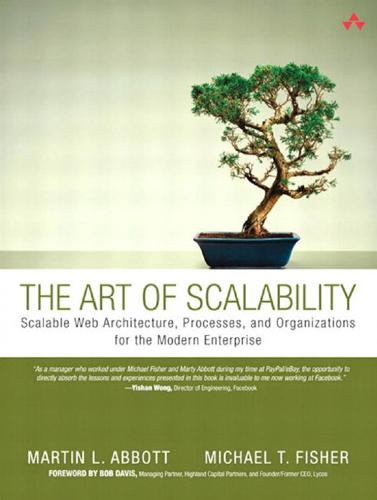
The Art of Scalability: Scalable Web Architecture, Processes, and Organizations for the Modern Enterprise
by
Martin L. Abbott
and
Michael T. Fisher
Published 1 Dec 2009
Key Points • The term cloud has been around for decades and was used primarily in network diagrams. • The idea of the modern cloud concept was put forth by IBM in its Autonomic Computing Manifesto. • Developing alongside the idea of cloud computing was the concept of Software as a Service, Infrastructure as a Service, and many more “as a Service” concepts. • Software as a Service refers to almost any form of software that is offered in a pay as you use model. • Infrastructure as a Service is the idea of offering infrastructure such as storage, servers, network, and bandwidth in a pay as you use model. • Platform as a Service provides all the required components for developing and deploying Web applications and services. • Everything as a Service is the idea of being able to have small components that can be pieced together to provide a new service. • Grid computing as a concept has been around for almost two decades.
…
Introducing AllScale Throughout The Art of Scalability, we will refer to a fictional company, AllScale. AllScale started out as a custom software development company, contracting individual developers out by the hour for projects. Over time, the company started to bid on special custom development projects for both back office IT systems and Web enabled Software as a Service (SaaS) platforms. As the company matured, it started developing tools for its own internal usage and then started selling these tools as a service to other companies using the SaaS model. 9 10 C HAPTER 1 T HE I MPACT OF P EOPLE AND L EADERSHIP ON S CALABILITY The tool with which AllScale has had the most traction is the human resources management (HRM) system.
…
Engineering teams are one of the two or three teams most likely to truly understand the limits of the system as implemented given that they are one of the teams with the greatest daily involvement with that system. As such, they are key contributors to the process of identifying future scale issues. Production Operations Responsibilities The production operations team is responsible for running the hardware systems and software systems necessary to complete the mission of the company. In the Software as a Service and Web2.0 worlds, this is the team responsible for running and monitoring the systems that create the company’s revenue. In a classic information technology organization, such as those that might exist in a bank, these members are responsible for running the applications and systems that handle the bank’s daily transactions, and so on.
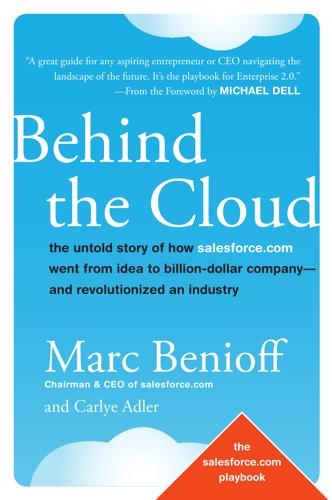
Behind the cloud: the untold story of how Salesforce.com went from idea to billion-dollar company--and revolutionized an industry
by
Marc Benioff
and
Carlye Adler
Published 19 Nov 2009
See Corporate sales teams Project Homeless Connect, 142–143 276 Prospects: introducing to happy customers, 100–101; preparing to talk with, 88 Public relations: capitalizing on competition’s, 41–44; changes in public image, 217, 220–221; company story for, 40–41; developing cohesive message, 33–34; market positioning and, 23–25; receiving global, 185–186; regular announcements for, 60; reliability and, 114; sharing philanthropic models, 146–147 Q Quiet-period rules, 215–218 R Rainforest2Reef, 157, 160 Recharge time, 1–3 Recruiting: building culture for, 15, 16, 17, 19, 233–239; maintaining hiring standards, 239–242; retaining top talent, 242–244 Red Cross, 157 Relationships: with competition and customers, 39–40; cultivating with journalists, 41–44; establishing in candidate interviews, 235, 241; establishing with leaders, 241; fostering loyalty with, 246–247; leveraging business partnerships, 59; treating customers as partners, 69–71 Relevance: events establishing market, 60, 63–64; giving philanthropic efforts, 148–152 Reliability: public relations and, 114; service disruptions and, 110–113 Reusing infrastructure technology, 109–110 Revenue: challenges of subscription model, 218–220; long-term planning for, 223; profitability vs., 208–209 Rewarding volunteers, 165 Ridout, Bob, 99 Ries, Al, 37 Risks: developing company persona, 27–28; taking, 18–20 Robinson, Phill, 58 Rosebud Sioux Tribe, 162 Rotating assignments, 248 Rudnitsky, David, 89–95 S SaaS (Software-as-a-Service): developing regulatory environment for, 221–222; inspiration for, 3–4, 135–139; on-demand model vs. hosted choice, 105–106; PaaS as extension of, 122–123; potentials in CRM for online, 6; providing API, 119; public relations for, 23–25; revenue recognition position paper for, 214; selling directly to end users, 52–54; testing product usability, 13–14 SaaS (Software-as-a-Service). See also PaaS Saba, 7, 8, 9 Sabbaticals, 1–3 Index Sales: abandoning unsuccessful strategies, 96–97; building with word-of-mouth, 47–49; call preparation for, 92–93; closing, 93; cooperative effort in, 92; corporate and enterprise models for, 177–178; directing with V2MOM, 232–233; enlisting customers for, 73–76; establishing pricing for, 78–79; facts creating credibility for, 94; free trial strategies, 67–68, 96–97; increasing number of reps for, 79–80; introducing prospects to happy customers, 100–101; landing and expanding, 95, 184–185; leveraging times of change, 82–85; metrics monitoring, 101; negotiating, 94; paperwork for, 94; performance incentives for, 245–246; preparing distribution and growth of, 86–91; pursuing game-changing, 95; recruiting as, 236–239; segmenting markets, 80–81; selling corporate services, 98–100; strategies for trial offers, 96–97; supporting existing customers, 97–98; targeting to higher education and NGOs, 166–168; telesales, 76–78; thinking big, 91–92; treating customers as partners, 69–71; visiting customers, 93; Web sites as reps for, 72–73 Sales force automation (SFA), 5–6 Sales reps: commissions motivating, 85; increasing number of, 79–80; sharing best practices with team, 94; using Web sites as, 72–73 SalesForce Australia, 189–191 Salesforce Foundation: establishment of, 140; 1–1–1 Model of, 142–143, 159–161 Salesforce.com: AppExchange and, 125–126, 196–197; beginnings of, 11–12, 14–21; branding, 28–32; collaborative spirit of, 131–132, 145; creating story about, 40–41; customer success managers at, 97–98; designing limitless system, 103–106; developing Web-based operating system, 120–125; employee-generated disaster relief at, 163–164; ensuring reliability, 110–113; environmental mission statement of, 163; evolving vision statements, 232; focusing, 12–13; free trial subscriptions, 67–68, 96; going after market leaders, 34, 36–38; harnessing customer ideas, 127–130; initial meetings about, 9–11; initiating product market, 60–61; introductory party for, 25–27; keeping on-message, 33–34, 35; listening to customers, 13–14, 85–86; listing on NYSE, 153, 210–211, 212–213; marking success with donations, 167–168; persona of, 27–28; preparing for sales growth, 86–91; product development at, 106–107, 115–118, 132–133; seed-and-grow strategy, 100; selling to end users, 52–54 Salesforce.com.
…
Salesforce.com changed corporate xiii FOREWORD philanthropy by integrating giving into its business model—and sharing that model so that myriad companies have collectively flooded talent, products, services, and billions of dollars into their communities. Because salesforce.com offers employees an opportunity to make a difference, not just earn a paycheck, it’s known as one of the best places to work. Its original application has become the number-one hosted CRM service, and the company has established itself as the leader in the Software-as-a-Service (SaaS) industry it pioneered. And, through relentless focus, creativity, and passion, salesforce.com inspired an enterprise cloud computing industry. In short, the new and unconventional ideas that salesforce.com has evangelized have changed the way we do business and changed the world. There has been a profound shift toward cloud computing in the past few years.
…
My vision was to make software easier to purchase, simpler to use, and more democratic without the complexities of installation, maintenance, and constant upgrades. Rather than selling multimillion-dollar CD-ROM software packages that took six to eighteen months for companies to install and required hefty investments in hardware and networking, we would sell Software-as-a-Service through a model known as cloud computing. Companies could pay per-user, 3 BEHIND THE CLOUD per-month fees for the services they used, and those services would be delivered to them immediately via the Internet, in the cloud. If we hosted it ourselves and used the Internet as a delivery platform, customers wouldn’t have to shut down their operations as their programs were installed.
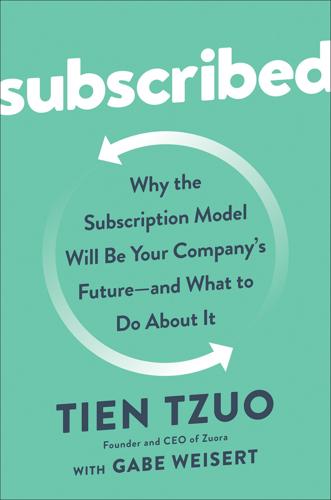
Subscribed: Why the Subscription Model Will Be Your Company's Future - and What to Do About It
by
Tien Tzuo
and
Gabe Weisert
Published 4 Jun 2018
to “What does my customer want, and how can I deliver that as an intuitive service?” When Salesforce launched, everyone realized that it was different—no more huge installations and piles of hardware. It was software as a service, not a static product. Because of that, we were empowered to come up with new ways to market it, to sell it, and to run a truly subscription-based company. The ideas we came up with—usage-based pricing, multitiered editions, customer success organizations—are now standard operating procedure for software-as-a-service companies, but when we were building Salesforce, none of them existed. We had to invent them. But starting everything from scratch had its downsides, too.
…
As the saying goes, “You become your customers,” so that initial cohort is really important. You really need to take pains to point your sales team toward quality customers at the right price points; otherwise they can wind up like cats who drag back all sorts of strange things to your doorstep. When we started Zuora, the obvious first strategy was to sell to other software-as-a-service companies like us. But we were always wary of becoming too niche. More important, “flexibility” was a really critical benefit of our service, and we could create that flexibility only by having a diverse set of customers. So we went and found a hardware company, a media company, a consumer subscription company, etc.
…
V., 5–6 real estate industry, 120 Recode, 78 recurring costs, 181 recurring profit margin, 182 Rent the Runway, 23 Renzu, 171 retail industry, 22–36 Apple, service revenue growth at, 26–27 customer versus product focus, 26 discovery process, stores as means of fostering, 33 ecommerce, growth of, 23 experience for customer, creating, 33–34 ID for customers, 26–27 knowing your customer, 28 negative option model and, 28–30 online experience, physical stores as extensions of, 32–36 online retailers, physical stores opened by, 23 pickup/delivery service, receipt of goods through, 33, 34 products as means of enabling customer-based services, 32 static products, applying service-oriented mindset to, 30–32 traditional brick and mortar retail, 22–24 ridesharing services, 53–55 Ries, Eric, 48 Roam, 120 Robinhood, 121 Run element, of PADRE operating model, 203–4 Rushton, James, 44 SaaS. See software as a service (SaaS) model Sage, 90 sales, 130–31, 156–73 acquisition of initial customers, 159–61 cross-selling, 164–67 growth through establishing and growing customer relationships, 158–59 guided selling model, 164 hybrid sales model, adopting, 163 international sales, 168–70 launching into new segments, 167–68 pricing and packaging, optimizing, 171–72 sales force expansion, 162–64 segmented sales force, use of, 168 self-service sales model, 163–64 shifting from asset transfer to long-term relationship, 156–57 strategic acquisitions, 170–71 teaching as element of, 158 upselling, 164–67 value of customers, increasing, 164–67 Salesforce, 4–5, 18, 63, 83, 145, 161, 162, 165, 183, 192 SAP, 190 Scalabre, Olivier, 103–4, 111–12 Schneider Electric, 108, 112, 119 Schultz, Howard, 140 Searchers, The (film), 37 Sears, 14, 22 segmented sales force, 168 SEI.
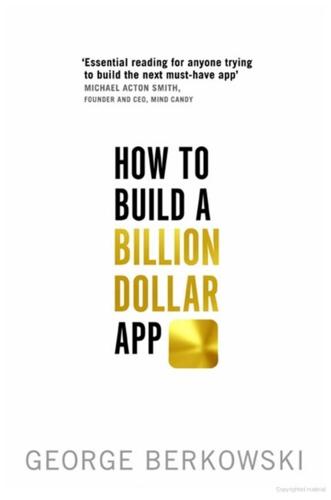
How to Build a Billion Dollar App: Discover the Secrets of the Most Successful Entrepreneurs of Our Time
by
George Berkowski
Published 3 Sep 2014
The first is gaming, where users pay for a virtual service or good. The second is e-commerce / marketplace, where users pay for a real world good or service. The third is advertising (or consumer audience building in the case where the company has not yet switched on the advertising). The fourth is Software as a Service (SaaS), whereby users pay for cloud-based software (typically via a subscription model). And the last is enterprise, whereby companies pay for larger-scale software (again, via a subscription-type model). So there isn’t a huge amount of reinventing the wheel here. If you want to make it big, it’s pretty clear what business models to stick to.
…
• As you flush out a great design, start prototyping it. Your goal is to get it into user’s hands quickly, so that you can get as much feedback as possible. Your goal is to get to drive towards delivering wow! • No matter what happens, you’ll need to have an app ready for real users’ hands. If your business model is simple (gaming, Software as a Service) expect to be operational, at least in a basic way. • If your model is more complicated (marketplace), then you have a solid proof of concept. Use that to secure investment to build it out. Team • You should not use the excuse of not having a cofounder to slow your progress, but finding a partner in crime who shares the vision and has complementary skills will make the journey more enjoyable
…
Flipboard represents the flipside that actively targeted big-ticket advertising from the get-go – and has been able to deliver. These players either develop their own advertising platforms (Flipboard), or seek to be acquired and monetise off the acquirers’ already well-established platform (as Instagram did with Facebook). 4. SOFTWARE AS A SERVICE (SAAS). This is where consumers pay for cloud-based software or services. WhatsApp is the first ‘mobile-first’ company with this model, charging some users $0.99 per year as a subscription via app-store payments, though its business model has evolved a number of times. A number of companies – which are not mobile first, but still have heavily used apps, such as Evernote (a note-taking app), Dropbox and Box (two document storage apps) – have this business model, whereby they charge subscriptions either via app-store payment channels, or bill you directly via your credit card. 5.
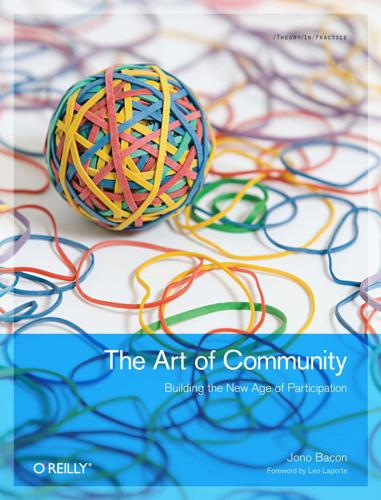
The Art of Community: Building the New Age of Participation
by
Jono Bacon
Published 1 Aug 2009
Horrible's Sing-Along Blog, Read-mostly communities Drupal community, Governance Does Not Suck, Dries Buytaert, Drupal and Acquia, Dries Buytaert, Drupal and Acquia DVCS (Distributed Version Control System), Source Control E East Bay and Tri-Valley SPCA, The Gates of Your Community, The Gates of Your Community Easterbrook, Gregg, Statistics and Automated Data eBay, Carolyn Mellor, X.commerce, PayPal, and eBay, Carolyn Mellor, X.commerce, PayPal, and eBay, Carolyn Mellor, X.commerce, PayPal, and eBay Ebron, Rafael, Mary Colvig, Mozilla economy, social, The Art of Community (see social economy) editing, collaborative, Collaborative Editing, Reporting, Reporting ego, Avoid Ego, or Others Will Avoid You, Avoid Ego, or Others Will Avoid You Ekiga (SIP client), Voice over IP (VoIP), Voice over IP (VoIP) electing council members, Nominating and Electing Council Members, Forming a new council electrical power, at events, Ilan Rabinovitch, Southern California Linux Expo, Ilan Rabinovitch, Southern California Linux Expo elevator pitch, Assessing Contributors, Assessing Contributors email, about private topics, Privacy entitlement, Avoid Ego, or Others Will Avoid You, Avoid Ego, or Others Will Avoid You environment, Community: The Bird’s-Eye View, Community: The Bird’s-Eye View, Units of Belonging, Units of Belonging familiarity of, effect on confidence, Units of Belonging, Units of Belonging positive, Community: The Bird’s-Eye View, Community: The Bird’s-Eye View equipment, for events, Equipment, Additional notes, Event-specific notes, Event-specific notes, Infrastructure, Infrastructure errata, If You Like (or Don’t Like) This Book escalation of issues, Escalation, Escalation, Escalation, Escalation clarifying when expanding governance, Escalation, Escalation in Ubuntu community, Escalation, Escalation Esguerra, Richard, Richard Esguerra, Humble Indie Bundle, Richard Esguerra, Humble Indie Bundle ethos, collaboration-driven, Collaboration-Driven Ethos, Collaboration-Driven Ethos Ettrich, Matthias, Enlightened Dictatorship Eucalyptus open source cloud infrastructure, Mårten Mickos, MySQL and Eucalyptus, Mårten Mickos, MySQL and Eucalyptus events, The Art of Community, Events, Events, Organizing a Community Event, At the event, Attracting Contributors, Events and Conferences, Events and Conferences, Choosing Events, Choosing Events, Choosing Events, Submitting your paper, Submitting your paper, Promoting your talk, Promoting your talk, Delivering Presentations, Long versus short presentations, Creating attractive slides, Long versus short presentations, Long versus short presentations, Long versus short presentations, Building Family Values, Building Family Values, Events, Events, Events, Step 2: Find Help, Step 2: Find Help, Step 2: Find Help, Step 2: Find Help, Step 3: Set Deadlines, Step 3: Set Deadlines, Step 4: Make Time, Step 4: Make Time, Step 4: Make Time, Step 4: Make Time, Step 4: Make Time, Organizing Physical Events, Organizing Physical Events, Organizing Physical Events, Organizing Physical Events, Organizing Physical Events, Location/venue, Location/venue, Accommodation, Accommodation, Equipment, Equipment, Date/time, Date/time, Cost, Cost, Registering attendance, Registering attendance, Catering, Catering, Insurance/unions, Insurance/unions, Insurance/unions, Insurance/unions, Organizing a Sprint, Additional notes, Additional notes, Additional notes, Additional notes, Additional notes, Additional notes, Organizing a Summit, Inside a session, Inside a session, Event-specific notes, Event-specific notes, Event-specific notes, Event-specific notes, Event-specific notes, Event-specific notes, Event-specific notes, Organizing an Unconference, Event-specific notes, Event-specific notes, Event-specific notes, Event-specific notes, Event-specific notes, Organizing Online Events, Organizing Online Events, Organizing Online Events, Medium, Virtual worlds, Date/time, Date/time, Online Discussion Meetings, Running the meeting, Organizing Online Tutorials, Event-specific notes, Ilan Rabinovitch, Southern California Linux Expo, Ilan Rabinovitch, Southern California Linux Expo, Ilan Rabinovitch, Southern California Linux Expo, Ilan Rabinovitch, Southern California Linux Expo, Ilan Rabinovitch, Southern California Linux Expo (see also Ubuntu Developer Summit) benefits of, Events, Events building buzz with, Attracting Contributors choosing, Choosing Events, Choosing Events, Choosing Events costs of, Events and Conferences, Events and Conferences family-building effects of, Building Family Values, Building Family Values, Events online events, Organizing Online Events, Organizing Online Events, Organizing Online Events, Medium, Virtual worlds, Date/time, Date/time, Online Discussion Meetings, Running the meeting, Organizing Online Tutorials, Event-specific notes date and time of, Date/time, Date/time discussion meetings, Online Discussion Meetings, Running the meeting medium for hosting, Medium, Virtual worlds overview of, Organizing Online Events, Organizing Online Events tutorials, Organizing Online Events, Organizing Online Tutorials, Event-specific notes organizing, Events, Events, Organizing a Community Event, At the event, Step 2: Find Help, Step 2: Find Help, Step 2: Find Help, Step 2: Find Help, Step 3: Set Deadlines, Step 3: Set Deadlines, Step 4: Make Time, Step 4: Make Time, Step 4: Make Time, Step 4: Make Time, Step 4: Make Time allocating time for event, Step 4: Make Time, Step 4: Make Time, Step 4: Make Time collaboration on, Events, Events deadlines for, Step 3: Set Deadlines, Step 3: Set Deadlines finding help, Step 2: Find Help, Step 2: Find Help Google's experience with, Step 4: Make Time, Step 4: Make Time meetings for, Step 2: Find Help, Step 2: Find Help use of social media for, Organizing a Community Event, At the event physical events, Organizing Physical Events, Organizing Physical Events, Organizing Physical Events, Organizing Physical Events, Organizing Physical Events, Location/venue, Location/venue, Accommodation, Accommodation, Equipment, Equipment, Date/time, Date/time, Cost, Cost, Registering attendance, Registering attendance, Catering, Catering, Insurance/unions, Insurance/unions, Insurance/unions, Insurance/unions, Organizing a Sprint, Additional notes, Additional notes, Additional notes, Additional notes, Additional notes, Additional notes, Organizing a Summit, Inside a session, Inside a session, Event-specific notes, Event-specific notes, Event-specific notes, Event-specific notes, Event-specific notes, Event-specific notes, Event-specific notes, Organizing an Unconference, Event-specific notes, Event-specific notes, Event-specific notes, Event-specific notes, Event-specific notes, Ilan Rabinovitch, Southern California Linux Expo, Ilan Rabinovitch, Southern California Linux Expo, Ilan Rabinovitch, Southern California Linux Expo accommodations, Accommodation, Accommodation catering for, Catering, Catering, Additional notes, Event-specific notes, Event-specific notes conferences, Organizing Physical Events cost of, Cost, Cost, Additional notes, Event-specific notes, Ilan Rabinovitch, Southern California Linux Expo, Ilan Rabinovitch, Southern California Linux Expo, Ilan Rabinovitch, Southern California Linux Expo date and time for, Date/time, Date/time, Additional notes, Event-specific notes, Event-specific notes equipment at, Equipment, Equipment, Additional notes, Event-specific notes, Event-specific notes insurance needs, Insurance/unions, Insurance/unions location of, Location/venue, Location/venue registering attendance, Registering attendance, Registering attendance, Additional notes, Event-specific notes, Event-specific notes remote participation in, Inside a session, Inside a session sprints, Organizing Physical Events, Organizing a Sprint, Additional notes summits, Organizing Physical Events, Organizing a Summit, Event-specific notes, Event-specific notes types of, Organizing Physical Events, Organizing Physical Events unconferences, Organizing an Unconference, Event-specific notes union requirements, Insurance/unions, Insurance/unions presentations at, Submitting your paper, Submitting your paper, Promoting your talk, Promoting your talk, Delivering Presentations, Long versus short presentations, Creating attractive slides, Long versus short presentations, Long versus short presentations, Long versus short presentations, Ilan Rabinovitch, Southern California Linux Expo, Ilan Rabinovitch, Southern California Linux Expo attracting presenters, Ilan Rabinovitch, Southern California Linux Expo, Ilan Rabinovitch, Southern California Linux Expo delivering, Delivering Presentations, Long versus short presentations long vs. short, Long versus short presentations, Long versus short presentations promoting, Promoting your talk, Promoting your talk slides in, Creating attractive slides, Long versus short presentations submitting proposal for, Submitting your paper, Submitting your paper excitement, The Art of Community (see buzz, creating) experience, vs. theory, Theory Versus Action: Action Wins, Theory Versus Action: Action Wins F fables, The Basis of Communication Facebook, Being Social, Being Social, Facebook, Facebook, Getting started with Facebook, Getting started with Facebook, Collaboration, Campaigns and awareness, Campaigns and awareness, Events, The buildup, The buildup collaboration via, Collaboration, Campaigns and awareness, Campaigns and awareness, Events, The buildup, The buildup for campaigns and awareness, Campaigns and awareness, Campaigns and awareness for event coordination, Collaboration, Events, The buildup, The buildup getting started with, Getting started with Facebook, Getting started with Facebook history of, Facebook, Facebook overview of, Being Social, Being Social facilitators, The Role of a Facilitator, Be clear, Inside a session, Inside a session of resolution conflict, The Role of a Facilitator, Be clear of summits, Inside a session, Inside a session family, vs. belonging, Building Family Values, Building Family Values FC (Ubuntu Forums Council), Codifying Your Council, Codifying Your Council, Escalation Fedora Board, Commercial sponsorship feedback, The Art of Community, Leading by Example, Leading by Example, Gathering feedback, Gathering feedback, Gathering feedback, Gathering Structured Feedback, Gathering Structured Feedback, Being Social, Feedback, Feedback, Feedback, Feedback, Debates, Debates, Asking for feedback, Asking for feedback, Perception of you, Perception of you, Perception of you, Sharing feedback about personality issues, Sharing feedback about personality issues, Part 2: Get the facts, Community feedback, Community feedback (see also measuring community) about personality issues, Sharing feedback about personality issues, Sharing feedback about personality issues about quality of communication, Leading by Example, Leading by Example criticism, Gathering feedback for conflict resolution, Part 2: Get the facts gathering, Gathering feedback, Gathering feedback, Gathering Structured Feedback, Gathering Structured Feedback about workflow, Gathering Structured Feedback, Gathering Structured Feedback process of, Gathering feedback, Gathering feedback messenger of, to company, Community feedback, Community feedback obtaining via social media, Being Social, Feedback, Feedback, Feedback, Feedback, Debates, Debates, Asking for feedback, Asking for feedback by asking for, Asking for feedback, Asking for feedback importance of, Feedback, Feedback overview, Being Social Ubuntu 11.04 release example, Feedback, Feedback via debates, Debates, Debates personal, Perception of you, Perception of you, Perception of you Field, Jason, Planning Your Community finances, The Art of Community, The Art of Community, Financially Supporting Your Community, Financially Supporting Your Community, Revenue Opportunities, Donations (see also costs) (see also money from sponsors) required resources, Financially Supporting Your Community, Financially Supporting Your Community revenue opportunities, Revenue Opportunities, Donations financial economy vs. social economy, Building Belonging into the Social Economy, Building Belonging into the Social Economy Firefox, Attracting Contributors, Attracting Contributors, Mary Colvig, Mozilla, Mary Colvig, Mozilla fixed release cycles, Building a Strategic Plan, Building a Strategic Plan Flash plug-in, Videos focus, increasing with events, Events FooCamp (Friends of O'Reilly camp), Organizing an Unconference Ford, Henry, Working Together Is Success, Working Together Is Success Fort Minor, Mike Shinoda, Linkin Park forums, Choices, Choices, Choices, Choices, Communication fetishism, Communication fetishism, Discussion forums, Discussion forums of LugRadio, Communication fetishism, Communication fetishism use by users vs. developers, Choices, Choices, Choices, Choices frankness, Setting tone Free Culture communities, Write-centered communities, Mike Linksvayer, Creative Commons, Mike Linksvayer, Creative Commons Free Software community, Unwrapping Opportunity, Dictatorial Charismatic Leadership Freenode network, IRC Freeware Summit, Tim O’Reilly, O’Reilly Media Freudenberger, Herbert, Dealing with Burnout Friends of O'Reilly camp (FooCamp), Organizing an Unconference Fry, Stephen, Read-mostly communities G gaming communities, Richard Esguerra, Humble Indie Bundle, James Spafford, Media Molecule, James Spafford, Media Molecule GEdit, An Example: Ubuntu Bug Workflow, An Example: Ubuntu Bug Workflow Geiser, Ian Reinhart, Enlightened Dictatorship GNOME project, An Example: Ubuntu Bug Workflow, An Example: Ubuntu Bug Workflow, Bug reporting, Tool Access GNU General Public License, Dictatorial Charismatic Leadership goals, Structuring the plan, Financially Supporting Your Community, Brainstorming Ideas, Donations, Defining Purpose, Defining Purpose for measuring community, Defining Purpose, Defining Purpose for obtaining donations, Donations for strategic plan, Structuring the plan, Financially Supporting Your Community, Brainstorming Ideas Gobby (text editor), Brainstorming Ideas, Reporting, Reporting Google AdSense, Online advertising, Online advertising, Handling Absence, Handling Absence Google+, Being Social, Being Social, Google+, Getting started with Google+, Getting started with Google+, Tim O’Reilly, O’Reilly Media challenges facing, Google+ getting started with, Getting started with Google+, Getting started with Google+ overview of, Being Social, Being Social use by Tim O'Reilly, Tim O’Reilly, O’Reilly Media Google, event organizing at, Step 4: Make Time, Step 4: Make Time governance, The Art of Community, The Art of Community, The Art of Community, Accountability, Accountability, Governance Does Not Suck, Governance Does Not Suck, The Case for Governance, The Case for Governance, Follow the Leader, Follow the Leader, Engage the People, Engage the People, Aspire to Inspire, Aspire to Inspire, To Bring Peace, To Bring Peace, Dictatorial Charismatic Leadership, Dictatorial Charismatic Leadership, Enlightened Dictatorship, Enlightened Dictatorship, Delegated Governance, Delegated Governance, Expanding Governance, Expanding Governance, Knowing When It Is Time, Knowing When It Is Time, Building the Subcouncil, Escalation, Escalation, Escalation, Communicating Between Councils, Communicating Between Councils (see also Community Council) (see also community managers) (see also councils) and accountability, Accountability, Accountability benefits of, Governance Does Not Suck, Governance Does Not Suck division of, Follow the Leader, Follow the Leader engagement with people, Engage the People, Engage the People expanding, Expanding Governance, Expanding Governance, Knowing When It Is Time, Knowing When It Is Time, Building the Subcouncil, Escalation, Escalation, Escalation, Communicating Between Councils, Communicating Between Councils clarifying issue escalation, Escalation, Escalation communication between councils, Communicating Between Councils, Communicating Between Councils forming subconcil, Building the Subcouncil, Escalation identifying when needed, Knowing When It Is Time, Knowing When It Is Time overview of, Expanding Governance, Expanding Governance indicators of need for, The Case for Governance, The Case for Governance inspiration from governing body, Aspire to Inspire, Aspire to Inspire peace as goal of, To Bring Peace, To Bring Peace types of, Dictatorial Charismatic Leadership, Dictatorial Charismatic Leadership, Enlightened Dictatorship, Enlightened Dictatorship, Delegated Governance, Delegated Governance delegated, Delegated Governance, Delegated Governance dictatorial charismatic leadership, Dictatorial Charismatic Leadership, Dictatorial Charismatic Leadership enlightened dictatorship, Enlightened Dictatorship, Enlightened Dictatorship Graen, George B., Diversity graphs, Plugging your stats into graphs, Plugging your stats into graphs Gwibber tool, Controlling the Fire Hose, Controlling the Fire Hose, Optimizing How You Post H hangouts, in Google+, Getting started with Google+ Hanifan, L.J., Building Belonging into the Social Economy hashtags, Getting more eyeballs, Where to look, Asking for feedback, The buildup, At the event Hawthorn, Leslie, Step 4: Make Time, Event-specific notes, Event-specific notes health of community, tracking, Tracking Health, Tracking Health, Promoting a Feedback Culture, Promoting a Feedback Culture, Building a Set of Generals, Building a Set of Generals, Reacting to Community Concerns, Reacting to Community Concerns by calls to team leaders, Building a Set of Generals, Building a Set of Generals overview, Tracking Health, Tracking Health promoting feedback culture, Promoting a Feedback Culture, Promoting a Feedback Culture responding to concerns, Reacting to Community Concerns, Reacting to Community Concerns hiring community manager, Risk, Risk Holbach, Daniel, Planning, Hooks ’n’ Data, Visibility Is Key, Visibility Is Key hooks and data, Hooks ’n’ Data, Hooks ’n’ Data, Statistics and Automated Data, Plugging your stats into graphs, Surveys and Structured Feedback, Showing off your survey reports, Observational Tests, Observational Tests, Measuring Mechanics, Measuring Mechanics, Gathering General Perceptions, Perception of you, Part 2: Get the facts, Part 2: Get the facts gathering general perceptions, Gathering General Perceptions, Perception of you in conflict resolution, Part 2: Get the facts, Part 2: Get the facts measuring mechanics, Measuring Mechanics, Measuring Mechanics observational tests, Observational Tests, Observational Tests overview, Hooks ’n’ Data, Hooks ’n’ Data statistics and automated data, Statistics and Automated Data, Plugging your stats into graphs surveys, Surveys and Structured Feedback, Showing off your survey reports hotels, for event accommodation, Accommodation, Accommodation Hudson, Paul, The Professional Press, The Professional Press Humble Indie Bundle, Richard Esguerra, Humble Indie Bundle, Richard Esguerra, Humble Indie Bundle humor, Setting tone Hybrid Theory (album), Mike Shinoda, Linkin Park I identi.ca, Reporting, Reporting, Getting started with Facebook reporting with, Reporting, Reporting users of, Getting started with Facebook implementation plan, Structuring the plan incentives, for donations, Donations Innovate Developer Conference, Carolyn Mellor, X.commerce, PayPal, and eBay inspiring others, Inspiring your community, Inspiring your community, Inspired Words, Inspired Words, Aspire to Inspire, Aspire to Inspire as goal of governing body, Aspire to Inspire, Aspire to Inspire through writing, Inspiring your community, Inspiring your community, Inspired Words, Inspired Words insurance, for physical events, Insurance/unions, Insurance/unions Internet Relay Chat, The Art of Community (see IRC) interviews, building buzz with, Attracting Contributors IRC (Internet Relay Chat), IRC, IRC, Communications, Observational Tests, Privacy, Internet Relay Chat (IRC), Preparing for a session, Running a session features and benefits of, IRC, IRC logging, Communications privacy issues, Privacy usability testing over, Observational Tests use with online events, Internet Relay Chat (IRC), Preparing for a session, Running a session issues, communication between teams about, The Art of Community, Ensure that teams can communicate clearly and effectively (see also conflict) J Johnson & Johnson conflict resolution approach, Part 1: Calm and reassure, The fantastical user group debacle, Part 2: Get the facts, The fantastical user group debacle, Part 3: Discuss, The fantastical user group debacle, Part 4: Document, The fantastical user group debacle, Part 5: Reflect and maintain, The fantastical user group debacle calm and reassure, Part 1: Calm and reassure, The fantastical user group debacle discuss, Part 3: Discuss, The fantastical user group debacle document, Part 4: Document, The fantastical user group debacle get the facts, Part 2: Get the facts, The fantastical user group debacle reflect and maintain, Part 5: Reflect and maintain, The fantastical user group debacle Jokosher project, Planning Your Community, Planning Your Community, Communication fetishism, Reviewing new developers: In depth, Reviewing new developers: In depth, Bug reporting, Regular Workflow Assessment, Regular Workflow Assessment bug tracking, Bug reporting communication channels used for, Communication fetishism contributions of Laszlo Pandy, Reviewing new developers: In depth, Reviewing new developers: In depth workflow assessment during, Regular Workflow Assessment, Regular Workflow Assessment justice, lack of, Lack of Justice, Lack of Justice K KDE project, Enlightened Dictatorship, Enlightened Dictatorship, Creating and Running Events, Creating and Running Events keynotes, at events, Opening keynotes, Opening keynotes KGRUBEditor, Observational Tests KHTML technology, Enlightened Dictatorship, Enlightened Dictatorship KickStarter, Donations Kiss, Tom, James Spafford, Media Molecule L Langridge, Stuart (Aq), Planning Your Community Laporte, Leo, Foreword from the First Edition Launchpad (software collaboration platform), An Example: Ubuntu Bug Workflow, Getting to know the problem, Hooks ’n’ Data, Hooks ’n’ Data leadership, The Art of Community, The Art of Community (see community managers) (see governance) Lessig, Lawrence, Untwisting the tail, Announcing Your Community licensing, Untwisting the tail, Untwisting the tail, Videos, Mike Linksvayer, Creative Commons, Mike Linksvayer, Creative Commons Liebling, Alison, Gathering General Perceptions lightning talks, Lightning talks, Lightning talks Linkin Park, Mike Shinoda, Linkin Park, Mike Shinoda, Linkin Park Linksvayer, Mike, Mike Linksvayer, Creative Commons, Mike Linksvayer, Creative Commons Linspire (formerly Lindows), Blog wars, Blog wars Linux community, The Art of Community, The Art of Community, Write-centered communities, Diversity, Diversity, Linus Torvalds, Linux, Linus Torvalds, Linux (see also Ubuntu community) (see also Xubuntu community) Linux Demo Day, Building Buzz, Building Buzz Linux Format magazine, The Professional Press, The Professional Press listening to others, The Value of Listening, The Value of Listening, Membership, Barriers to Input, Barriers to Input LittleBigPlanet community, James Spafford, Media Molecule, James Spafford, Media Molecule live streaming, Videos, Videos LoCo (Ubuntu Local Community), Observational Tests, Building a Set of Generals, Building a Set of Generals, Responsibilities, Team councils, Team councils LUGFests, Ilan Rabinovitch, Southern California Linux Expo, Ilan Rabinovitch, Southern California Linux Expo LugRadio community, The Essence of Community, The Essence of Community, The Basis of Communication, The Basis of Communication, Unwrapping Opportunity, Unwrapping Opportunity, Unwrapping Opportunity, Unwrapping Opportunity, Unwrapping Opportunity, Unwrapping Opportunity, Becoming Yourself, Becoming Yourself, Communication fetishism, Communication fetishism, Discussion forums, Podcasts, Podcasts, Location/venue, Cost, Setting expectations, Setting expectations belief in, Unwrapping Opportunity, Unwrapping Opportunity effect of unedited productions, Becoming Yourself, Becoming Yourself events of, Unwrapping Opportunity, Unwrapping Opportunity, Location/venue, Cost forums of, Communication fetishism, Communication fetishism, Discussion forums origin of, The Essence of Community, The Essence of Community podcast, Podcasts, Podcasts response to rail strike, Unwrapping Opportunity, Unwrapping Opportunity sponsorship of, Setting expectations, Setting expectations stories in, The Basis of Communication, The Basis of Communication M MacQueue bulletion board, Foreword from the First Edition Macromedia Flash plug-in, Videos mailing lists, The Mediums, Mailing lists, Mailing lists, Netiquette, Netiquette, Gathering feedback, Gathering feedback, Privacy, Communicating Between Councils effect on how people behave, The Mediums for communication between councils, Communicating Between Councils for gathering feedback, Gathering feedback, Gathering feedback overview of, Mailing lists, Mailing lists privacy concerns, Privacy top posting to, Netiquette, Netiquette Major, John, Uniting Together managers, The Art of Community, The Art of Community (see community managers) (see governance) marketing, The Art of Community (see buzz, creating) maturing of members, Profiling the polemical, Profiling the polemical McMillan, John, Building Belonging into the Social Economy measuring community, Measuring Community, Community Self-Reflection, The Foundations of Feedback, The Foundations of Feedback, Defining Purpose, Defining Purpose, Hooks ’n’ Data, Hooks ’n’ Data, Statistics and Automated Data, Plugging your stats into graphs, Surveys and Structured Feedback, Showing off your survey reports, Observational Tests, Observational Tests, Measuring Mechanics, Measuring Mechanics, Gathering General Perceptions, Perception of you, Anonymity, Anonymity, Privacy, Privacy anonymity and, Anonymity, Anonymity establishing goals of, Defining Purpose, Defining Purpose meaning in measurements, The Foundations of Feedback, The Foundations of Feedback overview of, Measuring Community, Community Self-Reflection privacy issues, Privacy, Privacy use of hooks and data, Hooks ’n’ Data, Hooks ’n’ Data, Statistics and Automated Data, Plugging your stats into graphs, Surveys and Structured Feedback, Showing off your survey reports, Observational Tests, Observational Tests, Measuring Mechanics, Measuring Mechanics, Gathering General Perceptions, Perception of you gathering general perceptions, Gathering General Perceptions, Perception of you measuring mechanics, Measuring Mechanics, Measuring Mechanics observational tests, Observational Tests, Observational Tests overview, Hooks ’n’ Data, Hooks ’n’ Data statistics and automated data, Statistics and Automated Data, Plugging your stats into graphs surveys, Surveys and Structured Feedback, Showing off your survey reports Measuring the Quality of Prison Life study, Gathering General Perceptions mechanics of collaboration, The Mechanics of Collaboration, The Mechanics of Collaboration, Measuring Mechanics, Measuring Mechanics Media Molecule, James Spafford, Media Molecule, James Spafford, Media Molecule mediator, of conflict resolution, The Role of a Facilitator, Be clear meetings, The Art of Community, Attracting Contributors, Step 2: Find Help, Step 2: Find Help, Online Discussion Meetings, Running the meeting, Management and Communications, Weekly engagements (see also events) between company and community manager, Management and Communications, Weekly engagements building buzz with, Attracting Contributors for organizing events, Step 2: Find Help, Step 2: Find Help online discussion meetings, Online Discussion Meetings, Running the meeting Mellor, Carolyn, Carolyn Mellor, X.commerce, PayPal, and eBay, Carolyn Mellor, X.commerce, PayPal, and eBay members, The Art of Community, Responsibilities, Membership, Nominating and Electing Council Members, Forming a new council (see also contributers) approval of, Responsibilities of Community Council, Membership, Nominating and Electing Council Members, Forming a new council meritocracy, Meritocracy, Meritocracy, Enlightened Dictatorship Messina, Chris, Attracting Contributors, Organizing an Unconference, Organizing an Unconference, Organizing an Unconference, Organizing an Unconference Mickos, Mårten, The Role of a Community Manager in the Corporation, Mårten Mickos, MySQL and Eucalyptus, Mårten Mickos, MySQL and Eucalyptus microphones, at events, Room Layout mindcasting, Tim O’Reilly, O’Reilly Media mindshare, Mindshare, The Mindshare Opportunity, Defining Purpose, Gathering General Perceptions mission statement, Designing Your Community, Building a Mission Statement, Building a Mission Statement, Define the scope of each team, and help team members understand that scope, Define the scope of each team, and help team members understand that scope, The Mission, The Mission and buzz, The Mission, The Mission for each team, Define the scope of each team, and help team members understand that scope, Define the scope of each team, and help team members understand that scope overview of, Designing Your Community writing, Building a Mission Statement, Building a Mission Statement money from sponsors, The Art of Community, The Art of Community, Handling the Money, Handling the Money (see also costs) (see also finances) Mozilla, Attracting Contributors, Attracting Contributors, Mary Colvig, Mozilla, Mary Colvig, Mozilla mrben (Ben Thorp), The Essence of Community, The Basis of Communication, The Basis of Communication multimedia, use when announcing community, Announcing Your Community music industry, and community, Mike Shinoda, Linkin Park, Mike Shinoda, Linkin Park N negative energy, Honesty, Honesty netiquette, Netiquette, Netiquette news, on website, Staying Current, Staying Current Nielsen, Jakob, Announce, Announce Nielsen, Michael, Tim O’Reilly, O’Reilly Media nominating council members, Nominating and Electing Council Members, Forming a new council North, Gail, Dealing with Burnout notetakers, at summits, Inside a session O O'Reilly Media, Tim O’Reilly, O’Reilly Media, Tim O’Reilly, O’Reilly Media O'Reilly's Radar site, Staying Current O'Reilly, Tim, Don’t Be That Guy/Girl, Staying Current, Privacy, Tim O’Reilly, O’Reilly Media, Tim O’Reilly, O’Reilly Media Obama, Barack, Unwrapping Opportunity, Unwrapping Opportunity, Aspire to Inspire, Aspire to Inspire as inspirational orator, Aspire to Inspire, Aspire to Inspire election of, Unwrapping Opportunity, Unwrapping Opportunity objectives, in strategic plan, Structuring the plan, Pulling Together the Threads, Financially Supporting Your Community objectivity, in conflict resolution, Be objective, Be objective, Be objective Ogg Theora, Videos Oliver, Jamie, The Mindshare Opportunity, The Mindshare Opportunity On Writing Well (Zinsser), Don’t write like an institution on-ramp, The On-Ramp: Creating Collaborative Processes, The On-Ramp: Creating Collaborative Processes, The On-Ramp: Creating Collaborative Processes, Identifying the On-Ramp, Identifying the On-Ramp, Developing Knowledge, Developing Knowledge, Determining Contributions, Determining Contributions, Growing Kudos, Growing Kudos defined, The On-Ramp: Creating Collaborative Processes determining contributions, Determining Contributions, Determining Contributions identifying, Identifying the On-Ramp, Identifying the On-Ramp showing appreciation, Growing Kudos, Growing Kudos skills acquisition, Developing Knowledge, Developing Knowledge steps in, The On-Ramp: Creating Collaborative Processes, The On-Ramp: Creating Collaborative Processes one-on-one discussion, for gathering feedback, Gathering feedback, Gathering feedback online events, Organizing Online Events, Organizing Online Events, Organizing Online Events, Medium, Virtual worlds, Date/time, Date/time, Online Discussion Meetings, Running the meeting, Organizing Online Tutorials, Event-specific notes date and time of, Date/time, Date/time discussion meetings, Online Discussion Meetings, Running the meeting medium for hosting, Medium, Virtual worlds overview of, Organizing Online Events, Organizing Online Events tutorials, Organizing Online Events, Organizing Online Tutorials, Event-specific notes open days, building buzz with, Attracting Contributors Open Source Conference (OSCON), Long versus short presentations, Long versus short presentations open source development, Building Belonging into the Social Economy, Building Belonging into the Social Economy, Planning Your Community, Planning Your Community, Building a Strategic Plan, Building a Strategic Plan, Tool Access, Tool Access, Observational Tests, Observational Tests, Observational Tests, Why Community Building Has Become a Big Business, Why Community Building Has Become a Big Business, Linus Torvalds, Linux, Linus Torvalds, Linux access to tools, Tool Access, Tool Access and community, Why Community Building Has Become a Big Business, Why Community Building Has Become a Big Business differing motives for contributing to, Linus Torvalds, Linux, Linus Torvalds, Linux fixed release cycles, Building a Strategic Plan, Building a Strategic Plan in business, Building Belonging into the Social Economy, Building Belonging into the Social Economy Jokosher audio editor example, Planning Your Community, Planning Your Community usability testing, Observational Tests, Observational Tests, Observational Tests OpenAdvantage, Becoming the Advocate, Becoming the Advocate openess, The Art of Community (see also transparency) openness, Barriers to Input, Be open, Be open OpenSuSE Board, Commercial sponsorship opportunities, Unwrapping Opportunity, Unwrapping Opportunity, Unwrapping Opportunity, Designing Your Community, Designing Your Community, Designing Your Community, Designing Your Community, Designing Your Community and early days of Linux, Unwrapping Opportunity, Unwrapping Opportunity and Obama election, Unwrapping Opportunity documenting, Designing Your Community, Designing Your Community, Designing Your Community, Designing Your Community, Designing Your Community Oram, Andy, Preface, Simplicity is key Organizational Vision, Values and Mission (Scott), Building a Mission Statement OSCON (Open Source Conference), Long versus short presentations, Long versus short presentations outside the box thinking, Technique 2: Think outside the box, Technique 2: Think outside the box owner of goals, Structuring the plan P Packard, Keith, Transparency Pages, in Google+, Getting started with Google+ Pandy, Laszlo, Reviewing new developers: In depth, Reviewing new developers: In depth patience, The Value of Listening patterns, in burndown charts, Observing burndown patterns, Observing burndown patterns Paul, Celeste Lyn, Observational Tests, Observational Tests PayPal, Donations, Carolyn Mellor, X.commerce, PayPal, and eBay, Carolyn Mellor, X.commerce, PayPal, and eBay, Carolyn Mellor, X.commerce, PayPal, and eBay peer review, Reviewing new developers: In depth, Reviewing new developers: In depth performance reviews, Technique 1: Question assumptions personality issues, The Art of Community, Profiling the polemical, Profiling the polemical, Profiling the polemical, Profiling the polemical, Sharing feedback about personality issues, Sharing feedback about personality issues, Poisonous people, Poisonous people (see also conflict) attributes causing conflict, Profiling the polemical, Profiling the polemical maturity, Profiling the polemical, Profiling the polemical poisonous people, Poisonous people, Poisonous people sharing feedback about, Sharing feedback about personality issues, Sharing feedback about personality issues Persse, James, Building Great Processes phone calls, privacy during, Privacy physical events, Organizing Physical Events, Organizing Physical Events, Organizing Physical Events, Organizing Physical Events, Organizing Physical Events, Location/venue, Location/venue, Location/venue, Location/venue, Accommodation, Accommodation, Equipment, Equipment, Date/time, Date/time, Cost, Cost, Registering attendance, Registering attendance, Catering, Catering, Insurance/unions, Insurance/unions, Insurance/unions, Insurance/unions, Organizing a Sprint, Additional notes, Additional notes, Additional notes, Additional notes, Additional notes, Additional notes, Organizing a Summit, Inside a session, Inside a session, Event-specific notes, Event-specific notes, Event-specific notes, Event-specific notes, Event-specific notes, Event-specific notes, Event-specific notes, Organizing an Unconference, Event-specific notes, Event-specific notes, Event-specific notes, Event-specific notes, Event-specific notes accommodations for, Accommodation, Accommodation catering for, Catering, Catering, Additional notes, Event-specific notes, Event-specific notes conferences, Organizing Physical Events cost of, Cost, Cost, Additional notes, Event-specific notes date and time for, Date/time, Date/time, Additional notes, Event-specific notes, Event-specific notes equipment at, Equipment, Equipment, Additional notes, Event-specific notes, Event-specific notes insurance needs, Insurance/unions, Insurance/unions location of, Location/venue, Location/venue registering attendance, Registering attendance, Registering attendance, Additional notes, Event-specific notes, Event-specific notes remote participation in, Inside a session, Inside a session sprints, Organizing Physical Events, Organizing a Sprint, Additional notes summits, Organizing Physical Events, Organizing a Summit, Event-specific notes, Event-specific notes types of, Organizing Physical Events, Organizing Physical Events unconferences, Organizing an Unconference, Event-specific notes union requirements, Insurance/unions, Insurance/unions venue, Location/venue, Location/venue piracy, Foreword, Foreword planets, Syndication planning phase, of buzz cycle, Planning, Planning, Planning, Applying the buzz cycle, Applying the buzz cycle plenaries, at events, Plenaries, Plenaries podcasts, Podcasts, Podcasts politics, creating buzz compared to, Uniting Together, Uniting Together Pope, Alan, Social Media, Social Media positiveness, in conflict resolution, Be positive, Be positive postmortems, Review, Review presentations at events, Submitting your paper, Submitting your paper, Promoting your talk, Promoting your talk, Delivering Presentations, Long versus short presentations, Creating attractive slides, Long versus short presentations, Long versus short presentations, Long versus short presentations, Ilan Rabinovitch, Southern California Linux Expo, Ilan Rabinovitch, Southern California Linux Expo attracting presenters, Ilan Rabinovitch, Southern California Linux Expo, Ilan Rabinovitch, Southern California Linux Expo delivering, Delivering Presentations, Long versus short presentations long vs. short, Long versus short presentations, Long versus short presentations promoting, Promoting your talk, Promoting your talk slides in, Creating attractive slides, Long versus short presentations submitting proposal for, Submitting your paper, Submitting your paper press, as target of buzz campaign, The Professional Press, The Professional Press, The Amateur Press, The Amateur Press amateur, The Amateur Press, The Amateur Press professional, The Professional Press, The Professional Press pride, Avoid Ego, or Others Will Avoid You, Avoid Ego, or Others Will Avoid You privacy, Privacy, Privacy, Privacy, Part 2: Get the facts, Tim O’Reilly, O’Reilly Media, Tim O’Reilly, O’Reilly Media balancing with visibility, Tim O’Reilly, O’Reilly Media, Tim O’Reilly, O’Reilly Media during conflict resolution, Part 2: Get the facts during phone calls, Privacy when gathering feedback, Privacy, Privacy Process Improvement Essentials (Persse), Building Great Processes processes, Building Great Processes, Building Great Processes, Breaking Up the Puzzle, Building a process, Building a process, Simplicity is key, Simplicity is key, Avoiding bureaucracy, Avoiding bureaucracy, Transparency, Transparency, Assessing Needs, Assessing Needs, Community Cycles, Leading by example: Ubuntu, The Gates of Your Community, The Gates of Your Community, Assessing Contributors, Reviewing new developers: In depth, Managing Feedback, Gathering feedback, Document Them, Make Them Easy to Find, Make Them Easy to Find, Make Them Easy to Find, Make Them Easy to Find, Using Your Processes, Using Your Processes, The On-Ramp: Creating Collaborative Processes, Growing Kudos, The On-Ramp: Creating Collaborative Processes, The On-Ramp: Creating Collaborative Processes, The On-Ramp: Creating Collaborative Processes, Identifying the On-Ramp, Identifying the On-Ramp, Developing Knowledge, Developing Knowledge, Determining Contributions, Determining Contributions, Growing Kudos, Growing Kudos, Process Reassessment, Building Regularity, Responsibilities and community cycles, Community Cycles, Leading by example: Ubuntu announcing, Make Them Easy to Find, Make Them Easy to Find avoiding bureaucracy, Avoiding bureaucracy, Avoiding bureaucracy building, Building a process, Building a process categories of, Assessing Needs, Assessing Needs changes in, Responsibilities documentation of, Document Them, Make Them Easy to Find, Make Them Easy to Find encouraging use of, Using Your Processes, Using Your Processes for assessing contributors, Assessing Contributors, Reviewing new developers: In depth for attracting contributors, The Gates of Your Community, The Gates of Your Community for managing feedback, Managing Feedback, Gathering feedback good vs. bad, Building Great Processes, Building Great Processes in getting participation (the on-ramp), The On-Ramp: Creating Collaborative Processes, Growing Kudos, The On-Ramp: Creating Collaborative Processes, The On-Ramp: Creating Collaborative Processes, The On-Ramp: Creating Collaborative Processes, Identifying the On-Ramp, Identifying the On-Ramp, Developing Knowledge, Developing Knowledge, Determining Contributions, Determining Contributions, Growing Kudos, Growing Kudos defined, The On-Ramp: Creating Collaborative Processes determining contributions, Determining Contributions, Determining Contributions identifying, Identifying the On-Ramp, Identifying the On-Ramp showing appreciation, Growing Kudos, Growing Kudos skills acquisition, Developing Knowledge, Developing Knowledge steps in, The On-Ramp: Creating Collaborative Processes, The On-Ramp: Creating Collaborative Processes reassessing, Process Reassessment, Building Regularity simplicity as foundation of, Breaking Up the Puzzle, Simplicity is key, Simplicity is key transparency in, Transparency, Transparency product recalls, Building Great Processes, Building Great Processes professional press, as target of buzz campaign, The Professional Press, The Professional Press Project level, of projects, Tracking Projects projectors, using at events, The Ethos of the UDS, Room Layout, Room Layout, Room Layout projects, tracking, Tracking Projects, Tracking Projects, Structuring Your Projects, Structuring Your Projects, Managing Work Items, Documenting work items, Visualizing Data with Burndown Charts, Visualizing Data with Burndown Charts, Using burndown charts, Using burndown charts, Using burndown charts, Generating additional information, Using burndown charts, Using burndown charts, Observing burndown patterns, Observing burndown patterns, Building burndown charts into your workflow, Building burndown charts into your workflow managing work items, Managing Work Items, Documenting work items providing different levels of visibility, Tracking Projects, Tracking Projects using blueprints, Structuring Your Projects, Structuring Your Projects using burndown charts, Visualizing Data with Burndown Charts, Visualizing Data with Burndown Charts, Using burndown charts, Using burndown charts, Using burndown charts, Generating additional information, Using burndown charts, Using burndown charts, Observing burndown patterns, Observing burndown patterns, Building burndown charts into your workflow, Building burndown charts into your workflow benefits of, Using burndown charts, Using burndown charts building into workflow, Building burndown charts into your workflow, Building burndown charts into your workflow generating charts, Using burndown charts, Generating additional information overview, Visualizing Data with Burndown Charts, Visualizing Data with Burndown Charts patterns in charts, Observing burndown patterns, Observing burndown patterns reading charts, Using burndown charts, Using burndown charts Putnam, Robert, Building Belonging into the Social Economy Q quantity vs. quality, The risks of interpretation R Rabinovitch, Ilan, Location/venue, Ilan Rabinovitch, Southern California Linux Expo, Ilan Rabinovitch, Southern California Linux Expo Raymond, Eric, Bug Tracking read-mostly communities, Read-mostly communities, Read-mostly communities Really Simple Syndication (RSS) feeds, Syndication, Syndication recordMyDesktop, Videos Regional Membership Boards, Ubuntu Member, Ubuntu Member Reinventing Discovery (Nielsen), Tim O’Reilly, O’Reilly Media Reinventing the Bazaar (McMillan), Building Belonging into the Social Economy release cycles, Ubuntu community, Leading by example: Ubuntu, Leading by example: Ubuntu release parties, Organizing Physical Events, Organizing Online Events defined, Organizing Physical Events online, Organizing Online Events remote participation, in Ubuntu Developer Summit, Infrastructure, Infrastructure, Room Layout reporting, Bug reporting, Bug reporting, Reporting, Reporting, Reporting, Reporting, Showing off your survey reports, Showing off your survey reports, Measuring Mechanics, Measuring Mechanics bugs, Bug reporting, Bug reporting, Measuring Mechanics, Measuring Mechanics examples of, Reporting, Reporting making easy, Reporting, Reporting survey data, Showing off your survey reports, Showing off your survey reports reputation of community manager, Internal reputation, Community reputation resources, and governance, The Case for Governance respect for others, in Ubuntu Code of Conduct, Diversity responsibility, problems with, Problems with Responsibility, Problems with Responsibility revenue opportunities, Revenue Opportunities, Donations ReverbNation, The preparation review phase, of buzz cycle, Review, Review, Applying the buzz cycle, Applying the buzz cycle roles, Roles, Roles room layout, at events, Room Layout, Room Layout Ross, Blake, Attracting Contributors, Mary Colvig, Mozilla routine, breaking, Events, Events, Events RSS (Really Simple Syndication) feeds, Syndication, Syndication S SaaS (Software as a Service), Software As a Service, Software As a Service Safari® Books Online, Safari® Books Online salary of community manager, Salary, Salary Saxena, Deepak, Building Buzz, Building Buzz SCALE (Southern California Linux Expo), Ilan Rabinovitch, Southern California Linux Expo, Ilan Rabinovitch, Southern California Linux Expo Schaller, Christian, The Structure of Strife, The Structure of Strife scope of teams, Units of Belonging, Define the scope of each team, and help team members understand that scope, Define the scope of each team, and help team members understand that scope Scott, Cynthia D., Building a Mission Statement screen-scraping, Plugging your stats into graphs Screencast-O-Matic, Videos search engine optimization (SEO), Syndication, Syndication Second Life, Virtual worlds, Virtual worlds selling items, to generate revenue, Selling, Selling SEO (search engine optimization), Syndication, Syndication seriousness, Setting tone sessions, at events, Sessions, Sessions Severed Fifth project, Donations, Donations Sheen, Martin, Inspiring your community Shigeru Miyamoto, Technique 2: Think outside the box Shinoda, Mike, A Community Manager: Becoming the Community, Mike Shinoda, Linkin Park, Mike Shinoda, Linkin Park Shuttleworth, Mark, Hooks ’n’ Data, Commercial sponsorship, In the Beginning..., In the Beginning..., Scheduling signs, using at events, Assets simplicity as foundation of processes, Breaking Up the Puzzle, Simplicity is key, Simplicity is key size of community, The Case for Governance skills, Designing Your Community, Designing Your Community, Designing Your Community, Designing Your Community, Identify how we can divide our community into teams, Identify how we can divide our community into teams, Developing Knowledge, Developing Knowledge, Knowing When It Is Time acquisition of, Developing Knowledge, Developing Knowledge and formation of additional councils, Knowing When It Is Time mapping to teams, Identify how we can divide our community into teams, Identify how we can divide our community into teams required, documenting, Designing Your Community, Designing Your Community, Designing Your Community, Designing Your Community Skype, Voice over IP (VoIP), Voice over IP (VoIP) slides in presentations, Creating attractive slides, Long versus short presentations Smanis, Konstantinos, Observational Tests social capital, Building Belonging into the Social Economy, Building Belonging into the Social Economy, Building Belonging into the Social Economy, The Basis of Communication, The Basis of Communication building through storytelling, The Basis of Communication, The Basis of Communication defined, Building Belonging into the Social Economy social economy, Building Belonging into the Social Economy, Building Belonging into the Social Economy, Building Belonging into the Social Economy, Building Belonging into the Social Economy, The Basis of Communication, The Basis of Communication building belonging into, Building Belonging into the Social Economy, Building Belonging into the Social Economy communication in, The Basis of Communication, The Basis of Communication comparison with financial economy, Building Belonging into the Social Economy, Building Belonging into the Social Economy social media, The Art of Community, The Art of Community, The Art of Community, Don’t Be That Guy/Girl, Don’t Be That Guy/Girl, Being Social, Being Social, Being Social, Being Social, Being Social, Harnessing Social Media, Broadcasting, Broadcasting, Broadcasting, Tuning up your messages, Avoiding social media overkill, Avoiding social media overkill, Feedback, Feedback, Where to look, Where to look, Where to look, Debates, Debates, Asking for feedback, Asking for feedback, Collaboration, Collaboration, Campaigns and awareness, Events, Events, Controlling the Fire Hose, Controlling the Fire Hose, Optimizing How You Post, Optimizing How You Post, Being Socially Responsible, Being Socially Responsible, Organizing a Community Event, At the event, Running a Campaign, The buildup, Providing Community Updates, Providing Community Updates, Mike Shinoda, Linkin Park, Mike Shinoda, Linkin Park, Tim O’Reilly, O’Reilly Media, Tim O’Reilly, O’Reilly Media (see also Facebook) (see also Google+) (see also Twitter) broadcasting with, Being Social, Broadcasting, Broadcasting, Broadcasting, Tuning up your messages, Avoiding social media overkill, Avoiding social media overkill balanced use of, Avoiding social media overkill, Avoiding social media overkill content of broadcasts, Broadcasting, Broadcasting overview, Being Social using Twitter, Broadcasting, Tuning up your messages collaboration using, Being Social, Collaboration, Collaboration, Campaigns and awareness, Events, Events, Running a Campaign, The buildup coordinating events, Events, Events for campaigns and awareness, Campaigns and awareness, Running a Campaign, The buildup overview of, Being Social party-planning example, Collaboration, Collaboration controlling time using, Harnessing Social Media, Controlling the Fire Hose, Controlling the Fire Hose getting feedback using, Being Social, Feedback, Feedback, Where to look, Where to look, Where to look, Debates, Debates, Asking for feedback, Asking for feedback by asking for, Asking for feedback, Asking for feedback overview, Being Social Ubuntu 11.04 release example, Feedback, Feedback using Twitter, Where to look, Where to look, Where to look via debates, Debates, Debates most common networks, Being Social, Being Social optimizing posts to, Optimizing How You Post, Optimizing How You Post organizing community event using, Organizing a Community Event, At the event providing community updates with, Providing Community Updates, Providing Community Updates realistic expectations of, Don’t Be That Guy/Girl, Don’t Be That Guy/Girl responsible use of, Being Socially Responsible, Being Socially Responsible use by community leaders, Mike Shinoda, Linkin Park, Mike Shinoda, Linkin Park, Tim O’Reilly, O’Reilly Media, Tim O’Reilly, O’Reilly Media Mike Shinoda (Linkin Park), Mike Shinoda, Linkin Park, Mike Shinoda, Linkin Park Tim O'Reilly, Tim O’Reilly, O’Reilly Media, Tim O’Reilly, O’Reilly Media Software as a Service (SaaS), Software As a Service, Software As a Service software cycles, fixed release, Building a Strategic Plan, Building a Strategic Plan Somerville, Cody, Baking in Openness Sorkin, Aaron, Inspiring your community source control, Source Control, Source Control Southern California Linux Expo (SCALE), Ilan Rabinovitch, Southern California Linux Expo, Ilan Rabinovitch, Southern California Linux Expo Spafford, James, The Second Edition, James Spafford, Media Molecule, James Spafford, Media Molecule spam, Getting It Right by Not Getting It Wrong, Getting It Right by Not Getting It Wrong speaking at events, The Art of Community (see presentations at events) Spencer, Rick, Visualizing Data with Burndown Charts, Visualizing Data with Burndown Charts sponsored communities, The Case for Governance, Commercial sponsorship, Commercial sponsorship, Barriers to Input, Barriers to Input and governance, The Case for Governance conflict within, Barriers to Input, Barriers to Input councils of, Commercial sponsorship, Commercial sponsorship sponsors, Understanding Your Needs, Understanding Your Needs, Finding and Handling Sponsors, Finding and Handling Sponsors, Setting expectations, Setting expectations, The pitch, The pitch, Handling the Money, Handling the Money, Scheduling, Scheduling determining, Finding and Handling Sponsors, Finding and Handling Sponsors examining needs before approaching, Understanding Your Needs, Understanding Your Needs giving back to, Setting expectations, Setting expectations managing money from, Handling the Money, Handling the Money of Ubuntu Developer Summit, Scheduling, Scheduling pitching to, The pitch, The pitch Spread Firefox campaign, Attracting Contributors, Attracting Contributors, Mary Colvig, Mozilla, Mary Colvig, Mozilla Spreadshirt, Selling sprints, Organizing Physical Events, Organizing a Sprint, Additional notes Stallman, Richard, Dictatorial Charismatic Leadership stories, The Basis of Communication, The Basis of Communication, The Basis of Communication, The Basis of Communication, Attracting Contributors, Attracting Contributors, Delivering Presentations as mechanism behind communication, The Basis of Communication, The Basis of Communication as viral marketing assets, Attracting Contributors, Attracting Contributors building social capital through, The Basis of Communication, The Basis of Communication in presentations, Delivering Presentations strategic planning, The Art of Community, Planning Your Community, Community: The Bird’s-Eye View, Community: The Bird’s-Eye View, Community: The Bird’s-Eye View, Community: The Bird’s-Eye View, Designing Your Community, Designing Your Community, Designing Your Community, Baking in Openness, Baking in Openness, Baking in Openness, Baking in Openness, Building a Mission Statement, Building a Mission Statement, Structuring the plan, Structuring the plan, Structuring the plan, Structuring the plan, Structuring the plan, Brainstorming Ideas, Technique 3: Let’s make it suck, Pulling Together the Threads, Financially Supporting Your Community, Documenting Your Strategy, Documenting Your Strategy, Financially Supporting Your Community, Financially Supporting Your Community, Revenue Opportunities, Sponsorship, Strategy, Strategy (see also teams) brainstorming, Brainstorming Ideas, Technique 3: Let’s make it suck building positive environment, Community: The Bird’s-Eye View, Community: The Bird’s-Eye View contribute growth, Community: The Bird’s-Eye View, Community: The Bird’s-Eye View difference from business strategic planning, Structuring the plan, Structuring the plan documenting, Designing Your Community, Designing Your Community, Designing Your Community, Baking in Openness, Baking in Openness, Building a Mission Statement, Building a Mission Statement, Structuring the plan, Structuring the plan, Structuring the plan, Pulling Together the Threads, Financially Supporting Your Community, Documenting Your Strategy, Documenting Your Strategy defining objectives, Structuring the plan, Pulling Together the Threads, Financially Supporting Your Community ingredients of, Designing Your Community, Designing Your Community mission statement, Designing Your Community, Building a Mission Statement, Building a Mission Statement structure of documentation, Structuring the plan, Structuring the plan transparency/openess when, Baking in Openness, Baking in Openness finances, Financially Supporting Your Community, Financially Supporting Your Community, Revenue Opportunities, Sponsorship required resources, Financially Supporting Your Community, Financially Supporting Your Community revenue opportunities, Revenue Opportunities, Sponsorship for openess/transparency, Baking in Openness, Baking in Openness need for, Planning Your Community of company, conveying to community managers, Strategy, Strategy streaming, live, Videos, Videos stress, The Art of Community (see burnout) subcouncils, Responsibilities success criteria, in strategic plan, Structuring the plan, Structuring the plan, Structuring the plan summits, Organizing Physical Events, Organizing a Summit, Event-specific notes, Event-specific notes surface-level diversity, Diversity, Diversity surveys, Gathering feedback, Gathering Structured Feedback, Gathering Structured Feedback, Surveys and Structured Feedback, Surveys and Structured Feedback, Choosing questions, Choosing questions, Showing off your survey reports, Showing off your survey reports, Ensuring Effective Processes, Ensuring Effective Processes, Reacting to Community Concerns, Reacting to Community Concerns choosing questions for, Choosing questions, Choosing questions for finding causes of bottlenecks, Ensuring Effective Processes, Ensuring Effective Processes for gathering feedback, Gathering feedback, Gathering Structured Feedback, Gathering Structured Feedback for learning about community concerns, Reacting to Community Concerns, Reacting to Community Concerns purpose of, Surveys and Structured Feedback, Surveys and Structured Feedback reports from, Showing off your survey reports, Showing off your survey reports Sweet, Adam, Finding Your Place, Finding Your Place syndication of content, Syndication, Syndication T T-shirts, for events, Assets, Assets tales, The Basis of Communication tasks, communication between teams about, Ensure that teams can communicate clearly and effectively teams, Community: The Bird’s-Eye View, Community: The Bird’s-Eye View, Community: The Bird’s-Eye View, Units of Belonging, Units of Belonging, Units of Belonging, Write-centered communities, Write-centered communities, Diversity, Diversity, Identify how we can divide our community into teams, Identify how we can divide our community into teams, Define the scope of each team, and help team members understand that scope, Define the scope of each team, and help team members understand that scope, Define the scope of each team, and help team members understand that scope, Define the scope of each team, and help team members understand that scope, Understand the extent and range of collaboration among our teams, Understand the extent and range of collaboration among our teams, Ensure that teams can communicate clearly and effectively, Ensure that teams can communicate clearly and effectively, Building a Set of Generals, Building a Set of Generals, Setting Up a Community Council, Setting Up a Community Council, Responsibilities and Community Council, Responsibilities as units of belonging, Units of Belonging, Units of Belonging building, Community: The Bird’s-Eye View, Community: The Bird’s-Eye View collaboration between, Understand the extent and range of collaboration among our teams, Understand the extent and range of collaboration among our teams communication between, Community: The Bird’s-Eye View, Ensure that teams can communicate clearly and effectively, Ensure that teams can communicate clearly and effectively diversity within, Diversity, Diversity dividing community into, Identify how we can divide our community into teams, Identify how we can divide our community into teams leaders of, tracking community health through, Building a Set of Generals, Building a Set of Generals mission statement for, Define the scope of each team, and help team members understand that scope, Define the scope of each team, and help team members understand that scope of Ubuntu community, Write-centered communities, Write-centered communities scope of, Units of Belonging, Define the scope of each team, and help team members understand that scope, Define the scope of each team, and help team members understand that scope vs. councils, Setting Up a Community Council, Setting Up a Community Council Technical Board, of Ubuntu community, Technical Board, Technical Board Technorati, The Amateur Press testing usability, Observational Tests, Observational Tests, Observational Tests Texas Linux Fest, Ilan Rabinovitch, Southern California Linux Expo, Ilan Rabinovitch, Southern California Linux Expo The Art of Community, community of, Social Media, Social Media The West Wing (TV program), Inspiring your community, Inspiring your community theory versus action, Theory Versus Action: Action Wins, Theory Versus Action: Action Wins Thorp, Ben (mrben), The Essence of Community, The Basis of Communication, The Basis of Communication threats on community, The Basis of Communication, The Basis of Communication, Unwrapping Opportunity, Unwrapping Opportunity effect on sense of belonging, The Basis of Communication, The Basis of Communication LugRadio response to rail strike, Unwrapping Opportunity, Unwrapping Opportunity time zones, and online events, Date/time, Date/time tone, of writing, Avoiding bikeshedding, Setting tone tools, Building Great Infrastructure, Building Great Infrastructure, Software As a Service, Software As a Service, Avoiding Resource Fetishism, Avoiding Resource Fetishism, Tool Access, Tool Access, Don’t Be That Guy/Girl, Don’t Be That Guy/Girl, Controlling the Fire Hose, Controlling the Fire Hose access to, Tool Access, Tool Access and workflow, Building Great Infrastructure, Building Great Infrastructure debates over, Avoiding Resource Fetishism, Avoiding Resource Fetishism for managing social media, Controlling the Fire Hose, Controlling the Fire Hose social media as tool, Don’t Be That Guy/Girl, Don’t Be That Guy/Girl Software as a Service (SaaS), Software As a Service, Software As a Service top posting, Netiquette, Netiquette Torvalds, Linus, Dictatorial Charismatic Leadership, Linus Torvalds, Linux, Linus Torvalds, Linux Trac (software), Building Great Infrastructure tracking, The Art of Community, Bug Tracking, Bug triage, Bug reporting, Measuring Mechanics, Measuring Mechanics, Credibility and the Need to Track Progress, Credibility and the Need to Track Progress, The Importance of Tracking Our Work, The Importance of Tracking Our Work, Tracking the Right Things, Tracking the Right Things, Within the Context of a Company, Communicating up and down, Tracking Growth and Decline, Using burndown charts, Tracking Growth and Decline, Tracking Growth and Decline, Visibility Is Key, Visibility Is Key, Ensuring Effective Processes, Ensuring Effective Processes, Tracking Health, Tracking Health, Promoting a Feedback Culture, Promoting a Feedback Culture, Building a Set of Generals, Building a Set of Generals, Reacting to Community Concerns, Reacting to Community Concerns (see also projects, tracking) bugs, Bug Tracking, Bug triage, Bug reporting, Measuring Mechanics, Measuring Mechanics determining what to track, Tracking the Right Things, Tracking the Right Things effect on building credibility, Credibility and the Need to Track Progress, Credibility and the Need to Track Progress growth and decline, Tracking Growth and Decline, Using burndown charts, Tracking Growth and Decline, Tracking Growth and Decline, Visibility Is Key, Visibility Is Key, Ensuring Effective Processes, Ensuring Effective Processes areas of, Tracking Growth and Decline, Tracking Growth and Decline data visibility, Visibility Is Key, Visibility Is Key finding causes of, Ensuring Effective Processes, Ensuring Effective Processes overview, Tracking Growth and Decline, Using burndown charts health of community, Tracking Health, Tracking Health, Promoting a Feedback Culture, Promoting a Feedback Culture, Building a Set of Generals, Building a Set of Generals, Reacting to Community Concerns, Reacting to Community Concerns by calls to team leaders, Building a Set of Generals, Building a Set of Generals overview, Tracking Health, Tracking Health promoting feedback culture, Promoting a Feedback Culture, Promoting a Feedback Culture responding to concerns, Reacting to Community Concerns, Reacting to Community Concerns importance of, The Importance of Tracking Our Work, The Importance of Tracking Our Work within a company, Within the Context of a Company, Communicating up and down transparency, Baking in Openness, Baking in Openness, Striving for Clarity, Striving for Clarity, Transparency, Transparency, Bug Tracking, Bug Tracking, Building and Maintaining Transparency, Building and Maintaining Transparency, Communications, Communications, Perception of you, Perception of you, Dictatorial Charismatic Leadership and dictatorial communities, Dictatorial Charismatic Leadership in bug tracking, Bug Tracking, Bug Tracking in communication, Striving for Clarity, Striving for Clarity, Communications, Communications in personal feedback, Perception of you, Perception of you in processes, Transparency, Transparency in strategic plan, Baking in Openness, Baking in Openness in workflow, Building and Maintaining Transparency, Building and Maintaining Transparency trend line, Using burndown charts trending topics, Getting more eyeballs triaging, Bug triage, Bug triage, Measuring Mechanics, Measuring Mechanics Troy, Ryan, Codifying Your Council trust, Trust Is Everything, Trust Is Everything tutorials, online, Organizing Online Events, Organizing Online Tutorials, Event-specific notes Twitter, Reporting, Reporting, Being Social, Being Social, Twitter, Twitter, Getting started with Twitter, Getting started with Twitter, Broadcasting, Tuning up your messages, Tuning up your messages, Tuning up your messages, Where to look, Where to look, Where to look, Where to look, Where to look, The buildup, At the event, At the event, Tim O’Reilly, O’Reilly Media, Tim O’Reilly, O’Reilly Media, Tim O’Reilly, O’Reilly Media broadcasting with, Broadcasting, Tuning up your messages, The buildup, At the event, At the event, Tim O’Reilly, O’Reilly Media about events, The buildup, At the event, At the event mindcasting, Tim O’Reilly, O’Reilly Media getting feedback using, Where to look, Where to look, Where to look getting started with, Getting started with Twitter, Getting started with Twitter history of, Twitter, Twitter overview of, Being Social, Being Social reporting with, Reporting, Reporting searching tweets, Where to look, Where to look use by Tim O'Reilly, Tim O’Reilly, O’Reilly Media, Tim O’Reilly, O’Reilly Media writing messages, Tuning up your messages, Tuning up your messages U Ubuntu Code of Conduct, Diversity, Diversity Ubuntu community, Write-centered communities, Baking in Openness, Baking in Openness, Understand the extent and range of collaboration among our teams, Striving for Clarity, Inspiring your community, Leading by example: Ubuntu, Leading by example: Ubuntu, Reviewing new developers: In depth, Reviewing new developers: In depth, Developing Knowledge, Developing Knowledge, Process Reassessment, Process Reassessment, An Example: Ubuntu Bug Workflow, Lessons learned, Feedback, Feedback, Providing Community Updates, Providing Community Updates, Videos, Videos, Hooks ’n’ Data, Hooks ’n’ Data, Plugging your stats into graphs, Visibility Is Key, Ensuring Effective Processes, Ensuring Effective Processes, In the Beginning..., In the Beginning..., Mark Shuttleworth, Mark Shuttleworth, Community Council, Community Council, Technical Board, Technical Board, Team councils, Team councils, Membership, Membership, Ubuntu Member, Ubuntu Member, Ubuntu Member, Ubuntu Member, Ubuntu Member, Ubuntu Member, Ubuntu Member, Ubuntu Member, Developer, Developer, Council or Board Member, Council or Board Member, Escalation, Escalation bug workflow example, An Example: Ubuntu Bug Workflow, Lessons learned bug-squashing parties, Plugging your stats into graphs contributor access to repositories, Reviewing new developers: In depth, Reviewing new developers: In depth developer mentoring campaign, Visibility Is Key history of, In the Beginning..., In the Beginning...
…
Horrible's Sing-Along Blog, Read-mostly communities Drupal community, Governance Does Not Suck, Dries Buytaert, Drupal and Acquia, Dries Buytaert, Drupal and Acquia DVCS (Distributed Version Control System), Source Control E East Bay and Tri-Valley SPCA, The Gates of Your Community, The Gates of Your Community Easterbrook, Gregg, Statistics and Automated Data eBay, Carolyn Mellor, X.commerce, PayPal, and eBay, Carolyn Mellor, X.commerce, PayPal, and eBay, Carolyn Mellor, X.commerce, PayPal, and eBay Ebron, Rafael, Mary Colvig, Mozilla economy, social, The Art of Community (see social economy) editing, collaborative, Collaborative Editing, Reporting, Reporting ego, Avoid Ego, or Others Will Avoid You, Avoid Ego, or Others Will Avoid You Ekiga (SIP client), Voice over IP (VoIP), Voice over IP (VoIP) electing council members, Nominating and Electing Council Members, Forming a new council electrical power, at events, Ilan Rabinovitch, Southern California Linux Expo, Ilan Rabinovitch, Southern California Linux Expo elevator pitch, Assessing Contributors, Assessing Contributors email, about private topics, Privacy entitlement, Avoid Ego, or Others Will Avoid You, Avoid Ego, or Others Will Avoid You environment, Community: The Bird’s-Eye View, Community: The Bird’s-Eye View, Units of Belonging, Units of Belonging familiarity of, effect on confidence, Units of Belonging, Units of Belonging positive, Community: The Bird’s-Eye View, Community: The Bird’s-Eye View equipment, for events, Equipment, Additional notes, Event-specific notes, Event-specific notes, Infrastructure, Infrastructure errata, If You Like (or Don’t Like) This Book escalation of issues, Escalation, Escalation, Escalation, Escalation clarifying when expanding governance, Escalation, Escalation in Ubuntu community, Escalation, Escalation Esguerra, Richard, Richard Esguerra, Humble Indie Bundle, Richard Esguerra, Humble Indie Bundle ethos, collaboration-driven, Collaboration-Driven Ethos, Collaboration-Driven Ethos Ettrich, Matthias, Enlightened Dictatorship Eucalyptus open source cloud infrastructure, Mårten Mickos, MySQL and Eucalyptus, Mårten Mickos, MySQL and Eucalyptus events, The Art of Community, Events, Events, Organizing a Community Event, At the event, Attracting Contributors, Events and Conferences, Events and Conferences, Choosing Events, Choosing Events, Choosing Events, Submitting your paper, Submitting your paper, Promoting your talk, Promoting your talk, Delivering Presentations, Long versus short presentations, Creating attractive slides, Long versus short presentations, Long versus short presentations, Long versus short presentations, Building Family Values, Building Family Values, Events, Events, Events, Step 2: Find Help, Step 2: Find Help, Step 2: Find Help, Step 2: Find Help, Step 3: Set Deadlines, Step 3: Set Deadlines, Step 4: Make Time, Step 4: Make Time, Step 4: Make Time, Step 4: Make Time, Step 4: Make Time, Organizing Physical Events, Organizing Physical Events, Organizing Physical Events, Organizing Physical Events, Organizing Physical Events, Location/venue, Location/venue, Accommodation, Accommodation, Equipment, Equipment, Date/time, Date/time, Cost, Cost, Registering attendance, Registering attendance, Catering, Catering, Insurance/unions, Insurance/unions, Insurance/unions, Insurance/unions, Organizing a Sprint, Additional notes, Additional notes, Additional notes, Additional notes, Additional notes, Additional notes, Organizing a Summit, Inside a session, Inside a session, Event-specific notes, Event-specific notes, Event-specific notes, Event-specific notes, Event-specific notes, Event-specific notes, Event-specific notes, Organizing an Unconference, Event-specific notes, Event-specific notes, Event-specific notes, Event-specific notes, Event-specific notes, Organizing Online Events, Organizing Online Events, Organizing Online Events, Medium, Virtual worlds, Date/time, Date/time, Online Discussion Meetings, Running the meeting, Organizing Online Tutorials, Event-specific notes, Ilan Rabinovitch, Southern California Linux Expo, Ilan Rabinovitch, Southern California Linux Expo, Ilan Rabinovitch, Southern California Linux Expo, Ilan Rabinovitch, Southern California Linux Expo, Ilan Rabinovitch, Southern California Linux Expo (see also Ubuntu Developer Summit) benefits of, Events, Events building buzz with, Attracting Contributors choosing, Choosing Events, Choosing Events, Choosing Events costs of, Events and Conferences, Events and Conferences family-building effects of, Building Family Values, Building Family Values, Events online events, Organizing Online Events, Organizing Online Events, Organizing Online Events, Medium, Virtual worlds, Date/time, Date/time, Online Discussion Meetings, Running the meeting, Organizing Online Tutorials, Event-specific notes date and time of, Date/time, Date/time discussion meetings, Online Discussion Meetings, Running the meeting medium for hosting, Medium, Virtual worlds overview of, Organizing Online Events, Organizing Online Events tutorials, Organizing Online Events, Organizing Online Tutorials, Event-specific notes organizing, Events, Events, Organizing a Community Event, At the event, Step 2: Find Help, Step 2: Find Help, Step 2: Find Help, Step 2: Find Help, Step 3: Set Deadlines, Step 3: Set Deadlines, Step 4: Make Time, Step 4: Make Time, Step 4: Make Time, Step 4: Make Time, Step 4: Make Time allocating time for event, Step 4: Make Time, Step 4: Make Time, Step 4: Make Time collaboration on, Events, Events deadlines for, Step 3: Set Deadlines, Step 3: Set Deadlines finding help, Step 2: Find Help, Step 2: Find Help Google's experience with, Step 4: Make Time, Step 4: Make Time meetings for, Step 2: Find Help, Step 2: Find Help use of social media for, Organizing a Community Event, At the event physical events, Organizing Physical Events, Organizing Physical Events, Organizing Physical Events, Organizing Physical Events, Organizing Physical Events, Location/venue, Location/venue, Accommodation, Accommodation, Equipment, Equipment, Date/time, Date/time, Cost, Cost, Registering attendance, Registering attendance, Catering, Catering, Insurance/unions, Insurance/unions, Insurance/unions, Insurance/unions, Organizing a Sprint, Additional notes, Additional notes, Additional notes, Additional notes, Additional notes, Additional notes, Organizing a Summit, Inside a session, Inside a session, Event-specific notes, Event-specific notes, Event-specific notes, Event-specific notes, Event-specific notes, Event-specific notes, Event-specific notes, Organizing an Unconference, Event-specific notes, Event-specific notes, Event-specific notes, Event-specific notes, Event-specific notes, Ilan Rabinovitch, Southern California Linux Expo, Ilan Rabinovitch, Southern California Linux Expo, Ilan Rabinovitch, Southern California Linux Expo accommodations, Accommodation, Accommodation catering for, Catering, Catering, Additional notes, Event-specific notes, Event-specific notes conferences, Organizing Physical Events cost of, Cost, Cost, Additional notes, Event-specific notes, Ilan Rabinovitch, Southern California Linux Expo, Ilan Rabinovitch, Southern California Linux Expo, Ilan Rabinovitch, Southern California Linux Expo date and time for, Date/time, Date/time, Additional notes, Event-specific notes, Event-specific notes equipment at, Equipment, Equipment, Additional notes, Event-specific notes, Event-specific notes insurance needs, Insurance/unions, Insurance/unions location of, Location/venue, Location/venue registering attendance, Registering attendance, Registering attendance, Additional notes, Event-specific notes, Event-specific notes remote participation in, Inside a session, Inside a session sprints, Organizing Physical Events, Organizing a Sprint, Additional notes summits, Organizing Physical Events, Organizing a Summit, Event-specific notes, Event-specific notes types of, Organizing Physical Events, Organizing Physical Events unconferences, Organizing an Unconference, Event-specific notes union requirements, Insurance/unions, Insurance/unions presentations at, Submitting your paper, Submitting your paper, Promoting your talk, Promoting your talk, Delivering Presentations, Long versus short presentations, Creating attractive slides, Long versus short presentations, Long versus short presentations, Long versus short presentations, Ilan Rabinovitch, Southern California Linux Expo, Ilan Rabinovitch, Southern California Linux Expo attracting presenters, Ilan Rabinovitch, Southern California Linux Expo, Ilan Rabinovitch, Southern California Linux Expo delivering, Delivering Presentations, Long versus short presentations long vs. short, Long versus short presentations, Long versus short presentations promoting, Promoting your talk, Promoting your talk slides in, Creating attractive slides, Long versus short presentations submitting proposal for, Submitting your paper, Submitting your paper excitement, The Art of Community (see buzz, creating) experience, vs. theory, Theory Versus Action: Action Wins, Theory Versus Action: Action Wins F fables, The Basis of Communication Facebook, Being Social, Being Social, Facebook, Facebook, Getting started with Facebook, Getting started with Facebook, Collaboration, Campaigns and awareness, Campaigns and awareness, Events, The buildup, The buildup collaboration via, Collaboration, Campaigns and awareness, Campaigns and awareness, Events, The buildup, The buildup for campaigns and awareness, Campaigns and awareness, Campaigns and awareness for event coordination, Collaboration, Events, The buildup, The buildup getting started with, Getting started with Facebook, Getting started with Facebook history of, Facebook, Facebook overview of, Being Social, Being Social facilitators, The Role of a Facilitator, Be clear, Inside a session, Inside a session of resolution conflict, The Role of a Facilitator, Be clear of summits, Inside a session, Inside a session family, vs. belonging, Building Family Values, Building Family Values FC (Ubuntu Forums Council), Codifying Your Council, Codifying Your Council, Escalation Fedora Board, Commercial sponsorship feedback, The Art of Community, Leading by Example, Leading by Example, Gathering feedback, Gathering feedback, Gathering feedback, Gathering Structured Feedback, Gathering Structured Feedback, Being Social, Feedback, Feedback, Feedback, Feedback, Debates, Debates, Asking for feedback, Asking for feedback, Perception of you, Perception of you, Perception of you, Sharing feedback about personality issues, Sharing feedback about personality issues, Part 2: Get the facts, Community feedback, Community feedback (see also measuring community) about personality issues, Sharing feedback about personality issues, Sharing feedback about personality issues about quality of communication, Leading by Example, Leading by Example criticism, Gathering feedback for conflict resolution, Part 2: Get the facts gathering, Gathering feedback, Gathering feedback, Gathering Structured Feedback, Gathering Structured Feedback about workflow, Gathering Structured Feedback, Gathering Structured Feedback process of, Gathering feedback, Gathering feedback messenger of, to company, Community feedback, Community feedback obtaining via social media, Being Social, Feedback, Feedback, Feedback, Feedback, Debates, Debates, Asking for feedback, Asking for feedback by asking for, Asking for feedback, Asking for feedback importance of, Feedback, Feedback overview, Being Social Ubuntu 11.04 release example, Feedback, Feedback via debates, Debates, Debates personal, Perception of you, Perception of you, Perception of you Field, Jason, Planning Your Community finances, The Art of Community, The Art of Community, Financially Supporting Your Community, Financially Supporting Your Community, Revenue Opportunities, Donations (see also costs) (see also money from sponsors) required resources, Financially Supporting Your Community, Financially Supporting Your Community revenue opportunities, Revenue Opportunities, Donations financial economy vs. social economy, Building Belonging into the Social Economy, Building Belonging into the Social Economy Firefox, Attracting Contributors, Attracting Contributors, Mary Colvig, Mozilla, Mary Colvig, Mozilla fixed release cycles, Building a Strategic Plan, Building a Strategic Plan Flash plug-in, Videos focus, increasing with events, Events FooCamp (Friends of O'Reilly camp), Organizing an Unconference Ford, Henry, Working Together Is Success, Working Together Is Success Fort Minor, Mike Shinoda, Linkin Park forums, Choices, Choices, Choices, Choices, Communication fetishism, Communication fetishism, Discussion forums, Discussion forums of LugRadio, Communication fetishism, Communication fetishism use by users vs. developers, Choices, Choices, Choices, Choices frankness, Setting tone Free Culture communities, Write-centered communities, Mike Linksvayer, Creative Commons, Mike Linksvayer, Creative Commons Free Software community, Unwrapping Opportunity, Dictatorial Charismatic Leadership Freenode network, IRC Freeware Summit, Tim O’Reilly, O’Reilly Media Freudenberger, Herbert, Dealing with Burnout Friends of O'Reilly camp (FooCamp), Organizing an Unconference Fry, Stephen, Read-mostly communities G gaming communities, Richard Esguerra, Humble Indie Bundle, James Spafford, Media Molecule, James Spafford, Media Molecule GEdit, An Example: Ubuntu Bug Workflow, An Example: Ubuntu Bug Workflow Geiser, Ian Reinhart, Enlightened Dictatorship GNOME project, An Example: Ubuntu Bug Workflow, An Example: Ubuntu Bug Workflow, Bug reporting, Tool Access GNU General Public License, Dictatorial Charismatic Leadership goals, Structuring the plan, Financially Supporting Your Community, Brainstorming Ideas, Donations, Defining Purpose, Defining Purpose for measuring community, Defining Purpose, Defining Purpose for obtaining donations, Donations for strategic plan, Structuring the plan, Financially Supporting Your Community, Brainstorming Ideas Gobby (text editor), Brainstorming Ideas, Reporting, Reporting Google AdSense, Online advertising, Online advertising, Handling Absence, Handling Absence Google+, Being Social, Being Social, Google+, Getting started with Google+, Getting started with Google+, Tim O’Reilly, O’Reilly Media challenges facing, Google+ getting started with, Getting started with Google+, Getting started with Google+ overview of, Being Social, Being Social use by Tim O'Reilly, Tim O’Reilly, O’Reilly Media Google, event organizing at, Step 4: Make Time, Step 4: Make Time governance, The Art of Community, The Art of Community, The Art of Community, Accountability, Accountability, Governance Does Not Suck, Governance Does Not Suck, The Case for Governance, The Case for Governance, Follow the Leader, Follow the Leader, Engage the People, Engage the People, Aspire to Inspire, Aspire to Inspire, To Bring Peace, To Bring Peace, Dictatorial Charismatic Leadership, Dictatorial Charismatic Leadership, Enlightened Dictatorship, Enlightened Dictatorship, Delegated Governance, Delegated Governance, Expanding Governance, Expanding Governance, Knowing When It Is Time, Knowing When It Is Time, Building the Subcouncil, Escalation, Escalation, Escalation, Communicating Between Councils, Communicating Between Councils (see also Community Council) (see also community managers) (see also councils) and accountability, Accountability, Accountability benefits of, Governance Does Not Suck, Governance Does Not Suck division of, Follow the Leader, Follow the Leader engagement with people, Engage the People, Engage the People expanding, Expanding Governance, Expanding Governance, Knowing When It Is Time, Knowing When It Is Time, Building the Subcouncil, Escalation, Escalation, Escalation, Communicating Between Councils, Communicating Between Councils clarifying issue escalation, Escalation, Escalation communication between councils, Communicating Between Councils, Communicating Between Councils forming subconcil, Building the Subcouncil, Escalation identifying when needed, Knowing When It Is Time, Knowing When It Is Time overview of, Expanding Governance, Expanding Governance indicators of need for, The Case for Governance, The Case for Governance inspiration from governing body, Aspire to Inspire, Aspire to Inspire peace as goal of, To Bring Peace, To Bring Peace types of, Dictatorial Charismatic Leadership, Dictatorial Charismatic Leadership, Enlightened Dictatorship, Enlightened Dictatorship, Delegated Governance, Delegated Governance delegated, Delegated Governance, Delegated Governance dictatorial charismatic leadership, Dictatorial Charismatic Leadership, Dictatorial Charismatic Leadership enlightened dictatorship, Enlightened Dictatorship, Enlightened Dictatorship Graen, George B., Diversity graphs, Plugging your stats into graphs, Plugging your stats into graphs Gwibber tool, Controlling the Fire Hose, Controlling the Fire Hose, Optimizing How You Post H hangouts, in Google+, Getting started with Google+ Hanifan, L.J., Building Belonging into the Social Economy hashtags, Getting more eyeballs, Where to look, Asking for feedback, The buildup, At the event Hawthorn, Leslie, Step 4: Make Time, Event-specific notes, Event-specific notes health of community, tracking, Tracking Health, Tracking Health, Promoting a Feedback Culture, Promoting a Feedback Culture, Building a Set of Generals, Building a Set of Generals, Reacting to Community Concerns, Reacting to Community Concerns by calls to team leaders, Building a Set of Generals, Building a Set of Generals overview, Tracking Health, Tracking Health promoting feedback culture, Promoting a Feedback Culture, Promoting a Feedback Culture responding to concerns, Reacting to Community Concerns, Reacting to Community Concerns hiring community manager, Risk, Risk Holbach, Daniel, Planning, Hooks ’n’ Data, Visibility Is Key, Visibility Is Key hooks and data, Hooks ’n’ Data, Hooks ’n’ Data, Statistics and Automated Data, Plugging your stats into graphs, Surveys and Structured Feedback, Showing off your survey reports, Observational Tests, Observational Tests, Measuring Mechanics, Measuring Mechanics, Gathering General Perceptions, Perception of you, Part 2: Get the facts, Part 2: Get the facts gathering general perceptions, Gathering General Perceptions, Perception of you in conflict resolution, Part 2: Get the facts, Part 2: Get the facts measuring mechanics, Measuring Mechanics, Measuring Mechanics observational tests, Observational Tests, Observational Tests overview, Hooks ’n’ Data, Hooks ’n’ Data statistics and automated data, Statistics and Automated Data, Plugging your stats into graphs surveys, Surveys and Structured Feedback, Showing off your survey reports hotels, for event accommodation, Accommodation, Accommodation Hudson, Paul, The Professional Press, The Professional Press Humble Indie Bundle, Richard Esguerra, Humble Indie Bundle, Richard Esguerra, Humble Indie Bundle humor, Setting tone Hybrid Theory (album), Mike Shinoda, Linkin Park I identi.ca, Reporting, Reporting, Getting started with Facebook reporting with, Reporting, Reporting users of, Getting started with Facebook implementation plan, Structuring the plan incentives, for donations, Donations Innovate Developer Conference, Carolyn Mellor, X.commerce, PayPal, and eBay inspiring others, Inspiring your community, Inspiring your community, Inspired Words, Inspired Words, Aspire to Inspire, Aspire to Inspire as goal of governing body, Aspire to Inspire, Aspire to Inspire through writing, Inspiring your community, Inspiring your community, Inspired Words, Inspired Words insurance, for physical events, Insurance/unions, Insurance/unions Internet Relay Chat, The Art of Community (see IRC) interviews, building buzz with, Attracting Contributors IRC (Internet Relay Chat), IRC, IRC, Communications, Observational Tests, Privacy, Internet Relay Chat (IRC), Preparing for a session, Running a session features and benefits of, IRC, IRC logging, Communications privacy issues, Privacy usability testing over, Observational Tests use with online events, Internet Relay Chat (IRC), Preparing for a session, Running a session issues, communication between teams about, The Art of Community, Ensure that teams can communicate clearly and effectively (see also conflict) J Johnson & Johnson conflict resolution approach, Part 1: Calm and reassure, The fantastical user group debacle, Part 2: Get the facts, The fantastical user group debacle, Part 3: Discuss, The fantastical user group debacle, Part 4: Document, The fantastical user group debacle, Part 5: Reflect and maintain, The fantastical user group debacle calm and reassure, Part 1: Calm and reassure, The fantastical user group debacle discuss, Part 3: Discuss, The fantastical user group debacle document, Part 4: Document, The fantastical user group debacle get the facts, Part 2: Get the facts, The fantastical user group debacle reflect and maintain, Part 5: Reflect and maintain, The fantastical user group debacle Jokosher project, Planning Your Community, Planning Your Community, Communication fetishism, Reviewing new developers: In depth, Reviewing new developers: In depth, Bug reporting, Regular Workflow Assessment, Regular Workflow Assessment bug tracking, Bug reporting communication channels used for, Communication fetishism contributions of Laszlo Pandy, Reviewing new developers: In depth, Reviewing new developers: In depth workflow assessment during, Regular Workflow Assessment, Regular Workflow Assessment justice, lack of, Lack of Justice, Lack of Justice K KDE project, Enlightened Dictatorship, Enlightened Dictatorship, Creating and Running Events, Creating and Running Events keynotes, at events, Opening keynotes, Opening keynotes KGRUBEditor, Observational Tests KHTML technology, Enlightened Dictatorship, Enlightened Dictatorship KickStarter, Donations Kiss, Tom, James Spafford, Media Molecule L Langridge, Stuart (Aq), Planning Your Community Laporte, Leo, Foreword from the First Edition Launchpad (software collaboration platform), An Example: Ubuntu Bug Workflow, Getting to know the problem, Hooks ’n’ Data, Hooks ’n’ Data leadership, The Art of Community, The Art of Community (see community managers) (see governance) Lessig, Lawrence, Untwisting the tail, Announcing Your Community licensing, Untwisting the tail, Untwisting the tail, Videos, Mike Linksvayer, Creative Commons, Mike Linksvayer, Creative Commons Liebling, Alison, Gathering General Perceptions lightning talks, Lightning talks, Lightning talks Linkin Park, Mike Shinoda, Linkin Park, Mike Shinoda, Linkin Park Linksvayer, Mike, Mike Linksvayer, Creative Commons, Mike Linksvayer, Creative Commons Linspire (formerly Lindows), Blog wars, Blog wars Linux community, The Art of Community, The Art of Community, Write-centered communities, Diversity, Diversity, Linus Torvalds, Linux, Linus Torvalds, Linux (see also Ubuntu community) (see also Xubuntu community) Linux Demo Day, Building Buzz, Building Buzz Linux Format magazine, The Professional Press, The Professional Press listening to others, The Value of Listening, The Value of Listening, Membership, Barriers to Input, Barriers to Input LittleBigPlanet community, James Spafford, Media Molecule, James Spafford, Media Molecule live streaming, Videos, Videos LoCo (Ubuntu Local Community), Observational Tests, Building a Set of Generals, Building a Set of Generals, Responsibilities, Team councils, Team councils LUGFests, Ilan Rabinovitch, Southern California Linux Expo, Ilan Rabinovitch, Southern California Linux Expo LugRadio community, The Essence of Community, The Essence of Community, The Basis of Communication, The Basis of Communication, Unwrapping Opportunity, Unwrapping Opportunity, Unwrapping Opportunity, Unwrapping Opportunity, Unwrapping Opportunity, Unwrapping Opportunity, Becoming Yourself, Becoming Yourself, Communication fetishism, Communication fetishism, Discussion forums, Podcasts, Podcasts, Location/venue, Cost, Setting expectations, Setting expectations belief in, Unwrapping Opportunity, Unwrapping Opportunity effect of unedited productions, Becoming Yourself, Becoming Yourself events of, Unwrapping Opportunity, Unwrapping Opportunity, Location/venue, Cost forums of, Communication fetishism, Communication fetishism, Discussion forums origin of, The Essence of Community, The Essence of Community podcast, Podcasts, Podcasts response to rail strike, Unwrapping Opportunity, Unwrapping Opportunity sponsorship of, Setting expectations, Setting expectations stories in, The Basis of Communication, The Basis of Communication M MacQueue bulletion board, Foreword from the First Edition Macromedia Flash plug-in, Videos mailing lists, The Mediums, Mailing lists, Mailing lists, Netiquette, Netiquette, Gathering feedback, Gathering feedback, Privacy, Communicating Between Councils effect on how people behave, The Mediums for communication between councils, Communicating Between Councils for gathering feedback, Gathering feedback, Gathering feedback overview of, Mailing lists, Mailing lists privacy concerns, Privacy top posting to, Netiquette, Netiquette Major, John, Uniting Together managers, The Art of Community, The Art of Community (see community managers) (see governance) marketing, The Art of Community (see buzz, creating) maturing of members, Profiling the polemical, Profiling the polemical McMillan, John, Building Belonging into the Social Economy measuring community, Measuring Community, Community Self-Reflection, The Foundations of Feedback, The Foundations of Feedback, Defining Purpose, Defining Purpose, Hooks ’n’ Data, Hooks ’n’ Data, Statistics and Automated Data, Plugging your stats into graphs, Surveys and Structured Feedback, Showing off your survey reports, Observational Tests, Observational Tests, Measuring Mechanics, Measuring Mechanics, Gathering General Perceptions, Perception of you, Anonymity, Anonymity, Privacy, Privacy anonymity and, Anonymity, Anonymity establishing goals of, Defining Purpose, Defining Purpose meaning in measurements, The Foundations of Feedback, The Foundations of Feedback overview of, Measuring Community, Community Self-Reflection privacy issues, Privacy, Privacy use of hooks and data, Hooks ’n’ Data, Hooks ’n’ Data, Statistics and Automated Data, Plugging your stats into graphs, Surveys and Structured Feedback, Showing off your survey reports, Observational Tests, Observational Tests, Measuring Mechanics, Measuring Mechanics, Gathering General Perceptions, Perception of you gathering general perceptions, Gathering General Perceptions, Perception of you measuring mechanics, Measuring Mechanics, Measuring Mechanics observational tests, Observational Tests, Observational Tests overview, Hooks ’n’ Data, Hooks ’n’ Data statistics and automated data, Statistics and Automated Data, Plugging your stats into graphs surveys, Surveys and Structured Feedback, Showing off your survey reports Measuring the Quality of Prison Life study, Gathering General Perceptions mechanics of collaboration, The Mechanics of Collaboration, The Mechanics of Collaboration, Measuring Mechanics, Measuring Mechanics Media Molecule, James Spafford, Media Molecule, James Spafford, Media Molecule mediator, of conflict resolution, The Role of a Facilitator, Be clear meetings, The Art of Community, Attracting Contributors, Step 2: Find Help, Step 2: Find Help, Online Discussion Meetings, Running the meeting, Management and Communications, Weekly engagements (see also events) between company and community manager, Management and Communications, Weekly engagements building buzz with, Attracting Contributors for organizing events, Step 2: Find Help, Step 2: Find Help online discussion meetings, Online Discussion Meetings, Running the meeting Mellor, Carolyn, Carolyn Mellor, X.commerce, PayPal, and eBay, Carolyn Mellor, X.commerce, PayPal, and eBay members, The Art of Community, Responsibilities, Membership, Nominating and Electing Council Members, Forming a new council (see also contributers) approval of, Responsibilities of Community Council, Membership, Nominating and Electing Council Members, Forming a new council meritocracy, Meritocracy, Meritocracy, Enlightened Dictatorship Messina, Chris, Attracting Contributors, Organizing an Unconference, Organizing an Unconference, Organizing an Unconference, Organizing an Unconference Mickos, Mårten, The Role of a Community Manager in the Corporation, Mårten Mickos, MySQL and Eucalyptus, Mårten Mickos, MySQL and Eucalyptus microphones, at events, Room Layout mindcasting, Tim O’Reilly, O’Reilly Media mindshare, Mindshare, The Mindshare Opportunity, Defining Purpose, Gathering General Perceptions mission statement, Designing Your Community, Building a Mission Statement, Building a Mission Statement, Define the scope of each team, and help team members understand that scope, Define the scope of each team, and help team members understand that scope, The Mission, The Mission and buzz, The Mission, The Mission for each team, Define the scope of each team, and help team members understand that scope, Define the scope of each team, and help team members understand that scope overview of, Designing Your Community writing, Building a Mission Statement, Building a Mission Statement money from sponsors, The Art of Community, The Art of Community, Handling the Money, Handling the Money (see also costs) (see also finances) Mozilla, Attracting Contributors, Attracting Contributors, Mary Colvig, Mozilla, Mary Colvig, Mozilla mrben (Ben Thorp), The Essence of Community, The Basis of Communication, The Basis of Communication multimedia, use when announcing community, Announcing Your Community music industry, and community, Mike Shinoda, Linkin Park, Mike Shinoda, Linkin Park N negative energy, Honesty, Honesty netiquette, Netiquette, Netiquette news, on website, Staying Current, Staying Current Nielsen, Jakob, Announce, Announce Nielsen, Michael, Tim O’Reilly, O’Reilly Media nominating council members, Nominating and Electing Council Members, Forming a new council North, Gail, Dealing with Burnout notetakers, at summits, Inside a session O O'Reilly Media, Tim O’Reilly, O’Reilly Media, Tim O’Reilly, O’Reilly Media O'Reilly's Radar site, Staying Current O'Reilly, Tim, Don’t Be That Guy/Girl, Staying Current, Privacy, Tim O’Reilly, O’Reilly Media, Tim O’Reilly, O’Reilly Media Obama, Barack, Unwrapping Opportunity, Unwrapping Opportunity, Aspire to Inspire, Aspire to Inspire as inspirational orator, Aspire to Inspire, Aspire to Inspire election of, Unwrapping Opportunity, Unwrapping Opportunity objectives, in strategic plan, Structuring the plan, Pulling Together the Threads, Financially Supporting Your Community objectivity, in conflict resolution, Be objective, Be objective, Be objective Ogg Theora, Videos Oliver, Jamie, The Mindshare Opportunity, The Mindshare Opportunity On Writing Well (Zinsser), Don’t write like an institution on-ramp, The On-Ramp: Creating Collaborative Processes, The On-Ramp: Creating Collaborative Processes, The On-Ramp: Creating Collaborative Processes, Identifying the On-Ramp, Identifying the On-Ramp, Developing Knowledge, Developing Knowledge, Determining Contributions, Determining Contributions, Growing Kudos, Growing Kudos defined, The On-Ramp: Creating Collaborative Processes determining contributions, Determining Contributions, Determining Contributions identifying, Identifying the On-Ramp, Identifying the On-Ramp showing appreciation, Growing Kudos, Growing Kudos skills acquisition, Developing Knowledge, Developing Knowledge steps in, The On-Ramp: Creating Collaborative Processes, The On-Ramp: Creating Collaborative Processes one-on-one discussion, for gathering feedback, Gathering feedback, Gathering feedback online events, Organizing Online Events, Organizing Online Events, Organizing Online Events, Medium, Virtual worlds, Date/time, Date/time, Online Discussion Meetings, Running the meeting, Organizing Online Tutorials, Event-specific notes date and time of, Date/time, Date/time discussion meetings, Online Discussion Meetings, Running the meeting medium for hosting, Medium, Virtual worlds overview of, Organizing Online Events, Organizing Online Events tutorials, Organizing Online Events, Organizing Online Tutorials, Event-specific notes open days, building buzz with, Attracting Contributors Open Source Conference (OSCON), Long versus short presentations, Long versus short presentations open source development, Building Belonging into the Social Economy, Building Belonging into the Social Economy, Planning Your Community, Planning Your Community, Building a Strategic Plan, Building a Strategic Plan, Tool Access, Tool Access, Observational Tests, Observational Tests, Observational Tests, Why Community Building Has Become a Big Business, Why Community Building Has Become a Big Business, Linus Torvalds, Linux, Linus Torvalds, Linux access to tools, Tool Access, Tool Access and community, Why Community Building Has Become a Big Business, Why Community Building Has Become a Big Business differing motives for contributing to, Linus Torvalds, Linux, Linus Torvalds, Linux fixed release cycles, Building a Strategic Plan, Building a Strategic Plan in business, Building Belonging into the Social Economy, Building Belonging into the Social Economy Jokosher audio editor example, Planning Your Community, Planning Your Community usability testing, Observational Tests, Observational Tests, Observational Tests OpenAdvantage, Becoming the Advocate, Becoming the Advocate openess, The Art of Community (see also transparency) openness, Barriers to Input, Be open, Be open OpenSuSE Board, Commercial sponsorship opportunities, Unwrapping Opportunity, Unwrapping Opportunity, Unwrapping Opportunity, Designing Your Community, Designing Your Community, Designing Your Community, Designing Your Community, Designing Your Community and early days of Linux, Unwrapping Opportunity, Unwrapping Opportunity and Obama election, Unwrapping Opportunity documenting, Designing Your Community, Designing Your Community, Designing Your Community, Designing Your Community, Designing Your Community Oram, Andy, Preface, Simplicity is key Organizational Vision, Values and Mission (Scott), Building a Mission Statement OSCON (Open Source Conference), Long versus short presentations, Long versus short presentations outside the box thinking, Technique 2: Think outside the box, Technique 2: Think outside the box owner of goals, Structuring the plan P Packard, Keith, Transparency Pages, in Google+, Getting started with Google+ Pandy, Laszlo, Reviewing new developers: In depth, Reviewing new developers: In depth patience, The Value of Listening patterns, in burndown charts, Observing burndown patterns, Observing burndown patterns Paul, Celeste Lyn, Observational Tests, Observational Tests PayPal, Donations, Carolyn Mellor, X.commerce, PayPal, and eBay, Carolyn Mellor, X.commerce, PayPal, and eBay, Carolyn Mellor, X.commerce, PayPal, and eBay peer review, Reviewing new developers: In depth, Reviewing new developers: In depth performance reviews, Technique 1: Question assumptions personality issues, The Art of Community, Profiling the polemical, Profiling the polemical, Profiling the polemical, Profiling the polemical, Sharing feedback about personality issues, Sharing feedback about personality issues, Poisonous people, Poisonous people (see also conflict) attributes causing conflict, Profiling the polemical, Profiling the polemical maturity, Profiling the polemical, Profiling the polemical poisonous people, Poisonous people, Poisonous people sharing feedback about, Sharing feedback about personality issues, Sharing feedback about personality issues Persse, James, Building Great Processes phone calls, privacy during, Privacy physical events, Organizing Physical Events, Organizing Physical Events, Organizing Physical Events, Organizing Physical Events, Organizing Physical Events, Location/venue, Location/venue, Location/venue, Location/venue, Accommodation, Accommodation, Equipment, Equipment, Date/time, Date/time, Cost, Cost, Registering attendance, Registering attendance, Catering, Catering, Insurance/unions, Insurance/unions, Insurance/unions, Insurance/unions, Organizing a Sprint, Additional notes, Additional notes, Additional notes, Additional notes, Additional notes, Additional notes, Organizing a Summit, Inside a session, Inside a session, Event-specific notes, Event-specific notes, Event-specific notes, Event-specific notes, Event-specific notes, Event-specific notes, Event-specific notes, Organizing an Unconference, Event-specific notes, Event-specific notes, Event-specific notes, Event-specific notes, Event-specific notes accommodations for, Accommodation, Accommodation catering for, Catering, Catering, Additional notes, Event-specific notes, Event-specific notes conferences, Organizing Physical Events cost of, Cost, Cost, Additional notes, Event-specific notes date and time for, Date/time, Date/time, Additional notes, Event-specific notes, Event-specific notes equipment at, Equipment, Equipment, Additional notes, Event-specific notes, Event-specific notes insurance needs, Insurance/unions, Insurance/unions location of, Location/venue, Location/venue registering attendance, Registering attendance, Registering attendance, Additional notes, Event-specific notes, Event-specific notes remote participation in, Inside a session, Inside a session sprints, Organizing Physical Events, Organizing a Sprint, Additional notes summits, Organizing Physical Events, Organizing a Summit, Event-specific notes, Event-specific notes types of, Organizing Physical Events, Organizing Physical Events unconferences, Organizing an Unconference, Event-specific notes union requirements, Insurance/unions, Insurance/unions venue, Location/venue, Location/venue piracy, Foreword, Foreword planets, Syndication planning phase, of buzz cycle, Planning, Planning, Planning, Applying the buzz cycle, Applying the buzz cycle plenaries, at events, Plenaries, Plenaries podcasts, Podcasts, Podcasts politics, creating buzz compared to, Uniting Together, Uniting Together Pope, Alan, Social Media, Social Media positiveness, in conflict resolution, Be positive, Be positive postmortems, Review, Review presentations at events, Submitting your paper, Submitting your paper, Promoting your talk, Promoting your talk, Delivering Presentations, Long versus short presentations, Creating attractive slides, Long versus short presentations, Long versus short presentations, Long versus short presentations, Ilan Rabinovitch, Southern California Linux Expo, Ilan Rabinovitch, Southern California Linux Expo attracting presenters, Ilan Rabinovitch, Southern California Linux Expo, Ilan Rabinovitch, Southern California Linux Expo delivering, Delivering Presentations, Long versus short presentations long vs. short, Long versus short presentations, Long versus short presentations promoting, Promoting your talk, Promoting your talk slides in, Creating attractive slides, Long versus short presentations submitting proposal for, Submitting your paper, Submitting your paper press, as target of buzz campaign, The Professional Press, The Professional Press, The Amateur Press, The Amateur Press amateur, The Amateur Press, The Amateur Press professional, The Professional Press, The Professional Press pride, Avoid Ego, or Others Will Avoid You, Avoid Ego, or Others Will Avoid You privacy, Privacy, Privacy, Privacy, Part 2: Get the facts, Tim O’Reilly, O’Reilly Media, Tim O’Reilly, O’Reilly Media balancing with visibility, Tim O’Reilly, O’Reilly Media, Tim O’Reilly, O’Reilly Media during conflict resolution, Part 2: Get the facts during phone calls, Privacy when gathering feedback, Privacy, Privacy Process Improvement Essentials (Persse), Building Great Processes processes, Building Great Processes, Building Great Processes, Breaking Up the Puzzle, Building a process, Building a process, Simplicity is key, Simplicity is key, Avoiding bureaucracy, Avoiding bureaucracy, Transparency, Transparency, Assessing Needs, Assessing Needs, Community Cycles, Leading by example: Ubuntu, The Gates of Your Community, The Gates of Your Community, Assessing Contributors, Reviewing new developers: In depth, Managing Feedback, Gathering feedback, Document Them, Make Them Easy to Find, Make Them Easy to Find, Make Them Easy to Find, Make Them Easy to Find, Using Your Processes, Using Your Processes, The On-Ramp: Creating Collaborative Processes, Growing Kudos, The On-Ramp: Creating Collaborative Processes, The On-Ramp: Creating Collaborative Processes, The On-Ramp: Creating Collaborative Processes, Identifying the On-Ramp, Identifying the On-Ramp, Developing Knowledge, Developing Knowledge, Determining Contributions, Determining Contributions, Growing Kudos, Growing Kudos, Process Reassessment, Building Regularity, Responsibilities and community cycles, Community Cycles, Leading by example: Ubuntu announcing, Make Them Easy to Find, Make Them Easy to Find avoiding bureaucracy, Avoiding bureaucracy, Avoiding bureaucracy building, Building a process, Building a process categories of, Assessing Needs, Assessing Needs changes in, Responsibilities documentation of, Document Them, Make Them Easy to Find, Make Them Easy to Find encouraging use of, Using Your Processes, Using Your Processes for assessing contributors, Assessing Contributors, Reviewing new developers: In depth for attracting contributors, The Gates of Your Community, The Gates of Your Community for managing feedback, Managing Feedback, Gathering feedback good vs. bad, Building Great Processes, Building Great Processes in getting participation (the on-ramp), The On-Ramp: Creating Collaborative Processes, Growing Kudos, The On-Ramp: Creating Collaborative Processes, The On-Ramp: Creating Collaborative Processes, The On-Ramp: Creating Collaborative Processes, Identifying the On-Ramp, Identifying the On-Ramp, Developing Knowledge, Developing Knowledge, Determining Contributions, Determining Contributions, Growing Kudos, Growing Kudos defined, The On-Ramp: Creating Collaborative Processes determining contributions, Determining Contributions, Determining Contributions identifying, Identifying the On-Ramp, Identifying the On-Ramp showing appreciation, Growing Kudos, Growing Kudos skills acquisition, Developing Knowledge, Developing Knowledge steps in, The On-Ramp: Creating Collaborative Processes, The On-Ramp: Creating Collaborative Processes reassessing, Process Reassessment, Building Regularity simplicity as foundation of, Breaking Up the Puzzle, Simplicity is key, Simplicity is key transparency in, Transparency, Transparency product recalls, Building Great Processes, Building Great Processes professional press, as target of buzz campaign, The Professional Press, The Professional Press Project level, of projects, Tracking Projects projectors, using at events, The Ethos of the UDS, Room Layout, Room Layout, Room Layout projects, tracking, Tracking Projects, Tracking Projects, Structuring Your Projects, Structuring Your Projects, Managing Work Items, Documenting work items, Visualizing Data with Burndown Charts, Visualizing Data with Burndown Charts, Using burndown charts, Using burndown charts, Using burndown charts, Generating additional information, Using burndown charts, Using burndown charts, Observing burndown patterns, Observing burndown patterns, Building burndown charts into your workflow, Building burndown charts into your workflow managing work items, Managing Work Items, Documenting work items providing different levels of visibility, Tracking Projects, Tracking Projects using blueprints, Structuring Your Projects, Structuring Your Projects using burndown charts, Visualizing Data with Burndown Charts, Visualizing Data with Burndown Charts, Using burndown charts, Using burndown charts, Using burndown charts, Generating additional information, Using burndown charts, Using burndown charts, Observing burndown patterns, Observing burndown patterns, Building burndown charts into your workflow, Building burndown charts into your workflow benefits of, Using burndown charts, Using burndown charts building into workflow, Building burndown charts into your workflow, Building burndown charts into your workflow generating charts, Using burndown charts, Generating additional information overview, Visualizing Data with Burndown Charts, Visualizing Data with Burndown Charts patterns in charts, Observing burndown patterns, Observing burndown patterns reading charts, Using burndown charts, Using burndown charts Putnam, Robert, Building Belonging into the Social Economy Q quantity vs. quality, The risks of interpretation R Rabinovitch, Ilan, Location/venue, Ilan Rabinovitch, Southern California Linux Expo, Ilan Rabinovitch, Southern California Linux Expo Raymond, Eric, Bug Tracking read-mostly communities, Read-mostly communities, Read-mostly communities Really Simple Syndication (RSS) feeds, Syndication, Syndication recordMyDesktop, Videos Regional Membership Boards, Ubuntu Member, Ubuntu Member Reinventing Discovery (Nielsen), Tim O’Reilly, O’Reilly Media Reinventing the Bazaar (McMillan), Building Belonging into the Social Economy release cycles, Ubuntu community, Leading by example: Ubuntu, Leading by example: Ubuntu release parties, Organizing Physical Events, Organizing Online Events defined, Organizing Physical Events online, Organizing Online Events remote participation, in Ubuntu Developer Summit, Infrastructure, Infrastructure, Room Layout reporting, Bug reporting, Bug reporting, Reporting, Reporting, Reporting, Reporting, Showing off your survey reports, Showing off your survey reports, Measuring Mechanics, Measuring Mechanics bugs, Bug reporting, Bug reporting, Measuring Mechanics, Measuring Mechanics examples of, Reporting, Reporting making easy, Reporting, Reporting survey data, Showing off your survey reports, Showing off your survey reports reputation of community manager, Internal reputation, Community reputation resources, and governance, The Case for Governance respect for others, in Ubuntu Code of Conduct, Diversity responsibility, problems with, Problems with Responsibility, Problems with Responsibility revenue opportunities, Revenue Opportunities, Donations ReverbNation, The preparation review phase, of buzz cycle, Review, Review, Applying the buzz cycle, Applying the buzz cycle roles, Roles, Roles room layout, at events, Room Layout, Room Layout Ross, Blake, Attracting Contributors, Mary Colvig, Mozilla routine, breaking, Events, Events, Events RSS (Really Simple Syndication) feeds, Syndication, Syndication S SaaS (Software as a Service), Software As a Service, Software As a Service Safari® Books Online, Safari® Books Online salary of community manager, Salary, Salary Saxena, Deepak, Building Buzz, Building Buzz SCALE (Southern California Linux Expo), Ilan Rabinovitch, Southern California Linux Expo, Ilan Rabinovitch, Southern California Linux Expo Schaller, Christian, The Structure of Strife, The Structure of Strife scope of teams, Units of Belonging, Define the scope of each team, and help team members understand that scope, Define the scope of each team, and help team members understand that scope Scott, Cynthia D., Building a Mission Statement screen-scraping, Plugging your stats into graphs Screencast-O-Matic, Videos search engine optimization (SEO), Syndication, Syndication Second Life, Virtual worlds, Virtual worlds selling items, to generate revenue, Selling, Selling SEO (search engine optimization), Syndication, Syndication seriousness, Setting tone sessions, at events, Sessions, Sessions Severed Fifth project, Donations, Donations Sheen, Martin, Inspiring your community Shigeru Miyamoto, Technique 2: Think outside the box Shinoda, Mike, A Community Manager: Becoming the Community, Mike Shinoda, Linkin Park, Mike Shinoda, Linkin Park Shuttleworth, Mark, Hooks ’n’ Data, Commercial sponsorship, In the Beginning..., In the Beginning..., Scheduling signs, using at events, Assets simplicity as foundation of processes, Breaking Up the Puzzle, Simplicity is key, Simplicity is key size of community, The Case for Governance skills, Designing Your Community, Designing Your Community, Designing Your Community, Designing Your Community, Identify how we can divide our community into teams, Identify how we can divide our community into teams, Developing Knowledge, Developing Knowledge, Knowing When It Is Time acquisition of, Developing Knowledge, Developing Knowledge and formation of additional councils, Knowing When It Is Time mapping to teams, Identify how we can divide our community into teams, Identify how we can divide our community into teams required, documenting, Designing Your Community, Designing Your Community, Designing Your Community, Designing Your Community Skype, Voice over IP (VoIP), Voice over IP (VoIP) slides in presentations, Creating attractive slides, Long versus short presentations Smanis, Konstantinos, Observational Tests social capital, Building Belonging into the Social Economy, Building Belonging into the Social Economy, Building Belonging into the Social Economy, The Basis of Communication, The Basis of Communication building through storytelling, The Basis of Communication, The Basis of Communication defined, Building Belonging into the Social Economy social economy, Building Belonging into the Social Economy, Building Belonging into the Social Economy, Building Belonging into the Social Economy, Building Belonging into the Social Economy, The Basis of Communication, The Basis of Communication building belonging into, Building Belonging into the Social Economy, Building Belonging into the Social Economy communication in, The Basis of Communication, The Basis of Communication comparison with financial economy, Building Belonging into the Social Economy, Building Belonging into the Social Economy social media, The Art of Community, The Art of Community, The Art of Community, Don’t Be That Guy/Girl, Don’t Be That Guy/Girl, Being Social, Being Social, Being Social, Being Social, Being Social, Harnessing Social Media, Broadcasting, Broadcasting, Broadcasting, Tuning up your messages, Avoiding social media overkill, Avoiding social media overkill, Feedback, Feedback, Where to look, Where to look, Where to look, Debates, Debates, Asking for feedback, Asking for feedback, Collaboration, Collaboration, Campaigns and awareness, Events, Events, Controlling the Fire Hose, Controlling the Fire Hose, Optimizing How You Post, Optimizing How You Post, Being Socially Responsible, Being Socially Responsible, Organizing a Community Event, At the event, Running a Campaign, The buildup, Providing Community Updates, Providing Community Updates, Mike Shinoda, Linkin Park, Mike Shinoda, Linkin Park, Tim O’Reilly, O’Reilly Media, Tim O’Reilly, O’Reilly Media (see also Facebook) (see also Google+) (see also Twitter) broadcasting with, Being Social, Broadcasting, Broadcasting, Broadcasting, Tuning up your messages, Avoiding social media overkill, Avoiding social media overkill balanced use of, Avoiding social media overkill, Avoiding social media overkill content of broadcasts, Broadcasting, Broadcasting overview, Being Social using Twitter, Broadcasting, Tuning up your messages collaboration using, Being Social, Collaboration, Collaboration, Campaigns and awareness, Events, Events, Running a Campaign, The buildup coordinating events, Events, Events for campaigns and awareness, Campaigns and awareness, Running a Campaign, The buildup overview of, Being Social party-planning example, Collaboration, Collaboration controlling time using, Harnessing Social Media, Controlling the Fire Hose, Controlling the Fire Hose getting feedback using, Being Social, Feedback, Feedback, Where to look, Where to look, Where to look, Debates, Debates, Asking for feedback, Asking for feedback by asking for, Asking for feedback, Asking for feedback overview, Being Social Ubuntu 11.04 release example, Feedback, Feedback using Twitter, Where to look, Where to look, Where to look via debates, Debates, Debates most common networks, Being Social, Being Social optimizing posts to, Optimizing How You Post, Optimizing How You Post organizing community event using, Organizing a Community Event, At the event providing community updates with, Providing Community Updates, Providing Community Updates realistic expectations of, Don’t Be That Guy/Girl, Don’t Be That Guy/Girl responsible use of, Being Socially Responsible, Being Socially Responsible use by community leaders, Mike Shinoda, Linkin Park, Mike Shinoda, Linkin Park, Tim O’Reilly, O’Reilly Media, Tim O’Reilly, O’Reilly Media Mike Shinoda (Linkin Park), Mike Shinoda, Linkin Park, Mike Shinoda, Linkin Park Tim O'Reilly, Tim O’Reilly, O’Reilly Media, Tim O’Reilly, O’Reilly Media Software as a Service (SaaS), Software As a Service, Software As a Service software cycles, fixed release, Building a Strategic Plan, Building a Strategic Plan Somerville, Cody, Baking in Openness Sorkin, Aaron, Inspiring your community source control, Source Control, Source Control Southern California Linux Expo (SCALE), Ilan Rabinovitch, Southern California Linux Expo, Ilan Rabinovitch, Southern California Linux Expo Spafford, James, The Second Edition, James Spafford, Media Molecule, James Spafford, Media Molecule spam, Getting It Right by Not Getting It Wrong, Getting It Right by Not Getting It Wrong speaking at events, The Art of Community (see presentations at events) Spencer, Rick, Visualizing Data with Burndown Charts, Visualizing Data with Burndown Charts sponsored communities, The Case for Governance, Commercial sponsorship, Commercial sponsorship, Barriers to Input, Barriers to Input and governance, The Case for Governance conflict within, Barriers to Input, Barriers to Input councils of, Commercial sponsorship, Commercial sponsorship sponsors, Understanding Your Needs, Understanding Your Needs, Finding and Handling Sponsors, Finding and Handling Sponsors, Setting expectations, Setting expectations, The pitch, The pitch, Handling the Money, Handling the Money, Scheduling, Scheduling determining, Finding and Handling Sponsors, Finding and Handling Sponsors examining needs before approaching, Understanding Your Needs, Understanding Your Needs giving back to, Setting expectations, Setting expectations managing money from, Handling the Money, Handling the Money of Ubuntu Developer Summit, Scheduling, Scheduling pitching to, The pitch, The pitch Spread Firefox campaign, Attracting Contributors, Attracting Contributors, Mary Colvig, Mozilla, Mary Colvig, Mozilla Spreadshirt, Selling sprints, Organizing Physical Events, Organizing a Sprint, Additional notes Stallman, Richard, Dictatorial Charismatic Leadership stories, The Basis of Communication, The Basis of Communication, The Basis of Communication, The Basis of Communication, Attracting Contributors, Attracting Contributors, Delivering Presentations as mechanism behind communication, The Basis of Communication, The Basis of Communication as viral marketing assets, Attracting Contributors, Attracting Contributors building social capital through, The Basis of Communication, The Basis of Communication in presentations, Delivering Presentations strategic planning, The Art of Community, Planning Your Community, Community: The Bird’s-Eye View, Community: The Bird’s-Eye View, Community: The Bird’s-Eye View, Community: The Bird’s-Eye View, Designing Your Community, Designing Your Community, Designing Your Community, Baking in Openness, Baking in Openness, Baking in Openness, Baking in Openness, Building a Mission Statement, Building a Mission Statement, Structuring the plan, Structuring the plan, Structuring the plan, Structuring the plan, Structuring the plan, Brainstorming Ideas, Technique 3: Let’s make it suck, Pulling Together the Threads, Financially Supporting Your Community, Documenting Your Strategy, Documenting Your Strategy, Financially Supporting Your Community, Financially Supporting Your Community, Revenue Opportunities, Sponsorship, Strategy, Strategy (see also teams) brainstorming, Brainstorming Ideas, Technique 3: Let’s make it suck building positive environment, Community: The Bird’s-Eye View, Community: The Bird’s-Eye View contribute growth, Community: The Bird’s-Eye View, Community: The Bird’s-Eye View difference from business strategic planning, Structuring the plan, Structuring the plan documenting, Designing Your Community, Designing Your Community, Designing Your Community, Baking in Openness, Baking in Openness, Building a Mission Statement, Building a Mission Statement, Structuring the plan, Structuring the plan, Structuring the plan, Pulling Together the Threads, Financially Supporting Your Community, Documenting Your Strategy, Documenting Your Strategy defining objectives, Structuring the plan, Pulling Together the Threads, Financially Supporting Your Community ingredients of, Designing Your Community, Designing Your Community mission statement, Designing Your Community, Building a Mission Statement, Building a Mission Statement structure of documentation, Structuring the plan, Structuring the plan transparency/openess when, Baking in Openness, Baking in Openness finances, Financially Supporting Your Community, Financially Supporting Your Community, Revenue Opportunities, Sponsorship required resources, Financially Supporting Your Community, Financially Supporting Your Community revenue opportunities, Revenue Opportunities, Sponsorship for openess/transparency, Baking in Openness, Baking in Openness need for, Planning Your Community of company, conveying to community managers, Strategy, Strategy streaming, live, Videos, Videos stress, The Art of Community (see burnout) subcouncils, Responsibilities success criteria, in strategic plan, Structuring the plan, Structuring the plan, Structuring the plan summits, Organizing Physical Events, Organizing a Summit, Event-specific notes, Event-specific notes surface-level diversity, Diversity, Diversity surveys, Gathering feedback, Gathering Structured Feedback, Gathering Structured Feedback, Surveys and Structured Feedback, Surveys and Structured Feedback, Choosing questions, Choosing questions, Showing off your survey reports, Showing off your survey reports, Ensuring Effective Processes, Ensuring Effective Processes, Reacting to Community Concerns, Reacting to Community Concerns choosing questions for, Choosing questions, Choosing questions for finding causes of bottlenecks, Ensuring Effective Processes, Ensuring Effective Processes for gathering feedback, Gathering feedback, Gathering Structured Feedback, Gathering Structured Feedback for learning about community concerns, Reacting to Community Concerns, Reacting to Community Concerns purpose of, Surveys and Structured Feedback, Surveys and Structured Feedback reports from, Showing off your survey reports, Showing off your survey reports Sweet, Adam, Finding Your Place, Finding Your Place syndication of content, Syndication, Syndication T T-shirts, for events, Assets, Assets tales, The Basis of Communication tasks, communication between teams about, Ensure that teams can communicate clearly and effectively teams, Community: The Bird’s-Eye View, Community: The Bird’s-Eye View, Community: The Bird’s-Eye View, Units of Belonging, Units of Belonging, Units of Belonging, Write-centered communities, Write-centered communities, Diversity, Diversity, Identify how we can divide our community into teams, Identify how we can divide our community into teams, Define the scope of each team, and help team members understand that scope, Define the scope of each team, and help team members understand that scope, Define the scope of each team, and help team members understand that scope, Define the scope of each team, and help team members understand that scope, Understand the extent and range of collaboration among our teams, Understand the extent and range of collaboration among our teams, Ensure that teams can communicate clearly and effectively, Ensure that teams can communicate clearly and effectively, Building a Set of Generals, Building a Set of Generals, Setting Up a Community Council, Setting Up a Community Council, Responsibilities and Community Council, Responsibilities as units of belonging, Units of Belonging, Units of Belonging building, Community: The Bird’s-Eye View, Community: The Bird’s-Eye View collaboration between, Understand the extent and range of collaboration among our teams, Understand the extent and range of collaboration among our teams communication between, Community: The Bird’s-Eye View, Ensure that teams can communicate clearly and effectively, Ensure that teams can communicate clearly and effectively diversity within, Diversity, Diversity dividing community into, Identify how we can divide our community into teams, Identify how we can divide our community into teams leaders of, tracking community health through, Building a Set of Generals, Building a Set of Generals mission statement for, Define the scope of each team, and help team members understand that scope, Define the scope of each team, and help team members understand that scope of Ubuntu community, Write-centered communities, Write-centered communities scope of, Units of Belonging, Define the scope of each team, and help team members understand that scope, Define the scope of each team, and help team members understand that scope vs. councils, Setting Up a Community Council, Setting Up a Community Council Technical Board, of Ubuntu community, Technical Board, Technical Board Technorati, The Amateur Press testing usability, Observational Tests, Observational Tests, Observational Tests Texas Linux Fest, Ilan Rabinovitch, Southern California Linux Expo, Ilan Rabinovitch, Southern California Linux Expo The Art of Community, community of, Social Media, Social Media The West Wing (TV program), Inspiring your community, Inspiring your community theory versus action, Theory Versus Action: Action Wins, Theory Versus Action: Action Wins Thorp, Ben (mrben), The Essence of Community, The Basis of Communication, The Basis of Communication threats on community, The Basis of Communication, The Basis of Communication, Unwrapping Opportunity, Unwrapping Opportunity effect on sense of belonging, The Basis of Communication, The Basis of Communication LugRadio response to rail strike, Unwrapping Opportunity, Unwrapping Opportunity time zones, and online events, Date/time, Date/time tone, of writing, Avoiding bikeshedding, Setting tone tools, Building Great Infrastructure, Building Great Infrastructure, Software As a Service, Software As a Service, Avoiding Resource Fetishism, Avoiding Resource Fetishism, Tool Access, Tool Access, Don’t Be That Guy/Girl, Don’t Be That Guy/Girl, Controlling the Fire Hose, Controlling the Fire Hose access to, Tool Access, Tool Access and workflow, Building Great Infrastructure, Building Great Infrastructure debates over, Avoiding Resource Fetishism, Avoiding Resource Fetishism for managing social media, Controlling the Fire Hose, Controlling the Fire Hose social media as tool, Don’t Be That Guy/Girl, Don’t Be That Guy/Girl Software as a Service (SaaS), Software As a Service, Software As a Service top posting, Netiquette, Netiquette Torvalds, Linus, Dictatorial Charismatic Leadership, Linus Torvalds, Linux, Linus Torvalds, Linux Trac (software), Building Great Infrastructure tracking, The Art of Community, Bug Tracking, Bug triage, Bug reporting, Measuring Mechanics, Measuring Mechanics, Credibility and the Need to Track Progress, Credibility and the Need to Track Progress, The Importance of Tracking Our Work, The Importance of Tracking Our Work, Tracking the Right Things, Tracking the Right Things, Within the Context of a Company, Communicating up and down, Tracking Growth and Decline, Using burndown charts, Tracking Growth and Decline, Tracking Growth and Decline, Visibility Is Key, Visibility Is Key, Ensuring Effective Processes, Ensuring Effective Processes, Tracking Health, Tracking Health, Promoting a Feedback Culture, Promoting a Feedback Culture, Building a Set of Generals, Building a Set of Generals, Reacting to Community Concerns, Reacting to Community Concerns (see also projects, tracking) bugs, Bug Tracking, Bug triage, Bug reporting, Measuring Mechanics, Measuring Mechanics determining what to track, Tracking the Right Things, Tracking the Right Things effect on building credibility, Credibility and the Need to Track Progress, Credibility and the Need to Track Progress growth and decline, Tracking Growth and Decline, Using burndown charts, Tracking Growth and Decline, Tracking Growth and Decline, Visibility Is Key, Visibility Is Key, Ensuring Effective Processes, Ensuring Effective Processes areas of, Tracking Growth and Decline, Tracking Growth and Decline data visibility, Visibility Is Key, Visibility Is Key finding causes of, Ensuring Effective Processes, Ensuring Effective Processes overview, Tracking Growth and Decline, Using burndown charts health of community, Tracking Health, Tracking Health, Promoting a Feedback Culture, Promoting a Feedback Culture, Building a Set of Generals, Building a Set of Generals, Reacting to Community Concerns, Reacting to Community Concerns by calls to team leaders, Building a Set of Generals, Building a Set of Generals overview, Tracking Health, Tracking Health promoting feedback culture, Promoting a Feedback Culture, Promoting a Feedback Culture responding to concerns, Reacting to Community Concerns, Reacting to Community Concerns importance of, The Importance of Tracking Our Work, The Importance of Tracking Our Work within a company, Within the Context of a Company, Communicating up and down transparency, Baking in Openness, Baking in Openness, Striving for Clarity, Striving for Clarity, Transparency, Transparency, Bug Tracking, Bug Tracking, Building and Maintaining Transparency, Building and Maintaining Transparency, Communications, Communications, Perception of you, Perception of you, Dictatorial Charismatic Leadership and dictatorial communities, Dictatorial Charismatic Leadership in bug tracking, Bug Tracking, Bug Tracking in communication, Striving for Clarity, Striving for Clarity, Communications, Communications in personal feedback, Perception of you, Perception of you in processes, Transparency, Transparency in strategic plan, Baking in Openness, Baking in Openness in workflow, Building and Maintaining Transparency, Building and Maintaining Transparency trend line, Using burndown charts trending topics, Getting more eyeballs triaging, Bug triage, Bug triage, Measuring Mechanics, Measuring Mechanics Troy, Ryan, Codifying Your Council trust, Trust Is Everything, Trust Is Everything tutorials, online, Organizing Online Events, Organizing Online Tutorials, Event-specific notes Twitter, Reporting, Reporting, Being Social, Being Social, Twitter, Twitter, Getting started with Twitter, Getting started with Twitter, Broadcasting, Tuning up your messages, Tuning up your messages, Tuning up your messages, Where to look, Where to look, Where to look, Where to look, Where to look, The buildup, At the event, At the event, Tim O’Reilly, O’Reilly Media, Tim O’Reilly, O’Reilly Media, Tim O’Reilly, O’Reilly Media broadcasting with, Broadcasting, Tuning up your messages, The buildup, At the event, At the event, Tim O’Reilly, O’Reilly Media about events, The buildup, At the event, At the event mindcasting, Tim O’Reilly, O’Reilly Media getting feedback using, Where to look, Where to look, Where to look getting started with, Getting started with Twitter, Getting started with Twitter history of, Twitter, Twitter overview of, Being Social, Being Social reporting with, Reporting, Reporting searching tweets, Where to look, Where to look use by Tim O'Reilly, Tim O’Reilly, O’Reilly Media, Tim O’Reilly, O’Reilly Media writing messages, Tuning up your messages, Tuning up your messages U Ubuntu Code of Conduct, Diversity, Diversity Ubuntu community, Write-centered communities, Baking in Openness, Baking in Openness, Understand the extent and range of collaboration among our teams, Striving for Clarity, Inspiring your community, Leading by example: Ubuntu, Leading by example: Ubuntu, Reviewing new developers: In depth, Reviewing new developers: In depth, Developing Knowledge, Developing Knowledge, Process Reassessment, Process Reassessment, An Example: Ubuntu Bug Workflow, Lessons learned, Feedback, Feedback, Providing Community Updates, Providing Community Updates, Videos, Videos, Hooks ’n’ Data, Hooks ’n’ Data, Plugging your stats into graphs, Visibility Is Key, Ensuring Effective Processes, Ensuring Effective Processes, In the Beginning..., In the Beginning..., Mark Shuttleworth, Mark Shuttleworth, Community Council, Community Council, Technical Board, Technical Board, Team councils, Team councils, Membership, Membership, Ubuntu Member, Ubuntu Member, Ubuntu Member, Ubuntu Member, Ubuntu Member, Ubuntu Member, Ubuntu Member, Ubuntu Member, Developer, Developer, Council or Board Member, Council or Board Member, Escalation, Escalation bug workflow example, An Example: Ubuntu Bug Workflow, Lessons learned bug-squashing parties, Plugging your stats into graphs contributor access to repositories, Reviewing new developers: In depth, Reviewing new developers: In depth developer mentoring campaign, Visibility Is Key history of, In the Beginning..., In the Beginning...
…
Horrible's Sing-Along Blog, Read-mostly communities Drupal community, Governance Does Not Suck, Dries Buytaert, Drupal and Acquia, Dries Buytaert, Drupal and Acquia DVCS (Distributed Version Control System), Source Control E East Bay and Tri-Valley SPCA, The Gates of Your Community, The Gates of Your Community Easterbrook, Gregg, Statistics and Automated Data eBay, Carolyn Mellor, X.commerce, PayPal, and eBay, Carolyn Mellor, X.commerce, PayPal, and eBay, Carolyn Mellor, X.commerce, PayPal, and eBay Ebron, Rafael, Mary Colvig, Mozilla economy, social, The Art of Community (see social economy) editing, collaborative, Collaborative Editing, Reporting, Reporting ego, Avoid Ego, or Others Will Avoid You, Avoid Ego, or Others Will Avoid You Ekiga (SIP client), Voice over IP (VoIP), Voice over IP (VoIP) electing council members, Nominating and Electing Council Members, Forming a new council electrical power, at events, Ilan Rabinovitch, Southern California Linux Expo, Ilan Rabinovitch, Southern California Linux Expo elevator pitch, Assessing Contributors, Assessing Contributors email, about private topics, Privacy entitlement, Avoid Ego, or Others Will Avoid You, Avoid Ego, or Others Will Avoid You environment, Community: The Bird’s-Eye View, Community: The Bird’s-Eye View, Units of Belonging, Units of Belonging familiarity of, effect on confidence, Units of Belonging, Units of Belonging positive, Community: The Bird’s-Eye View, Community: The Bird’s-Eye View equipment, for events, Equipment, Additional notes, Event-specific notes, Event-specific notes, Infrastructure, Infrastructure errata, If You Like (or Don’t Like) This Book escalation of issues, Escalation, Escalation, Escalation, Escalation clarifying when expanding governance, Escalation, Escalation in Ubuntu community, Escalation, Escalation Esguerra, Richard, Richard Esguerra, Humble Indie Bundle, Richard Esguerra, Humble Indie Bundle ethos, collaboration-driven, Collaboration-Driven Ethos, Collaboration-Driven Ethos Ettrich, Matthias, Enlightened Dictatorship Eucalyptus open source cloud infrastructure, Mårten Mickos, MySQL and Eucalyptus, Mårten Mickos, MySQL and Eucalyptus events, The Art of Community, Events, Events, Organizing a Community Event, At the event, Attracting Contributors, Events and Conferences, Events and Conferences, Choosing Events, Choosing Events, Choosing Events, Submitting your paper, Submitting your paper, Promoting your talk, Promoting your talk, Delivering Presentations, Long versus short presentations, Creating attractive slides, Long versus short presentations, Long versus short presentations, Long versus short presentations, Building Family Values, Building Family Values, Events, Events, Events, Step 2: Find Help, Step 2: Find Help, Step 2: Find Help, Step 2: Find Help, Step 3: Set Deadlines, Step 3: Set Deadlines, Step 4: Make Time, Step 4: Make Time, Step 4: Make Time, Step 4: Make Time, Step 4: Make Time, Organizing Physical Events, Organizing Physical Events, Organizing Physical Events, Organizing Physical Events, Organizing Physical Events, Location/venue, Location/venue, Accommodation, Accommodation, Equipment, Equipment, Date/time, Date/time, Cost, Cost, Registering attendance, Registering attendance, Catering, Catering, Insurance/unions, Insurance/unions, Insurance/unions, Insurance/unions, Organizing a Sprint, Additional notes, Additional notes, Additional notes, Additional notes, Additional notes, Additional notes, Organizing a Summit, Inside a session, Inside a session, Event-specific notes, Event-specific notes, Event-specific notes, Event-specific notes, Event-specific notes, Event-specific notes, Event-specific notes, Organizing an Unconference, Event-specific notes, Event-specific notes, Event-specific notes, Event-specific notes, Event-specific notes, Organizing Online Events, Organizing Online Events, Organizing Online Events, Medium, Virtual worlds, Date/time, Date/time, Online Discussion Meetings, Running the meeting, Organizing Online Tutorials, Event-specific notes, Ilan Rabinovitch, Southern California Linux Expo, Ilan Rabinovitch, Southern California Linux Expo, Ilan Rabinovitch, Southern California Linux Expo, Ilan Rabinovitch, Southern California Linux Expo, Ilan Rabinovitch, Southern California Linux Expo (see also Ubuntu Developer Summit) benefits of, Events, Events building buzz with, Attracting Contributors choosing, Choosing Events, Choosing Events, Choosing Events costs of, Events and Conferences, Events and Conferences family-building effects of, Building Family Values, Building Family Values, Events online events, Organizing Online Events, Organizing Online Events, Organizing Online Events, Medium, Virtual worlds, Date/time, Date/time, Online Discussion Meetings, Running the meeting, Organizing Online Tutorials, Event-specific notes date and time of, Date/time, Date/time discussion meetings, Online Discussion Meetings, Running the meeting medium for hosting, Medium, Virtual worlds overview of, Organizing Online Events, Organizing Online Events tutorials, Organizing Online Events, Organizing Online Tutorials, Event-specific notes organizing, Events, Events, Organizing a Community Event, At the event, Step 2: Find Help, Step 2: Find Help, Step 2: Find Help, Step 2: Find Help, Step 3: Set Deadlines, Step 3: Set Deadlines, Step 4: Make Time, Step 4: Make Time, Step 4: Make Time, Step 4: Make Time, Step 4: Make Time allocating time for event, Step 4: Make Time, Step 4: Make Time, Step 4: Make Time collaboration on, Events, Events deadlines for, Step 3: Set Deadlines, Step 3: Set Deadlines finding help, Step 2: Find Help, Step 2: Find Help Google's experience with, Step 4: Make Time, Step 4: Make Time meetings for, Step 2: Find Help, Step 2: Find Help use of social media for, Organizing a Community Event, At the event physical events, Organizing Physical Events, Organizing Physical Events, Organizing Physical Events, Organizing Physical Events, Organizing Physical Events, Location/venue, Location/venue, Accommodation, Accommodation, Equipment, Equipment, Date/time, Date/time, Cost, Cost, Registering attendance, Registering attendance, Catering, Catering, Insurance/unions, Insurance/unions, Insurance/unions, Insurance/unions, Organizing a Sprint, Additional notes, Additional notes, Additional notes, Additional notes, Additional notes, Additional notes, Organizing a Summit, Inside a session, Inside a session, Event-specific notes, Event-specific notes, Event-specific notes, Event-specific notes, Event-specific notes, Event-specific notes, Event-specific notes, Organizing an Unconference, Event-specific notes, Event-specific notes, Event-specific notes, Event-specific notes, Event-specific notes, Ilan Rabinovitch, Southern California Linux Expo, Ilan Rabinovitch, Southern California Linux Expo, Ilan Rabinovitch, Southern California Linux Expo accommodations, Accommodation, Accommodation catering for, Catering, Catering, Additional notes, Event-specific notes, Event-specific notes conferences, Organizing Physical Events cost of, Cost, Cost, Additional notes, Event-specific notes, Ilan Rabinovitch, Southern California Linux Expo, Ilan Rabinovitch, Southern California Linux Expo, Ilan Rabinovitch, Southern California Linux Expo date and time for, Date/time, Date/time, Additional notes, Event-specific notes, Event-specific notes equipment at, Equipment, Equipment, Additional notes, Event-specific notes, Event-specific notes insurance needs, Insurance/unions, Insurance/unions location of, Location/venue, Location/venue registering attendance, Registering attendance, Registering attendance, Additional notes, Event-specific notes, Event-specific notes remote participation in, Inside a session, Inside a session sprints, Organizing Physical Events, Organizing a Sprint, Additional notes summits, Organizing Physical Events, Organizing a Summit, Event-specific notes, Event-specific notes types of, Organizing Physical Events, Organizing Physical Events unconferences, Organizing an Unconference, Event-specific notes union requirements, Insurance/unions, Insurance/unions presentations at, Submitting your paper, Submitting your paper, Promoting your talk, Promoting your talk, Delivering Presentations, Long versus short presentations, Creating attractive slides, Long versus short presentations, Long versus short presentations, Long versus short presentations, Ilan Rabinovitch, Southern California Linux Expo, Ilan Rabinovitch, Southern California Linux Expo attracting presenters, Ilan Rabinovitch, Southern California Linux Expo, Ilan Rabinovitch, Southern California Linux Expo delivering, Delivering Presentations, Long versus short presentations long vs. short, Long versus short presentations, Long versus short presentations promoting, Promoting your talk, Promoting your talk slides in, Creating attractive slides, Long versus short presentations submitting proposal for, Submitting your paper, Submitting your paper excitement, The Art of Community (see buzz, creating) experience, vs. theory, Theory Versus Action: Action Wins, Theory Versus Action: Action Wins F fables, The Basis of Communication Facebook, Being Social, Being Social, Facebook, Facebook, Getting started with Facebook, Getting started with Facebook, Collaboration, Campaigns and awareness, Campaigns and awareness, Events, The buildup, The buildup collaboration via, Collaboration, Campaigns and awareness, Campaigns and awareness, Events, The buildup, The buildup for campaigns and awareness, Campaigns and awareness, Campaigns and awareness for event coordination, Collaboration, Events, The buildup, The buildup getting started with, Getting started with Facebook, Getting started with Facebook history of, Facebook, Facebook overview of, Being Social, Being Social facilitators, The Role of a Facilitator, Be clear, Inside a session, Inside a session of resolution conflict, The Role of a Facilitator, Be clear of summits, Inside a session, Inside a session family, vs. belonging, Building Family Values, Building Family Values FC (Ubuntu Forums Council), Codifying Your Council, Codifying Your Council, Escalation Fedora Board, Commercial sponsorship feedback, The Art of Community, Leading by Example, Leading by Example, Gathering feedback, Gathering feedback, Gathering feedback, Gathering Structured Feedback, Gathering Structured Feedback, Being Social, Feedback, Feedback, Feedback, Feedback, Debates, Debates, Asking for feedback, Asking for feedback, Perception of you, Perception of you, Perception of you, Sharing feedback about personality issues, Sharing feedback about personality issues, Part 2: Get the facts, Community feedback, Community feedback (see also measuring community) about personality issues, Sharing feedback about personality issues, Sharing feedback about personality issues about quality of communication, Leading by Example, Leading by Example criticism, Gathering feedback for conflict resolution, Part 2: Get the facts gathering, Gathering feedback, Gathering feedback, Gathering Structured Feedback, Gathering Structured Feedback about workflow, Gathering Structured Feedback, Gathering Structured Feedback process of, Gathering feedback, Gathering feedback messenger of, to company, Community feedback, Community feedback obtaining via social media, Being Social, Feedback, Feedback, Feedback, Feedback, Debates, Debates, Asking for feedback, Asking for feedback by asking for, Asking for feedback, Asking for feedback importance of, Feedback, Feedback overview, Being Social Ubuntu 11.04 release example, Feedback, Feedback via debates, Debates, Debates personal, Perception of you, Perception of you, Perception of you Field, Jason, Planning Your Community finances, The Art of Community, The Art of Community, Financially Supporting Your Community, Financially Supporting Your Community, Revenue Opportunities, Donations (see also costs) (see also money from sponsors) required resources, Financially Supporting Your Community, Financially Supporting Your Community revenue opportunities, Revenue Opportunities, Donations financial economy vs. social economy, Building Belonging into the Social Economy, Building Belonging into the Social Economy Firefox, Attracting Contributors, Attracting Contributors, Mary Colvig, Mozilla, Mary Colvig, Mozilla fixed release cycles, Building a Strategic Plan, Building a Strategic Plan Flash plug-in, Videos focus, increasing with events, Events FooCamp (Friends of O'Reilly camp), Organizing an Unconference Ford, Henry, Working Together Is Success, Working Together Is Success Fort Minor, Mike Shinoda, Linkin Park forums, Choices, Choices, Choices, Choices, Communication fetishism, Communication fetishism, Discussion forums, Discussion forums of LugRadio, Communication fetishism, Communication fetishism use by users vs. developers, Choices, Choices, Choices, Choices frankness, Setting tone Free Culture communities, Write-centered communities, Mike Linksvayer, Creative Commons, Mike Linksvayer, Creative Commons Free Software community, Unwrapping Opportunity, Dictatorial Charismatic Leadership Freenode network, IRC Freeware Summit, Tim O’Reilly, O’Reilly Media Freudenberger, Herbert, Dealing with Burnout Friends of O'Reilly camp (FooCamp), Organizing an Unconference Fry, Stephen, Read-mostly communities G gaming communities, Richard Esguerra, Humble Indie Bundle, James Spafford, Media Molecule, James Spafford, Media Molecule GEdit, An Example: Ubuntu Bug Workflow, An Example: Ubuntu Bug Workflow Geiser, Ian Reinhart, Enlightened Dictatorship GNOME project, An Example: Ubuntu Bug Workflow, An Example: Ubuntu Bug Workflow, Bug reporting, Tool Access GNU General Public License, Dictatorial Charismatic Leadership goals, Structuring the plan, Financially Supporting Your Community, Brainstorming Ideas, Donations, Defining Purpose, Defining Purpose for measuring community, Defining Purpose, Defining Purpose for obtaining donations, Donations for strategic plan, Structuring the plan, Financially Supporting Your Community, Brainstorming Ideas Gobby (text editor), Brainstorming Ideas, Reporting, Reporting Google AdSense, Online advertising, Online advertising, Handling Absence, Handling Absence Google+, Being Social, Being Social, Google+, Getting started with Google+, Getting started with Google+, Tim O’Reilly, O’Reilly Media challenges facing, Google+ getting started with, Getting started with Google+, Getting started with Google+ overview of, Being Social, Being Social use by Tim O'Reilly, Tim O’Reilly, O’Reilly Media Google, event organizing at, Step 4: Make Time, Step 4: Make Time governance, The Art of Community, The Art of Community, The Art of Community, Accountability, Accountability, Governance Does Not Suck, Governance Does Not Suck, The Case for Governance, The Case for Governance, Follow the Leader, Follow the Leader, Engage the People, Engage the People, Aspire to Inspire, Aspire to Inspire, To Bring Peace, To Bring Peace, Dictatorial Charismatic Leadership, Dictatorial Charismatic Leadership, Enlightened Dictatorship, Enlightened Dictatorship, Delegated Governance, Delegated Governance, Expanding Governance, Expanding Governance, Knowing When It Is Time, Knowing When It Is Time, Building the Subcouncil, Escalation, Escalation, Escalation, Communicating Between Councils, Communicating Between Councils (see also Community Council) (see also community managers) (see also councils) and accountability, Accountability, Accountability benefits of, Governance Does Not Suck, Governance Does Not Suck division of, Follow the Leader, Follow the Leader engagement with people, Engage the People, Engage the People expanding, Expanding Governance, Expanding Governance, Knowing When It Is Time, Knowing When It Is Time, Building the Subcouncil, Escalation, Escalation, Escalation, Communicating Between Councils, Communicating Between Councils clarifying issue escalation, Escalation, Escalation communication between councils, Communicating Between Councils, Communicating Between Councils forming subconcil, Building the Subcouncil, Escalation identifying when needed, Knowing When It Is Time, Knowing When It Is Time overview of, Expanding Governance, Expanding Governance indicators of need for, The Case for Governance, The Case for Governance inspiration from governing body, Aspire to Inspire, Aspire to Inspire peace as goal of, To Bring Peace, To Bring Peace types of, Dictatorial Charismatic Leadership, Dictatorial Charismatic Leadership, Enlightened Dictatorship, Enlightened Dictatorship, Delegated Governance, Delegated Governance delegated, Delegated Governance, Delegated Governance dictatorial charismatic leadership, Dictatorial Charismatic Leadership, Dictatorial Charismatic Leadership enlightened dictatorship, Enlightened Dictatorship, Enlightened Dictatorship Graen, George B., Diversity graphs, Plugging your stats into graphs, Plugging your stats into graphs Gwibber tool, Controlling the Fire Hose, Controlling the Fire Hose, Optimizing How You Post H hangouts, in Google+, Getting started with Google+ Hanifan, L.J., Building Belonging into the Social Economy hashtags, Getting more eyeballs, Where to look, Asking for feedback, The buildup, At the event Hawthorn, Leslie, Step 4: Make Time, Event-specific notes, Event-specific notes health of community, tracking, Tracking Health, Tracking Health, Promoting a Feedback Culture, Promoting a Feedback Culture, Building a Set of Generals, Building a Set of Generals, Reacting to Community Concerns, Reacting to Community Concerns by calls to team leaders, Building a Set of Generals, Building a Set of Generals overview, Tracking Health, Tracking Health promoting feedback culture, Promoting a Feedback Culture, Promoting a Feedback Culture responding to concerns, Reacting to Community Concerns, Reacting to Community Concerns hiring community manager, Risk, Risk Holbach, Daniel, Planning, Hooks ’n’ Data, Visibility Is Key, Visibility Is Key hooks and data, Hooks ’n’ Data, Hooks ’n’ Data, Statistics and Automated Data, Plugging your stats into graphs, Surveys and Structured Feedback, Showing off your survey reports, Observational Tests, Observational Tests, Measuring Mechanics, Measuring Mechanics, Gathering General Perceptions, Perception of you, Part 2: Get the facts, Part 2: Get the facts gathering general perceptions, Gathering General Perceptions, Perception of you in conflict resolution, Part 2: Get the facts, Part 2: Get the facts measuring mechanics, Measuring Mechanics, Measuring Mechanics observational tests, Observational Tests, Observational Tests overview, Hooks ’n’ Data, Hooks ’n’ Data statistics and automated data, Statistics and Automated Data, Plugging your stats into graphs surveys, Surveys and Structured Feedback, Showing off your survey reports hotels, for event accommodation, Accommodation, Accommodation Hudson, Paul, The Professional Press, The Professional Press Humble Indie Bundle, Richard Esguerra, Humble Indie Bundle, Richard Esguerra, Humble Indie Bundle humor, Setting tone Hybrid Theory (album), Mike Shinoda, Linkin Park I identi.ca, Reporting, Reporting, Getting started with Facebook reporting with, Reporting, Reporting users of, Getting started with Facebook implementation plan, Structuring the plan incentives, for donations, Donations Innovate Developer Conference, Carolyn Mellor, X.commerce, PayPal, and eBay inspiring others, Inspiring your community, Inspiring your community, Inspired Words, Inspired Words, Aspire to Inspire, Aspire to Inspire as goal of governing body, Aspire to Inspire, Aspire to Inspire through writing, Inspiring your community, Inspiring your community, Inspired Words, Inspired Words insurance, for physical events, Insurance/unions, Insurance/unions Internet Relay Chat, The Art of Community (see IRC) interviews, building buzz with, Attracting Contributors IRC (Internet Relay Chat), IRC, IRC, Communications, Observational Tests, Privacy, Internet Relay Chat (IRC), Preparing for a session, Running a session features and benefits of, IRC, IRC logging, Communications privacy issues, Privacy usability testing over, Observational Tests use with online events, Internet Relay Chat (IRC), Preparing for a session, Running a session issues, communication between teams about, The Art of Community, Ensure that teams can communicate clearly and effectively (see also conflict) J Johnson & Johnson conflict resolution approach, Part 1: Calm and reassure, The fantastical user group debacle, Part 2: Get the facts, The fantastical user group debacle, Part 3: Discuss, The fantastical user group debacle, Part 4: Document, The fantastical user group debacle, Part 5: Reflect and maintain, The fantastical user group debacle calm and reassure, Part 1: Calm and reassure, The fantastical user group debacle discuss, Part 3: Discuss, The fantastical user group debacle document, Part 4: Document, The fantastical user group debacle get the facts, Part 2: Get the facts, The fantastical user group debacle reflect and maintain, Part 5: Reflect and maintain, The fantastical user group debacle Jokosher project, Planning Your Community, Planning Your Community, Communication fetishism, Reviewing new developers: In depth, Reviewing new developers: In depth, Bug reporting, Regular Workflow Assessment, Regular Workflow Assessment bug tracking, Bug reporting communication channels used for, Communication fetishism contributions of Laszlo Pandy, Reviewing new developers: In depth, Reviewing new developers: In depth workflow assessment during, Regular Workflow Assessment, Regular Workflow Assessment justice, lack of, Lack of Justice, Lack of Justice K KDE project, Enlightened Dictatorship, Enlightened Dictatorship, Creating and Running Events, Creating and Running Events keynotes, at events, Opening keynotes, Opening keynotes KGRUBEditor, Observational Tests KHTML technology, Enlightened Dictatorship, Enlightened Dictatorship KickStarter, Donations Kiss, Tom, James Spafford, Media Molecule L Langridge, Stuart (Aq), Planning Your Community Laporte, Leo, Foreword from the First Edition Launchpad (software collaboration platform), An Example: Ubuntu Bug Workflow, Getting to know the problem, Hooks ’n’ Data, Hooks ’n’ Data leadership, The Art of Community, The Art of Community (see community managers) (see governance) Lessig, Lawrence, Untwisting the tail, Announcing Your Community licensing, Untwisting the tail, Untwisting the tail, Videos, Mike Linksvayer, Creative Commons, Mike Linksvayer, Creative Commons Liebling, Alison, Gathering General Perceptions lightning talks, Lightning talks, Lightning talks Linkin Park, Mike Shinoda, Linkin Park, Mike Shinoda, Linkin Park Linksvayer, Mike, Mike Linksvayer, Creative Commons, Mike Linksvayer, Creative Commons Linspire (formerly Lindows), Blog wars, Blog wars Linux community, The Art of Community, The Art of Community, Write-centered communities, Diversity, Diversity, Linus Torvalds, Linux, Linus Torvalds, Linux (see also Ubuntu community) (see also Xubuntu community) Linux Demo Day, Building Buzz, Building Buzz Linux Format magazine, The Professional Press, The Professional Press listening to others, The Value of Listening, The Value of Listening, Membership, Barriers to Input, Barriers to Input LittleBigPlanet community, James Spafford, Media Molecule, James Spafford, Media Molecule live streaming, Videos, Videos LoCo (Ubuntu Local Community), Observational Tests, Building a Set of Generals, Building a Set of Generals, Responsibilities, Team councils, Team councils LUGFests, Ilan Rabinovitch, Southern California Linux Expo, Ilan Rabinovitch, Southern California Linux Expo LugRadio community, The Essence of Community, The Essence of Community, The Basis of Communication, The Basis of Communication, Unwrapping Opportunity, Unwrapping Opportunity, Unwrapping Opportunity, Unwrapping Opportunity, Unwrapping Opportunity, Unwrapping Opportunity, Becoming Yourself, Becoming Yourself, Communication fetishism, Communication fetishism, Discussion forums, Podcasts, Podcasts, Location/venue, Cost, Setting expectations, Setting expectations belief in, Unwrapping Opportunity, Unwrapping Opportunity effect of unedited productions, Becoming Yourself, Becoming Yourself events of, Unwrapping Opportunity, Unwrapping Opportunity, Location/venue, Cost forums of, Communication fetishism, Communication fetishism, Discussion forums origin of, The Essence of Community, The Essence of Community podcast, Podcasts, Podcasts response to rail strike, Unwrapping Opportunity, Unwrapping Opportunity sponsorship of, Setting expectations, Setting expectations stories in, The Basis of Communication, The Basis of Communication M MacQueue bulletion board, Foreword from the First Edition Macromedia Flash plug-in, Videos mailing lists, The Mediums, Mailing lists, Mailing lists, Netiquette, Netiquette, Gathering feedback, Gathering feedback, Privacy, Communicating Between Councils effect on how people behave, The Mediums for communication between councils, Communicating Between Councils for gathering feedback, Gathering feedback, Gathering feedback overview of, Mailing lists, Mailing lists privacy concerns, Privacy top posting to, Netiquette, Netiquette Major, John, Uniting Together managers, The Art of Community, The Art of Community (see community managers) (see governance) marketing, The Art of Community (see buzz, creating) maturing of members, Profiling the polemical, Profiling the polemical McMillan, John, Building Belonging into the Social Economy measuring community, Measuring Community, Community Self-Reflection, The Foundations of Feedback, The Foundations of Feedback, Defining Purpose, Defining Purpose, Hooks ’n’ Data, Hooks ’n’ Data, Statistics and Automated Data, Plugging your stats into graphs, Surveys and Structured Feedback, Showing off your survey reports, Observational Tests, Observational Tests, Measuring Mechanics, Measuring Mechanics, Gathering General Perceptions, Perception of you, Anonymity, Anonymity, Privacy, Privacy anonymity and, Anonymity, Anonymity establishing goals of, Defining Purpose, Defining Purpose meaning in measurements, The Foundations of Feedback, The Foundations of Feedback overview of, Measuring Community, Community Self-Reflection privacy issues, Privacy, Privacy use of hooks and data, Hooks ’n’ Data, Hooks ’n’ Data, Statistics and Automated Data, Plugging your stats into graphs, Surveys and Structured Feedback, Showing off your survey reports, Observational Tests, Observational Tests, Measuring Mechanics, Measuring Mechanics, Gathering General Perceptions, Perception of you gathering general perceptions, Gathering General Perceptions, Perception of you measuring mechanics, Measuring Mechanics, Measuring Mechanics observational tests, Observational Tests, Observational Tests overview, Hooks ’n’ Data, Hooks ’n’ Data statistics and automated data, Statistics and Automated Data, Plugging your stats into graphs surveys, Surveys and Structured Feedback, Showing off your survey reports Measuring the Quality of Prison Life study, Gathering General Perceptions mechanics of collaboration, The Mechanics of Collaboration, The Mechanics of Collaboration, Measuring Mechanics, Measuring Mechanics Media Molecule, James Spafford, Media Molecule, James Spafford, Media Molecule mediator, of conflict resolution, The Role of a Facilitator, Be clear meetings, The Art of Community, Attracting Contributors, Step 2: Find Help, Step 2: Find Help, Online Discussion Meetings, Running the meeting, Management and Communications, Weekly engagements (see also events) between company and community manager, Management and Communications, Weekly engagements building buzz with, Attracting Contributors for organizing events, Step 2: Find Help, Step 2: Find Help online discussion meetings, Online Discussion Meetings, Running the meeting Mellor, Carolyn, Carolyn Mellor, X.commerce, PayPal, and eBay, Carolyn Mellor, X.commerce, PayPal, and eBay members, The Art of Community, Responsibilities, Membership, Nominating and Electing Council Members, Forming a new council (see also contributers) approval of, Responsibilities of Community Council, Membership, Nominating and Electing Council Members, Forming a new council meritocracy, Meritocracy, Meritocracy, Enlightened Dictatorship Messina, Chris, Attracting Contributors, Organizing an Unconference, Organizing an Unconference, Organizing an Unconference, Organizing an Unconference Mickos, Mårten, The Role of a Community Manager in the Corporation, Mårten Mickos, MySQL and Eucalyptus, Mårten Mickos, MySQL and Eucalyptus microphones, at events, Room Layout mindcasting, Tim O’Reilly, O’Reilly Media mindshare, Mindshare, The Mindshare Opportunity, Defining Purpose, Gathering General Perceptions mission statement, Designing Your Community, Building a Mission Statement, Building a Mission Statement, Define the scope of each team, and help team members understand that scope, Define the scope of each team, and help team members understand that scope, The Mission, The Mission and buzz, The Mission, The Mission for each team, Define the scope of each team, and help team members understand that scope, Define the scope of each team, and help team members understand that scope overview of, Designing Your Community writing, Building a Mission Statement, Building a Mission Statement money from sponsors, The Art of Community, The Art of Community, Handling the Money, Handling the Money (see also costs) (see also finances) Mozilla, Attracting Contributors, Attracting Contributors, Mary Colvig, Mozilla, Mary Colvig, Mozilla mrben (Ben Thorp), The Essence of Community, The Basis of Communication, The Basis of Communication multimedia, use when announcing community, Announcing Your Community music industry, and community, Mike Shinoda, Linkin Park, Mike Shinoda, Linkin Park N negative energy, Honesty, Honesty netiquette, Netiquette, Netiquette news, on website, Staying Current, Staying Current Nielsen, Jakob, Announce, Announce Nielsen, Michael, Tim O’Reilly, O’Reilly Media nominating council members, Nominating and Electing Council Members, Forming a new council North, Gail, Dealing with Burnout notetakers, at summits, Inside a session O O'Reilly Media, Tim O’Reilly, O’Reilly Media, Tim O’Reilly, O’Reilly Media O'Reilly's Radar site, Staying Current O'Reilly, Tim, Don’t Be That Guy/Girl, Staying Current, Privacy, Tim O’Reilly, O’Reilly Media, Tim O’Reilly, O’Reilly Media Obama, Barack, Unwrapping Opportunity, Unwrapping Opportunity, Aspire to Inspire, Aspire to Inspire as inspirational orator, Aspire to Inspire, Aspire to Inspire election of, Unwrapping Opportunity, Unwrapping Opportunity objectives, in strategic plan, Structuring the plan, Pulling Together the Threads, Financially Supporting Your Community objectivity, in conflict resolution, Be objective, Be objective, Be objective Ogg Theora, Videos Oliver, Jamie, The Mindshare Opportunity, The Mindshare Opportunity On Writing Well (Zinsser), Don’t write like an institution on-ramp, The On-Ramp: Creating Collaborative Processes, The On-Ramp: Creating Collaborative Processes, The On-Ramp: Creating Collaborative Processes, Identifying the On-Ramp, Identifying the On-Ramp, Developing Knowledge, Developing Knowledge, Determining Contributions, Determining Contributions, Growing Kudos, Growing Kudos defined, The On-Ramp: Creating Collaborative Processes determining contributions, Determining Contributions, Determining Contributions identifying, Identifying the On-Ramp, Identifying the On-Ramp showing appreciation, Growing Kudos, Growing Kudos skills acquisition, Developing Knowledge, Developing Knowledge steps in, The On-Ramp: Creating Collaborative Processes, The On-Ramp: Creating Collaborative Processes one-on-one discussion, for gathering feedback, Gathering feedback, Gathering feedback online events, Organizing Online Events, Organizing Online Events, Organizing Online Events, Medium, Virtual worlds, Date/time, Date/time, Online Discussion Meetings, Running the meeting, Organizing Online Tutorials, Event-specific notes date and time of, Date/time, Date/time discussion meetings, Online Discussion Meetings, Running the meeting medium for hosting, Medium, Virtual worlds overview of, Organizing Online Events, Organizing Online Events tutorials, Organizing Online Events, Organizing Online Tutorials, Event-specific notes open days, building buzz with, Attracting Contributors Open Source Conference (OSCON), Long versus short presentations, Long versus short presentations open source development, Building Belonging into the Social Economy, Building Belonging into the Social Economy, Planning Your Community, Planning Your Community, Building a Strategic Plan, Building a Strategic Plan, Tool Access, Tool Access, Observational Tests, Observational Tests, Observational Tests, Why Community Building Has Become a Big Business, Why Community Building Has Become a Big Business, Linus Torvalds, Linux, Linus Torvalds, Linux access to tools, Tool Access, Tool Access and community, Why Community Building Has Become a Big Business, Why Community Building Has Become a Big Business differing motives for contributing to, Linus Torvalds, Linux, Linus Torvalds, Linux fixed release cycles, Building a Strategic Plan, Building a Strategic Plan in business, Building Belonging into the Social Economy, Building Belonging into the Social Economy Jokosher audio editor example, Planning Your Community, Planning Your Community usability testing, Observational Tests, Observational Tests, Observational Tests OpenAdvantage, Becoming the Advocate, Becoming the Advocate openess, The Art of Community (see also transparency) openness, Barriers to Input, Be open, Be open OpenSuSE Board, Commercial sponsorship opportunities, Unwrapping Opportunity, Unwrapping Opportunity, Unwrapping Opportunity, Designing Your Community, Designing Your Community, Designing Your Community, Designing Your Community, Designing Your Community and early days of Linux, Unwrapping Opportunity, Unwrapping Opportunity and Obama election, Unwrapping Opportunity documenting, Designing Your Community, Designing Your Community, Designing Your Community, Designing Your Community, Designing Your Community Oram, Andy, Preface, Simplicity is key Organizational Vision, Values and Mission (Scott), Building a Mission Statement OSCON (Open Source Conference), Long versus short presentations, Long versus short presentations outside the box thinking, Technique 2: Think outside the box, Technique 2: Think outside the box owner of goals, Structuring the plan P Packard, Keith, Transparency Pages, in Google+, Getting started with Google+ Pandy, Laszlo, Reviewing new developers: In depth, Reviewing new developers: In depth patience, The Value of Listening patterns, in burndown charts, Observing burndown patterns, Observing burndown patterns Paul, Celeste Lyn, Observational Tests, Observational Tests PayPal, Donations, Carolyn Mellor, X.commerce, PayPal, and eBay, Carolyn Mellor, X.commerce, PayPal, and eBay, Carolyn Mellor, X.commerce, PayPal, and eBay peer review, Reviewing new developers: In depth, Reviewing new developers: In depth performance reviews, Technique 1: Question assumptions personality issues, The Art of Community, Profiling the polemical, Profiling the polemical, Profiling the polemical, Profiling the polemical, Sharing feedback about personality issues, Sharing feedback about personality issues, Poisonous people, Poisonous people (see also conflict) attributes causing conflict, Profiling the polemical, Profiling the polemical maturity, Profiling the polemical, Profiling the polemical poisonous people, Poisonous people, Poisonous people sharing feedback about, Sharing feedback about personality issues, Sharing feedback about personality issues Persse, James, Building Great Processes phone calls, privacy during, Privacy physical events, Organizing Physical Events, Organizing Physical Events, Organizing Physical Events, Organizing Physical Events, Organizing Physical Events, Location/venue, Location/venue, Location/venue, Location/venue, Accommodation, Accommodation, Equipment, Equipment, Date/time, Date/time, Cost, Cost, Registering attendance, Registering attendance, Catering, Catering, Insurance/unions, Insurance/unions, Insurance/unions, Insurance/unions, Organizing a Sprint, Additional notes, Additional notes, Additional notes, Additional notes, Additional notes, Additional notes, Organizing a Summit, Inside a session, Inside a session, Event-specific notes, Event-specific notes, Event-specific notes, Event-specific notes, Event-specific notes, Event-specific notes, Event-specific notes, Organizing an Unconference, Event-specific notes, Event-specific notes, Event-specific notes, Event-specific notes, Event-specific notes accommodations for, Accommodation, Accommodation catering for, Catering, Catering, Additional notes, Event-specific notes, Event-specific notes conferences, Organizing Physical Events cost of, Cost, Cost, Additional notes, Event-specific notes date and time for, Date/time, Date/time, Additional notes, Event-specific notes, Event-specific notes equipment at, Equipment, Equipment, Additional notes, Event-specific notes, Event-specific notes insurance needs, Insurance/unions, Insurance/unions location of, Location/venue, Location/venue registering attendance, Registering attendance, Registering attendance, Additional notes, Event-specific notes, Event-specific notes remote participation in, Inside a session, Inside a session sprints, Organizing Physical Events, Organizing a Sprint, Additional notes summits, Organizing Physical Events, Organizing a Summit, Event-specific notes, Event-specific notes types of, Organizing Physical Events, Organizing Physical Events unconferences, Organizing an Unconference, Event-specific notes union requirements, Insurance/unions, Insurance/unions venue, Location/venue, Location/venue piracy, Foreword, Foreword planets, Syndication planning phase, of buzz cycle, Planning, Planning, Planning, Applying the buzz cycle, Applying the buzz cycle plenaries, at events, Plenaries, Plenaries podcasts, Podcasts, Podcasts politics, creating buzz compared to, Uniting Together, Uniting Together Pope, Alan, Social Media, Social Media positiveness, in conflict resolution, Be positive, Be positive postmortems, Review, Review presentations at events, Submitting your paper, Submitting your paper, Promoting your talk, Promoting your talk, Delivering Presentations, Long versus short presentations, Creating attractive slides, Long versus short presentations, Long versus short presentations, Long versus short presentations, Ilan Rabinovitch, Southern California Linux Expo, Ilan Rabinovitch, Southern California Linux Expo attracting presenters, Ilan Rabinovitch, Southern California Linux Expo, Ilan Rabinovitch, Southern California Linux Expo delivering, Delivering Presentations, Long versus short presentations long vs. short, Long versus short presentations, Long versus short presentations promoting, Promoting your talk, Promoting your talk slides in, Creating attractive slides, Long versus short presentations submitting proposal for, Submitting your paper, Submitting your paper press, as target of buzz campaign, The Professional Press, The Professional Press, The Amateur Press, The Amateur Press amateur, The Amateur Press, The Amateur Press professional, The Professional Press, The Professional Press pride, Avoid Ego, or Others Will Avoid You, Avoid Ego, or Others Will Avoid You privacy, Privacy, Privacy, Privacy, Part 2: Get the facts, Tim O’Reilly, O’Reilly Media, Tim O’Reilly, O’Reilly Media balancing with visibility, Tim O’Reilly, O’Reilly Media, Tim O’Reilly, O’Reilly Media during conflict resolution, Part 2: Get the facts during phone calls, Privacy when gathering feedback, Privacy, Privacy Process Improvement Essentials (Persse), Building Great Processes processes, Building Great Processes, Building Great Processes, Breaking Up the Puzzle, Building a process, Building a process, Simplicity is key, Simplicity is key, Avoiding bureaucracy, Avoiding bureaucracy, Transparency, Transparency, Assessing Needs, Assessing Needs, Community Cycles, Leading by example: Ubuntu, The Gates of Your Community, The Gates of Your Community, Assessing Contributors, Reviewing new developers: In depth, Managing Feedback, Gathering feedback, Document Them, Make Them Easy to Find, Make Them Easy to Find, Make Them Easy to Find, Make Them Easy to Find, Using Your Processes, Using Your Processes, The On-Ramp: Creating Collaborative Processes, Growing Kudos, The On-Ramp: Creating Collaborative Processes, The On-Ramp: Creating Collaborative Processes, The On-Ramp: Creating Collaborative Processes, Identifying the On-Ramp, Identifying the On-Ramp, Developing Knowledge, Developing Knowledge, Determining Contributions, Determining Contributions, Growing Kudos, Growing Kudos, Process Reassessment, Building Regularity, Responsibilities and community cycles, Community Cycles, Leading by example: Ubuntu announcing, Make Them Easy to Find, Make Them Easy to Find avoiding bureaucracy, Avoiding bureaucracy, Avoiding bureaucracy building, Building a process, Building a process categories of, Assessing Needs, Assessing Needs changes in, Responsibilities documentation of, Document Them, Make Them Easy to Find, Make Them Easy to Find encouraging use of, Using Your Processes, Using Your Processes for assessing contributors, Assessing Contributors, Reviewing new developers: In depth for attracting contributors, The Gates of Your Community, The Gates of Your Community for managing feedback, Managing Feedback, Gathering feedback good vs. bad, Building Great Processes, Building Great Processes in getting participation (the on-ramp), The On-Ramp: Creating Collaborative Processes, Growing Kudos, The On-Ramp: Creating Collaborative Processes, The On-Ramp: Creating Collaborative Processes, The On-Ramp: Creating Collaborative Processes, Identifying the On-Ramp, Identifying the On-Ramp, Developing Knowledge, Developing Knowledge, Determining Contributions, Determining Contributions, Growing Kudos, Growing Kudos defined, The On-Ramp: Creating Collaborative Processes determining contributions, Determining Contributions, Determining Contributions identifying, Identifying the On-Ramp, Identifying the On-Ramp showing appreciation, Growing Kudos, Growing Kudos skills acquisition, Developing Knowledge, Developing Knowledge steps in, The On-Ramp: Creating Collaborative Processes, The On-Ramp: Creating Collaborative Processes reassessing, Process Reassessment, Building Regularity simplicity as foundation of, Breaking Up the Puzzle, Simplicity is key, Simplicity is key transparency in, Transparency, Transparency product recalls, Building Great Processes, Building Great Processes professional press, as target of buzz campaign, The Professional Press, The Professional Press Project level, of projects, Tracking Projects projectors, using at events, The Ethos of the UDS, Room Layout, Room Layout, Room Layout projects, tracking, Tracking Projects, Tracking Projects, Structuring Your Projects, Structuring Your Projects, Managing Work Items, Documenting work items, Visualizing Data with Burndown Charts, Visualizing Data with Burndown Charts, Using burndown charts, Using burndown charts, Using burndown charts, Generating additional information, Using burndown charts, Using burndown charts, Observing burndown patterns, Observing burndown patterns, Building burndown charts into your workflow, Building burndown charts into your workflow managing work items, Managing Work Items, Documenting work items providing different levels of visibility, Tracking Projects, Tracking Projects using blueprints, Structuring Your Projects, Structuring Your Projects using burndown charts, Visualizing Data with Burndown Charts, Visualizing Data with Burndown Charts, Using burndown charts, Using burndown charts, Using burndown charts, Generating additional information, Using burndown charts, Using burndown charts, Observing burndown patterns, Observing burndown patterns, Building burndown charts into your workflow, Building burndown charts into your workflow benefits of, Using burndown charts, Using burndown charts building into workflow, Building burndown charts into your workflow, Building burndown charts into your workflow generating charts, Using burndown charts, Generating additional information overview, Visualizing Data with Burndown Charts, Visualizing Data with Burndown Charts patterns in charts, Observing burndown patterns, Observing burndown patterns reading charts, Using burndown charts, Using burndown charts Putnam, Robert, Building Belonging into the Social Economy Q quantity vs. quality, The risks of interpretation R Rabinovitch, Ilan, Location/venue, Ilan Rabinovitch, Southern California Linux Expo, Ilan Rabinovitch, Southern California Linux Expo Raymond, Eric, Bug Tracking read-mostly communities, Read-mostly communities, Read-mostly communities Really Simple Syndication (RSS) feeds, Syndication, Syndication recordMyDesktop, Videos Regional Membership Boards, Ubuntu Member, Ubuntu Member Reinventing Discovery (Nielsen), Tim O’Reilly, O’Reilly Media Reinventing the Bazaar (McMillan), Building Belonging into the Social Economy release cycles, Ubuntu community, Leading by example: Ubuntu, Leading by example: Ubuntu release parties, Organizing Physical Events, Organizing Online Events defined, Organizing Physical Events online, Organizing Online Events remote participation, in Ubuntu Developer Summit, Infrastructure, Infrastructure, Room Layout reporting, Bug reporting, Bug reporting, Reporting, Reporting, Reporting, Reporting, Showing off your survey reports, Showing off your survey reports, Measuring Mechanics, Measuring Mechanics bugs, Bug reporting, Bug reporting, Measuring Mechanics, Measuring Mechanics examples of, Reporting, Reporting making easy, Reporting, Reporting survey data, Showing off your survey reports, Showing off your survey reports reputation of community manager, Internal reputation, Community reputation resources, and governance, The Case for Governance respect for others, in Ubuntu Code of Conduct, Diversity responsibility, problems with, Problems with Responsibility, Problems with Responsibility revenue opportunities, Revenue Opportunities, Donations ReverbNation, The preparation review phase, of buzz cycle, Review, Review, Applying the buzz cycle, Applying the buzz cycle roles, Roles, Roles room layout, at events, Room Layout, Room Layout Ross, Blake, Attracting Contributors, Mary Colvig, Mozilla routine, breaking, Events, Events, Events RSS (Really Simple Syndication) feeds, Syndication, Syndication S SaaS (Software as a Service), Software As a Service, Software As a Service Safari® Books Online, Safari® Books Online salary of community manager, Salary, Salary Saxena, Deepak, Building Buzz, Building Buzz SCALE (Southern California Linux Expo), Ilan Rabinovitch, Southern California Linux Expo, Ilan Rabinovitch, Southern California Linux Expo Schaller, Christian, The Structure of Strife, The Structure of Strife scope of teams, Units of Belonging, Define the scope of each team, and help team members understand that scope, Define the scope of each team, and help team members understand that scope Scott, Cynthia D., Building a Mission Statement screen-scraping, Plugging your stats into graphs Screencast-O-Matic, Videos search engine optimization (SEO), Syndication, Syndication Second Life, Virtual worlds, Virtual worlds selling items, to generate revenue, Selling, Selling SEO (search engine optimization), Syndication, Syndication seriousness, Setting tone sessions, at events, Sessions, Sessions Severed Fifth project, Donations, Donations Sheen, Martin, Inspiring your community Shigeru Miyamoto, Technique 2: Think outside the box Shinoda, Mike, A Community Manager: Becoming the Community, Mike Shinoda, Linkin Park, Mike Shinoda, Linkin Park Shuttleworth, Mark, Hooks ’n’ Data, Commercial sponsorship, In the Beginning..., In the Beginning..., Scheduling signs, using at events, Assets simplicity as foundation of processes, Breaking Up the Puzzle, Simplicity is key, Simplicity is key size of community, The Case for Governance skills, Designing Your Community, Designing Your Community, Designing Your Community, Designing Your Community, Identify how we can divide our community into teams, Identify how we can divide our community into teams, Developing Knowledge, Developing Knowledge, Knowing When It Is Time acquisition of, Developing Knowledge, Developing Knowledge and formation of additional councils, Knowing When It Is Time mapping to teams, Identify how we can divide our community into teams, Identify how we can divide our community into teams required, documenting, Designing Your Community, Designing Your Community, Designing Your Community, Designing Your Community Skype, Voice over IP (VoIP), Voice over IP (VoIP) slides in presentations, Creating attractive slides, Long versus short presentations Smanis, Konstantinos, Observational Tests social capital, Building Belonging into the Social Economy, Building Belonging into the Social Economy, Building Belonging into the Social Economy, The Basis of Communication, The Basis of Communication building through storytelling, The Basis of Communication, The Basis of Communication defined, Building Belonging into the Social Economy social economy, Building Belonging into the Social Economy, Building Belonging into the Social Economy, Building Belonging into the Social Economy, Building Belonging into the Social Economy, The Basis of Communication, The Basis of Communication building belonging into, Building Belonging into the Social Economy, Building Belonging into the Social Economy communication in, The Basis of Communication, The Basis of Communication comparison with financial economy, Building Belonging into the Social Economy, Building Belonging into the Social Economy social media, The Art of Community, The Art of Community, The Art of Community, Don’t Be That Guy/Girl, Don’t Be That Guy/Girl, Being Social, Being Social, Being Social, Being Social, Being Social, Harnessing Social Media, Broadcasting, Broadcasting, Broadcasting, Tuning up your messages, Avoiding social media overkill, Avoiding social media overkill, Feedback, Feedback, Where to look, Where to look, Where to look, Debates, Debates, Asking for feedback, Asking for feedback, Collaboration, Collaboration, Campaigns and awareness, Events, Events, Controlling the Fire Hose, Controlling the Fire Hose, Optimizing How You Post, Optimizing How You Post, Being Socially Responsible, Being Socially Responsible, Organizing a Community Event, At the event, Running a Campaign, The buildup, Providing Community Updates, Providing Community Updates, Mike Shinoda, Linkin Park, Mike Shinoda, Linkin Park, Tim O’Reilly, O’Reilly Media, Tim O’Reilly, O’Reilly Media (see also Facebook) (see also Google+) (see also Twitter) broadcasting with, Being Social, Broadcasting, Broadcasting, Broadcasting, Tuning up your messages, Avoiding social media overkill, Avoiding social media overkill balanced use of, Avoiding social media overkill, Avoiding social media overkill content of broadcasts, Broadcasting, Broadcasting overview, Being Social using Twitter, Broadcasting, Tuning up your messages collaboration using, Being Social, Collaboration, Collaboration, Campaigns and awareness, Events, Events, Running a Campaign, The buildup coordinating events, Events, Events for campaigns and awareness, Campaigns and awareness, Running a Campaign, The buildup overview of, Being Social party-planning example, Collaboration, Collaboration controlling time using, Harnessing Social Media, Controlling the Fire Hose, Controlling the Fire Hose getting feedback using, Being Social, Feedback, Feedback, Where to look, Where to look, Where to look, Debates, Debates, Asking for feedback, Asking for feedback by asking for, Asking for feedback, Asking for feedback overview, Being Social Ubuntu 11.04 release example, Feedback, Feedback using Twitter, Where to look, Where to look, Where to look via debates, Debates, Debates most common networks, Being Social, Being Social optimizing posts to, Optimizing How You Post, Optimizing How You Post organizing community event using, Organizing a Community Event, At the event providing community updates with, Providing Community Updates, Providing Community Updates realistic expectations of, Don’t Be That Guy/Girl, Don’t Be That Guy/Girl responsible use of, Being Socially Responsible, Being Socially Responsible use by community leaders, Mike Shinoda, Linkin Park, Mike Shinoda, Linkin Park, Tim O’Reilly, O’Reilly Media, Tim O’Reilly, O’Reilly Media Mike Shinoda (Linkin Park), Mike Shinoda, Linkin Park, Mike Shinoda, Linkin Park Tim O'Reilly, Tim O’Reilly, O’Reilly Media, Tim O’Reilly, O’Reilly Media Software as a Service (SaaS), Software As a Service, Software As a Service software cycles, fixed release, Building a Strategic Plan, Building a Strategic Plan Somerville, Cody, Baking in Openness Sorkin, Aaron, Inspiring your community source control, Source Control, Source Control Southern California Linux Expo (SCALE), Ilan Rabinovitch, Southern California Linux Expo, Ilan Rabinovitch, Southern California Linux Expo Spafford, James, The Second Edition, James Spafford, Media Molecule, James Spafford, Media Molecule spam, Getting It Right by Not Getting It Wrong, Getting It Right by Not Getting It Wrong speaking at events, The Art of Community (see presentations at events) Spencer, Rick, Visualizing Data with Burndown Charts, Visualizing Data with Burndown Charts sponsored communities, The Case for Governance, Commercial sponsorship, Commercial sponsorship, Barriers to Input, Barriers to Input and governance, The Case for Governance conflict within, Barriers to Input, Barriers to Input councils of, Commercial sponsorship, Commercial sponsorship sponsors, Understanding Your Needs, Understanding Your Needs, Finding and Handling Sponsors, Finding and Handling Sponsors, Setting expectations, Setting expectations, The pitch, The pitch, Handling the Money, Handling the Money, Scheduling, Scheduling determining, Finding and Handling Sponsors, Finding and Handling Sponsors examining needs before approaching, Understanding Your Needs, Understanding Your Needs giving back to, Setting expectations, Setting expectations managing money from, Handling the Money, Handling the Money of Ubuntu Developer Summit, Scheduling, Scheduling pitching to, The pitch, The pitch Spread Firefox campaign, Attracting Contributors, Attracting Contributors, Mary Colvig, Mozilla, Mary Colvig, Mozilla Spreadshirt, Selling sprints, Organizing Physical Events, Organizing a Sprint, Additional notes Stallman, Richard, Dictatorial Charismatic Leadership stories, The Basis of Communication, The Basis of Communication, The Basis of Communication, The Basis of Communication, Attracting Contributors, Attracting Contributors, Delivering Presentations as mechanism behind communication, The Basis of Communication, The Basis of Communication as viral marketing assets, Attracting Contributors, Attracting Contributors building social capital through, The Basis of Communication, The Basis of Communication in presentations, Delivering Presentations strategic planning, The Art of Community, Planning Your Community, Community: The Bird’s-Eye View, Community: The Bird’s-Eye View, Community: The Bird’s-Eye View, Community: The Bird’s-Eye View, Designing Your Community, Designing Your Community, Designing Your Community, Baking in Openness, Baking in Openness, Baking in Openness, Baking in Openness, Building a Mission Statement, Building a Mission Statement, Structuring the plan, Structuring the plan, Structuring the plan, Structuring the plan, Structuring the plan, Brainstorming Ideas, Technique 3: Let’s make it suck, Pulling Together the Threads, Financially Supporting Your Community, Documenting Your Strategy, Documenting Your Strategy, Financially Supporting Your Community, Financially Supporting Your Community, Revenue Opportunities, Sponsorship, Strategy, Strategy (see also teams) brainstorming, Brainstorming Ideas, Technique 3: Let’s make it suck building positive environment, Community: The Bird’s-Eye View, Community: The Bird’s-Eye View contribute growth, Community: The Bird’s-Eye View, Community: The Bird’s-Eye View difference from business strategic planning, Structuring the plan, Structuring the plan documenting, Designing Your Community, Designing Your Community, Designing Your Community, Baking in Openness, Baking in Openness, Building a Mission Statement, Building a Mission Statement, Structuring the plan, Structuring the plan, Structuring the plan, Pulling Together the Threads, Financially Supporting Your Community, Documenting Your Strategy, Documenting Your Strategy defining objectives, Structuring the plan, Pulling Together the Threads, Financially Supporting Your Community ingredients of, Designing Your Community, Designing Your Community mission statement, Designing Your Community, Building a Mission Statement, Building a Mission Statement structure of documentation, Structuring the plan, Structuring the plan transparency/openess when, Baking in Openness, Baking in Openness finances, Financially Supporting Your Community, Financially Supporting Your Community, Revenue Opportunities, Sponsorship required resources, Financially Supporting Your Community, Financially Supporting Your Community revenue opportunities, Revenue Opportunities, Sponsorship for openess/transparency, Baking in Openness, Baking in Openness need for, Planning Your Community of company, conveying to community managers, Strategy, Strategy streaming, live, Videos, Videos stress, The Art of Community (see burnout) subcouncils, Responsibilities success criteria, in strategic plan, Structuring the plan, Structuring the plan, Structuring the plan summits, Organizing Physical Events, Organizing a Summit, Event-specific notes, Event-specific notes surface-level diversity, Diversity, Diversity surveys, Gathering feedback, Gathering Structured Feedback, Gathering Structured Feedback, Surveys and Structured Feedback, Surveys and Structured Feedback, Choosing questions, Choosing questions, Showing off your survey reports, Showing off your survey reports, Ensuring Effective Processes, Ensuring Effective Processes, Reacting to Community Concerns, Reacting to Community Concerns choosing questions for, Choosing questions, Choosing questions for finding causes of bottlenecks, Ensuring Effective Processes, Ensuring Effective Processes for gathering feedback, Gathering feedback, Gathering Structured Feedback, Gathering Structured Feedback for learning about community concerns, Reacting to Community Concerns, Reacting to Community Concerns purpose of, Surveys and Structured Feedback, Surveys and Structured Feedback reports from, Showing off your survey reports, Showing off your survey reports Sweet, Adam, Finding Your Place, Finding Your Place syndication of content, Syndication, Syndication T T-shirts, for events, Assets, Assets tales, The Basis of Communication tasks, communication between teams about, Ensure that teams can communicate clearly and effectively teams, Community: The Bird’s-Eye View, Community: The Bird’s-Eye View, Community: The Bird’s-Eye View, Units of Belonging, Units of Belonging, Units of Belonging, Write-centered communities, Write-centered communities, Diversity, Diversity, Identify how we can divide our community into teams, Identify how we can divide our community into teams, Define the scope of each team, and help team members understand that scope, Define the scope of each team, and help team members understand that scope, Define the scope of each team, and help team members understand that scope, Define the scope of each team, and help team members understand that scope, Understand the extent and range of collaboration among our teams, Understand the extent and range of collaboration among our teams, Ensure that teams can communicate clearly and effectively, Ensure that teams can communicate clearly and effectively, Building a Set of Generals, Building a Set of Generals, Setting Up a Community Council, Setting Up a Community Council, Responsibilities and Community Council, Responsibilities as units of belonging, Units of Belonging, Units of Belonging building, Community: The Bird’s-Eye View, Community: The Bird’s-Eye View collaboration between, Understand the extent and range of collaboration among our teams, Understand the extent and range of collaboration among our teams communication between, Community: The Bird’s-Eye View, Ensure that teams can communicate clearly and effectively, Ensure that teams can communicate clearly and effectively diversity within, Diversity, Diversity dividing community into, Identify how we can divide our community into teams, Identify how we can divide our community into teams leaders of, tracking community health through, Building a Set of Generals, Building a Set of Generals mission statement for, Define the scope of each team, and help team members understand that scope, Define the scope of each team, and help team members understand that scope of Ubuntu community, Write-centered communities, Write-centered communities scope of, Units of Belonging, Define the scope of each team, and help team members understand that scope, Define the scope of each team, and help team members understand that scope vs. councils, Setting Up a Community Council, Setting Up a Community Council Technical Board, of Ubuntu community, Technical Board, Technical Board Technorati, The Amateur Press testing usability, Observational Tests, Observational Tests, Observational Tests Texas Linux Fest, Ilan Rabinovitch, Southern California Linux Expo, Ilan Rabinovitch, Southern California Linux Expo The Art of Community, community of, Social Media, Social Media The West Wing (TV program), Inspiring your community, Inspiring your community theory versus action, Theory Versus Action: Action Wins, Theory Versus Action: Action Wins Thorp, Ben (mrben), The Essence of Community, The Basis of Communication, The Basis of Communication threats on community, The Basis of Communication, The Basis of Communication, Unwrapping Opportunity, Unwrapping Opportunity effect on sense of belonging, The Basis of Communication, The Basis of Communication LugRadio response to rail strike, Unwrapping Opportunity, Unwrapping Opportunity time zones, and online events, Date/time, Date/time tone, of writing, Avoiding bikeshedding, Setting tone tools, Building Great Infrastructure, Building Great Infrastructure, Software As a Service, Software As a Service, Avoiding Resource Fetishism, Avoiding Resource Fetishism, Tool Access, Tool Access, Don’t Be That Guy/Girl, Don’t Be That Guy/Girl, Controlling the Fire Hose, Controlling the Fire Hose access to, Tool Access, Tool Access and workflow, Building Great Infrastructure, Building Great Infrastructure debates over, Avoiding Resource Fetishism, Avoiding Resource Fetishism for managing social media, Controlling the Fire Hose, Controlling the Fire Hose social media as tool, Don’t Be That Guy/Girl, Don’t Be That Guy/Girl Software as a Service (SaaS), Software As a Service, Software As a Service top posting, Netiquette, Netiquette Torvalds, Linus, Dictatorial Charismatic Leadership, Linus Torvalds, Linux, Linus Torvalds, Linux Trac (software), Building Great Infrastructure tracking, The Art of Community, Bug Tracking, Bug triage, Bug reporting, Measuring Mechanics, Measuring Mechanics, Credibility and the Need to Track Progress, Credibility and the Need to Track Progress, The Importance of Tracking Our Work, The Importance of Tracking Our Work, Tracking the Right Things, Tracking the Right Things, Within the Context of a Company, Communicating up and down, Tracking Growth and Decline, Using burndown charts, Tracking Growth and Decline, Tracking Growth and Decline, Visibility Is Key, Visibility Is Key, Ensuring Effective Processes, Ensuring Effective Processes, Tracking Health, Tracking Health, Promoting a Feedback Culture, Promoting a Feedback Culture, Building a Set of Generals, Building a Set of Generals, Reacting to Community Concerns, Reacting to Community Concerns (see also projects, tracking) bugs, Bug Tracking, Bug triage, Bug reporting, Measuring Mechanics, Measuring Mechanics determining what to track, Tracking the Right Things, Tracking the Right Things effect on building credibility, Credibility and the Need to Track Progress, Credibility and the Need to Track Progress growth and decline, Tracking Growth and Decline, Using burndown charts, Tracking Growth and Decline, Tracking Growth and Decline, Visibility Is Key, Visibility Is Key, Ensuring Effective Processes, Ensuring Effective Processes areas of, Tracking Growth and Decline, Tracking Growth and Decline data visibility, Visibility Is Key, Visibility Is Key finding causes of, Ensuring Effective Processes, Ensuring Effective Processes overview, Tracking Growth and Decline, Using burndown charts health of community, Tracking Health, Tracking Health, Promoting a Feedback Culture, Promoting a Feedback Culture, Building a Set of Generals, Building a Set of Generals, Reacting to Community Concerns, Reacting to Community Concerns by calls to team leaders, Building a Set of Generals, Building a Set of Generals overview, Tracking Health, Tracking Health promoting feedback culture, Promoting a Feedback Culture, Promoting a Feedback Culture responding to concerns, Reacting to Community Concerns, Reacting to Community Concerns importance of, The Importance of Tracking Our Work, The Importance of Tracking Our Work within a company, Within the Context of a Company, Communicating up and down transparency, Baking in Openness, Baking in Openness, Striving for Clarity, Striving for Clarity, Transparency, Transparency, Bug Tracking, Bug Tracking, Building and Maintaining Transparency, Building and Maintaining Transparency, Communications, Communications, Perception of you, Perception of you, Dictatorial Charismatic Leadership and dictatorial communities, Dictatorial Charismatic Leadership in bug tracking, Bug Tracking, Bug Tracking in communication, Striving for Clarity, Striving for Clarity, Communications, Communications in personal feedback, Perception of you, Perception of you in processes, Transparency, Transparency in strategic plan, Baking in Openness, Baking in Openness in workflow, Building and Maintaining Transparency, Building and Maintaining Transparency trend line, Using burndown charts trending topics, Getting more eyeballs triaging, Bug triage, Bug triage, Measuring Mechanics, Measuring Mechanics Troy, Ryan, Codifying Your Council trust, Trust Is Everything, Trust Is Everything tutorials, online, Organizing Online Events, Organizing Online Tutorials, Event-specific notes Twitter, Reporting, Reporting, Being Social, Being Social, Twitter, Twitter, Getting started with Twitter, Getting started with Twitter, Broadcasting, Tuning up your messages, Tuning up your messages, Tuning up your messages, Where to look, Where to look, Where to look, Where to look, Where to look, The buildup, At the event, At the event, Tim O’Reilly, O’Reilly Media, Tim O’Reilly, O’Reilly Media, Tim O’Reilly, O’Reilly Media broadcasting with, Broadcasting, Tuning up your messages, The buildup, At the event, At the event, Tim O’Reilly, O’Reilly Media about events, The buildup, At the event, At the event mindcasting, Tim O’Reilly, O’Reilly Media getting feedback using, Where to look, Where to look, Where to look getting started with, Getting started with Twitter, Getting started with Twitter history of, Twitter, Twitter overview of, Being Social, Being Social reporting with, Reporting, Reporting searching tweets, Where to look, Where to look use by Tim O'Reilly, Tim O’Reilly, O’Reilly Media, Tim O’Reilly, O’Reilly Media writing messages, Tuning up your messages, Tuning up your messages U Ubuntu Code of Conduct, Diversity, Diversity Ubuntu community, Write-centered communities, Baking in Openness, Baking in Openness, Understand the extent and range of collaboration among our teams, Striving for Clarity, Inspiring your community, Leading by example: Ubuntu, Leading by example: Ubuntu, Reviewing new developers: In depth, Reviewing new developers: In depth, Developing Knowledge, Developing Knowledge, Process Reassessment, Process Reassessment, An Example: Ubuntu Bug Workflow, Lessons learned, Feedback, Feedback, Providing Community Updates, Providing Community Updates, Videos, Videos, Hooks ’n’ Data, Hooks ’n’ Data, Plugging your stats into graphs, Visibility Is Key, Ensuring Effective Processes, Ensuring Effective Processes, In the Beginning..., In the Beginning..., Mark Shuttleworth, Mark Shuttleworth, Community Council, Community Council, Technical Board, Technical Board, Team councils, Team councils, Membership, Membership, Ubuntu Member, Ubuntu Member, Ubuntu Member, Ubuntu Member, Ubuntu Member, Ubuntu Member, Ubuntu Member, Ubuntu Member, Developer, Developer, Council or Board Member, Council or Board Member, Escalation, Escalation bug workflow example, An Example: Ubuntu Bug Workflow, Lessons learned bug-squashing parties, Plugging your stats into graphs contributor access to repositories, Reviewing new developers: In depth, Reviewing new developers: In depth developer mentoring campaign, Visibility Is Key history of, In the Beginning..., In the Beginning...
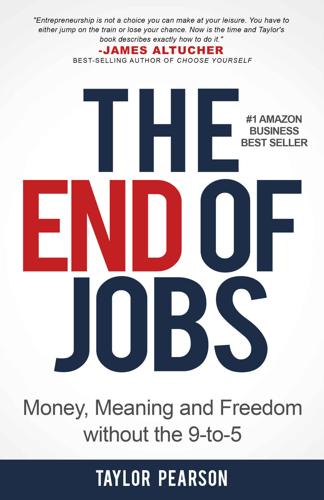
The End of Jobs: Money, Meaning and Freedom Without the 9-To-5
by
Taylor Pearson
Published 27 Jun 2015
Broadly this has had the same effect for entrepreneurs that CD Baby had for musicians. The cost of the tools needed to invest in entrepreneurship has dropped dramatically because the infrastructure has gotten so much more efficient. Let’s look at a few of the primary tools and how entrepreneurs are using them. Software as a Service (SaaS): Plug and Play Tools and Systems Software as a service has arisen primarily in the last decade and facilitates a large part of the sharing economy. Instead of having to buy expensive equipment or sign long-term contracts, entrepreneurs can buy month-to-month access to different services that they need. Previously, a new company would have had to buy accounting software that would cost hundreds of dollars.
…
Instead of hiring an editor on a full-time salary and hoping the new business worked, you could start working with someone on a part-time basis and pay them for a few hours of work each week. If the business started to take off, great! If it doesn’t, you haven’t started paying health insurance and gone through the expensive process of setting up a full time team member. Again, we see the same pattern as with Software as a Service: Dramatic reduction in cost and risk—less expensive and easier to find, lower risk Dramatic increase in potential—find the best qualified person in the world Previously, finding an editor for a craft beer magazine would have meant posting up job applications locally and hoping to find an expert.
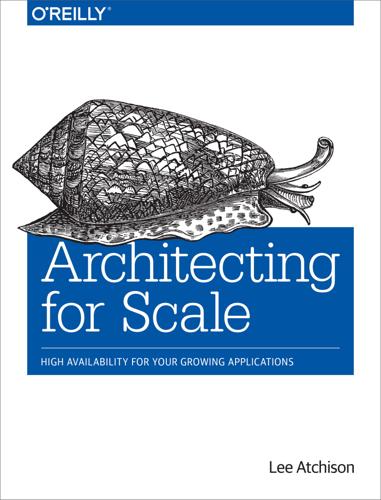
Architecting For Scale
by
Lee Atchison
Published 25 Jul 2016
Whether your application is growing tenfold or just 10 percent each year, whether the growth is in number of users, number of transactions, amount of data stored, or code complexity, this book can help you build and maintain your application to handle that growth, while maintaining a high level of availability. A Word on Scale Today Cloud-based services are growing and expanding at extremely high speeds. Software as a Service (SaaS) is becoming the norm for application development, primarily because of the need for providing these cloud-based services. SaaS applications are particularly sensitive to scaling issues due to their multitenant nature. As our world changes and we focus more and more on SaaS services, cloud-based services, and high-volume applications, scaling becomes increasingly important.
…
Alerting To inform appropriate personnel when a problem occurs so that it can be quickly and efficiently resolved, minimizing the impact to your customers. There are many good monitoring systems available, both free and paid services. I personally recommend New Relic. It provides all of the aforementioned monitoring and alerting capabilities. As a Software as a Service (SaaS) offering, it can support the monitoring needs at pretty much any scale your application may require.2 After you have started monitoring your application and services, start looking for trends in your performance. When you have identified the trends, you can look for outliers and treat them as potential availability issues.
…
external vs. internal, External Versus Internal SLAs latency groups, Latency Groups limit SLAs, Limit SLAs performance measurements for, Performance Measurements for SLAs-Latency Groups problem diagnosis and, SLAs for Problem Diagnosis Top Percentile SLAs, Top Percentile SLAs-Top Percentile SLAs slippage, improving availability after, Improving Your Availability When It Slips-Keeping on Top of Availability slow dependenciesbuckets for detecting, Determining Failures catching responses that never arrive, Determining Failures Software as a Service (SaaS), A Word on Scale Today space shuttle program, The Space Shuttle staging environment, testing recovery plans in, Staging Versus Production Environments startups, cloud and, The Micro Startup stateless services, Stateless Services static content, Focus #2: Always Think About Scaling STOSA-based application, Single Team Owned Service Architecture STOSA-based organization, Single Team Owned Service Architecture support manuals, Focus #5: Respond to Availability Issues in a Predictable and Defined Way T team ownershipmultiple services, Guideline #2: Distinct and Separable Team Ownership security issues, Separate team for security reasons service boundaries and, Guideline #2: Distinct and Separable Team Ownership STOSA organizations, What Does it Mean to Be a Service Owner?
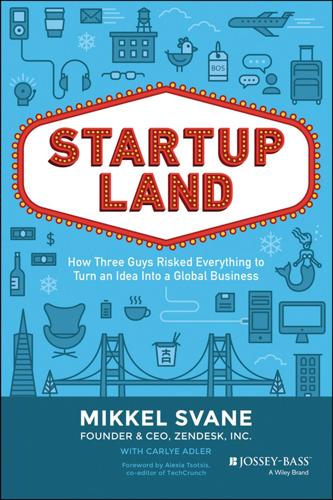
Startupland: How Three Guys Risked Everything to Turn an Idea Into a Global Business
by
Mikkel Svane
and
Carlye Adler
Published 13 Nov 2014
Page 199 Index day of, 175–177 determining how much you’re worth, 173–175 postponing, 168–169 preparing for, 158–160 road show, 169–171 surviving an IPO road show, 171–173 Zendesk’s IPO experience, 167–178 iterating, 53–55, 187 J Janz, Christoph, 65–67, 106 K Kleha, Amanda, 134–135, 181 L Latkiewicz, Matthew, 100–102, 181 Laughing Squid, 48 Law of Jante, 125 LiveUniverse, 65 logo design, 41–42 Lund, Morten, 34 M Malik, Om, 68 Marooney, Caryn, 170 Materna, 17–20 McDermott, Adrian, 136–138 media companies, 14 Mentor, 42 Mick, 124, 181–182 Musk, Elon, 25 N naming the company, 39–42 No Meeting Wednesdays, 34 Nygaard, Toke, 41–42 O office space, 115–119, 154–158 OneLogin, 180 OpenDNS, 130 P Pageflakes, 65 Pedersen, Thomas, 73–74, 90, 103, 180 personalized emails, 104 Pisoni, Adam, 130 Playdom, 129 pricing, 143–150 Primdahl, Morten, 1–2, 17–18 as chief technology officer, 26 early days at Zendesk, 31, 33 epilogue, 179, 180 fear of complacency, 165 financial struggles, 36–37, 39 handling the growth of the business, 122–123 and the inception of Zendesk, 20 Project Eisenhut, 40 R reaching scale, 74 real estate lessons learned, 118–119 refunds, 139 relationships, 150, 185–188 relocating to America hiring employees, 124–129 hiring first employees, 100–102 legal and tax challenges of relocating to America, 92–93 moving the company to Boston, 87–88, 90–91 personal issues surrounding, 97–99 settling in in Boston’s Leather District, 99–100 relocating to San Francisco finding office space, 115–119 making the decision to move, 112–114 Rigoli, Rick, 99–100, 108, 109, 112–113, 158–160 epilogue, 181 Riviera Partners, 136 Ruby on Rails, 14, 26, 28 199 Svane samind.tex V1 - 10/28/2014 12:18 A.M. Page 200 INDEX S SaaS. See Software-as-a-Service Salesforce.com, 27 Scribd, 53 second chances, 16–19 self-service sales, 45–47 Series A rounds, 83–84 shifting strategy, 152–154 Skype, 35 Software-as-a-Service, 47 Square, 24 Startupland, 3 stereograms, 8–9 strategy shift, 152–154 T Talladega Nights: The Ballad of Ricky Bobby, 46 TechCrunch, 42–45, 53, 68, 129, 144 Capital Summer Party, 69–71 Tesla, 164 Thank You Machine, 40, 73 37signals, 14, 28 3D Magic Eye books, 8 Twitter, 53, 91, 122, 124 U Uber, 124 V value-added resellers, 14 VARs.
…
I wish for everyone to have that privilege of truly finding and trying what you’re best at and succeeding. 6 Svane c01.tex V3 - 10/24/2014 8:14 P.M. Page 7 1 The Honeymoon Believing that what you’re doing is great and knowing nothing of what’s to come In March 2014, most of the publicly listed high-growth technology and Software-as-a-Service (SaaS) companies started to experience large pricing corrections. Some stocks lost 25 percent in value in a matter of weeks. Some lost 50 percent. The media was reporting “Valuations Will Be Cut in Half”1 and calling it the “Twilight Zone of SaaS.” Mad Money and Squawk on the Street host Jim Cramer famously yelled, “The software-as-a-disservice to your portfolio days are upon us.”2 In Silicon Valley, people were drawing parallels to Sequoia Capital’s famous “R.I.P.

CIOs at Work
by
Ed Yourdon
Published 19 Jul 2011
There are a lot of reasons why. You asked what are the great macro phenomena affecting technology. Yourdon: Yeah. Fried: I think that this is one of them. This is the one that I think is probably the most important. The rise of consumer-driven technology, consumer-driven computing, consumer-driven software-as-a-service offerings. I think that because there’s this motion from consumer to enterprise, I’m very focused on having my organization be in the avant-garde of trying to understand where there are new enterprise uses for previously consumer offerings. As one example, we’ve spent a fair amount of time trying to take Google’s consumer video chat product and turn it into corporate videoconferencing.
…
And so this idea of being data-driven, of realizing that the world is changing, you can’t be perfect, and you have to launch and change and change and change—and have an environment where you can do that—is absolutely core to us. __________ 1 Google, “Our philosophy: Ten things we know to be true.” www.google.com/about/corporate/company/tenthings.html. There’s a very deep part of the understanding reflected in the question that you asked, which is that Google is predicated on the notion of software as a service, where we’re running the software on servers that we control and we deploy it on a timeframe of our choosing—whereas all traditional technology companies are predicated on the idea of software that customers installed on their laptop, or on their personal computer, or in their own data center.
…
Yourdon: Any one of these could keep us going for quite some time. Fried: So the technology trends that I see shaping the next few years. The one that was the most educational to me was understanding the domination of consumer-oriented technology over enterprise technology coupled with the enormous economies of scale only available to enormous software-as-a-service providers like Google. You know, these terms like the “cloud” have been hijacked by everyone. They can mean almost anything. So the … phenomena we’ve already talked about: the fact that personal expectations of technology and the role of technology [are] defined by people’s expectations outside of the workplace, instead of people’s experiences inside the workplace.
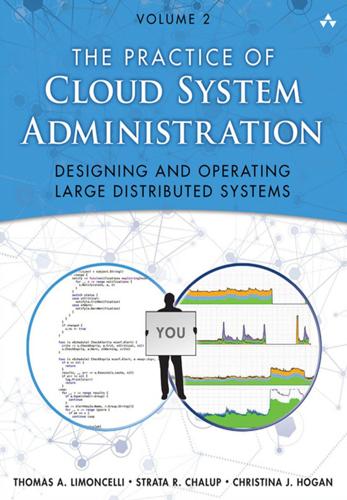
The Practice of Cloud System Administration: DevOps and SRE Practices for Web Services, Volume 2
by
Thomas A. Limoncelli
,
Strata R. Chalup
and
Christina J. Hogan
Published 27 Aug 2014
First printing, September 2014 Contents at a Glance Contents Preface About the Authors Introduction Part I Design: Building It Chapter 1 Designing in a Distributed World Chapter 2 Designing for Operations Chapter 3 Selecting a Service Platform Chapter 4 Application Architectures Chapter 5 Design Patterns for Scaling Chapter 6 Design Patterns for Resiliency Part II Operations: Running It Chapter 7 Operations in a Distributed World Chapter 8 DevOps Culture Chapter 9 Service Delivery: The Build Phase Chapter 10 Service Delivery: The Deployment Phase Chapter 11 Upgrading Live Services Chapter 12 Automation Chapter 13 Design Documents Chapter 14 Oncall Chapter 15 Disaster Preparedness Chapter 16 Monitoring Fundamentals Chapter 17 Monitoring Architecture and Practice Chapter 18 Capacity Planning Chapter 19 Creating KPIs Chapter 20 Operational Excellence Epilogue Part III Appendices Appendix A Assessments Appendix B The Origins and Future of Distributed Computing and Clouds Appendix C Scaling Terminology and Concepts Appendix D Templates and Examples Appendix E Recommended Reading Bibliography Index Contents Preface About the Authors Introduction Part I Design: Building It 1 Designing in a Distributed World 1.1 Visibility at Scale 1.2 The Importance of Simplicity 1.3 Composition 1.3.1 Load Balancer with Multiple Backend Replicas 1.3.2 Server with Multiple Backends 1.3.3 Server Tree 1.4 Distributed State 1.5 The CAP Principle 1.5.1 Consistency 1.5.2 Availability 1.5.3 Partition Tolerance 1.6 Loosely Coupled Systems 1.7 Speed 1.8 Summary Exercises 2 Designing for Operations 2.1 Operational Requirements 2.1.1 Configuration 2.1.2 Startup and Shutdown 2.1.3 Queue Draining 2.1.4 Software Upgrades 2.1.5 Backups and Restores 2.1.6 Redundancy 2.1.7 Replicated Databases 2.1.8 Hot Swaps 2.1.9 Toggles for Individual Features 2.1.10 Graceful Degradation 2.1.11 Access Controls and Rate Limits 2.1.12 Data Import Controls 2.1.13 Monitoring 2.1.14 Auditing 2.1.15 Debug Instrumentation 2.1.16 Exception Collection 2.1.17 Documentation for Operations 2.2 Implementing Design for Operations 2.2.1 Build Features in from the Beginning 2.2.2 Request Features as They Are Identified 2.2.3 Write the Features Yourself 2.2.4 Work with a Third-Party Vendor 2.3 Improving the Model 2.4 Summary Exercises 3 Selecting a Service Platform 3.1 Level of Service Abstraction 3.1.1 Infrastructure as a Service 3.1.2 Platform as a Service 3.1.3 Software as a Service 3.2 Type of Machine 3.2.1 Physical Machines 3.2.2 Virtual Machines 3.2.3 Containers 3.3 Level of Resource Sharing 3.3.1 Compliance 3.3.2 Privacy 3.3.3 Cost 3.3.4 Control 3.4 Colocation 3.5 Selection Strategies 3.6 Summary Exercises 4 Application Architectures 4.1 Single-Machine Web Server 4.2 Three-Tier Web Service 4.2.1 Load Balancer Types 4.2.2 Load Balancing Methods 4.2.3 Load Balancing with Shared State 4.2.4 User Identity 4.2.5 Scaling 4.3 Four-Tier Web Service 4.3.1 Frontends 4.3.2 Application Servers 4.3.3 Configuration Options 4.4 Reverse Proxy Service 4.5 Cloud-Scale Service 4.5.1 Global Load Balancer 4.5.2 Global Load Balancing Methods 4.5.3 Global Load Balancing with User-Specific Data 4.5.4 Internal Backbone 4.6 Message Bus Architectures 4.6.1 Message Bus Designs 4.6.2 Message Bus Reliability 4.6.3 Example 1: Link-Shortening Site 4.6.4 Example 2: Employee Human Resources Data Updates 4.7 Service-Oriented Architecture 4.7.1 Flexibility 4.7.2 Support 4.7.3 Best Practices 4.8 Summary Exercises 5 Design Patterns for Scaling 5.1 General Strategy 5.1.1 Identify Bottlenecks 5.1.2 Reengineer Components 5.1.3 Measure Results 5.1.4 Be Proactive 5.2 Scaling Up 5.3 The AKF Scaling Cube 5.3.1 x: Horizontal Duplication 5.3.2 y: Functional or Service Splits 5.3.3 z: Lookup-Oriented Split 5.3.4 Combinations 5.4 Caching 5.4.1 Cache Effectiveness 5.4.2 Cache Placement 5.4.3 Cache Persistence 5.4.4 Cache Replacement Algorithms 5.4.5 Cache Entry Invalidation 5.4.6 Cache Size 5.5 Data Sharding 5.6 Threading 5.7 Queueing 5.7.1 Benefits 5.7.2 Variations 5.8 Content Delivery Networks 5.9 Summary Exercises 6 Design Patterns for Resiliency 6.1 Software Resiliency Beats Hardware Reliability 6.2 Everything Malfunctions Eventually 6.2.1 MTBF in Distributed Systems 6.2.2 The Traditional Approach 6.2.3 The Distributed Computing Approach 6.3 Resiliency through Spare Capacity 6.3.1 How Much Spare Capacity 6.3.2 Load Sharing versus Hot Spares 6.4 Failure Domains 6.5 Software Failures 6.5.1 Software Crashes 6.5.2 Software Hangs 6.5.3 Query of Death 6.6 Physical Failures 6.6.1 Parts and Components 6.6.2 Machines 6.6.3 Load Balancers 6.6.4 Racks 6.6.5 Datacenters 6.7 Overload Failures 6.7.1 Traffic Surges 6.7.2 DoS and DDoS Attacks 6.7.3 Scraping Attacks 6.8 Human Error 6.9 Summary Exercises Part II Operations: Running It 7 Operations in a Distributed World 7.1 Distributed Systems Operations 7.1.1 SRE versus Traditional Enterprise IT 7.1.2 Change versus Stability 7.1.3 Defining SRE 7.1.4 Operations at Scale 7.2 Service Life Cycle 7.2.1 Service Launches 7.2.2 Service Decommissioning 7.3 Organizing Strategy for Operational Teams 7.3.1 Team Member Day Types 7.3.2 Other Strategies 7.4 Virtual Office 7.4.1 Communication Mechanisms 7.4.2 Communication Policies 7.5 Summary Exercises 8 DevOps Culture 8.1 What Is DevOps?
…
The term “cloud” is ambiguous; it means different things to different people and has been made meaningless by marketing hype. Instead, we use the following terms to be specific: • Infrastructure as a Service (IaaS): Computer and network hardware, real or virtual, ready for you to use. • Platform as a Service (PaaS): Your software running in a vendor-provided framework or stack. • Software as a Service (SaaS): An application provided as a web site. Figure 3.1 depicts the typical consumer of each service. SaaS applications are for end users and fulfill a particular market niche. PaaS provides platforms for developers. IaaS is for operators looking to build their own platforms on which applications will be built, thus providing the most customizability.
…
PaaS provides many high-level services including storage services, database services, and many of the same services available in IaaS offerings. Some offer more more esoteric services such as Google’s Machine Learning service, which can be used to build a recommendation engine. Additional services are announced periodically. 3.1.3 Software as a Service SaaS is what we used to call a web site before the marketing department decided adding “as a service” made it more appealing. SaaS is a web-accessible application. The application is the service, and you interact with it as you would any web site. The provider handles all the details of hardware, operating system, and platform.
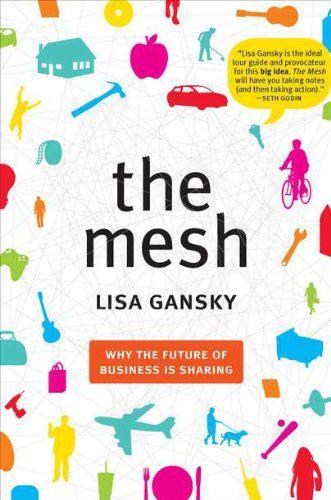
The Mesh: Why the Future of Business Is Sharing
by
Lisa Gansky
Published 14 Oct 2010
If we were to start Ofoto today, offering the same products and services (reliable network storage, customer order systems, backend systems, printing and shipping facilities), I estimate that it would take 10 percent of the nearly $60 million we raised at the time. Why? The cloud computing networks, tools, talent pool, and software as a service (SaaS) vendors in place today would allow us to go to market faster with far less capital. That reality improves nearly every aspect of getting a venture successfully off the ground and in condition to grow—the number of core staff required, the funding needed, and the time it takes to get to market.
…
The amount of capital available to you will likely shape how you craft your offer and choose to go to market. For these types of things, the infrastructure—the software and the technology—often exists in a form where you don’t have to pay very much. This is referred to as an application service provider, or ASP, model. (A related term is software as a service, or SaaS; it is also sometimes referred to as “services in the cloud.”) With ASP, instead of laying out a lot of cash to buy software or to buy computers to run it, you pay as you go. If you want software that allows you to track home exchanges, there are Web sites that allow you to use the infrastructure they’ve created.
…
See Loans/social lending Social networking importance to the Mesh Mesh companies negative events, broadcasting on on Netflix network effect privacy, importance of and product improvement for word-of-mouth advertising See also Facebook Software getting for startup Mesh open development Software as a service (SaaS) Sourcemap SpareFoot Spride Share Standardization of products Starting a Mesh company capital needs customers, identifying define/redefine/scale stages first mover advantage marketing primary questions serendipity as factor shareable assets, identifying software, ASP model Stohr, Kate Supply chain forward and reverse integration reverse supply chain Sustainable design Swishing Taxi Magic TCHO Technology, Mesh-friendly Mesh companies TED Prize thinkspace thredUP adaptability of case study Tool sharing, Mesh companies Toyota, broken trust Transaction fees Transparency and adaptability “age of radical transparency,” and trust building Transportation efficiency communities developed for See also Bike sharing; Car sharing Travel-related services, Mesh companies Trials Tripkick Trust building basics of broken trust, examples of and customer complaints customer misbehavior, dealing with by delighting customers discoverers as trust agents lost trust, rebuilding maintaining trust negative events, impact on and privacy practices proprietary versus open control reviews, keeping perspective social networks, role of starting slow, necessity of and transparency trials/samples for “virtuous circle of trust,” Tryvertising Twitter Tylenol tragedy Upcycling Mesh companies Vacation Rentals by Owner (VRBO) Virgin Corporation, Mesh strategy Volkswagen, idea solicitation on Web Walmart customer data, use of greening of integration with suppliers Mesh possibilities for waste, created by Waste disposal and climate change as resource underutilization Waste management government initiatives for Mesh companies in Mesh ecosystem in natural ecosystem raw materials, sharing recycling and reuse services reverse value chain yield management See also Recycling and reuse services Water Legacy Wattzon.com Westmill Wind Farm Co-operative WhipCar Wilcox, Ronald Wilhelm, Eric Williamson, Oliver Wine cooperatives, Mesh companies Word of mouth, power of Work-space sharing, Mesh companies World of Goods Yelp Yield management Zipcar customer experience with Mesh model for partners Zopa Zynga Table of Contents Title Page Copyright Page Dedication Introduction Chapter 1 - Getting to Know the Mesh Chapter 2 - The Mesh Advantage Chapter 3 - Mesh Design Chapter 4 - In with the Mesh Chapter 5 - In Mesh We Trust Chapter 6 - The Mesh as Ecosystem Chapter 7 - Open to the Mesh Chapter 8 - Mesh Inc.
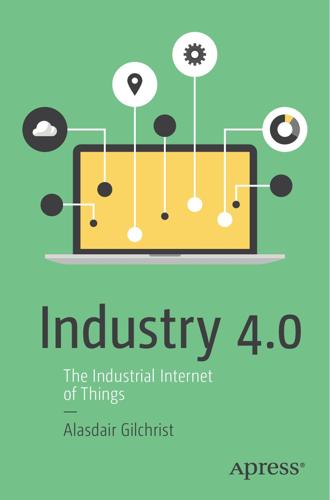
Industry 4.0: The Industrial Internet of Things
by
Alasdair Gilchrist
Published 27 Jun 2016
With the advent of IP mobility, employees could work anywhere and at any time, always having access to data and company applications and systems through VPNs (virtual private networks). Of course, to IT and security, this was a massive burden, and it logically led to deploying or outsourcing application in the cloud via SaaS (software as a service). Make no mistake, these were radical changes to the business mindset. After years of building security barriers and borders, security processes and procedures to protect their data, businesses were now allowing the free flow of information into the Internet. It proved, as we know now with hindsight, to be a brilliant decision and SaaS and cloud services are now considered the most cost effective ways to provide enterprise class software and to build SME data centers and development platforms.
…
What this means is that is you request a level of compute and storage and then find that demand far exceeds this. The cloud will stretch to accommodate the demand without any customer interaction; the cloud will manage the demand dynamically by assigning more resources. There are three categories of service—IaaS (Infrastructure as a Service), PaaS (Platform as a Service), and SaaS (Software as a Service). Each category defines a set of services available to the customer, and this is key to the cloud— everything is offered as a service. This is based on the earlier SOA (service orientated architecture), where web services were used to access application functions. Similarly, the cloud operators use web services to expose their features and products as services. • IaaS (Infrastructure as a Service)—AWS’s basic product back in 2005 and it offered their excess infrastructure for lease to companies.
…
• PaaS (Platform as a Service)—Came about as Microsoft and others realized that developers required not just infrastructure but access to software development languages, libraries, APIs, and microservices in order to build Windows-based applications. Google also supplies PaaS to support its many homegrown applications such as Android and Google Apps. Industry 4.0 • SaaS (Software as a Service)—The precursor to the cloud in the form of web-based applications such as Salesforce. com, which launched in 1999. SaaS was a new way of accessing software, instead of accessing a local private server hosting a copy of the application, users used a web browser to access a web server-based shared application.
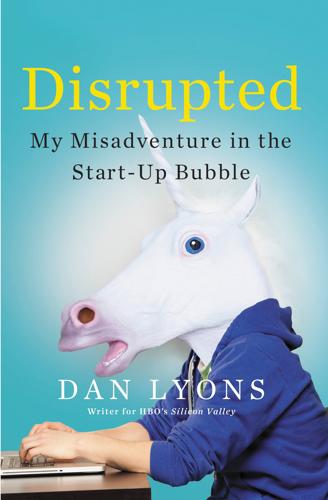
Disrupted: My Misadventure in the Start-Up Bubble
by
Dan Lyons
Published 4 Apr 2016
Andreessen Horowitz has invested in some of the Valley’s most highly valued companies, including Pinterest, Airbnb, and Box, and enlists its publicity machine (both its own internal operation and its friends in the tech press) to further its interests. In the spring of 2014, when “software as a service” (SaaS) stocks went into a slump, and when Box was still hoping to go public but had started to look wobbly, Andreessen’s content factory sprang into action. The firm produced blog posts and podcasts explaining that SaaS companies were misunderstood. Investors failed to understand how profitable these companies were going to be. The podcast was loaded up with a dizzying barrage of jargon and acronyms and metrics that SaaS companies have invented to measure their own performance. Software as a service is still something of a new business, and it is difficult if not impossible to compare the performance of any one SaaS company to the others.
…
Halligan used to work as a venture capitalist, so he thinks like an investor. Shah, before going to grad school at MIT, built a different software company and sold it. Also, from the perspective of Wall Street, HubSpot ticks all the right boxes. It sells to businesses, rather than to consumers. It’s a cloud computing company and uses a business model called software as a service, or SaaS, which means customers don’t install the software on their own computers but instead connect to it over the Internet and pay a monthly subscription fee. Cloud computing is hot right now. The whole tech industry is moving to this model. Investors love it. Over the years Halligan and Shah have come up with a creation myth about the company, which is that while they were in grad school they had a vision for how companies could transform their marketing departments.
…
Sales are growing, but Box is spending way too much on sales and marketing, and losing huge amounts of money. To be sure, that’s the case for most of the other cloud software companies. But even by the relaxed standards of the second tech bubble, Box’s results are disappointing. Meanwhile, for some reason, shares in cloud computing and “software as a service” companies are starting to swoon. One index of thirty-seven publicly traded cloud-related companies loses $58 billion in market value over the course of two months. Salesforce.com, our rival and role model, drops 25 percent. Workday, another cloud company that’s comparable to HubSpot, drops 40 percent.

Infonomics: How to Monetize, Manage, and Measure Information as an Asset for Competitive Advantage
by
Douglas B. Laney
Published 4 Sep 2017
This information is monetized also by eliminating the cost of checkers and point-of-sale systems, saving shoppers time during which they’re likely to shop more, and licensing or generating insights from the data. Intuit’s TurboTax is another classic example of a service differentiated by both extracting and inserting information into its product. Intuit compiles data from the millions of tax returns prepared using its software. As more and more U.S. taxpayers migrate to its online software-as-a-service (SaaS) version, Intuit is able to collect more and more data on the usage of its product, but also details of its users’ tax returns. This deinformationalization of the product along with information it compiles on tax audits enables Intuit to informationalize its product further with information and analytics on tax audit risks and probabilities—thereby rendering its product differentiated from others.
…
As we have seen a growth in “shadow IT” over the past decade, information leaders typically attempt to set in motion a plan to support it or rein it in and consolidate it. Working with business units and IT also to create a reference architecture for information management can also lead to improved maturity. Other parallel approaches may involve growing IT-related skills and/or moving to cloud and software-as-a-service (SaaS) solutions. But reference architectures and static plans can only help so much. As Brendan Smith, director of business development at GasBuddy, conceded to me, “With the way we are grabbing, aggregating, and consuming more and more data, it has required us to continually change the tools we’re using and bring in a lot of folks to handle the technical infrastructure.”11 Applied Asset Management Principles for Improved Infrastructure The information infrastructure includes the technologies used throughout the organization to capture, collect, or generate information; to integrate and transform information; and to move or enable the access to information.
…
As a result the client claims it has added $300 million in market value (over a 15 percent increase).26 Figure 11.5 Using Information Valuations to Spur Innovation and Digitalization Monetization and Analytics Figure 11.6 Using Information Valuations to Identify Monetization and Analytics Opportunities Working with a few software-as-a-service (SaaS) clients, a prominent online retailer, and other companies looking to determine which information assets are most ripe for external monetization, we have concocted a basic approach to mixing three of the models (Figure 11.6). It involves identifying information assets with a low cost to harvest, generate, or otherwise obtain, along with those that have high data quality and high business relevancy (to potential licensees).
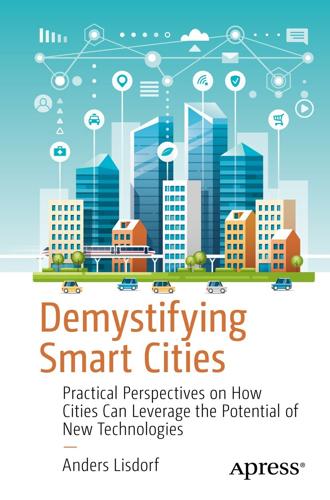
Demystifying Smart Cities
by
Anders Lisdorf
This is why you often hear about a move from capital expenditure to operational expenditure, when it comes to cloud computing. It is not necessary to make capital investments in equipment before starting. Another important point of the NIST definition is the division into three types: Software as a Service (SaaS), Platform as a Service (PaaS), and Infrastructure as a Service (IaaS).Software as a Service – Is the ability of the consumer to access system features through a standard interface like a web browser. The consumer has no control of the underlying infrastructure except for what can be configured in the application. The vendor provides and maintains all aspects of the product except for application-specific configurations.
…
Block chain Bluetooth Bus topology C Chief Information Security Officer (CISO) Cities coalition for digital rights Cities, history and future civilizations data usage pack donkey technology urbanization urbanocene period Civilization Confidentiality Connecting devices cables OSI model physical connections Criminal justice data D Data governance Data management Data profiling Data refinery capability domains access data movement discovery implementations map quality storage structure Data services block chain document databases graph key value stores object storage RDBMS Data source online source sensors system of record Data storage Data value, seven dimensions data sphere improve data value metadata sphere optimization solutions Decision trees Deployment, data cloud characteristics IaaS PaaS SaaS types on premise and cloud on-premise infrastructure Device defined integrated system medical devices microcontrollers processing units sensor and actuator Devices, city central technology organization cloud platforms communication IoT platforms IoT solutions management computer systems security protection challenges botnet CISO DDoS attack device vendors difficult to interact Dyn attack low cost scale Distributed computing Distributed Denial-of-Service (DDoS) attack Domain Name System (DNS) E Employ pragmatic idealism amount of energy architecture principles assemble team artist considerations engineer general idealist grid philosopher politician revolutionary scientist specialist tactician tinkerer compromise count symptoms Energy Engagement models solution spotlights BetaNYC 100 resilient cities Waze connected cities technologies adoption curve development and implementation innovation potential risk-reward working modes work types Enterprise Service Bus (ESB) ETSI Exteros F File transfer protocol (FTP) Food G General Data Protection Regulation (GDPR) Genetic algorithms Graphical userinterface Graph theory H Habit loop Hardware vendors Health data HTTP protocol Human civilization I, J IEEE P2413 Independent researchers Information and communication technologies (ICTs) Infrastructure as a Service (IaaS) Innovation challenges habit loop low-fat yoghurt, avoid Integrity International Organization for Standardization (ISO) Internet of Things (IoT) K Kafka Key value stores K-nearest neighbors algorithm L Legacy systems, modernizing imagination architect real world example Linear regression LinkNYC Local Area Network (LAN) Logistic regression LoRaWAN M Machine learning algorithms advantages and limitations decision trees genetic algorithms K-nearest neighbors linear regression logistic regression naïve Bayes algorithm neural networks reinforcement supervised SVMs unsupervised neural networks Machine-to-machine data access Master data management (MDM) conceptual model data steward deterministic matching logical model physical model Mesh topology Mobility MQTT protocol N Naïve Bayes algorithm Near Field Communication (NFC) Network topologies Neural networks Nongovernmental organizations NYC Mesh NYCWiN network O ODBC Operational data store (ODS) OSI model P, Q Personally identifiable information (PII) Platform as a Service (PaaS) PlowNYC service Point-to-point topology Private research Publish-Subscribe pattern R Raspberry Pi Recycling Reinforcement learning algorithm Relational database management system (RDBMS) S Security standards cryptography device management FIPS 199 identity and access management risks Sensors Simple Storage Service (or S3) Smart city, actors businesses governments individuals organizations researchers vendors Software as a Service (SaaS) Software vendors Star topology features Google doc HTTP protocol point of failure publish-subscribe types Structure of data semi-structured data structured data unstructured data Supervised learning algorithm Support vector machines (SVMs) Supranational organizations Systems integrators T Technology, applications health mobility safety utilities Things Network Tree topology DNS failure vulnerabilities features structure U UDP Universities Unsupervised learning algorithm V Virtual Private Network (VPN) W, X, Y, Z Web services
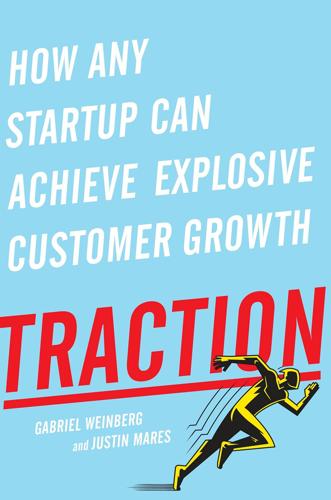
Traction: How Any Startup Can Achieve Explosive Customer Growth
by
Gabriel Weinberg
and
Justin Mares
Published 5 Oct 2015
For example, with Bingo Card Creator I pay money to a freelancer to write bingo cards with associated content about them that get slapped up on a page on the Web site. Because those bingo cards are far too niche for any educational publisher to target, I tend to rank very well for them. For ten to twenty dollars per search term, you can pay someone to write an article that you won’t be embarrassed to put on your Web site. For many SaaS [Software as a Service] startups, the lifetime value of a customer at the margin might be hundreds or thousands of dollars. So they [articles and landing pages] don’t need much traffic at all on an individual basis to aggregate into a meaningful number to the business. The reason my business works is fundamentally because this SEO strategy works phenomenally well.
…
Mike Volpe from HubSpot said something similar: Today we have 30 people in marketing and 120 in sales, all based in Cambridge, MA (no outside sales) and we attract 45–50k new leads per month, 60–80 percent of which are from inbound marketing (not paid). The inbound leads are 50 percent cheaper and close 100 percent more than paid leads. My personal experience and industry knowledge tells me that most other SaaS [Software as a Service] companies get more like 10 percent of their leads from inbound marketing, and generate 2–5k leads per month in total, whereas we get 70–80 percent of our leads from inbound and we generate 45,000+ new leads per month. TARGETS Find search terms that have enough search volume to move the needle for your company.
…
The points in your funnel where many prospects drop off are called “blockages.” Blockages are usually due to sales funnel complexity. You want to make purchasing your product as simple as possible. Some ways you can minimize blockages: Removing the need for IT installs with SaaS (Software as a Service) Free trials (including through open source software) Channel partners (resellers of your products) Demo videos FAQs Reference customers (such as testimonials or case studies) Email campaigns (where you educate prospective customers over time) Webinars or personal demos Easy installation and ease of use Low introductory price (less than $250/month for SMB, $10,000 for enterprises) Eliminating committee decision making CASE STUDY: JBOSS JBoss, an open source provider of middleware software, created a sales funnel that drove $65 million in revenue just two years after founding (Red Hat later acquired it for $350 million).
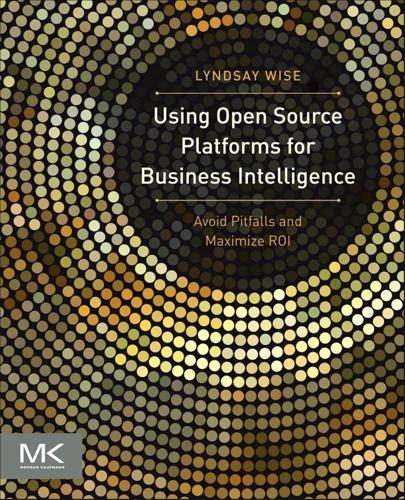
Using Open Source Platforms for Business Intelligence: Avoid Pitfalls and Maximize Roi
by
Lyndsay Wise
Published 16 Sep 2012
At the same time, due to the maturity of the market, other organizations do not follow either one of these structures but rely on vendors or consultants to make choices for them. Overall, the right strategy for your company might not be the same for another company. In addition to the types of applications, BI’s delivery and development also differ based on varying models within the industry. These include software as a service (SaaS) or cloud offerings, best of breed deployments, and OS. No matter what type of deployment, tying BI to business value and specific goals helps organizations develop a successful initiative independent of how BI is developed internally. However, the type of deployment also requires consideration because different choices will affect implementation times, development efforts, overall costs, and required resources for ongoing development and support.
…
The chart below provides a general understanding of various solution types and how they fit within the overall market enables both technical and business decision makers to make the right choices for their company. BI Delivery Type Breakdown. BI Type Definition Solution Parameters Traditional Business intelligence is installed and developed at the customer site, with the general purpose of reporting and analytics using historical data sets. Software as a Service BI offerings or components that are hosted by the solution provider and offered as a service to organizations through online access. Cloud Similar to SaaS based on the fact that solutions/data are hosted externally to the organization. In many cases, organizations develop and maintain their own BI applications.
…
Unfortunately, even with this new involvement, many solutions are elusive to business users beyond their BI interaction after implementation. Even with all of the resources that exist, it is still difficult for organizations to understand how each product differentiates itself within the broader marketplace. A good example is a company that I worked with about a year ago that was looking specifically for a hosted (or Software as a Service, SaaS) BI solution. After the requirement-gathering phase, I developed a short list, focusing on SaaS BI vendors only. The project sponsor then told me that she was surprised I didn’t mention a specific vendor. She felt that vendor would be a perfect fit. The only problem was that this vendor did not and still does not provide a hosted option and was limited by platform and integration capabilities.
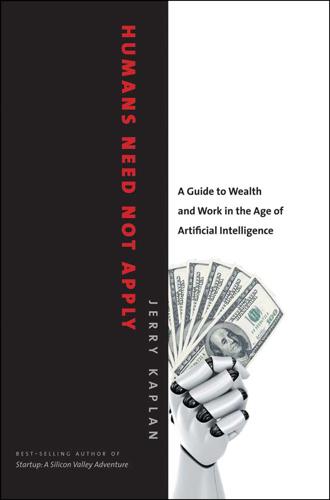
Humans Need Not Apply: A Guide to Wealth and Work in the Age of Artificial Intelligence
by
Jerry Kaplan
Published 3 Aug 2015
As they individually run low on supplies, they fly over to a paint barrel to automatically refill and recharge, then return to the most useful open position. A series of cameras sprinkled around the perimeter of the project continuously monitors this flying menagerie and assesses the progress and quality of the job. The actual device directing this mechanical ballet needn’t even be present. It can be what’s called software-as-a-service (SAAS) rented by the manufacturer and running on the Amazon cloud.7 Why bother to put all that computing power out in the field where it may get rained on and be used only a few hours a week? Your licensed painting contractor, who might still be paying off the loan for all this fancy gear, shows up, sets up the cameras, marks the target area on an app running on his tablet, opens the paint barrel, and turns on the drones.
…
See forged laborers Rochester, Nathaniel, 19 Rockefeller, John D., 200 Rocket Fuel, 64–65, 67–71, 136 founding/current worth of, 72 Rolling Stone (magazine), 170 Roosevelt, Franklin Delano, 170 Rosenblatt, Frank, 24 Rothschild, Nathan Mayer, 58 R202 (mechanical factotum), 40 Rutter, Brad, 150 SAAS (software-as-a-service), 43 safety: autonomous vehicles, 89, 142, 195 commercial pilots, 151 highway, 44–45, 142, 178 traffic, 195 workplace, 37–38, 44–45 salaries, 116, 120, 145, 172 salespeople, 139 S&P 500 E-mini, 62 San Francisco State University, 121, 158 sanitation, 169 savings. See assets ownership Scheinman, Victor, 35 schools.
…
See synthetic intellects “siren servers,” 7 Siri (Apple iPhone app), 198 skills, 119–26, 163 obsolescence of, 132, 134, 136–38, 142–43, 152, 153, 158 training to acquire, 13, 14, 132–33, 153–57 Slave Codes, 86 slave self-purchase, 201 smartphones, 105, 115–16 fast-paced innovation and, 26–27, 28, 31, 46, 198 social behavior, 9, 10, 37, 42, 48 fairness and, 74–75 synthetic intellects as threats to, 72–75, 91–92, 199–200 wealth and, 109–10, 114–15. See also moral agency social class. See class Social Security, 14, 169, 173–75 private investing vs., 182–85 social status, 117 software-as-a-service (SAAS), 43 solar power, 44 song identification, 39 sound recognition, 39, 42–43 Sousa, John Phillip, 208 “The Menace of Mechanical Music,” 192–93 space exploration, ix, 114, 116, 207 sports, 114–15, 161–63 Sputnik, ix SRI International, 27 Standard & Poor’s, 178 standard of living, 165–66 Stanford Artificial Intelligence Lab, x–xi, 27, 35, 38, 51, 52–53, 72, 85 Stanford Legal Informatics course, 148–49 Star Trek (TV series), x, 16 stockholders, 14–15, 58, 174–78 family members vs. diverse base of, 177, 178, 181–82 restricted vesting and, 184.
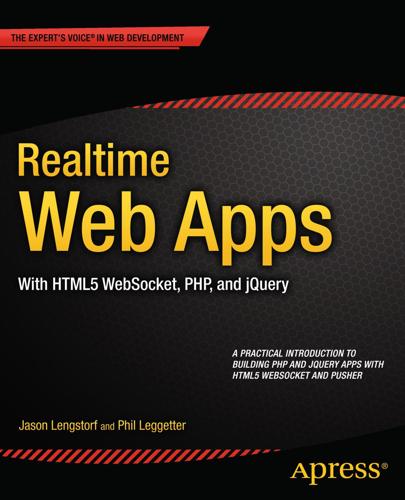
Realtime Web Apps: HTML5 WebSocket, Pusher, and the Web’s Next Big Thing
by
Jason Lengstorf
and
Phil Leggetter
Published 20 Feb 2013
In this chapter, we’ll explore the origins of Pusher, the underlying technology, some of the tools they provide to help development, and get our hands dirty by building a simple realtime activity tracking app. A Brief History of Pusher Pusher is part of a relatively new trend on the Internet known as software as a service (SAAS). These companies provide a useful tool, utility, service, or other value to other developers for a fee. This allows us to use incredibly powerful new technologies without spending days—or weeks—trying to solve issues such as scalability and cross-browser support. In early 2010, cofounders Max Williams and Damien Tanner were running one of the most successful Ruby On Rails shops in the UK.
…
Type foundries, predictably, were not okay with this. In recent years, however, big steps were made toward increasing the security of fonts on the Web. In addition to new formats for web fonts, such as Embedded Open Type (EOT) and Web Open Font Format (WOFF), companies sprang up that provided web font embedding software as a service (SaaS). There are many benefits to using SaaS, and only one downside (that isn’t really a downside at all). The primary benefits are these: • The font is available to you without having to purchase it. • You no longer have to navigate murky legal waters to protect yourself and your clients
…
@font-face, 91–92 PHP, 25 application brain, 26 dynamic content insertion, 26–27 need for, 26 preprocessor, 26 PHP Data Objects (PDO), 179 Preprocessor, 26 Pusher auto-reconnect, 36 client libraries, 36 connection, 37 ■ Index connection state, 41 debug, 52 Debug Console, 40 developer tools, 36 documentation, 36 Event Creator, 42 events, 37, 40 fallback support, 36 history of, 35 logging, 53 publishing and subscribing, 44 publish-subscribe messaging pattern, 37 REST API, 36 scalability, 35 send events, 43 server libraries, 36 sign-up, 37 trigger and publish, 37 trigger method, 49 uses of, 35 webSocket, 36 nR Realtime AJAX, 5 definition of, 5 Google Docs and Google Analytics, 12 HTTP hacks, 5 long-polling, 7 problems with, 8 streaming, 8 polling, 5 social media, 3–4 terminology, 9 web sites, 4 websocket protocol, 10 Realtime implementation back end answer event, 249 console, room events, 247 event creation, 245 pusher debug console, 246 question markup, ask event, 248 testing events, 246 trigger() method, 245 voting event, 248 credentials and libraries app view on dashboard, 242 config file, add credentials to, 243 JavaScript API Wrapper, 244 loading jQuery, 244 new app creation, 242 PHP API Wrapper, 243 pusher API, 241 front end binding to events, 250 bind() method, 251 channel subscription, 249 event binding, 251 initialization, JavaScript file, 250 JavaScript, channel subscription, 249 name identification, channel, 249 Room view design attendee view, 104–105 closed room view, 106 presenter view, 106–108 Router execution controller loading, 169–170 rewrite URI, 171 view, output, 170–171 Router setup app initialization absolute path, 158 index.php, 158 session setup, 159–160 URI, 158 variables, 158 variables, configuration app specific data, 156 as constants, 157 nS Save_access_token() method, 276 Setters, 177–178 Smaller screen layouts, 108 Software as a service (SaaS), 35, 112 Stylesheet path variable, 182 nT Tools application design, 15 CSS3 add CSS to page, 19–22 need for, 18 visual layer, 19 working principle, 19 HTML5 application skeleton, 16 file creation, 17–18 need for, 16 working principle, 17 HTML5 WebSocket Technology and Pusher application nervous system, 31 need for, 31 289 ■ Index Tools (cont.)
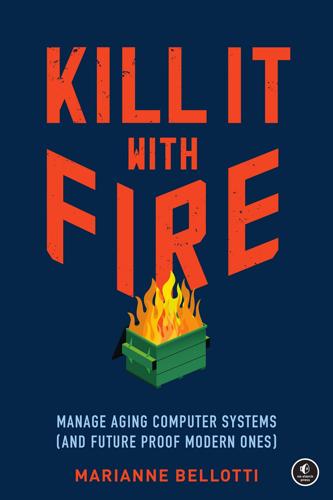
Kill It With Fire: Manage Aging Computer Systems
by
Marianne Bellotti
Published 17 Mar 2021
So, in addition to the cost of either purchasing or developing the new solution, you have to factor in the cost of decommissioning the old solution. How many teams does that affect? What are they not working on while they make those changes? What is the long-term maintenance burden of the old solution versus the new one? Depending on whether the new solution is hosted/software as a service (SaaS) or just a new custom-built tool, the considerations could look very different. 1. Alas, security certifications do have some value. Those who have them tend to like to keep them. 6 Coming in Midstream So far, this book has been operating under the assumption that you are initiating the modernization effort at your organization.
…
See cellphones momentum, 75–90, 117, 122, 130 monoliths, 50–51, 56, 85–87, 101–108, 148 Moravec, Hans, 63 morse code, 20 Mozilla, 204 MTTR (mean time to recovery), 113, 220 Multics, 21 murder boards, 125–127 MVP (minimum viable product), 32, 39, 76, 79 Mythical Man-Month, The, 140, 213 N NASA, 198 NASA’s Ames Research Center, 125 National Science Foundation Network, 10 Netflix, 204 networks, 13 nationalization, 11 nines of availability, 113 normal accidents, 46 O Obama administration, the, 79 objectives and key results (OKRs), 182 object-oriented, 70 object relational mapping (ORM), 105 observability, 52 on-call rotations, 109, 208 Operation Aurora, 119 opportunity costs, 90–94 optimizing, 83, 105 ORM (object relational mapping), 105 overgrowth, 64 P performance, 42–44, 52, 92, 113, 144 Perrow, Charles, 46 personal computer (PC), 10 Pew Research, 5 physical view, 173 Pinterest, 204 platform as a service (PaaS), 69 POSIX, 27 postmortem, 100, 167–168, 187–190 probabilistic outcome-based decision-making, 138 problem setting, 129–130, 159 processing power, 13 process view, 173 programming languages, 36 ALGOL60, 28–31 Assembly, 29, 40, 66 bash, 65 BASIC, 30 BCPL, 28 C, 28, 31 COBOL, 28–31, 39–41, 61, 70 CoffeeScript, 70 CPL, 31 CSS, 150 FORTRAN, 30 HTML, 150 Java, 30, 68, 70 JavaScript, 36, 67, 70, 150 JCL, 65 Lisps, 31 Python, 30, 69 SQL, 65, 105 Typescript, 70 protocols, 67 FTP, 67 HTTP, 209 NTP, 197 SMTP, 67 TCP/IP, 67 TLS/SSL, 206 pull requests, 23 Q Qantas Airways, 204 QWERTY, 27 R railroad tickets, 18 Reddit, 204 refactoring, 51–52, 71, 103 reorgs, 141, 151–152, 156 research institutions, 11 resilience, 112, 169 resilience engineering, 172 responsibility gaps, 99, 207 resulting, 60 retrospectives, 188 reverse engineering, 71 rewrites, 34, 54–55, 145–147 risk, 34, 88, 146, 162–171 Ritchie, Dennis, 23 Robert’s Rules of Order, 193 Rumelt, Richard, 184 S SaaS (software as a service), 95 Salus, Peter, 23 sandbox, 174–175 scaling, 62–63, 78, 110, 149, 195 Schrödinger’s cat, 124 SDK (software development kits), 67 second system syndrome, 33 security, 89 Selectric, 27 Service Dominate Logic (S-D Logic), 8 service level agreements (SLAs), 94 service level objectives (SLOs), 94, 106, 113, 144, 149, 169, 220 service-oriented architecture (SOA), 101, 148 service recovery paradox, 170 shell scripts, 65 Sholes, Christopher Latham, 19 site reliability engineering (SRE), 99, 113, 150, 157, 218 Slack, 102 SLAs (service level agreements), 94 SLOs (service level objectives), 94, 106, 113, 144, 149, 169, 220 SOA (service-oriented architecture), 101, 148 software as a service (SaaS), 95 software development kits (SDK), 67 software renovation, 71 Soule, Samuel W., 19 source code, 23 split in place, 56 Spolsky, Joel, 33, 145 SRE (site reliability engineering), 218 Stack Overflow, 33 Stallman, Richard, 25–26 standards, 11, 66, 77, 103, 107 static analysis, 69, 71–72 stocks, 210 storage capacity, 13 stored procedures, 65 Stricker, Gabriel, 119 success criteria, 83, 182–185 supercomputers, 10 Surprising Power of Liberating Structures, 135 system stability, 89, 169 T tabulating machines, 18–20 technical debt, 38–40, 55, 79, 106, 210–215 telegraphs, 19–21 testing, 51, 55, 57, 70, 85, 109, 124 Texas Instruments, 198 Thompson, Ken, 23 TOPS-10, 197 Torvalds, Linus, 25 trade-offs, 42, 83 transpilers, 69–71 true but irrelevant, 82 trust, 54, 100, 108, 123, 168–170, 219 Twitter, 62, 204 typewriters, 19 U United Nations (UN), 181 United Parcel Service (UPS), 203 University of Cambridge, 31 University of North Carolina at Chapel Hill, 140 Unix, 21–27, 197 UNIX-HATERS Handbook, The, 26 US Army/Marine Corps Counterinsurgency Field Manual, The, 129 US Digital Service (USDS), 68, 144, 164–165 V virtual machines (VM), 49–50, 85–87, 111, 176 W Working Effectively with Legacy Code, 55 working groups, 191–193 World Computer Corporation, 197 Y Y2K, 196, 200 yak shaving, 153 YouTube, 102 Z Zajonc, Robert, 22, 34
…
See cellphones momentum, 75–90, 117, 122, 130 monoliths, 50–51, 56, 85–87, 101–108, 148 Moravec, Hans, 63 morse code, 20 Mozilla, 204 MTTR (mean time to recovery), 113, 220 Multics, 21 murder boards, 125–127 MVP (minimum viable product), 32, 39, 76, 79 Mythical Man-Month, The, 140, 213 N NASA, 198 NASA’s Ames Research Center, 125 National Science Foundation Network, 10 Netflix, 204 networks, 13 nationalization, 11 nines of availability, 113 normal accidents, 46 O Obama administration, the, 79 objectives and key results (OKRs), 182 object-oriented, 70 object relational mapping (ORM), 105 observability, 52 on-call rotations, 109, 208 Operation Aurora, 119 opportunity costs, 90–94 optimizing, 83, 105 ORM (object relational mapping), 105 overgrowth, 64 P performance, 42–44, 52, 92, 113, 144 Perrow, Charles, 46 personal computer (PC), 10 Pew Research, 5 physical view, 173 Pinterest, 204 platform as a service (PaaS), 69 POSIX, 27 postmortem, 100, 167–168, 187–190 probabilistic outcome-based decision-making, 138 problem setting, 129–130, 159 processing power, 13 process view, 173 programming languages, 36 ALGOL60, 28–31 Assembly, 29, 40, 66 bash, 65 BASIC, 30 BCPL, 28 C, 28, 31 COBOL, 28–31, 39–41, 61, 70 CoffeeScript, 70 CPL, 31 CSS, 150 FORTRAN, 30 HTML, 150 Java, 30, 68, 70 JavaScript, 36, 67, 70, 150 JCL, 65 Lisps, 31 Python, 30, 69 SQL, 65, 105 Typescript, 70 protocols, 67 FTP, 67 HTTP, 209 NTP, 197 SMTP, 67 TCP/IP, 67 TLS/SSL, 206 pull requests, 23 Q Qantas Airways, 204 QWERTY, 27 R railroad tickets, 18 Reddit, 204 refactoring, 51–52, 71, 103 reorgs, 141, 151–152, 156 research institutions, 11 resilience, 112, 169 resilience engineering, 172 responsibility gaps, 99, 207 resulting, 60 retrospectives, 188 reverse engineering, 71 rewrites, 34, 54–55, 145–147 risk, 34, 88, 146, 162–171 Ritchie, Dennis, 23 Robert’s Rules of Order, 193 Rumelt, Richard, 184 S SaaS (software as a service), 95 Salus, Peter, 23 sandbox, 174–175 scaling, 62–63, 78, 110, 149, 195 Schrödinger’s cat, 124 SDK (software development kits), 67 second system syndrome, 33 security, 89 Selectric, 27 Service Dominate Logic (S-D Logic), 8 service level agreements (SLAs), 94 service level objectives (SLOs), 94, 106, 113, 144, 149, 169, 220 service-oriented architecture (SOA), 101, 148 service recovery paradox, 170 shell scripts, 65 Sholes, Christopher Latham, 19 site reliability engineering (SRE), 99, 113, 150, 157, 218 Slack, 102 SLAs (service level agreements), 94 SLOs (service level objectives), 94, 106, 113, 144, 149, 169, 220 SOA (service-oriented architecture), 101, 148 software as a service (SaaS), 95 software development kits (SDK), 67 software renovation, 71 Soule, Samuel W., 19 source code, 23 split in place, 56 Spolsky, Joel, 33, 145 SRE (site reliability engineering), 218 Stack Overflow, 33 Stallman, Richard, 25–26 standards, 11, 66, 77, 103, 107 static analysis, 69, 71–72 stocks, 210 storage capacity, 13 stored procedures, 65 Stricker, Gabriel, 119 success criteria, 83, 182–185 supercomputers, 10 Surprising Power of Liberating Structures, 135 system stability, 89, 169 T tabulating machines, 18–20 technical debt, 38–40, 55, 79, 106, 210–215 telegraphs, 19–21 testing, 51, 55, 57, 70, 85, 109, 124 Texas Instruments, 198 Thompson, Ken, 23 TOPS-10, 197 Torvalds, Linus, 25 trade-offs, 42, 83 transpilers, 69–71 true but irrelevant, 82 trust, 54, 100, 108, 123, 168–170, 219 Twitter, 62, 204 typewriters, 19 U United Nations (UN), 181 United Parcel Service (UPS), 203 University of Cambridge, 31 University of North Carolina at Chapel Hill, 140 Unix, 21–27, 197 UNIX-HATERS Handbook, The, 26 US Army/Marine Corps Counterinsurgency Field Manual, The, 129 US Digital Service (USDS), 68, 144, 164–165 V virtual machines (VM), 49–50, 85–87, 111, 176 W Working Effectively with Legacy Code, 55 working groups, 191–193 World Computer Corporation, 197 Y Y2K, 196, 200 yak shaving, 153 YouTube, 102 Z Zajonc, Robert, 22, 34
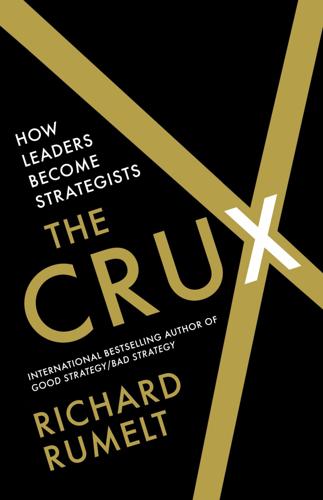
The Crux
by
Richard Rumelt
Published 27 Apr 2022
In early 2021, it had sixty thousand employees, was valued at $243 billion, and was ranked number two in the Fortune list of “best companies to work for.” The free sign-up has evolved into free trials. Point your browser to www.salesforce.com to get one. Benioff’s design has become known as software-as-a-service (SaaS) and is the model for a host of other ventures. RYANAIR In 1984 Irish businessman Tony Ryan and two fellow investors formed Ryanair. Tony Ryan had worked for the Irish airline Aer Lingus and afterward built one of the largest airplane leasing companies in Europe. The Thatcher government had loosened the rules about who could run an airline, and Ryan’s intent was to compete with Aer Lingus on the London–Dublin route.
…
The executive team and IT came up with the idea of polishing the newly developed customer-oriented data system and selling it as a service to the larger customers: a strategic extension. That way, the Varnico product would help the internal staff do their jobs better with no threat of being replaced or looking bad. After several new contracts of this type were signed, Varnico acquired a small software-as-a-service specialty firm and had it improve and maintain the customer-oriented data system. As Bob Haller implemented these steps over three years, the company’s stock price increased nicely. During this three-year period of strategic renewal, Varnico’s share price increased by 55 percent, helped along by the general tailwind of the market (about 31 percent) during this period.
…
In addition to the obvious praise for innovation, it became clearer that IBM would make “client success” its first priority, a large change from the product-first history of the company. Today, in 2021, IBM is a major actor in the information- processing industry. Yet despite its renewal, it has not yet regained its former leadership. Its software business has grown more slowly than the overall enterprise and the SaaS (software-as-a-service) market, and it has lost share in IT outsourcing to Accenture and Infosys. Gerstner’s transformation saved IBM, and putting the client first helped reshape the older product-based method of operating. Yet he and Palmisano also wedded it to “client success” for its large corporate customers, so IBM has been slower than others to grasp the swarm of new, smaller, customers the Web and cloud have empowered.
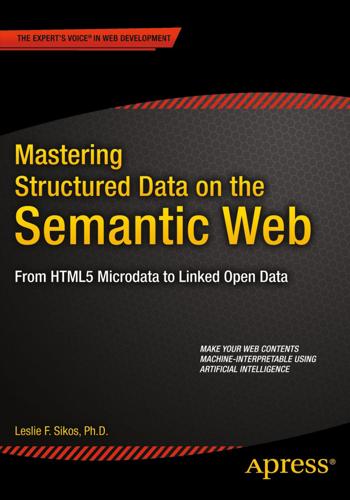
Mastering Structured Data on the Semantic Web: From HTML5 Microdata to Linked Open Data
by
Leslie Sikos
Published 10 Jul 2015
In the information technology (IT) industry, for example, there is also an endless variety of services. In the more and more popular cloud computing environments, the fundamental service models are Infrastructure as a Service (IaaS), such as Amazon EC2 and Google Cloud Storage; Platform as a Service (PaaS), such as WHM, Microsoft Azure, and the Google App Engine; and Software as a Service (SaaS), such as Hosted Exchange, GoogleApps, and NetSuite. Further services in the IT industry contain, but are not limited to, Database as a Service (DBaaS), Graph as a Service (GaaS), Storage as a Service (STaaS), Test Environment as a Service (TEaaS), API as a Service (APIaaS), Network as a Service (NaaS), and Unified Communications as a Service (UCaaS).
…
Once the server is running, the overview page can be accessed in the web browser at http://localhost:port_number/status/, and the SPARQL endpoint at http://localhost:port_number/ sparql/ with an HTML interface at http://localhost:port_number/test/. From the command line, you can query the SPARQL server using the sparql-query tool available at https://github.com/tialaramex/ sparql-query. PublishMyData PublishMyData is a commercial Linked Data publishing platform. Because it is a Software as a Service (SaaS) in the cloud, you don’t have to install anything to use it. Beyond the SPARQL endpoint, PublishMyData provides RDF data hosting, a Linked Data API, and customizable visualizations. It supports SPARQL 1.1. To submit a SPARQL query from your code, issue an HTTP GET request to the SPARQL endpoint, as demonstrated in Listing 7-49.
…
Index A AllegroGraph ACID implementation, 151 client installation, 156 editions, 151 graph algorithms, 152 Gruff, 160 high-performance storage, 213 Java API connection() method, 157 create method, 157 indexing, 158 RDF statement, 159 read only mode, 158 showTriples method, 159 SparqlSelect query, 159 Triplestore information, 159 quintuplestore, 151 server installation RPM package, 152 TAR Archive, 155 virtual machine image file, 155 text indexing, 151 WebView, 152 Apache Jena, 94, 99 Apache Marmotta, 111 Apache Stanbol, 91 Arachnophilia, 80 Atomic process, 221 Atomicity, Consistency, Isolation, and Durability (ACID), 151, 161 B BBEdit, 80 Big Data applications BBC’s Dynamic Semantic Publishing, 212 Google Knowledge Graph data resources, 200 Google Knowledge Carousel, 201–202 Google Knowledge Panel, 200, 202 JSON-LD annotation, 203 LocalBusiness annotation, 205 SERPs, 200 Google Knowledge Vault, 202 high-performance storage, 214 IBM Watson, 212 Library of Congress Linked Data Service, 213 social media applications (see Social media applications) variety, 199 velocity, 199 veracity, 199 volume, 199 Blazegraph, 171 BlueFish editor, 80 British Broadcasting Corporation (BBC), 212 Business Process Execution Language (BPEL), 140 C Callimachus, 112 Contexts and Dependency Injection (CDI), 111 createDefaultModel() method, 94 CubicWeb, 109 Cypher Query Language (CQL), 188 D D2R server, 193 DBpedia, 63 DBpedia mobile, 116 query Eisenach query, 225 SPARQL endpoint, 64, 225 resources, 63, 64 Spotlight, 84 DeepQA system, 212 227 ■ index Development tools advanced text editors, 79 application development Apache Jena, 94, 99 Sesame (see Sesame) browsers DBpedia Mobile, 116 facet-based (faceted) browsing, 113 IsaViz, 116 marbles, 114 ODE, 114 pivoting (rotation), 113 RelFinder, 117 Tabulator, 113 IDEs (see Integrated Development Environments (IDEs)) linked data software Apache Marmotta, 111 Callimachus, 112 LODStats, 113 Neologism, 112 sameAs.org, 112 Sindice, 110 ontology editors Apache Stanbol, 91 development stages, 86 Fluent Editor, 91 Protégé (see Protégé) SemanticWorks, 89 SML, 92 TopBraid Composer, 90 ZOOMA, 91 RDFizers Apache Any23, 85 GATE, 86 OpenRefine, 86 reasoners ABOX reasoning, 92 FaCT++, 94 HermiT, 92 OWL API, 92 OWLLink support, 92 Pellet, 93 RACER, 94 semantic annotators and converters DBpedia Spotlight, 84 Google Structured Data Testing Tool, 84 RDFa 1.1 distiller and parser, 82 RDFa Play, 82 RDF distiller, 83 Direct graph, 218 Direct mapping, 218 228 E Eclipse Apache Jena set up, 99 JDK installation, 98, 99 Sesame set up, 103 EditPlus, 80 F Facebook Graph API current state representation, 207 Facebook Module, 210 Graph API Explorer Android, 209 fields of node, 208 FOAF profile augmentation, 210 HTTP GET requests, 208 identifier and user name, 207 iOS, 209 JavaScript, 209 JSON-Turtle conversions, 210 Linked Data, 210 PHP, 209 RDF triples, 209 RDF/Turtle output, 210 Turtle translation, 209 JSON, 207 RESTful JSON API, 207 unique identifier, 207 Facebook Module of Apache Marmotta’s LDClient library, 210 Fast Classification of Terminologies (FaCT++), 94 Fluent Editor, 91 4Store application process, 169 RDF file, 169 rest-client installation, 170 SPARQL query, 170 SPARQL server, 169, 195 Fuseki, 192 G General Architecture for Text Engineering (GATE), 86 GeoNames, 65 Gleaning Resource Descriptions from Dialects of Languages (GRDDL), 39 Google Knowledge Graph data resources, 200 Google Knowledge Carousel, 201–202 Google Knowledge Panel, 200, 202 ■ Index JSON-LD annotation Band in Markup, 203 product description, 203 product offering, 204 LocalBusiness annotation, 205 SERPs, 200 Google Knowledge Panel, 200 Graph databases 4Store process, 169 RDF file, 169 rest-client installation, 170 SPARQL query, 170 advantages, 146, 149 AllegroGraph (see AllegroGraph) Blazegraph, 171 definition, 145 features, 146 index-free adjacency, 145 named graph, 149–150 Neo4j (see Neo4j) Oracle, 171 processing engine, 145 quadstore, 149 storage, 145 triplestores, 149 Graphical User Interface (GUI), 86–87 Gruff, 160 H Hadoop Distributed File System (HDFS), 171 I IBM Watson Developers Cloud, 212 Integrated Development Environments (IDEs) CubicWeb, 109 Eclipse Apache Jena set up, 99 Java Development Kit installation, 99 Sesame set up, 103 NetBeans, 108 Internationalized Domain Names (IDN), 9 International Standard Book Number (ISBN), 16 Internet Reasoning Service (IRS), 141 IsaViz, 116 J Java Development Kit (JDK), 99 Java Runtime Environment (JRE), 99 JavaScript Object Notation for Linked Data (JSON-LD), 37 Java Virtual Machine (JVM), 99 K Knowledge representation standards GRDDL, 39 HTML5 microdata attributes, 35 microdata DOM API, 37 JSON-LD, 37 machine-readable annotation formats, 23 microformats drafts and future, 32 hCalendar, 25 hCard, 26 h-event, 26 rel=“license”, 28 rel=“nofollow”, 29 rel=“tag”, 30 URI profile, 25 vote links, 30 XFN, 30 XMDP, 31 OWL classes, 51 description logic, 46 properties, 50 syntaxes, 49 variants, 48 parsers, 54 R2RML, 40 RDF, 18 RDFa, 32 RDFS classes, 42 domains and ranges, 44 instance, 42 properties, 44 subclasses, 42 reasoning, 54 RIF, 53 SKOS, 53 vocabularies and ontologies books, 16 DOAP, 17 e-commerce, 16 FOAF, 13 licensing, 17 media ontologies, 18 metadata, 15 online communities, 18 person vocabularies, 15 PRISM, 16 publications, 16 schema.org, 14 Komodo Edit, 80 229 ■ index L P LinkedGeoData, 66 Linked Open Data (LOD) cloud diagram, 67 collections, 67 creation interlinking, 72 licenses, 71 RDF statements, 72 RDF structure, 70 your dataset, 74 DBpedia, 63 five-star rating system, 60 GeoNames, 65 LinkedGeoData, 66 principles, 59 RDF crawling, 62 RDF dumps, 62 SPARQL endpoints, 62 visualization, 75 Wikidata, 65 YAGO, 67 LODStats, 113 Pellet, 93 Persistent Uniform Resource Locators (PURLs), 9 Process model, 129 Protégé Active Ontology tab, 88 application, 86 class hierarchies, 88 command line, 86 GUI, 87 HermiT reasoner, 93 Individuals tab, 88 Learning Health System, 86 Object Properties and Data Properties tabs, 88 OntoGraf tab, 88 OWLViz, 88 SPARQL Query tab, 89 URIs, 88 PublishMyData, 195 Q M Quadstores, 149 MAchine-Readable Cataloging (MARC), 213 MicroWSMO, 137 R N Named graph, 149 Natural Language Processing (NLP) methods, 86 Neo4j, 161 Cypher commands, 163 graph style sheet, 163 Java API database installation, 165 Eclipse, 164, 168 node method, 166 main method, 166 RDF statement, 167 shut down method, 167 WEBSITE_OF method, 166 server installation, 161 web interface, 162 Neologism, 112 NetBeans, 108 Notepad++, 80 O OpenLink Data Explorer (ODE), 114 OpenLink Virtuoso, 190 OpenRefine, 86 Oracle, 171 230 RACER, 94 RDB2RML (R2RML), 40 RDB to RDF direct mapping employee database table, 217 employee_project database table, 217 project database table, 218 source code, 218 Red Hat Package Manager (RPM) package, 152 Relational database (RDB), 217 RelFinder, 117 Renamed ABox and Concept Expression Reasoner (Racer), 94 rep.initialize() method, 104 Resource Description Framework (RDF), 217 attributes, 32 crawling, 62 dumps, 62 graph, 20, 145 R2RML, 40 statements, 72 structure creation, 70 triples/statements, 19, 220 turtle, 20 vocabulary, 18 RESTful JSON API, 207 Rule Interchange Format (RIF), 53 ■ Index S sameAs.org, 112 Search engine optimization (SEO), 79 Search Engine Result Pages (SERPs), 84, 200 Semantic Annotations for Web Service Description Language (SAWSDL), 127 Semantic Automated Discovery and Integration (SADI), 142 Semantic Measures Library (SML), 92 Semantic search engines, 189 Semantic Web technology, 1 Big Data (see Big Data applications) components AI, 5 controlled vocabularies, 5 inference, 7 ontologies, 6 taxonomies, 5 features, 8 structured data, 2 web evolution, 2 Semantic Web Services OWL-S (see Web Ontology Language for Services (OWL-S)) process, 121 properties, 122 SOAP fault structure, 124 message structure, 122 software IRS, 141 SADI, 142 WSMT, 141 WSMX, 141 UDDI, 142 WS-BPEL (see Web Services Business Process Execution Language (WS-BPEL)) WSDL (see Web Service Description Language (WSDL)) WSML (see Web Service Modeling Language (WSML)) WSMO (see Web Service Modeling Ontology (WSMO)) SemanticWorks, 89 Service profile, 129 Sesame Alibaba, 96 Eclipse, 103 empty graph creation, 98 Graph API, 97 local repository, 96 RDF Model API, 97 RDF triplestore, 96 RemoteRepositoryManager, 97 Repository API, 96 SAIL, 97 triple support, 98 default ValueFactory implementation, 97 Sesame RDF Query Language (SeRQL), 186 Simple Knowledge Organization System (SKOS), 53 Simple Object Access Protocol (SOAP) binding interface, 127 fault structure, 124 message structure, 122 Sindice, 85, 110 SOAPssage, 123 Social media applications Facebook Social Graph Facebook Graph API (see Facebook Graph API) friends recommendation, 206–207 node and edge, 206 Open Graph Protocol, 211 Twitter Cards, 211 Software as a Service (SaaS), 195 SPARQL endpoint 4store’s HTTP server, 195 callback function, 196 D2R configuration file, 193 D2R server installation, 193 Fuseki, 192 jQuery request data, 195 JSON-P request data, 196 OpenLink Virtuoso process, 190–191 PublishMyData request data, 195–196 URL encoding PublishMyData, 195 SPARQL queries ASK query, 179 CONSTRUCT query, 180 core types, 176 CQL, 188 default namespace, 174 DESCRIBE query, 180 existence checking function, 177 federated query, 181 graph management operations ADD operation, 185–186 COPY DEFAULT TO operation, 184 default graph, 184 MOVE DEFAULT TO operation, 185 graph patterns, 176 graph update operations DELETE DATA operation, 183 INSERT DATA operation, 182–183 language checking function, 177 LOD datasets, 189 multiple variable match, 176 namespace declaration, 173 one variable match, 176 231 ■ index SPARQL queries (cont.) property path, 177 public SPARQL endpoints, 190 query engine remove graph property value, 187 Sesame Graph API, 187 Sesame Repository API, 186 RDF graph, 174 RDF triple matching, 176 REASON query, 181 SELECT query, 178–179 solution modifiers, 178 SPARQL 1.0 core types, 175 SPARQL 1.1 aggregation, 175 entailment regimes, 175 service description, 175 Uniform HTTP Protocol, 175 Update language, 175 SPARQL endpoint (see SPARQL endpoint) structure, 174 triple patterns, 176 URI syntax, 173 Storage And Inference Layer API (SAIL), 97 T TextWrangler, 80 TopBraid Composer, 90 Triples map, 218 Twitter Cards, 211 U, V Uniform Resource Identifier (URI), 9 Uniform Resource Names (URNs), 9 Universal Description, Discovery and Integration (UDDI), 142 US Library of Congress, 213 W Web Ontology Language (OWL), 129 classes, 51 description logic, 46 properties, 50 syntaxes, 49 variants, 48 Web Ontology Language for Services (OWL-S) atomic process, 221 output and effect conditions, 132 parameter class, 130 232 precondition process, 131 process agents, 131 properties, 130 service process, 131 situation calculus, 129 SWRL variable, 130 URI value, 131 Web resource identifiers, 8 Web Services Business Process Execution Language (WS-BPEL), 140 Web Services Description Language (WSDL) data types, 126 elements, 124 endpoint element, 127 HTTP binding interface, 126 interface element, 126 namespace declaration, 125 SAWSDL annotation file, 128 modelReference, 127 skeleton document, 125 SOAP binding interface, 127 Web Service Modeling eXecution environment (WSMX), 141 Web Service Modeling Language (WSML) importsOntology, 139 IRI quotes, 139 mediator, 140 namespace declarations, 139 nonfunctional property, 139 syntaxes, 138 XML schema data types, 138 Web Service Modeling Ontology (WSMO) choreography and orchestration expresses, 137 class capability, 137 components, 133 definition, 133 entity set definitions, 135 function, 136 goal class, 137 mediators, 133–134 MicroWSMO, 137 nonfunctional properties, 134 ontology instance, 136 post-condition creditcard service, 224 pre-condition creditcard service, 224 relations definition, 135 service class, 134 service goal definition, 223 travel agency modeling, 223 WSMO-lite, 137 ■ Index Web Services Modeling Toolkit (WSMT), 141 Wikidata, 65 WSMO-Lite, 137 X XHTML Friends Network (XFN), 30 XHTML MetaData Profiles (XMDP), 31 Y Yet Another Great Ontology (YAGO), 67 Z ZOOMA, 91 233 Mastering Structured Data on the Semantic Web From HTML5 Microdata to Linked Open Data Leslie F.
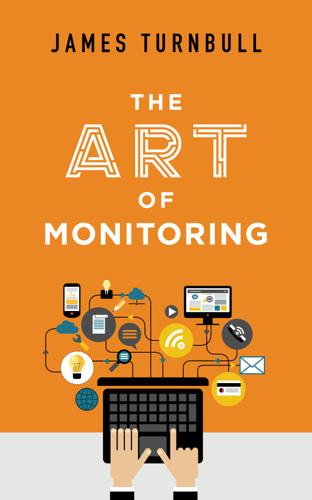
The Art of Monitoring
by
James Turnbull
Published 1 Dec 2014
Virtualization and Cloud computing were introduced, and the number of hosts that needed to be monitored increased by one or more orders of magnitude. Some of those hosts were run by people who weren't sysadmins, or the hosts were outsourced to third parties. Some of the hosts in her data center were moved into the Cloud, or even replaced with Software-as-a-Service applications. Most importantly, IT became a core channel for businesses to communicate with and sell to their customers. Applications and services that had previously been seen as just technology now became critical to customer satisfaction and providing high-quality customer service. IT was no longer a cost center, but something a company's revenue relied on.
…
Organizations have recognized that it's not only impossible to do business without high-quality IT services but that they are actually market differentiators. If you do IT better than your competitors then this is a marketable asset. Adding to this is the popularity and flexibility of virtualization, elastic computing like Cloud, and the introduction of Software-as-a-Service (SaaS). Now the perception has started to move IT from a cost center to, if not an actual revenue center, then at least a lever for increasing revenue. This change has consequences though, with the most important being that we now need to measure the quality and performance of IT, not just its availability.
…
Alternatives to Graphite and Grafana There are numerous alternatives to Graphite, both commercial and open source. This is not a definitive list but more a sampling of interesting tools you could use if the choices in theis book aren't suitable or to your taste. Commercial tools A number of commercial Software-as-a-Service (SaaS) products exist including: Circonus Geckoboard Leftronic Librato New Relic SignalFx Note Some of these SaaS tools may do more than just metrics and may have monitoring, application performance management, and alerting capabilities. Open-source tools Open-source products.
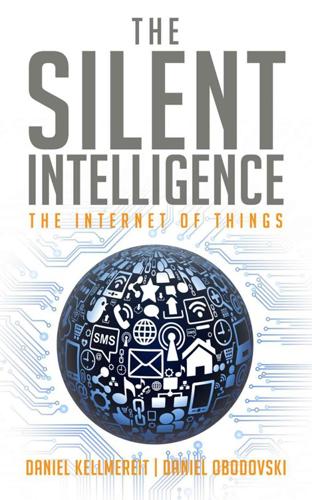
The Silent Intelligence: The Internet of Things
by
Daniel Kellmereit
and
Daniel Obodovski
Published 19 Sep 2013
It is because in the majority of cases, new technologies that can disrupt business models take much more time to be accepted than anyone in that market wants or expects. In the U.S. market, it took cell phones about twenty years to get to major mass-market penetration. Cloud computing (think Software as a Service, timesharing) can trace its origins back many, many years. With a handful of exceptions, tablets being possibly the best-known outlier, technology adoption takes years. I think we were fooled, like many early market entrants, into thinking we would move right from the visionary customers and early adopters directly into mainstream adoption.
…
Now, you put the same SIM in every single device you build and you have one carrier to work with to have coverage in two hundred countries around the world. So the single SIM simplifies device manufacturing, the single SIM allows you to ship that automotive device anywhere you want to go, and when it lands it gets turned on automatically. On the data analysis side of things, one of the major trends is Software as a Service, or SaaS, provided over the cloud. This means that in many cases, M2M solutions don’t have to be integrated into the Enterprise Resource Planning (ERP) system right away. Employees and management can access the data in the cloud from their desktops, laptops, tablets, and smartphones. As we have recently seen, IT departments cannot keep up with the innovation happening in the marketplace that is provided by new SaaS companies and application start-ups.
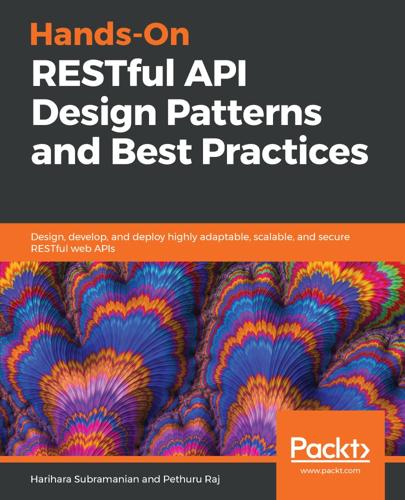
Hands-On RESTful API Design Patterns and Best Practices
by
Harihara Subramanian
Published 31 Jan 2019
When everything uses an API, the role of API gateway, management, and analytics solutions is bound to escalate in the days to unfold: Red Hat 3scale APIcast gateway (https://www.3scale.net/tag/open-source/)—the APIcast gateway is also Nginx-based and made available as an open source software solution. This API gateway is configured within 3scale's Admin Portal. The gateway is a crucial part of 3scale API management, which is a software as a service (SaaS) offering. The Admin Portal has a number of customization and configuration functionalities, such as allowing customers to define desired authentication methods, setting rate limits, getting analytics done on API usage data, and creating a developer portal for their API consumers. The 3scale APIcast gateway lets you deploy the API gateway service on a cloud environment with a few clicks.
…
Fast-evolving digital technologies include state-of-the-art IT infrastructures, such as software-defined clouds, integrated platforms for big and fast data, streaming and IoT data analytics, the mobile-enablement of every enterprise system, the futuristic Internet of Things (IoT), the mesmerizing blockchain technology, and the pervasive software as a service (SaaS) phenomenon. The well-known edge technologies include disappearing sensors, actuators, multifaceted micro- and nano-scale electronics, miniaturized stickers, pads, tags, barcodes, chips, controllers, specks, beacons, and LEDs. The seamless combination of digital and edge technologies enables the mandated disruption, innovation, and transformation to dynamically and dexterously tend toward the IT vision, which is all about creating smarter homes, hotels, and hospitals.
…
Creating new APIs from the ground up, refurbishing the existing ones, and automatically generating APIs out of currently-running integration are the well-known ways. Here, we need platform support to create APIs in other ways. There are API design and integration platforms available for accomplishing this need. We now have thousands of software as a service (SaaS) applications being delivered through cloud environments. These services are generally API-attached. These APIs can be reused across. However, these APIs could be limited in their functionality. Thus, APIs have to be customized and enhanced in order to fulfill our requirements. Building fresh APIs from scratch is time-consuming and error-prone.

Frugal Innovation: How to Do Better With Less
by
Jaideep Prabhu Navi Radjou
Published 15 Feb 2015
In this way, the company can accurately forecast demand and supply, react faster and better to market conditions, maintain lower stock levels and keep costs down. A frugal services revolution GAPPAA.ORG Companies are finding new, highly effective and affordable ways to deliver services or services bundled with products. Such business models include: software as a service (SaaS) in computing; power by the hour in aircraft engines; massive open online courses (MOOCs) in education; hub-and-spoke and yield management models in airlines; online retailing; and cloud computing. By flexing their assets, airlines such as Southwest Airlines, easyJet and Ryanair have created a new, low-cost market segment for flyers within the US and Europe, and have succeeded in challenging long-haul incumbents.
…
MacArthur Foundation 14 John Deere 67 John Lewis 195 Johnson & Johnson 100, 111 Johnson, Warren 98 Jones, Don 112 jugaad (frugal ingenuity) 199, 202 Jugaad Innovation (Radjou, Prabhu and Ahuja, 2012) xvii, 17 just-in-time design 33–4 K Kaeser, Joe 217 Kalanick, Travis 163 Kalundborg (Denmark) 160 kanju 201 Karkal, Shamir 124 Kaufman, Ben 50–1, 126 Kawai, Daisuke 29–30 Kelly, John 199–200 Kennedy, President John 138 Kenya 57, 200–1 key performance indicators see KPIs Khan Academy 16–17, 113–14, 164 Khan, Salman (Sal) 16–17, 113–14 Kickstarter 17, 48, 137, 138 KieranTimberlake 196 Kimberly-Clark 25, 145 Kingfisher 86–7, 91, 97, 157, 158–9, 185–6, 192–3, 208 KissKissBankBank 17, 137 Knox, Steve 145 Knudstorp, Jørgen Vig 37, 68, 69 Kobori, Michael 83, 100 KPIs (key performance indicators) 38–9, 67, 91–2, 185–6, 208 Kuhndt, Michael 194 Kurniawan, Arie 151–2 L La Chose 108 La Poste 92–3, 157 La Ruche qui dit Oui 137 “labs on a chip” 52 Lacheret, Yves 173–5 Lada 1 laser cutters 134, 166 Laskey, Alex 119 last-mile challenge 57, 146, 156 L’Atelier 168–9 Latin America 161 lattice organisation 63–4 Laury, Véronique 208 Laville, Elisabeth 91 Lawrence, Jamie 185, 192–3, 208 LCA (life-cycle assessment) 196–7 leaders 179, 203–5, 214, 217 lean manufacturing 192 leanness 33–4, 41, 42, 170, 192 Learnbox 114 learning by doing 173, 179 learning organisations 179 leasing 123 Lee, Deishin 159 Lego 51, 126 Lego Group 37, 68, 69, 144 Legrand 157 Lenovo 56 Leroy, Adolphe 127 Leroy Merlin 127–8 Leslie, Garthen 150–1 Lever, William Hesketh 96 Levi Strauss & Co 60, 82–4, 100, 122–3 Lewis, Dijuana 212 life cycle of buildings 196 see also product life cycle life-cycle assessment (LCA) 196–7 life-cycle costs 12, 24, 196 Lifebuoy soap 95, 97 lifespan of companies 154 lighting 32, 56, 123, 201 “lightweighting” 47 linear development cycles 21, 23 linear model of production 80–1 Link 131 littleBits 51 Livi, Daniele 88 Livi, Vittorio 88 local communities 52, 57, 146, 206–7 local markets 183–4 Local Motors 52, 129, 152 local solutions 188, 201–2 local sourcing 51–2, 56, 137, 174, 181 localisation 56, 137 Locavesting (Cortese, 2011) 138 Logan car 2–3, 12, 179, 198–9 logistics 46, 57–8, 161, 191, 207 longevity 121, 124 Lopez, Maribel 65–6 Lopez Research 65–6 L’Oréal 174 Los Alamos National Laboratory 170 low-cost airlines 60, 121 low-cost innovation 11 low-income markets 12–13, 161, 203, 207 Lowry, Adam 81–2 M m-health 109, 111–12 M-KOPA 201 M-Pesa 57, 201 M3D 48, 132 McDonough Braungart Design Chemistry (MBDC) 84 McDonough, William 82 McGregor, Douglas 63 MacGyvers 17–18, 130, 134, 167 McKelvey, Jim 135 McKinsey & Company 81, 87, 209 mainstream, frugal products in 216 maintenance 66, 75, 76, 124, 187 costs 48–9, 66 Mainwaring, Simon 8 Maistre, Christophe de 187–8, 216 Maker Faire 18, 133–4 Maker platform 70 makers 18, 133–4, 145 manufacturing 20th-century model 46, 55, 80–1 additive 47–9 continuous 44–5 costs 47, 48, 52 decentralised 9, 44, 51–2 frugal 44–54 integration with logistics 57–8 new approaches 50–4 social 50–1 subtractive method 48 tools for 47, 47–50 Margarine Unie 96 market 15, 28, 38, 64, 186, 189, 192 R&D and 21, 26, 33, 34 market research 25, 61, 139, 141 market share 100 marketing 21–2, 24, 36, 61–3, 91, 116–20, 131, 139 and R&D 34, 37, 37–8 marketing teams 143, 150 markets 12–13, 42, 62, 215 see also emerging markets Marks & Spencer (M&S) 97, 215 Plan A 90, 156, 179–81, 183–4, 186–7, 214 Marriott 140 Mars 57, 158–9, 161 Martin Marietta 159 Martin, Tod 154 mass customisation 9, 46, 47, 48, 57–8 mass market 189 mass marketing 21–2 mass production 9, 46, 57, 58, 74, 129, 196 Massachusetts Institute of Technology see MIT massive open online courses see MOOCs materials 3, 47, 48, 73, 92, 161 costs 153, 161, 190 recyclable 74, 81, 196 recycled 77, 81–2, 83, 86, 89, 183, 193 renewable 77, 86 repurposing 93 see also C2C; reuse Mayhew, Stephen 35, 36 Mazoyer, Eric 90 Mazzella, Frédéric 163 MBDC (McDonough Braungart Design Chemistry) 84 MDI 16 measurable goals 185–6 Mechanical Engineer Laboratory (MEL) 52 “MEcosystems” 154–5, 156–8 Medicare 110 medication 111–12 Medicity 211 MedStartr 17 MEL (Mechanical Engineer Laboratory) 52 mental models 2, 193–203, 206, 216 Mercure 173 Merlin, Rose 127 Mestrallet, Gérard 53, 54 method (company) 81–2 Mexico 38, 56 Michelin 160 micro-factories 51–2, 52, 66, 129, 152 micro-robots 52 Microsoft 38 Microsoft Kinect 130 Microsoft Word 24 middle classes 197–8, 216 Migicovsky, Eric 137–8 Mikkiche, Karim 199 millennials 7, 14, 17, 131–2, 137, 141, 142 MindCET 165 miniaturisation 52, 53–4 Mint.com 125 MIT (Massachusetts Institute of Technology) 44–5, 107, 130, 134, 202 mobile health see m-health mobile phones 24, 32, 61, 129–30, 130, 168, 174 emerging market use 198 infrastructure 56, 198 see also smartphones mobile production units 66–7 mobile technologies 16, 17, 103, 133, 174, 200–1, 207 Mocana 151 Mochon, Daniel 132 modular design 67, 90 modular production units 66–7 Modularer Querbaukasten see MQB “mompreneurs” 145 Mondelez 158–9 Money Dashboard 125 Moneythink 162 monitoring 65–6, 106, 131 Monopoly 144 MOOCs (massive open online courses) 60, 61, 112, 113, 114, 164 Morieux, Yves 64 Morocco 207 Morris, Robert 199–200 motivation, employees 178, 180, 186, 192, 205–8 motivational approaches to shaping consumer behaviour 105–6 Motorola 56 MQB (Modularer Querbaukasten) 44, 45–6 Mulally, Alan 70, 166 Mulcahy, Simon 157 Mulliez family 126–7 Mulliez, Vianney 13, 126 multi-nodal innovation 202–3 Munari, Bruno 93 Murray, Mike 48–9 Musk, Elon 172 N Nano car 119, 156 National Geographic 102 natural capital, loss of 158–9 Natural Capital Leaders Platform 158–9 natural resources 45, 86 depletion 7, 72, 105, 153, 158–9 see also resources NCR 55–6 near-shoring 55 Nelson, Simon 113 Nemo, Sophie-Noëlle 93 Nest Labs 98–100, 103 Nestlé 31, 44, 68, 78, 94, 158–9, 194, 195 NetPositive plan 86, 208 networking 152–3, 153 new materials 47, 92 New Matter 132 new technologies 21, 27 Newtopia 32 next-generation customers 121–2 next-generation manufacturing techniques 44–6, 46–7 see also frugal manufacturing Nigeria 152, 197–8 Nike 84 NineSigma 151 Nissan 4, 4–5, 44, 199 see also Renault-Nissan non-governmental organisations 167 non-profit organisations 161, 162, 202 Nooyi, Indra 217 Norman, Donald 120 Norris, Greg 196 North American companies 216–17 North American market 22 Northrup Grumman 68 Norton, Michael 132 Norway 103 Novartis 44–5, 215 Novotel 173, 174 nudging 100, 108, 111, 117, 162 Nussbaum, Bruce 140 O O2 147 Obama, President Barack 6, 8, 13, 134, 138, 208 obsolescence, planned 24, 121 offshoring 55 Oh, Amy 145 Ohayon, Elie 71–2 Oliver Wyman 22 Olocco, Gregory 206 O’Marah, Kevin 58 on-demand services 39, 124 online communities 31, 50, 61, 134 online marketing 143 online retailing 60, 132 onshoring 55 Opel 4 open innovation 104, 151, 152, 153, 154 open-source approach 48, 129, 134, 135, 172 open-source hardware 51, 52, 89, 130, 135, 139 open-source software 48, 130, 132, 144–5, 167 OpenIDEO 142 operating costs 45, 215 Opower 103, 109, 119 Orange 157 Orbitz 173 organisational change 36–7, 90–1, 176, 177–90, 203–8, 213–14, 216 business models 190–3 mental models 193–203 organisational culture 36–7, 170, 176, 177–9, 213–14, 217 efficacy focus 181–3 entrepreneurial 76, 173 see also organisational change organisational structure 63–5, 69 outsourcing 59, 143, 146 over-engineering 27, 42, 170 Overby, Christine 25 ownership 9 Oxylane Group 127 P P&G (Procter & Gamble) 19, 31, 58, 94, 117, 123, 145, 195 packaging 57, 96, 195 Page, Larry 63 “pain points” 29, 30, 31 Palmer, Michael 212 Palo Alto Junior League 20 ParkatmyHouse 17, 63, 85 Parker, Philip 61 participation, customers 128–9 partner ecosystems 153, 154, 200 partners 65, 72, 148, 153, 156–8 sharing data with 59–60 see also distributors; hyper-collaboration; suppliers Partners in Care Foundation 202 partnerships 41, 42, 152–3, 156–7, 171–2, 174, 191 with SMBs 173, 174, 175 with start-ups 20, 164–5, 175 with suppliers 192–3 see also hyper-collaboration patents 171–2 Payne, Alex 124 PE International 196 Pearson 164–5, 167, 181–3, 186, 215 Pebble 137–8 peer-to-peer economic model 10 peer-to-peer lending 10 peer-to-peer sales 60 peer-to-peer sharing 136–7 Pélisson, Gérard 172–3 PepsiCo 38, 40, 179, 190, 194, 215 performance 47, 73, 77, 80, 95 of employees 69 Pernod Ricard 157 personalisation 9, 45, 46, 48, 62, 129–30, 132, 149 Peters, Tom 21 pharmaceutical industry 13, 22, 23, 33, 58, 171, 181 continuous manufacturing 44–6 see also GSK Philippines 191 Philips 56, 84, 100, 123 Philips Lighting 32 Picaud, Philippe 122 Piggy Mojo 119 piggybacking 57 Piketty, Thomas 6 Plan A (M&S) 90, 156, 179–81, 183–4, 186–7, 214 Planet 21 (Accor) 174–5 planned obsolescence 24, 121 Plastyc 17 Plumridge, Rupert 18 point-of-sale data 58 Poland 103 pollution 74, 78, 87, 116, 187, 200 Polman, Paul 11, 72, 77, 94, 203–5, 217 portfolio management tools 27, 33 Portugal 55, 103 postponement 57–8 Potočnik, Janez 8, 79 Prabhu, Arun 25 Prahalad, C.K. 12 predictive analytics 32–3 predictive maintenance 66, 67–8 Priceline 173 pricing 81, 117 processes digitising 65–6 entrenched 14–16 re-engineering 74 simplifying 169, 173 Procter & Gamble see P&G procurement priorities 67–8 product life cycle 21, 75, 92, 186 costs 12, 24, 196 sustainability 73–5 product-sharing initiatives 87 production costs 9, 83 productivity 49, 59, 65, 79–80, 153 staff 14 profit 14, 105 Progressive 100, 116 Project Ara 130 promotion 61–3 Propeller Health 111 prosumers xix–xx, 17–18, 125, 126–33, 136–7, 148, 154 empowering and engaging 139–46 see also horizontal economy Protomax 159 prototypes 31–2, 50, 144, 152 prototyping 42, 52, 65, 152, 167, 192, 206 public 50–1, 215 public sector, working with 161–2 publishers 17, 61 Pullman 173 Puma 194 purchasing power 5–6, 216 pyramidal model of production 51 pyramidal organisations 69 Q Qarnot Computing 89 Qualcomm 84 Qualcomm Life 112 quality 3, 11–12, 15, 24, 45, 49, 82, 206, 216 high 1, 9, 93, 198, 216 measure of 105 versus quantity 8, 23 quality of life 8, 204 Quicken 19–21 Quirky 50–1, 126, 150–1, 152 R R&D 35, 67, 92, 151 big-ticket programmes 35–6 and business development 37–8 China 40, 188, 206 customer focus 27, 39, 43 frugal approach 12, 26–33, 82 global networks 39–40 incentives 38–9 industrial model 2, 21–6, 33, 36, 42 market-focused, agile model 26–33 and marketing 34, 37, 37–8 recommendations for managers 34–41 speed 23, 27, 34, 149 spending 15, 22, 23, 28, 141, 149, 152, 171, 187 technology culture 14–15, 38–9 see also Air Liquide; Ford; GSK; IBM; immersion; Renault; SNCF; Tarkett; Unilever R&D labs 9, 21–6, 70, 149, 218 in emerging markets 40, 188, 200 R&D teams 26, 34, 38–9, 65, 127, 150, 194–5 hackers as 142 innovation brokering 168 shaping customer behaviour 120–2 Raspberry Pi 135–6, 164 Ratti, Carlo 107 raw materials see materials real-time demand signals 58, 59 Rebours, Christophe 157–8 recession 5–6, 6, 46, 131, 180 Reckitt Benckiser 102 recommendations for managers flexing assets 65–71 R&D 34–41 shaping consumer behaviour 116–24 sustainability 90–3 recruiting 70–1 recyclable materials 74, 81, 196 recyclable products 3, 73, 159, 195–6 recycled materials 77, 81–2, 83, 86, 89, 183, 193 recycling 8, 9, 87, 93, 142, 159 e-waste 87–8 electronic and electrical goods (EU) 8, 79 by Tarkett 73–7 water 83, 175 see also C2C; circular economy Recy’Go 92–3 regional champions 182 regulation 7–8, 13, 78–9, 103, 216 Reich, Joshua 124 RelayRides 17 Renault 1–5, 12, 117, 156–7, 179 Renault-Nissan 4–5, 40, 198–9, 215 renewable energy 8, 53, 74, 86, 91, 136, 142, 196 renewable materials 77, 86 Replicator 132 repurposing 93 Requardt, Hermann 189 reshoring 55–6 resource constraints 4–5, 217 resource efficiency 7–8, 46, 47–9, 79, 190 Resource Revolution (Heck, Rogers and Carroll, 2014) 87–8 resources 40, 42, 73, 86, 197, 199 consumption 9, 26, 73–7, 101–2 costs 78, 203 depletion 7, 72, 105, 153, 158–9 reducing use 45, 52, 65, 73–7, 104, 199, 203 saving 72, 77, 200 scarcity 22, 46, 72, 73, 77–8, 80, 158–9, 190, 203 sharing 56–7, 159–61, 167 substitution 92 wasting 169–70 retailers 56, 129, 214 “big-box” 9, 18, 137 Rethink Robotics 49 return on investment 22, 197 reuse 9, 73, 76–7, 81, 84–5, 92–3, 200 see also C2C revenues, generating 77, 167, 180 reverse innovation 202–3 rewards 37, 178, 208 Riboud, Franck 66, 184, 217 Rifkin, Jeremy 9–10 robots 47, 49–50, 70, 144–5, 150 Rock Health 151 Rogers, Jay 129 Rogers, Matt 87–8 Romania 2–3, 103 rookie mindset 164, 168 Rose, Stuart 179–80, 180 Roulin, Anne 195 Ryan, Eric 81–2 Ryanair 60 S S-Oil 106 SaaS (software as a service) 60 Saatchi & Saatchi 70–1 Saatchi & Saatchi + Duke 71–2, 143 sales function 15, 21, 25–6, 36, 116–18, 146 Salesforce.com 157 Santi, Paolo 108 SAP 59, 186 Saunders, Charles 211 savings 115 Sawa Orchards 29–31 Scandinavian countries 6–7 see also Norway Schmidt, Eric 136 Schneider Electric 150 Schulman, Dan 161–2 Schumacher, E.F. 104–5, 105 Schweitzer, Louis 1, 2, 3, 4, 179 SCM (supply chain management) systems 59 SCOR (supply chain operations reference) model 67 Seattle 107 SEB 157 self-sufficiency 8 selling less 123–4 senior managers 122–4, 199 see also CEOs; organisational change sensors 65–6, 106, 118, 135, 201 services 9, 41–3, 67–8, 124, 149 frugal 60–3, 216 value-added 62–3, 76, 150, 206, 209 Shapeways 51, 132 shareholders 14, 15, 76, 123–4, 180, 204–5 sharing 9–10, 193 assets 159–61, 167 customers 156–8 ideas 63–4 intellectual assets 171–2 knowledge 153 peer-to-peer 136–9 resources 56–7, 159–61, 167 sharing economy 9–10, 17, 57, 77, 80, 84–7, 108, 124 peer-to-peer sharing 136–9 sharing between companies 159–60 shipping costs 55, 59 shopping experience 121–2 SIEH hotel group 172–3 Siemens 117–18, 150, 187–9, 215, 216 Sigismondi, Pier Luigi 100 Silicon Valley 42, 98, 109, 150, 151, 162, 175 silos, breaking out of 36–7 Simple Bank 124–5 simplicity 8, 41, 64–5, 170, 194 Singapore 175 Six Sigma 11 Skillshare 85 SkyPlus 62 Small is Beautiful (Schumacher, 1973) 104–5 “small is beautiful” values 8 small and medium-sized businesses see SMBs Smart + Connected Communities 29 SMART car 119–20 SMART strategy (Siemens) 188–9 smartphones 17, 100, 106, 118, 130, 131, 135, 198 in health care 110, 111 see also apps SmartScan 29 SMBs (small and medium-sized businesses) 173, 174, 175, 176 SMS-based systems 42–3 SnapShot 116 SNCF 41–3, 156–7, 167 SoapBox 28–9 social business model 206–7 social comparison 109 social development 14 social goals 94 social learning 113 social manufacturing 47, 50–1 social media 16, 71, 85, 106, 108, 168, 174 for marketing 61, 62, 143 mining 29, 58 social pressure of 119 tools 109, 141 and transaction costs 133 see also Facebook; social networks; Twitter social networks 29, 71, 72, 132–3, 145, 146 see also Facebook; Twitter social pressure 119 social problems 82, 101–2, 141, 142, 153, 161–2, 204 social responsibility 7, 10, 14, 141, 142, 197, 204 corporate 77, 82, 94, 161 social sector, working with 161–2 “social tinkerers” 134–5 socialising education 112–14 Sofitel 173 software 72 software as a service (SaaS) 60 solar power 136, 201 sourcing, local 51–2, 56 Southwest Airlines 60 Spain 5, 6, 103 Spark 48 speed dating 175, 176 spending, on R&D 15, 22, 23, 28, 141, 149, 152, 171, 187 spiral economy 77, 87–90 SRI International 49, 52 staff see employees Stampanato, Gary 55 standards 78, 196 Starbucks 7, 140 start-ups 16–17, 40–1, 61, 89, 110, 145, 148, 150, 169, 216 investing in 137–8, 157 as partners 42, 72, 153, 175, 191, 206 see also Nest Labs; Silicon Valley Statoil 160 Steelcase 142 Stem 151 Stepner, Diana 165 Stewart, Emma 196–7 Stewart, Osamuyimen 201–2 Sto Corp 84 Stora Enso 195 storytelling 112, 113 Strategy& see Booz & Company Subramanian, Prabhu 114 substitution of resources 92 subtractive manufacturing 48 Sun Tzu 158 suppliers 67–8, 83, 148, 153, 167, 176, 192–3 collaboration with 76, 155–6 sharing with 59–60, 91 visibility 59–60 supply chain management see SCM supply chain operations reference (SCOR) model 67 supply chains 34, 36, 54, 65, 107, 137, 192–3 carbon footprint 156 costs 58, 84 decentralisation 66–7 frugal 54–60 integrating 161 small-circuit 137 sustainability 137 visibility 34, 59–60 support 135, 152 sustainability xix, 9, 12, 72, 77–80, 82, 97, 186 certification 84 as competitive advantage 80 consumers and 95, 97, 101–4 core design principle 82–4, 93, 195–6 and growth 76, 80, 104–5 perceptions of 15–16, 80, 91 recommendations for managers 90–3 regulatory demand for 78–9, 216 standard bearers of 80, 97, 215 see also Accor; circular economy; Kingfisher; Marks & Spencer; Tarkett; Unilever sustainable design 82–4 see also C2C sustainable distribution 57, 161 sustainable growth 72, 76–7 sustainable lifestyles 107–8 Sustainable Living Plan (Unilever) 94–7, 179, 203–4 sustainable manufacturing 9, 52 T “T-shaped” employees 70–1 take-back programmes 9, 75, 77, 78 Tally 196–7 Tarkett 73–7, 80, 84 TaskRabbit 85 Tata Motors 16, 119 Taylor, Frederick 71 technical design 37–8 technical support, by customers 146 technology 2, 14–15, 21–2, 26, 27 TechShop 9, 70, 134–5, 152, 166–7 telecoms sector 53, 56 Telefónica 147 telematic monitoring 116 Ternois, Laurence 42 Tesco 102 Tesla Motors 92, 172 testing 28, 42, 141, 170, 192 Texas Industries 159 Textoris, Vincent 127 TGV Lab 42–3 thermostats 98–100 thinking, entrenched 14–16 Thompson, Gav 147 Timberland 90 time 4, 7, 11, 41, 72, 129, 170, 200 constraints 36, 42 see also development cycle tinkerers 17–18, 133–5, 144, 150, 152, 153, 165–7, 168 TiVo 62 Tohamy, Noha 59–60 top-down change 177–8 top-down management 69 Total 157 total quality management (TQM) 11 total volatile organic compounds see TVOC Toyota 44, 100 Toyota Sweden 106–7 TQM (total quality management) 11 traffic 108, 116, 201 training 76, 93, 152, 167, 170, 189 transaction costs 133 transparency 178, 185 transport 46, 57, 96, 156–7 Transport for London 195 TrashTrack 107 Travelocity 174 trial and error 173, 179 Trout, Bernhardt 45 trust 7, 37, 143 TVOC (total volatile organic compounds) 74, 77 Twitter 29, 62, 135, 143, 147 U Uber 136, 163 Ubuntu 202 Uchiyama, Shunichi 50 UCLA Health 202–3 Udacity 61, 112 UK 194 budget cuts 6 consumer empowerment 103 industrial symbiosis 160 savings 115 sharing 85, 138 “un-management” 63–4, 64 Unboundary 154 Unilever 11, 31, 57, 97, 100, 142, 203–5, 215 and sustainability 94–7, 104, 179, 203–4 University of Cambridge Engineering Design Centre (EDC) 194–5 Inclusive Design team 31 Institute for Sustainability Leadership (CISL) 158–9 upcycling 77, 88–9, 93, 159 upselling 189 Upton, Eben 135–6 US 8, 38, 44, 87, 115, 133, 188 access to financial services 13, 17, 161–2 ageing population 194 ageing workforce 13 commuting 131 consumer spending 5, 6, 103 crowdfunding 137–8, 138 economic pressures 5, 6 energy use 103, 119, 196 environmental awareness 7, 102 frugal innovation in 215–16, 218 health care 13, 110, 208–13, 213 intellectual property 171 onshoring 55 regulation 8, 78, 216 sharing 85, 138–9 shifting production from China to 55, 56 tinkering culture 18, 133–4 user communities 62, 89 user interfaces 98, 99 user-friendliness 194 Utopies 91 V validators 144 value 11, 132, 177, 186, 189–90 aspirational 88–9 to customers 6–7, 21, 77, 87, 131, 203 from employees 217 shareholder value 14 value chains 9, 80, 128–9, 143, 159–60, 190, 215 value engineering 192 “value gap” 54–5 value-added services 62–3, 76, 150, 206, 209 values 6–7, 14, 178, 205 Vandebroek, Sophie 169 Vasanthakumar, Vaithegi 182–3 Vats, Tanmaya 190, 192 vehicle fleets, sharing 57, 161 Verbaken, Joop 118 vertical integration 133, 154 virtual prototyping 65 virtuous cycle 212–13 visibility 34, 59–60 visible learning 112–13 visioning sessions 193–4 visualisation 106–8 Vitality 111 Volac 158–9 Volkswagen 4, 44, 45–6, 129, 144 Volvo 62 W wage costs 48 wages, in emerging markets 55 Waitrose, local suppliers 56 Walker, James 87 walking the walk 122–3 Waller, Sam 195 Walmart 9, 18, 56, 162, 216 Walton, Sam 9 Wan Jia 144 Washington DC 123 waste 24, 87–9, 107, 159–60, 175, 192, 196 beautifying 88–9, 93 e-waste 24, 79, 87–8, 121 of energy 119 post-consumer 9, 75, 77, 78, 83 reducing 47, 74, 85, 96, 180, 209 of resources 169–70 in US health-care system 209 see also C2C; recycling; reuse water 78, 83, 104, 106, 158, 175, 188, 206 water consumption 79, 82–3, 100, 196 reducing 74, 75, 79, 104, 122–3, 174, 183 wealth 105, 218 Wear It Share It (Wishi) 85 Weijmarshausen, Peter 51 well-being 104–5 Wham-O 56 Whirlpool 36 “wicked” problems 153 wireless technologies 65–6 Wiseman, Liz 164 Wishi (Wear It Share It) 85 Witty, Andrew 35, 35–6, 37, 39, 217 W.L.
…
MacArthur Foundation 14 John Deere 67 John Lewis 195 Johnson & Johnson 100, 111 Johnson, Warren 98 Jones, Don 112 jugaad (frugal ingenuity) 199, 202 Jugaad Innovation (Radjou, Prabhu and Ahuja, 2012) xvii, 17 just-in-time design 33–4 K Kaeser, Joe 217 Kalanick, Travis 163 Kalundborg (Denmark) 160 kanju 201 Karkal, Shamir 124 Kaufman, Ben 50–1, 126 Kawai, Daisuke 29–30 Kelly, John 199–200 Kennedy, President John 138 Kenya 57, 200–1 key performance indicators see KPIs Khan Academy 16–17, 113–14, 164 Khan, Salman (Sal) 16–17, 113–14 Kickstarter 17, 48, 137, 138 KieranTimberlake 196 Kimberly-Clark 25, 145 Kingfisher 86–7, 91, 97, 157, 158–9, 185–6, 192–3, 208 KissKissBankBank 17, 137 Knox, Steve 145 Knudstorp, Jørgen Vig 37, 68, 69 Kobori, Michael 83, 100 KPIs (key performance indicators) 38–9, 67, 91–2, 185–6, 208 Kuhndt, Michael 194 Kurniawan, Arie 151–2 L La Chose 108 La Poste 92–3, 157 La Ruche qui dit Oui 137 “labs on a chip” 52 Lacheret, Yves 173–5 Lada 1 laser cutters 134, 166 Laskey, Alex 119 last-mile challenge 57, 146, 156 L’Atelier 168–9 Latin America 161 lattice organisation 63–4 Laury, Véronique 208 Laville, Elisabeth 91 Lawrence, Jamie 185, 192–3, 208 LCA (life-cycle assessment) 196–7 leaders 179, 203–5, 214, 217 lean manufacturing 192 leanness 33–4, 41, 42, 170, 192 Learnbox 114 learning by doing 173, 179 learning organisations 179 leasing 123 Lee, Deishin 159 Lego 51, 126 Lego Group 37, 68, 69, 144 Legrand 157 Lenovo 56 Leroy, Adolphe 127 Leroy Merlin 127–8 Leslie, Garthen 150–1 Lever, William Hesketh 96 Levi Strauss & Co 60, 82–4, 100, 122–3 Lewis, Dijuana 212 life cycle of buildings 196 see also product life cycle life-cycle assessment (LCA) 196–7 life-cycle costs 12, 24, 196 Lifebuoy soap 95, 97 lifespan of companies 154 lighting 32, 56, 123, 201 “lightweighting” 47 linear development cycles 21, 23 linear model of production 80–1 Link 131 littleBits 51 Livi, Daniele 88 Livi, Vittorio 88 local communities 52, 57, 146, 206–7 local markets 183–4 Local Motors 52, 129, 152 local solutions 188, 201–2 local sourcing 51–2, 56, 137, 174, 181 localisation 56, 137 Locavesting (Cortese, 2011) 138 Logan car 2–3, 12, 179, 198–9 logistics 46, 57–8, 161, 191, 207 longevity 121, 124 Lopez, Maribel 65–6 Lopez Research 65–6 L’Oréal 174 Los Alamos National Laboratory 170 low-cost airlines 60, 121 low-cost innovation 11 low-income markets 12–13, 161, 203, 207 Lowry, Adam 81–2 M m-health 109, 111–12 M-KOPA 201 M-Pesa 57, 201 M3D 48, 132 McDonough Braungart Design Chemistry (MBDC) 84 McDonough, William 82 McGregor, Douglas 63 MacGyvers 17–18, 130, 134, 167 McKelvey, Jim 135 McKinsey & Company 81, 87, 209 mainstream, frugal products in 216 maintenance 66, 75, 76, 124, 187 costs 48–9, 66 Mainwaring, Simon 8 Maistre, Christophe de 187–8, 216 Maker Faire 18, 133–4 Maker platform 70 makers 18, 133–4, 145 manufacturing 20th-century model 46, 55, 80–1 additive 47–9 continuous 44–5 costs 47, 48, 52 decentralised 9, 44, 51–2 frugal 44–54 integration with logistics 57–8 new approaches 50–4 social 50–1 subtractive method 48 tools for 47, 47–50 Margarine Unie 96 market 15, 28, 38, 64, 186, 189, 192 R&D and 21, 26, 33, 34 market research 25, 61, 139, 141 market share 100 marketing 21–2, 24, 36, 61–3, 91, 116–20, 131, 139 and R&D 34, 37, 37–8 marketing teams 143, 150 markets 12–13, 42, 62, 215 see also emerging markets Marks & Spencer (M&S) 97, 215 Plan A 90, 156, 179–81, 183–4, 186–7, 214 Marriott 140 Mars 57, 158–9, 161 Martin Marietta 159 Martin, Tod 154 mass customisation 9, 46, 47, 48, 57–8 mass market 189 mass marketing 21–2 mass production 9, 46, 57, 58, 74, 129, 196 Massachusetts Institute of Technology see MIT massive open online courses see MOOCs materials 3, 47, 48, 73, 92, 161 costs 153, 161, 190 recyclable 74, 81, 196 recycled 77, 81–2, 83, 86, 89, 183, 193 renewable 77, 86 repurposing 93 see also C2C; reuse Mayhew, Stephen 35, 36 Mazoyer, Eric 90 Mazzella, Frédéric 163 MBDC (McDonough Braungart Design Chemistry) 84 MDI 16 measurable goals 185–6 Mechanical Engineer Laboratory (MEL) 52 “MEcosystems” 154–5, 156–8 Medicare 110 medication 111–12 Medicity 211 MedStartr 17 MEL (Mechanical Engineer Laboratory) 52 mental models 2, 193–203, 206, 216 Mercure 173 Merlin, Rose 127 Mestrallet, Gérard 53, 54 method (company) 81–2 Mexico 38, 56 Michelin 160 micro-factories 51–2, 52, 66, 129, 152 micro-robots 52 Microsoft 38 Microsoft Kinect 130 Microsoft Word 24 middle classes 197–8, 216 Migicovsky, Eric 137–8 Mikkiche, Karim 199 millennials 7, 14, 17, 131–2, 137, 141, 142 MindCET 165 miniaturisation 52, 53–4 Mint.com 125 MIT (Massachusetts Institute of Technology) 44–5, 107, 130, 134, 202 mobile health see m-health mobile phones 24, 32, 61, 129–30, 130, 168, 174 emerging market use 198 infrastructure 56, 198 see also smartphones mobile production units 66–7 mobile technologies 16, 17, 103, 133, 174, 200–1, 207 Mocana 151 Mochon, Daniel 132 modular design 67, 90 modular production units 66–7 Modularer Querbaukasten see MQB “mompreneurs” 145 Mondelez 158–9 Money Dashboard 125 Moneythink 162 monitoring 65–6, 106, 131 Monopoly 144 MOOCs (massive open online courses) 60, 61, 112, 113, 114, 164 Morieux, Yves 64 Morocco 207 Morris, Robert 199–200 motivation, employees 178, 180, 186, 192, 205–8 motivational approaches to shaping consumer behaviour 105–6 Motorola 56 MQB (Modularer Querbaukasten) 44, 45–6 Mulally, Alan 70, 166 Mulcahy, Simon 157 Mulliez family 126–7 Mulliez, Vianney 13, 126 multi-nodal innovation 202–3 Munari, Bruno 93 Murray, Mike 48–9 Musk, Elon 172 N Nano car 119, 156 National Geographic 102 natural capital, loss of 158–9 Natural Capital Leaders Platform 158–9 natural resources 45, 86 depletion 7, 72, 105, 153, 158–9 see also resources NCR 55–6 near-shoring 55 Nelson, Simon 113 Nemo, Sophie-Noëlle 93 Nest Labs 98–100, 103 Nestlé 31, 44, 68, 78, 94, 158–9, 194, 195 NetPositive plan 86, 208 networking 152–3, 153 new materials 47, 92 New Matter 132 new technologies 21, 27 Newtopia 32 next-generation customers 121–2 next-generation manufacturing techniques 44–6, 46–7 see also frugal manufacturing Nigeria 152, 197–8 Nike 84 NineSigma 151 Nissan 4, 4–5, 44, 199 see also Renault-Nissan non-governmental organisations 167 non-profit organisations 161, 162, 202 Nooyi, Indra 217 Norman, Donald 120 Norris, Greg 196 North American companies 216–17 North American market 22 Northrup Grumman 68 Norton, Michael 132 Norway 103 Novartis 44–5, 215 Novotel 173, 174 nudging 100, 108, 111, 117, 162 Nussbaum, Bruce 140 O O2 147 Obama, President Barack 6, 8, 13, 134, 138, 208 obsolescence, planned 24, 121 offshoring 55 Oh, Amy 145 Ohayon, Elie 71–2 Oliver Wyman 22 Olocco, Gregory 206 O’Marah, Kevin 58 on-demand services 39, 124 online communities 31, 50, 61, 134 online marketing 143 online retailing 60, 132 onshoring 55 Opel 4 open innovation 104, 151, 152, 153, 154 open-source approach 48, 129, 134, 135, 172 open-source hardware 51, 52, 89, 130, 135, 139 open-source software 48, 130, 132, 144–5, 167 OpenIDEO 142 operating costs 45, 215 Opower 103, 109, 119 Orange 157 Orbitz 173 organisational change 36–7, 90–1, 176, 177–90, 203–8, 213–14, 216 business models 190–3 mental models 193–203 organisational culture 36–7, 170, 176, 177–9, 213–14, 217 efficacy focus 181–3 entrepreneurial 76, 173 see also organisational change organisational structure 63–5, 69 outsourcing 59, 143, 146 over-engineering 27, 42, 170 Overby, Christine 25 ownership 9 Oxylane Group 127 P P&G (Procter & Gamble) 19, 31, 58, 94, 117, 123, 145, 195 packaging 57, 96, 195 Page, Larry 63 “pain points” 29, 30, 31 Palmer, Michael 212 Palo Alto Junior League 20 ParkatmyHouse 17, 63, 85 Parker, Philip 61 participation, customers 128–9 partner ecosystems 153, 154, 200 partners 65, 72, 148, 153, 156–8 sharing data with 59–60 see also distributors; hyper-collaboration; suppliers Partners in Care Foundation 202 partnerships 41, 42, 152–3, 156–7, 171–2, 174, 191 with SMBs 173, 174, 175 with start-ups 20, 164–5, 175 with suppliers 192–3 see also hyper-collaboration patents 171–2 Payne, Alex 124 PE International 196 Pearson 164–5, 167, 181–3, 186, 215 Pebble 137–8 peer-to-peer economic model 10 peer-to-peer lending 10 peer-to-peer sales 60 peer-to-peer sharing 136–7 Pélisson, Gérard 172–3 PepsiCo 38, 40, 179, 190, 194, 215 performance 47, 73, 77, 80, 95 of employees 69 Pernod Ricard 157 personalisation 9, 45, 46, 48, 62, 129–30, 132, 149 Peters, Tom 21 pharmaceutical industry 13, 22, 23, 33, 58, 171, 181 continuous manufacturing 44–6 see also GSK Philippines 191 Philips 56, 84, 100, 123 Philips Lighting 32 Picaud, Philippe 122 Piggy Mojo 119 piggybacking 57 Piketty, Thomas 6 Plan A (M&S) 90, 156, 179–81, 183–4, 186–7, 214 Planet 21 (Accor) 174–5 planned obsolescence 24, 121 Plastyc 17 Plumridge, Rupert 18 point-of-sale data 58 Poland 103 pollution 74, 78, 87, 116, 187, 200 Polman, Paul 11, 72, 77, 94, 203–5, 217 portfolio management tools 27, 33 Portugal 55, 103 postponement 57–8 Potočnik, Janez 8, 79 Prabhu, Arun 25 Prahalad, C.K. 12 predictive analytics 32–3 predictive maintenance 66, 67–8 Priceline 173 pricing 81, 117 processes digitising 65–6 entrenched 14–16 re-engineering 74 simplifying 169, 173 Procter & Gamble see P&G procurement priorities 67–8 product life cycle 21, 75, 92, 186 costs 12, 24, 196 sustainability 73–5 product-sharing initiatives 87 production costs 9, 83 productivity 49, 59, 65, 79–80, 153 staff 14 profit 14, 105 Progressive 100, 116 Project Ara 130 promotion 61–3 Propeller Health 111 prosumers xix–xx, 17–18, 125, 126–33, 136–7, 148, 154 empowering and engaging 139–46 see also horizontal economy Protomax 159 prototypes 31–2, 50, 144, 152 prototyping 42, 52, 65, 152, 167, 192, 206 public 50–1, 215 public sector, working with 161–2 publishers 17, 61 Pullman 173 Puma 194 purchasing power 5–6, 216 pyramidal model of production 51 pyramidal organisations 69 Q Qarnot Computing 89 Qualcomm 84 Qualcomm Life 112 quality 3, 11–12, 15, 24, 45, 49, 82, 206, 216 high 1, 9, 93, 198, 216 measure of 105 versus quantity 8, 23 quality of life 8, 204 Quicken 19–21 Quirky 50–1, 126, 150–1, 152 R R&D 35, 67, 92, 151 big-ticket programmes 35–6 and business development 37–8 China 40, 188, 206 customer focus 27, 39, 43 frugal approach 12, 26–33, 82 global networks 39–40 incentives 38–9 industrial model 2, 21–6, 33, 36, 42 market-focused, agile model 26–33 and marketing 34, 37, 37–8 recommendations for managers 34–41 speed 23, 27, 34, 149 spending 15, 22, 23, 28, 141, 149, 152, 171, 187 technology culture 14–15, 38–9 see also Air Liquide; Ford; GSK; IBM; immersion; Renault; SNCF; Tarkett; Unilever R&D labs 9, 21–6, 70, 149, 218 in emerging markets 40, 188, 200 R&D teams 26, 34, 38–9, 65, 127, 150, 194–5 hackers as 142 innovation brokering 168 shaping customer behaviour 120–2 Raspberry Pi 135–6, 164 Ratti, Carlo 107 raw materials see materials real-time demand signals 58, 59 Rebours, Christophe 157–8 recession 5–6, 6, 46, 131, 180 Reckitt Benckiser 102 recommendations for managers flexing assets 65–71 R&D 34–41 shaping consumer behaviour 116–24 sustainability 90–3 recruiting 70–1 recyclable materials 74, 81, 196 recyclable products 3, 73, 159, 195–6 recycled materials 77, 81–2, 83, 86, 89, 183, 193 recycling 8, 9, 87, 93, 142, 159 e-waste 87–8 electronic and electrical goods (EU) 8, 79 by Tarkett 73–7 water 83, 175 see also C2C; circular economy Recy’Go 92–3 regional champions 182 regulation 7–8, 13, 78–9, 103, 216 Reich, Joshua 124 RelayRides 17 Renault 1–5, 12, 117, 156–7, 179 Renault-Nissan 4–5, 40, 198–9, 215 renewable energy 8, 53, 74, 86, 91, 136, 142, 196 renewable materials 77, 86 Replicator 132 repurposing 93 Requardt, Hermann 189 reshoring 55–6 resource constraints 4–5, 217 resource efficiency 7–8, 46, 47–9, 79, 190 Resource Revolution (Heck, Rogers and Carroll, 2014) 87–8 resources 40, 42, 73, 86, 197, 199 consumption 9, 26, 73–7, 101–2 costs 78, 203 depletion 7, 72, 105, 153, 158–9 reducing use 45, 52, 65, 73–7, 104, 199, 203 saving 72, 77, 200 scarcity 22, 46, 72, 73, 77–8, 80, 158–9, 190, 203 sharing 56–7, 159–61, 167 substitution 92 wasting 169–70 retailers 56, 129, 214 “big-box” 9, 18, 137 Rethink Robotics 49 return on investment 22, 197 reuse 9, 73, 76–7, 81, 84–5, 92–3, 200 see also C2C revenues, generating 77, 167, 180 reverse innovation 202–3 rewards 37, 178, 208 Riboud, Franck 66, 184, 217 Rifkin, Jeremy 9–10 robots 47, 49–50, 70, 144–5, 150 Rock Health 151 Rogers, Jay 129 Rogers, Matt 87–8 Romania 2–3, 103 rookie mindset 164, 168 Rose, Stuart 179–80, 180 Roulin, Anne 195 Ryan, Eric 81–2 Ryanair 60 S S-Oil 106 SaaS (software as a service) 60 Saatchi & Saatchi 70–1 Saatchi & Saatchi + Duke 71–2, 143 sales function 15, 21, 25–6, 36, 116–18, 146 Salesforce.com 157 Santi, Paolo 108 SAP 59, 186 Saunders, Charles 211 savings 115 Sawa Orchards 29–31 Scandinavian countries 6–7 see also Norway Schmidt, Eric 136 Schneider Electric 150 Schulman, Dan 161–2 Schumacher, E.F. 104–5, 105 Schweitzer, Louis 1, 2, 3, 4, 179 SCM (supply chain management) systems 59 SCOR (supply chain operations reference) model 67 Seattle 107 SEB 157 self-sufficiency 8 selling less 123–4 senior managers 122–4, 199 see also CEOs; organisational change sensors 65–6, 106, 118, 135, 201 services 9, 41–3, 67–8, 124, 149 frugal 60–3, 216 value-added 62–3, 76, 150, 206, 209 Shapeways 51, 132 shareholders 14, 15, 76, 123–4, 180, 204–5 sharing 9–10, 193 assets 159–61, 167 customers 156–8 ideas 63–4 intellectual assets 171–2 knowledge 153 peer-to-peer 136–9 resources 56–7, 159–61, 167 sharing economy 9–10, 17, 57, 77, 80, 84–7, 108, 124 peer-to-peer sharing 136–9 sharing between companies 159–60 shipping costs 55, 59 shopping experience 121–2 SIEH hotel group 172–3 Siemens 117–18, 150, 187–9, 215, 216 Sigismondi, Pier Luigi 100 Silicon Valley 42, 98, 109, 150, 151, 162, 175 silos, breaking out of 36–7 Simple Bank 124–5 simplicity 8, 41, 64–5, 170, 194 Singapore 175 Six Sigma 11 Skillshare 85 SkyPlus 62 Small is Beautiful (Schumacher, 1973) 104–5 “small is beautiful” values 8 small and medium-sized businesses see SMBs Smart + Connected Communities 29 SMART car 119–20 SMART strategy (Siemens) 188–9 smartphones 17, 100, 106, 118, 130, 131, 135, 198 in health care 110, 111 see also apps SmartScan 29 SMBs (small and medium-sized businesses) 173, 174, 175, 176 SMS-based systems 42–3 SnapShot 116 SNCF 41–3, 156–7, 167 SoapBox 28–9 social business model 206–7 social comparison 109 social development 14 social goals 94 social learning 113 social manufacturing 47, 50–1 social media 16, 71, 85, 106, 108, 168, 174 for marketing 61, 62, 143 mining 29, 58 social pressure of 119 tools 109, 141 and transaction costs 133 see also Facebook; social networks; Twitter social networks 29, 71, 72, 132–3, 145, 146 see also Facebook; Twitter social pressure 119 social problems 82, 101–2, 141, 142, 153, 161–2, 204 social responsibility 7, 10, 14, 141, 142, 197, 204 corporate 77, 82, 94, 161 social sector, working with 161–2 “social tinkerers” 134–5 socialising education 112–14 Sofitel 173 software 72 software as a service (SaaS) 60 solar power 136, 201 sourcing, local 51–2, 56 Southwest Airlines 60 Spain 5, 6, 103 Spark 48 speed dating 175, 176 spending, on R&D 15, 22, 23, 28, 141, 149, 152, 171, 187 spiral economy 77, 87–90 SRI International 49, 52 staff see employees Stampanato, Gary 55 standards 78, 196 Starbucks 7, 140 start-ups 16–17, 40–1, 61, 89, 110, 145, 148, 150, 169, 216 investing in 137–8, 157 as partners 42, 72, 153, 175, 191, 206 see also Nest Labs; Silicon Valley Statoil 160 Steelcase 142 Stem 151 Stepner, Diana 165 Stewart, Emma 196–7 Stewart, Osamuyimen 201–2 Sto Corp 84 Stora Enso 195 storytelling 112, 113 Strategy& see Booz & Company Subramanian, Prabhu 114 substitution of resources 92 subtractive manufacturing 48 Sun Tzu 158 suppliers 67–8, 83, 148, 153, 167, 176, 192–3 collaboration with 76, 155–6 sharing with 59–60, 91 visibility 59–60 supply chain management see SCM supply chain operations reference (SCOR) model 67 supply chains 34, 36, 54, 65, 107, 137, 192–3 carbon footprint 156 costs 58, 84 decentralisation 66–7 frugal 54–60 integrating 161 small-circuit 137 sustainability 137 visibility 34, 59–60 support 135, 152 sustainability xix, 9, 12, 72, 77–80, 82, 97, 186 certification 84 as competitive advantage 80 consumers and 95, 97, 101–4 core design principle 82–4, 93, 195–6 and growth 76, 80, 104–5 perceptions of 15–16, 80, 91 recommendations for managers 90–3 regulatory demand for 78–9, 216 standard bearers of 80, 97, 215 see also Accor; circular economy; Kingfisher; Marks & Spencer; Tarkett; Unilever sustainable design 82–4 see also C2C sustainable distribution 57, 161 sustainable growth 72, 76–7 sustainable lifestyles 107–8 Sustainable Living Plan (Unilever) 94–7, 179, 203–4 sustainable manufacturing 9, 52 T “T-shaped” employees 70–1 take-back programmes 9, 75, 77, 78 Tally 196–7 Tarkett 73–7, 80, 84 TaskRabbit 85 Tata Motors 16, 119 Taylor, Frederick 71 technical design 37–8 technical support, by customers 146 technology 2, 14–15, 21–2, 26, 27 TechShop 9, 70, 134–5, 152, 166–7 telecoms sector 53, 56 Telefónica 147 telematic monitoring 116 Ternois, Laurence 42 Tesco 102 Tesla Motors 92, 172 testing 28, 42, 141, 170, 192 Texas Industries 159 Textoris, Vincent 127 TGV Lab 42–3 thermostats 98–100 thinking, entrenched 14–16 Thompson, Gav 147 Timberland 90 time 4, 7, 11, 41, 72, 129, 170, 200 constraints 36, 42 see also development cycle tinkerers 17–18, 133–5, 144, 150, 152, 153, 165–7, 168 TiVo 62 Tohamy, Noha 59–60 top-down change 177–8 top-down management 69 Total 157 total quality management (TQM) 11 total volatile organic compounds see TVOC Toyota 44, 100 Toyota Sweden 106–7 TQM (total quality management) 11 traffic 108, 116, 201 training 76, 93, 152, 167, 170, 189 transaction costs 133 transparency 178, 185 transport 46, 57, 96, 156–7 Transport for London 195 TrashTrack 107 Travelocity 174 trial and error 173, 179 Trout, Bernhardt 45 trust 7, 37, 143 TVOC (total volatile organic compounds) 74, 77 Twitter 29, 62, 135, 143, 147 U Uber 136, 163 Ubuntu 202 Uchiyama, Shunichi 50 UCLA Health 202–3 Udacity 61, 112 UK 194 budget cuts 6 consumer empowerment 103 industrial symbiosis 160 savings 115 sharing 85, 138 “un-management” 63–4, 64 Unboundary 154 Unilever 11, 31, 57, 97, 100, 142, 203–5, 215 and sustainability 94–7, 104, 179, 203–4 University of Cambridge Engineering Design Centre (EDC) 194–5 Inclusive Design team 31 Institute for Sustainability Leadership (CISL) 158–9 upcycling 77, 88–9, 93, 159 upselling 189 Upton, Eben 135–6 US 8, 38, 44, 87, 115, 133, 188 access to financial services 13, 17, 161–2 ageing population 194 ageing workforce 13 commuting 131 consumer spending 5, 6, 103 crowdfunding 137–8, 138 economic pressures 5, 6 energy use 103, 119, 196 environmental awareness 7, 102 frugal innovation in 215–16, 218 health care 13, 110, 208–13, 213 intellectual property 171 onshoring 55 regulation 8, 78, 216 sharing 85, 138–9 shifting production from China to 55, 56 tinkering culture 18, 133–4 user communities 62, 89 user interfaces 98, 99 user-friendliness 194 Utopies 91 V validators 144 value 11, 132, 177, 186, 189–90 aspirational 88–9 to customers 6–7, 21, 77, 87, 131, 203 from employees 217 shareholder value 14 value chains 9, 80, 128–9, 143, 159–60, 190, 215 value engineering 192 “value gap” 54–5 value-added services 62–3, 76, 150, 206, 209 values 6–7, 14, 178, 205 Vandebroek, Sophie 169 Vasanthakumar, Vaithegi 182–3 Vats, Tanmaya 190, 192 vehicle fleets, sharing 57, 161 Verbaken, Joop 118 vertical integration 133, 154 virtual prototyping 65 virtuous cycle 212–13 visibility 34, 59–60 visible learning 112–13 visioning sessions 193–4 visualisation 106–8 Vitality 111 Volac 158–9 Volkswagen 4, 44, 45–6, 129, 144 Volvo 62 W wage costs 48 wages, in emerging markets 55 Waitrose, local suppliers 56 Walker, James 87 walking the walk 122–3 Waller, Sam 195 Walmart 9, 18, 56, 162, 216 Walton, Sam 9 Wan Jia 144 Washington DC 123 waste 24, 87–9, 107, 159–60, 175, 192, 196 beautifying 88–9, 93 e-waste 24, 79, 87–8, 121 of energy 119 post-consumer 9, 75, 77, 78, 83 reducing 47, 74, 85, 96, 180, 209 of resources 169–70 in US health-care system 209 see also C2C; recycling; reuse water 78, 83, 104, 106, 158, 175, 188, 206 water consumption 79, 82–3, 100, 196 reducing 74, 75, 79, 104, 122–3, 174, 183 wealth 105, 218 Wear It Share It (Wishi) 85 Weijmarshausen, Peter 51 well-being 104–5 Wham-O 56 Whirlpool 36 “wicked” problems 153 wireless technologies 65–6 Wiseman, Liz 164 Wishi (Wear It Share It) 85 Witty, Andrew 35, 35–6, 37, 39, 217 W.L.
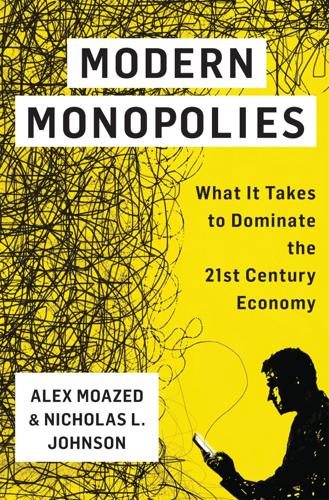
Modern Monopolies: What It Takes to Dominate the 21st Century Economy
by
Alex Moazed
and
Nicholas L. Johnson
Published 30 May 2016
So have distributors and resellers, which are companies that build or lease physical assets or technologies in order to distribute and sell physical products. Examples include resellers like Walmart, Best Buy, and Target. Many of today’s software companies also fit in this group, including most software-as-a-service (SaaS) companies. Even though their products are digital, these companies still function linearly, with value flowing from the companies to their customers. The only difference is that software companies benefit from the low marginal cost of digital distribution. The second type of linear business model is a services company.
…
Yet years later, in the early 2000s, along came Salesforce.com, which undercut these companies by distributing its software over the Internet. At the time, Salesforce CEO Marc Benioff called this “the end of software.” What he really meant was that it was the end of traditional, expensive software and the beginning of software as a service (SaaS)—essentially cloud software that can be accessed cheaply over the Internet. But over time, Salesforce’s larger competitors started to create SaaS offerings, and Salesforce needed to continue to differentiate itself. What was Benioff’s answer? Build a development platform. Salesforce created its Force.com development platform and AppExchange app store, which it launched in 2006.
…
Morgan, 23, 234 Kalanick, Travis, 102, 134, 230 Kantorovich, Leonid, 52–53 Keynes, John Maynard, 107 Kickstarter, 30, 77–78, 114, 183 Kozmo.com, 64, 175 Krugman, Paul, 64, 67 LakePlace.com, 130 Lange, Oskar, 61, 63, 71, 73 Lazaridis, Mike, 7–11 Lean Startup movement, 175 Lending Club, 46, 77–78, 113–14, 215, 231 Lenovo, 23, 210 Lessin, Sam, 122–23 linear business model: competition and, 68, 74–75; connection and, 112, 114; data and, 100; defined, 240; explained, 22–24; investment and, 81–82; legal issues and, 213; market size and, 93; monopolies and, 103; platforms and, 29, 31–33, 109–11, 116, 192, 215; privacy and, 108; Samsung and, 212; supply chain, 24–25; transactions and, 116–17; U-shaped economies of scale curve for, 60; value and, 39, 84–85, 152, 231; zero-marginal-cost and, 85–89 LinkedIn, 17–18, 30, 46, 82, 87, 118, 120–21, 155, 190, 206, 224 Linux, 33–35, 139, 234 liquidity, 121, 130, 132, 135, 181, 192, 199, 240 local knowledge, 54–55, 59, 70, 73 Lyft, 30, 45, 121, 127, 152, 181, 186, 194, 199, 205–6, 216 Ma, Jack, 96–98, 227 margins, 89–90, 93, 95 market size, 87–88, 93 matching intention, 41–42, 47, 241 matchmaking: collaborative filtering, 134–35; commoditization and, 46; core transactions and, 47, 126; creating rules and standards, 136–38; explained, 126; measuring success, 135–36; overview, 132–33; preventing unintended consequences, 143–46; Twitter and, 138–43; Uber and, 133–34; Yahoo and, 135–36 McLuhan, Marshall, 51 MDLIVE, 80 “Meaning of Competition, The” (Hayek), 53 Medium, 41–42, 116, 125, 181 MeeGo, 1–2 Mehta, Apoorva, 147–49 Metcalfe’s Law, 168–70, 175, 183, 241 Metromile, 206 Microsoft, 1, 3, 15, 18, 29–31, 35, 62, 68, 99, 106–7, 180–81, 196 MIT, 62, 165 mobile technology, 65, 67 monetary subsidies: attracting high-value users, 199–200; cooperating with industry incumbents, 196–97; providing security through large, up-front investment, 196; providing single-user utility, 201; targeting user groups, 200–1 monopolies: business model and, 97–99; competition and, 105–8; government-sponsored, 74–75; old vs. new, 100–3; overview, 95–97; platform capitalism, 99–100 Moore, Gordon, 61 Moore’s Law, 61, 174 Motorola, 10, 210–12 MySpace, 144, 162–65, 167, 169, 172–76, 179–80, 183 Navani, Girish, 79–80 Net neutrality, 18 Netflix, 100 network ecosystem, 69 network effects ladder: collaboration, 184–85; communication, 183; community, 185–86; connection, 183; curation, 183–84; diagram, 182; overview, 182–83 Nokia, 1–8, 11, 14–15, 81, 106 Nosek, Luke, 131 Obama, Barack, 130–31 Omidyar, Pierre, 21–22, 27 on-demand, 29, 32, 45, 80, 90, 147, 150, 194, 220, 222, 228 Open Handset Alliance (OHA), 10 open source, 10, 33–36, 38, 78, 107, 220, 234 OpenTable, 89–90, 201, 222 opt-ins: double, 43, 118–19, 122, 152–53, 165, 241; single, 118–20 Oracle, 23, 79 PayPal, 18, 37, 74, 131–32, 149, 159, 194, 214 perfect information, 36, 52–54 Pets.com, 20–22, 27, 29, 32, 64, 175 Pinterest, 30, 82, 106, 181–82 Pishevar, Shervin, 160 platforms: anatomy of, 39–41; competition between, 99–100, 103, 106, 222; computing, 32; costs, 36–37; definition, 29; design, 46–47; examples, 29–31; exchange, 41, 43–44; expansion of markets, 103–5; industry, 32; maker, 41, 44; matching intention and, 41–43; monopolies, 99–101; platform capitalism, 99–100; product, 32; as service, 32; types, 43–46 Porter, Michael, 57–60, 69, 72, 86, 97–98, 110, 112, 131, 242 Preston, Dan, 206 Preston-Warner, Tom, 35 privacy, 108, 155, 174, 179, 229 processing power, 29, 61–63, 65–67, 70, 233 product features: acting as producer, 197–98; attracting high-value users, 199–200; providing single-user utility, 201; tapping into existing network, 198; targeting user groups, 200–1 profitability, 22, 29, 107, 211 ProGit, 36 QQ, 19, 154, 218 QWERTY keyboards, 8, 11 Rakuten, 30 recommendations, 100, 116 Red Cross, 132 Red Hat, 33–34 Redpoint Ventures, 120, 138 Reidman, Hoff, 78 repeat business, 91–92 reputation, 96, 100, 107, 116, 129, 144–45, 154, 160, 164, 174, 177–78, 180, 183–84 Research in Motion (RIM), 7–15; see also BlackBerry restaurants, 89–90, 201, 225; see also GrubHub; OpenTable rewards, 115–16 Riedel, Josh, 144 Road to Serfdom (Hayek), 53 Roberts, Matthew, 90 Rubin, Andy, 10 rules and standards, 136–38 Salesforce, 79 Samsung, 10, 84, 94, 211–12, 231 Sandberg, Sheryl, 139 SAP, 79 Sarver, Ryan, 138–41, 145 Scoble, Robert, 191 search, 6, 18, 37, 45–46, 73, 95, 97–99, 105–7, 116, 130, 133, 135–36, 154, 196, 206, 208, 219–22, 233; see also Alibaba; Baidu; Google showrooming, 50 simplicity, 122–23, 147 Skype, 18, 42, 114 smartphones Snapchat, 30, 38, 81–82, 114, 191, 201 Social Finance (SoFi), 30, 231 social networking, 18, 35, 43, 46, 67, 74, 81, 118–22, 142, 153, 161, 163–67, 170, 172–74, 176, 189–90, 194, 198, 200–1, 213, 221, 224, 235 software as a service (SaaS), 23, 33, 79, 85, 227 software development kit (SDK), 13–14 SoundCloud, 77 Spotify, 184, 203–4 Square, 18, 30 Standard Oil, 22, 100–2, 107 startups, 15, 22, 30–31, 46, 74, 77, 80, 83–85, 97, 107, 120–21, 129–30, 147, 156, 172, 175, 177, 184–85, 190–92, 195, 197, 205, 219, 223, 231, 235 Steel, Anna, 151–52 storage, 66, 68, 79 Super Bowl ads, 20 supply chain, 4, 18, 22–26, 29, 69, 89 Symbian, 1–2, 4, 32 Taobao.

Start Small, Stay Small: A Developer's Guide to Launching a Startup
by
Rob Walling
Published 15 Jan 2010
A Look at the Self-Funded Startup Entrepreneur There are many definitions of entrepreneur, but since we’ll be discussing self-funded tech startups we are going to focus our definition on a few key points: Point 1: An entrepreneur is a technical visionary who creates software for a niche market. Niche markets are critical. If you want to self-fund a startup you have to choose a niche. Building an online invoicing software as a service (SaaS) application? Good luck. Building an online invoicing application targeted at landscape architects? Now you’re talking. The genius of niches is they are too small for large competitors, allowing a nimble entrepreneur the breathing room to focus on an underserved audience. Once you’ve succeeded in that niche, you can leverage your success to establish credibility for your business to move into larger markets.
…
If you receive emails from existing customers, offer to refund the difference for them. Product Types Six major product types are described below, including the typical pricing structure, benefits, downsides and when to use each. Type #1 – Hosted Web Applications These days hosted web applications are called Software as a Service applications (SaaS), but you may know them by their previous name, ASP Applications (for Application Service Provider), or the new name the media seems to be misusing more and more, “Cloud-based Applications.” Most new business or productivity applications are hosted web applications. Examples abound, but here are some of the more popular options: FreshBooks 39 (hosted invoicing) Basecamp 40 (hosted project management software) FogBugz on Demand 41 (hosted bug tracking / project management) Pricing Structure Typically a monthly or annual recurring fee Benefits for the Entrepreneur Steady, recurring revenue Support is much easier than software installed on a user’s machine since you are in control of every aspect of the deployment and are only maintaining a single version of the application Documentation can be updated as you add features Customer feedback can be incorporated immediately into the product, thus providing incremental improvements on a shorter release schedule Benefits for the Customer Customers do not make a large, up-front capital investment to pay for software licenses Customers do not have to maintain their own servers, install or upgrade software, or open a shared hosting account Upgrades are free, seamless, and require no effort on the part of the customer Customers can try your product with little effort The Downside Developing for the web can be challenging and you have to learn a number of technologies to build an application (HTML/CSS/AJAX/JS/Server Side Code) Browser compatibility issues can be cumbersome, especially with browser market share becoming more and more splintered Some customers, typically enterprise clients, will not allow their data to live outside of company walls and thus will not use hosted web applications It requires you to maintain a 24/7 uptime hosting solution, plus security and backups When to Use When thinking about a new application aimed at businesses, start with the position of a hosted web application.
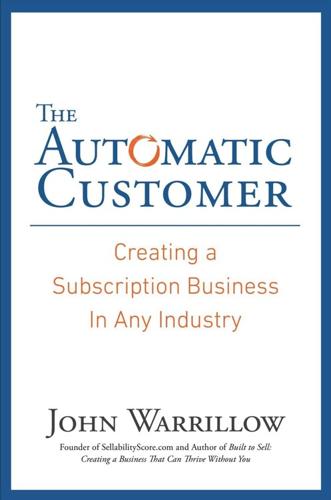
The Automatic Customer: Creating a Subscription Business in Any Industry
by
John Warrillow
Published 5 Feb 2015
In the late 1990s, application service providers such as Onvia offered access to computer applications on a subscription basis rather than requiring users to load up their software from a CD. While some of the early players were weeded out during the “tech wreck” of 2001, the business model lived on in software as a service (SaaS) businesses and in “cloud-based” companies such as Salesforce.com and Constant Contact. The Subscription Model Renaissance Basically, while the subscription business model has been around for centuries, over the last two decades it has been revitalized by technology and media companies.
…
Constant Contact has been trying to optimize its metrics since its start in 1995. In January 2014, the company announced that its revenue was up to $285.4 million per year. It went from $100,000 MRR in 2002 to almost $24 million in MRR in 2014, but it has been what CEO Gail Goodman calls a “long, slow SaaS [software as a service] ramp of death.” Far from an overnight success, Constant Contact has been tweaking its approach to optimize its numbers for almost two decades. It has tried virtually every marketing tactic there is, from TV and radio advertising to search engine optimization (SEO), direct mail, and sending salespeople out into a community to cold-call by knocking on doors.
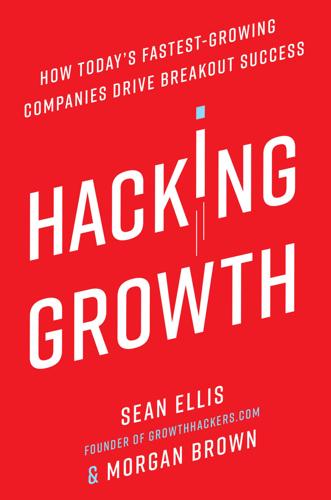
Hacking Growth: How Today's Fastest-Growing Companies Drive Breakout Success
by
Sean Ellis
and
Morgan Brown
Published 24 Apr 2017
According to data published by mobile intelligence company Quettra, most mobile apps, for example, retain just 10 percent of their audience after one month, while the best mobile apps retain more than 60 percent of their users one month after installation.12 RETENTION CURVES FOR ANDROID APPS User retention for Android apps from Quettra Business products, such as software as a service, fare much better, with annual retention rates north of 90 percent, according to a study of private SaaS companies done by Pacific Crest in 2013.13 And fast-food restaurant chains see month-over-month retention of customers ranging from 50 to 80 percent. For example, McDonald’s saw 78 percent of their customers come in every month to their restaurants in 2012.14 A 2013 study concluded that credit card companies in the US see annual churn rates of roughly 20 percent, while European cellphone carriers see churn of anywhere between 20 and 40 percent.15 GETTING TO MUST-HAVE If your product passes these tests, providing a clear indication that a significant number of customers have experienced the aha moment, it’s time to move into high-tempo experimentation for growth.
…
Brian Balfour, whom we’ve met earlier, highlights that retention breaks down into three phases: initial, medium, and long-term.6 The initial retention period is the critical time during which a new user either becomes convinced to keep using or buying a product or service, or goes dormant after one or a few visits. Think of the initial retention rate as a measure of the immediate stickiness of the product. There is no fixed definition of the initial retention period; it might be as short as a day for a mobile app, or a week or two for a social network. For a software as a service (SaaS) product, the initial retention period might be more like a month or quarter, whereas for e-commerce companies it is often the first 90 days.7 You should determine this period for your product based on both the data you can get about the standards for products of your type across the sector you’re in and by your own analysis of the behavior of your own customers over time.
…
We hope this chapter changes that. The basic means of increasing revenue per customer vary according to a company’s business model. If you’re a retail company, greater monetization of your customer base is fundamentally achieved by persuading customers to purchase more of whatever it is you sell. If you’re a software as a service (SaaS) company, it is achieved by getting more subscribers to renew their subscriptions, and to do so for more years, as well as by persuading more of them to upgrade to higher-fee levels of service (or in the special case of freemium services, by getting more users to upgrade to paid plans).

Ghost Work: How to Stop Silicon Valley From Building a New Global Underclass
by
Mary L. Gray
and
Siddharth Suri
Published 6 May 2019
Meanwhile, overseas in Hyderabad, the Silicon Valley of India, Ayesha sits at her kitchen table, squinting at her laptop. She just accepted a job routed from Uber to CrowdFlower’s software, and now she is an invisible yet integral part of the ride. CrowdFlower and its competitors with similarly hip-techy names, like CloudFactory, Playment, and Clickworker, offer their platform’s software as a service to anyone who needs quick access to a ready crowd of workers. Tens of thousands of people like Ayesha log on to crowdsourcing platforms like CrowdFlower every day, looking for task-based work. Now Ayesha—and any other invisible workers who happen to have responded to CrowdFlower’s request—will determine whether Sam picks up Emily.
…
They use the platform’s software to make money by offering their time and personal vehicle to respond to rider-customers’ requests, picking them up and dropping them off at a destination plugged into the app. The challenge of the single-bottom-line framing of the worker as another software user is that customers hailing a platform’s software to call ghost work into action rarely, if ever, see themselves as responsible for the work conditions of the human delivering their part of the software-as-a-service. For example, the Pew Research Center found that most customers hold a mixed, often contradictory set of beliefs about what Uber does and does not owe driver-partners.4 Most respondents felt strongly that ride services like Uber should not have to follow the same rules and regulations as taxis.
…
The greater challenge is that Uber is the visible tip of an iceberg. The end customer benefiting from most ghost work will never physically meet—often even know of—the people delivering a service to them. Because, of course, hiding the people in the loop from the end customer is part of the value proposition of software-as-a-service. But treating workers like ghostly figures is not a given or necessary element of on-demand services. Some companies see themselves as not only software providers but also purveyors of human expertise and creativity. They consider it their business to be responsible for workers’ labor conditions because they believe it’s better for their business in the long run.
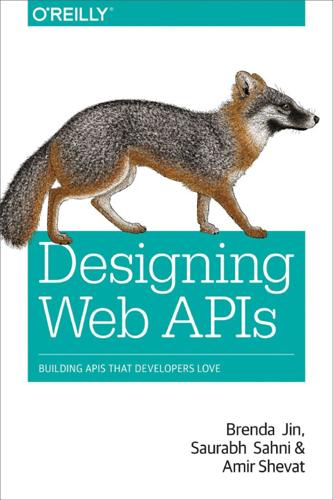
Designing Web APIs: Building APIs That Developers Love
by
Brenda Jin
,
Saurabh Sahni
and
Amir Shevat
Published 28 Aug 2018
APIs might also be a way to generate leads, create new distribution channels for a prod‐ The Business Case for APIs | 3 uct, or upsell products. For more information on these strategies, see John Musser’s presentation on API business models. An API must be aligned with the core business, as is the case with many software as a service (SaaS) companies. Notable examples are GitHub, Salesforce, and Stripe. Sometimes, the products built on these APIs are referred to as “service integrations.” Consumer APIs work well if there is a critical mass of user-generated content, such as with Facebook and Flickr’s photo-sharing capabilities.
…
API Implementation Checklist: ❏ Define specific developer problem to solve ❏ Write internal API specification ❏ Get internal feedback on API specification ❏ Build API ❏ Authentication ❏ Authorization ❏ Error handling ❏ Rate-limiting ❏ Pagination ❏ Monitoring and logging ❏ Write documentation ❏ Run beta test with partners on new API ❏ Gather feedback from beta partners and make changes ❏ Create communication plan to notify developers of changes ❏ Release API changes API Design Worksheets | 205 Index A additions to APIs, 131 additive-change strategy, 133 Amazon Web Services (AWS), 83 ambassador programs, 195 analytics dashboards, 56 Apache Thrift, 14 API testers, 179 APIs about, 1 attributes and traits of good APIs, 199 business case for, 3-7 APIs as a product, 6 APIs for external developers first, internal developers second, 5 APIs for internal developers first, external developers second, 4 characteristics of great APIs, 7 description language, 122-126 design paradigms, 9 designing (see designing APIs, best practices; designing APIs, practical exercise in) event-driven, 19-25 comparison of different types, 24 HTTP Streaming, 23-24 WebHooks, 19-22 WebSockets, 22-23 request–response comparison of types, 18 GraphQL, 14-18 REST, 10-13 RPC, 13-14 security (see security) uses of, 2 application names, misleading, pro‐ hibiting in OAuth, 40 application-level caching for APIs, 87 archiving a GitHub repository, HTTP request for, 12 asynchronous operations, 89 authentication, 27 choosing mechanism for MyFiles API (example), 66 authorization, 28 OAuth 2.0 as standard for, 29 Authorization header (HTTP) for Basic Authentication, 28 with OAuth tokens and scope, 34 automated testing (see testing) awareness tactics examples, 156 AWS (see Amazon Web Services) B backward compatibility, maintaining, 58, 127-128 Basic Authentication, 28 beta programs, 188-190 beta testers, 79 Botkit framework, 177 bottlenecks, finding, 82 207 breadth and depth analysis for devel‐ oper programs, 185 breadth developer programs, 192-197 bulk operation endpoints, support‐ ing, 95 business case for APIs, 3-7 business objectives, defining, 62-64 business-focused tech savvy audience, 145 C cache invalidation, 87 caching in developer SDKs, 115 using to scale thoughput, 87 change, managing, 117-142 aiming for consistency, 117-126 using automated testing, 120-126 backward compatibility, 127-128 planning for and communicating change, 128-141 additions to the API, 131 communication plan, 129 removing fields or endpoints, 132 versioning, 133-141 changelogs, 170 CI pipeline, 121 clickjacking, 40 client secret, ability to reset in OAuth, 39 cloud hosting providers, solutions for measuring bottlenecks, 83 code samples, 173 code snippets, 174 communication means, preferred, of developers, 149 communication plan for changes, 129 community contributions, 182-183 community, building, 192 computing resources, adding to scale applications, 85 consistency in an API, 50, 117-126 hallmarks of consistency, 118 using automated testing, 120-126 continuous integration (CI), 121 Conversations APIs (Slack), 13, 93 208 | Index CPU bottlenecks, 83 Create, Read, Update, and Delete operations (see CRUD operations) credit programs, 197 cross-site request forgery (CSRF), 27, 38 cross-site scripting (XSS), 27 CRUD operations, 10 HTTP verbs and REST conven‐ tions, 11 in MyFiles API (example), 67 in request–response API para‐ digms, 18 pros and cons of API paradigms for MyFiles API (example), 65 current actual numbers for developer funnel indicators, 155 cursor-based pagination, 99-101 advantages and disadvantages, 100 ID as cursor, 101 opaque strings as cursor, 101 timestamp as cursor, 101 custom HTTP headers rate-limit response headers, 110 with OAuth token and scope, 34 D dark launching rate-limiting, 109 data access patterns (new), introduc‐ ing in your API, 90 database indexes, 86 database profiling, 84 database replication, 85 database sharding, 85 date filters, 96 debugging tools, 179 DELETE method (HTTP), 10 (see also CRUD operations) depth developer programs, 187-192 design sprints, 160, 191 designing APIs, best practices, 47-59 design for great developer experi‐ ence, 48-59 making it fast and easy to get started, 48 making troubleshooting easy, 52-56 making your API extensible, 56 working toward consistency, 50 design for real-life use cases, 47-48 focusing on users, 2 designing APIs, practical exercise in, 61-79 scenario 1, 62-72 defining business objectives, 62-64 outlining key user stories, 64 selecting technology architec‐ ture, 65 writing an API specification, 68-72 scenario 2, 72-79 defining problem and impact statement, 73 getting feedback on the API spec, 77-79 selecting technology architec‐ ture, 74 writing an API specification, 74-77 developer ecosystem strategy, build‐ ing, 143-161 building a developer strategy, 147 defining your developer funnel, 152-154 funnel indicators, 154 deriving measurements, 160 developer segmentation, 147-150 common use cases and tasks, 148 examples of segmentation analysis, 149 identity, 147 market size and geographical distribution, 149 platform of choice, 148 preferred development lan‐ guage, framework, and tools, 148 preferred means of communi‐ cation, 149 proficiency, 148 developers, 144-147 business-focused tech savvy audience, 145 hackers, 145 hobbyist, 144 professional developers, 146 variations on categories men‐ tioned, 146 distilling the value proposition, 151 mapping current and future state, 155-156 outlining your tactics, 156-160 awareness tactics examples, 156 developer relations high-level quarterly plan, 159 proficiency tactics examples, 157 success tactics examples, 158 usage tactics examples, 157 developer programs, 185-198 breadth and depth analysis for, 185 breadth programs, 192-197 credit programs, 197 hackathons, 194 meetups and community, 192 online videos and streaming, 196 speaking at events and event sponsorships, 194 support, forums, and StackO‐ verflow, 196 train-the-trainer and ambassa‐ dor programs, 195 depth programs, 187-192 design sprints, 191 early access/beta program, 188 top partner program, 187 measuring, 197 developer relations, 143 Developer Relations core activities, 185 developer resources, 163-184 API documentation, 163-172 code samples and snippets, 172-175 Index | 209 community contribution, 182-183 development tools, 179 frameworks, 177 office hours, 181 rich media, 180 videos, 180 software development kits (SDKs), 175-177 webinars and online training, 182 developer SDKs (see software devel‐ opment kits) developers APIs for external developers first, internal developers second, 5 APIs for internal developers first, external developers second, 4 communicating with about API changes, 129 removal of fields or endpoints, 132 rate limits and, 110-112 trying APIs without signing up, 49 disk I/O, 83 documentation for APIs, 49, 163-172 changelog, 170 frequently asked questions, 168 Getting Started guides, 163 landing page, 169 reference documentation, 165 terms of service (ToS), 171 tutorials, 167 E early access/beta program, 188 edge caching, 87 error handling and exponential back‐ off in SDKs, 115 errors HTTP status codes in MyFiles API specification (example), 71 meaningful, 52-55 actionable errors and recom‐ mended error codes, 52 grouping errors into high-level categories, 53 210 | Index organizing into status codes, headers, and machinereadable and humanreadable codes, 54 event objects for MyFiles API techni‐ cal spec (example), 75 event-driven APIs, 19-25 comparison of different types, 24 HTTP Streaming, 23-24 pros and cons for MyFiles API (example), 74 WebHooks, 19-22 WebSockets, 22-23 events (developer), 194 Events API (Slack), 91 evolving API design, 90-97 adding new API methods, 92 best practices, 97 introducing new data access pat‐ terns, 90 new options to filter results, 95 supporting bulk endpoints, 95 explicit-version strategy, 134-138 exponential back-off, 115 extensibility of APIs, 56 F Facebook, ToS violations, 41 failures and retries (WebHooks), 20 feedback, getting on API specifica‐ tion, 77-79 fields in API responses, filtering, 96 filtering results, providing options for, 95 firewalls, WebHooks and, 21 fixed-window counter (rate-limiting), 107 Flannel (Slack), 88 forums, 196 frameworks, 177 frequently asked questions (FAQ), 168 function names, versioned, 136 G geographical distribution (develop‐ ers), 149 GET method (HTTP), 10 (see also CRUD operations) Getting Started guides, 163 GitHub, 5 addressing scalability challenges, 91 archiving a repository, HTTP request for, 12 OAuth scope headers in API response, 35 rate-limit response header, 111 rate-limiting at, 112 Gmail phishing attack on, 40 thin WebHook message payload, 45 Google Cloud Platform (GCP), 83 Google Developer Groups (GDG), 192 Google Hangouts, versioning case study, 140 GraphQL, 6, 14-18, 91 advantages over REST and RPC, 16 comparison to REST and RPC APIs, 18 Object Field deprecation, 133 pros and cons for MyFiles API (example), 66 gRPC, 14 gzip compression, using in SDKs, 114 custom rate-limit response head‐ ers X-RateLimit-Limit, 111 X-RateLimit-Remaining, 111 X-RateLimit-Reset, 111 organizing errors into, 54 specifying API versions in, 135 X-Frame-Options, 40 HTTP methods CRUD operations and REST con‐ ventions, 11 in REST APIs, 10 in REST, RPC, and GraphQL APIs, 18 in RPC-style APIs, 13 HTTP status codes description for errors in MyFiles API specification (example), 71 in REST APIs, 10 indicating redirection for moved/ moving resources, 135 organizing errors into, 54 returning for rate limits, 110 HTTP Streaming, 23-24 comparison with WebHooks and WebSockets, 24 pros and cons for MyFiles eventdriven API (example), 74 HTTPs endpoints (OAuth), 39 human-readable errors, 52 H I hackathons, 194 hackers, 145 hash-based message authentication code (HMAC), 43 Hello World exercise, 163 hobbyist developers, 144 horizontal scaling, 85 HTTP, 9 (see also request–response APIs) in RPC-style APIs, 13 HTTP headers custom OAuth headers X-Accepted-OAuth-Scopes, 35 X-OAuth-Scopes, 35 ID as cursor, 101 identity (developers), 147 iframes, rendering of authorization screen, disallowing, 40 impact statement for MyFiles API (example), 63 scenario 2, 73 indexes (database), 86 integrated development environ‐ ments (IDEs), 148 interface definition language, 122-126 interface description language (IDL), 122 interfaces, 1 Index | 211 J JavaScript object notation (JSON), 122 JSON responses in REST APIs, 11 JSON web APIs, 122-126 describing and validating requests, 125 describing and validating respon‐ ses, 123 K key indicators status report (devel‐ oper funnel), 155 key performance indicators (KPIs), connecting to developer activities, 160 L landing page for API documentation, 169 load testing, 84 logging changelog, 170 use in troubleshooting developer issues, 55 M machine-readable error codes, 52 Macys.com responsive checkout, 78 MAJOR, MINOR, and PATCH ver‐ sions, 137 managing change (see change, man‐ aging) market potential (developer funnel indicators), 155 market size, 149 measurements of developer activities, 160 measuring developer programs, 197 meetups and community, 192 memory bottlenecks, 83 methods, adding to APIs, 92 MINOR versions, 137 mocking data for interactive user testing, 78 Mutual TLS (Transport Layer Secu‐ rity), 44 212 | Index N network I/O, 83 noise (in WebHooks), 21 non-CRUD operations in REST APIs, 12 O OAuth, 28-42, 50 benefits of, 29 best practices, 38 listing and revoking authoriza‐ tions, 37 scopes, 32 Slack's move to granular OAuth scopes, 34 selection for use in MyFiles API (example), 66 token and scope validation, 34 token expiry and refresh tokens, 35 token generation, 30 objective key results (OKRs), 159 office hours, 181 offset-based pagination, 97 advantages and disadvantages, 98 opaque strings as cursor, 101 OpenAPI, 125 order filters, 96 P paginating APIs, 97-102 best practices, 102 cursor-based pagination, 99-101 advantages and disadvantages, 100 choosing cursor contents, 101 offset-based pagination, 97 advantages and disadvantages, 98 pagination support in developer SDKs, 114 partner engineers, 187 PATCH method (HTTP), 10 (see also CRUD operations) PATCH versions, 137 personally identifiable information (PII), 55 phishing attacks using misleading application names, 40 platform of choice (developers), 148 polling, 19 solving as API scaling problem in REST APIs, 90 WebHooks vs., 19 POST method (HTTP), 10 (see also CRUD operations) problem and impact statement for MyFiles API (example), 63 scenario 2, 73 professional developers, 146 proficiency (developer), 148 proficiency tactics examples, 157 profiling code, 83 programming languages, 148 implementing code snippets in, 174 PUT method (HTTP), 10 (see also CRUD operations) Q quarterly plan for developer relations, 159 R rate-limit response headers, 110 rate-limiting APIs, 102-114 best practices, 112 implementation strategies, 105-110 fixed-window counter, 107 sliding-window counter, 108 token bucket algorithm, 105 rate limits and developers, 110-112 documenting rate limits, 111 rate-limit status API, 111 rate-limiting policy, 103 Slack's rate-limiting, lessons learned from, 113 Stripe's rate-limiting strategies, 104 Read method, 10 (see also CRUD operations) read/write scopes, 32 Real-Time Messaging API, 91 reference apps, 173 reference documentation, 165 refresh tokens, 36 one-time-use, 39 remote procedure calls (RPCs), 13 (see also RPC APIs) removing endpoints or fields from APIs, 132 replay attacks, 43 request logs, providing for develop‐ ers, 55 requests adding request parameters to con‐ trol output, 131 describing and validating, 125 request parameters in version schemes, 136 request–response APIs, 9-19 comparison of different types, 18 GraphQL, 14-17 REST, 10-13 RPC, 13-14 resources (in REST APIs), 10 showing relationships between, 11 responses adding response fields, 131 describing and validating, 123-125 REST APIs, 10-13 comparison to RPC and GraphQL, 18 CRUD operations, HTTP verbs, and REST conventions, 11 general rules for, 10 non-CRUD operations, 12 payload creep, 17 polling as scaling problem, solv‐ ing, 90 pros and cons for MyFiles API (example), 66 showing relationships among resources, 11 retries (WebHooks), 20 rich media, 180-181 rich site summary (RSS) feed, adding to changelog, 170 RPC APIs, 13-14 Index | 213 comparison to REST and GraphQL, 18 general rules for, 13 HTTP request to Slack API, 13 pros and cons for MyFiles API (example), 66 Slack, Conversations APIs, 13 using protocols other than HTTP, 14 RSpec test using JSON Schema speci‐ fication, 125 S sandboxes and API testers, 179 scaling APIs, 81-116 evolving your API design, 90-97 adding new API methods, 92 best practices, 97 introducing new data access patterns, 90 providing new options to filter results, 95 supporting bulk endpoints, 95 providing developer SDKs, 114-116 caching frequently used data, 115 error handling and exponen‐ tial back-off, 115 pagination support, 114 rate-limiting support, 114 SDK best practices, 115 using gzip compression in SDKs, 114 scaling throughput, 82-90 adding computing resources, 85 best practices, 89 caching, 87 database indexes, 86 doing expensive operations asynchronously, 89 finding bottlenecks, 82 using pagination, 97-102 best practices, 102 cursor-based pagination, 99-101 offset-based pagination, 97 214 | Index using rate-limiting, 102-114 best practices, 112 implementation strategies, 105-110 rate limits and developers, 110-112 scopes (OAuth), 32 for sensitive information, 39 for use in MyFiles API (example), 66 in MyFiles API (example) scopes, operations, and resour‐ ces, 67 Slack's move to granular OAuth scopes, lessons learned from, 34 SDKs (see software development kits) search filters, 96 search operations in REST APIs, 12 security, 27-46 authentication and authorization, 27 for WebHooks, 20 OAuth, 28-42 best practices, 38 listing and revoking authoriza‐ tions, 37 scopes, 32 token and scope validation, 34 token expiry and refresh tokens, 35 token generation, 30 WebHooks, 42-45 semantic versioning specification (SemVer), 137 server-sent events (SSE), streaming data via, 24 short-lived authorization codes (OAuth), 39 short-term targets and market poten‐ tial (developer funnel indicators), 155 signatures (WebHook), 43 Slack APIs, 4 adding new API methods, 92 addressing scalability challenges with Events API, 91 API Metadata, 126 app credentials of Slack app with verification token, 42 changelog, 170 Conversations API, 132 supporting bulk operations, 95 developer segmentation for Slack, 149 early access/beta program, 189 Flannel, application-level edge cache, 87 inconsistency in, 118 long-lived tokens, 37 missing field on message pay‐ loads, 127 move to granular OAuth scopes, lessons learned from, 34 rate-limiting, lessons learned from, 113 RPC-style web API, 13 translation layer to maintain backward compatibility, 57 WebSocket-based real-time mes‐ saging API, 22 sliding-window counter (ratelimiting), 108 snippets (code), 174 software as a service (SaaS) compa‐ nies, 4 software development kits (SDKs), 50, 148, 175-177 developer SDKs, 114-116 best practices, 115 caching frequently used data, 115 error handling and exponen‐ tial back-off, 115 pagination support, 114 rate-limiting support, 114 using gzip compression, 114 maintaining, 178 SoundCloud API, value proposition, 151 speaking at developer events, 194 specification (spec), writing for an API, 68-72 MyFiles API WebHooks (exam‐ ple), 74-77 SQL databases, queries based on cur‐ sor values, 99 Stack Overflow, 196 Stackdrivers, 83 stakeholders, reviewing API specifi‐ cation with, 77 state parameter support (OAuth), 38 streaming, 196 Stripe online testing of API by develop‐ ers without signing up, 49 rate-limiting, 104 value proposition, 151 versioning case study, 139 subresources in APIs, 11 success tactics examples, 158 support for developers, 196 T task queues, 89 TCP (Transport Control Protocol), 22 technology architecture, selecting scenario 1 for MyFiles API (exam‐ ple), 65 scenario 2 for MyFiles API (exam‐ ple), 74 terms of service (ToS) violations of Facebook ToS, 41 writing, 171 testing automated, 120-126 describing and validating requests, 125 describing and validating responses, 123-125 sandboxes and API testers, 179 Thrift, 14 throughput, scaling, 82-90 adding computing resources, 85 best practices, 89 caching, 87 database indexes, 86 doing expensive operations asyn‐ chronously, 89 finding bottlenecks, 82 the Time to Hello World (TTHW), 164 Index | 215 timestamps, using as cursors, 101 TLS (Transport Layer Security), 44 token bucket algorithm (ratelimiting), 105 tokens (OAuth) and scope, validation of, 34 expiry and refresh tokens, 35 generation of, 30 Slack's long-lived tokens, 37 top partner program, 187 train-the-trainer and ambassador programs, 195 transformations between versions, 137 Transport Control Protocol (see TCP) transport patterns for MyFiles API (example), 65 troubleshooting, making easy for developers, 52-56 building tooling, 55 meaningful errors, 52-55 providing troubleshooting tools, 179 tutorials for APIs, 49, 167 Twitch, deprecation of an API, 59 Twitter, 90 cursor-based pagination, 99 U Uber developers and rate-limiting, 109 Unix timestamp as cursor, 99 Update method, 10 (see also CRUD operations) URI components, specifying versions in, 135 URIs, specification for MyFiles API (example), 70 usage tactics examples, 157 user interfaces (UIs), 88 user stories (key), outlining scenario 1 for MyFiles API (exam‐ ple), 64 scenario 2 for MyFiles API (exam‐ ple), 73 users, focusing on in API design, 2 216 | Index users.conversations API method (Slack), 94 V value proposition, distilling for your API, 151 verification tokens, 42 versioning APIs, 57, 133-141 additive-change strategy, 133 case study, Google Hangouts, 140 case study, Stripe, 139 explicit-version strategy, 134-138 policies for MAJOR and MINOR changes, 138 process management, 141 vertical scaling, 85 videos creating, 180 online videos and streaming, 196 W WebHooks, 19-22, 90 comparison with WebSockets and HTTP Streaming, 24 considerations for use in MyFiles API (example), 66 MyFiles API Webhooks Spec (example), 74-77 polling vs., 19 pros and cons for MyFiles eventdriven API (example), 74 security, 42-45 best practices, 45 Mutual Transport Layer Secu‐ rity, 44 request signing and WebHook signatures, 43 thin payloads and API retrieval, 44 verification tokens, 42 supporting, additional complexi‐ ties added by, 20 webinars and online training, 182 WebSockets, 22-23, 90 comparison with WebHooks and HTTP Streaming, 24 pros and cons for MyFiles eventdriven API (example), 74 Y YouTube API, value proposition, 151 X XML responses, REST APIs, 11 Index | 217 About the Authors Brenda Jin is an entrepreneur and software engineer.
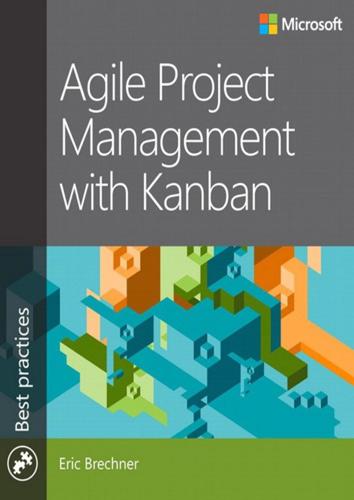
Agile Project Management With Kanban
by
Eric Brechner
Published 25 Feb 2015
This model is commonly used for open source software (OSS) and distributed projects. Publish code, apps, or content to an online catalog or store (such as Google Play). This model is typically used for apps, software updates, and digital media. Propagate code and components to web servers or virtual machines. This model is typically used for websites, web services, and software as a service (SaaS). For each of these models, I cover how to assign completed items to deployments, how to track when those items are deployed, and how the Kanban approach affects your deployment cadence and customer feedback mechanisms. The topics covered are: Continuous integration Continuous push Continuous publishing Continuous deployment Checklist Continuous integration Continuous integration is a software engineering practice that dates back to the early 1990s.
…
Minimize work in progress As described earlier, the work-in-progress (WIP) limits Kanban imposes ensure that the core engineering team is working on a focused set of issues instead of continually working on issues randomly and never finishing. Deliver frequently Customer issues require quick turnaround. Within a software as a service (SaaS) model, fixes can be deployed rapidly, solving issues for multiple customers at a time. The overall flow of a Kanban system facilitates frequent releases. Measure sustained-engineering effectiveness Kanban surfaces a set of metrics that you can use to measure how well your team is doing in dealing with escalations.

The Measure of Progress: Counting What Really Matters
by
Diane Coyle
Published 15 Apr 2025
Cloud computing has grown extraordinarily rapidly although—surprise—there is a paucity of reliable statistics, albeit evidence from various industry reports. Businesses and consumers who use the cloud, for anything from Gmail or storing photos to advanced AI applications, generally think of it as hiring access to software. Indeed the jargon of cloud computing speaks of Software as a Service, Platform as a Service, or Infrastructure as a S ervice (where the latter refers also to software applications and systems). Th ese software-related s ervices are, though, bundled with massive amounts of hardware, the major physical infrastructure of data centres and their multiple racks of servers and other equipment.
…
Ofcom’s research 168 Chapter Six found that 82 per cent of respondents had increased their cloud use in recent years, and 79 per cent expected to continue doing so in the following eighteen months. Different service options are available, usually divided into Infrastructure as a Service (IaaS, raw compute); Platform as a Service (PaaS, a virtual environment); and Software as a Service (SaaS, use of applications provided by the cloud provider or an independent software supplier they host). Most of the familiar uses fall into this latter category, from personal Gmail to Microsoft Office 365 to the BBC’s iPlayer. The on- demand aspect of cloud computing is core to the definition, distinguishing the public cloud from a fixed-term software licence or s ervice; so too is the network aspect b ecause it means cloud services can be delivered remotely and sometimes from another country (UN Statistics Division 2023).
…
See also “free” digital services servitisation/servitised manufacturing, 18–19, 73–74, 75, 75, 81–85, 83; digitisation driving, 85–88 shadow prices, 216–19; asset-based framework and, 7; comprehensive wealth and, 212; measuring economic progress and, 251–53; m easuring economic welfare and, 261 sharing economy, 93–94; household capital and, 115–16 shift share, 49 “Six Capitals” approach, 212 skateboards, as user innovation, 141 skill acquisition, human capital and, 225 smartphones: diffusion of, 102–4, 103; global production networks and, 155, 157; iPhone, 102, 102–3, 155; transformation of daily life and, 104 social capital, 213–14, 231–32 social i nequality, automated decision systems and, 29–31 social infrastructure, 248; defined, 61 social media, welfare consequences of, 134–136 Social Progress Index, 245, 246 social value of data, 146–47, 149, 151 social welfare: measuring economic welfare and, 260, 261; well-being as alternative metric of, 241–42 social well-being, 250 software: declines in price of, 197–98; open-source, 143–45 Software as a Service (SaaS), 88, 168, 169 solutions, 98; services offering, 72–73; servitisation and, 84 Standard Industrial Classification/North American Industry Classification System (SIC/NAICS), 78 Standard Occupational Classification categories, 20 i n de x stated preference methods, 133–37; to estimate shadow prices, 217; in national accounts framework, 137–38 Stone-Geary utility function, 187 subjective well-being (SWB) measurement, 234–39 subscription-based production model, 73 subscription economy, 93–97, 127, 128 substitutability: in comprehensive wealth framework, 250; consumer price indices and, 186, 187; between home and market production, 110 superstar phenomenon, 40, 59, 86, 122 supply shocks, global production networks and, 162 sustainability: asset-based framework and, 7; comprehensive wealth framework and, 247; defined, 207; ethics of growth and, 219–21; measuring economic welfare and, 260; production function and, 208–9 Sustainable Development Goals (SDGs), 245, 246 sustainable productivity, measuring, 56 System of Environmental-Economic Accounting (SEEA) Central Framework, 16, 221–22, 252 System of National Accounts (SNA): as accounting framework, 7; core national accounts and household satellite, 108, 108; current usefulness of, 13–15; history of, 4, 13 System of National Accounts 08 (SNA08), 16; asset defined in, 215; FISIM and, 17; household production and, 106–7; leisure time and, 107–8; on production, 105–6 System of National Accounts 25 (SNA25), 16, 241; inclusion of data assets in, 146; incremental changes of, 6, 259; intangible assets in, 215; intangibles and, 228; missing activities from, 16; satellite digital accounts and, 129 System of National Accounts 93 (SNA93), 17 305 tangible assets, 61 technological presbyopia, 39 technology: consumer price indices and, 183, 186, 188; economic progress and, 1–2, 34; impact on productivity, 37–40; Moore’s Law and, 38, 197; substitution of home production for market production and, 110 telecommunication services, price of, 198–201, 199 TeleGeography, 166–67 thick concepts, 261 time: as input and output, 121–24; needed for consumption, 65–66, 105, 123–24, 256–58; productivity growth and, 65–70, 71; spent in production, 123 time budget constraint, 124 “time tax,” 4, 67 time-use accounting framework, 7–8, 143, 256–58 Tornqvist index, 49 total factor productivity (TFP): cloud computing and, 90; firm-level productivity and, 53, 54; growth accounting and, 42–46, 46; growth rate of, 11–13, 12; productivity and, 36, 39 traditional integrated manufacturer, 75, 75 transportation costs, increase in global trade and reduction of, 154 trust-growth correlation, 232–33 “two Cambridges” debate, 247–48 unbundling: digitally enabled services, 163; global production evolution and, 157; in trade practices, 76 unpaid household and voluntary activity, missing from SNA25, 16 unsustainability, 207 user-generated digital products, 129, 142–45 user innovation, 129, 140–42 use value, exchange value vs., 126 utility of goods, innovation and, 69–70 306 value, 178–204; accounting methods for new goods and quality change, 188–90; defined, 6; price index, 181–82; prices as quality signals, 201–2; problems with consumer price indices, 182–88; producer prices, 195–201; significance of deflator problems, 190–95, 203; use vs. exchange, 126 value added: digitisation and shift in capture of, 86; global trade and statistics on, 160–61 Value in Ethics and Economics (Anderson), 220 von Hippel innovation, 140–42 Walmart, 165, 166, 166 Warwick-Edinburgh Mental Wellbeing Scale, 237–38 wealth, 205–39; comprehensive, 210–12 (see also comprehensive wealth framework); defined, 212; enabling capital, 228–33, 229, 230; human capital accounting, 224–27; inclusive, 214; natural capital accounting, 221–24, 223; shadow prices, 216–19; sustainability and the ethics of growth, 219–21; well-being measurement, 233–39, 235, 238 i n de x Weapons of Math Destruction (O’Neil), 29 weightlessness, 18, 18–19; bundling solutions and, 72–73 Weightless World, The (Coyle), 18 welfare assessment, subscription economy and, 97 welfare consequences, of Facebook/social media use, 134–36 welfare economics, 31, 263.

Designing Great Web APIs: Creating Business Value Through Developer Experience
by
James Higginbotham
Published 14 Apr 2015
No longer do you have to purchase tens of thousands of dollars of equipment, wait for it to be shipped to a data center, physically install it, and configure it for use. Now anyone can provision a server from one of multiple cloud vendors—often in less than 60 seconds—and at a fraction of the cost of purchasing and maintaining a physical server. Reason #4 – New Business Models As software moved from installed, on-premise solutions to Software-as-a-Service (SaaS) products, web APIs became more popular for accessing data and automating integration. Eventually, companies offering SaaS products realized that their APIs were just as valuable as the product itself. They could even be productized independently from the core SaaS offering. As the API economy emerged, new API business models were identified, including free, developer pays, developer gets paid, indirect, and internal.
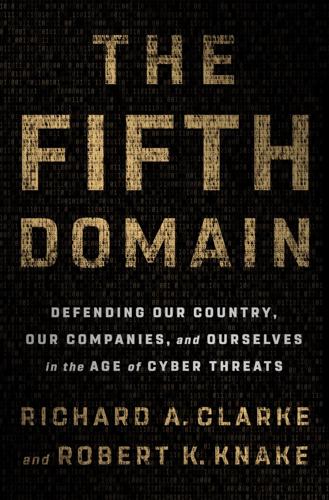
The Fifth Domain: Defending Our Country, Our Companies, and Ourselves in the Age of Cyber Threats
by
Richard A. Clarke
and
Robert K. Knake
Published 15 Jul 2019
This type of cloud computing is known as infrastructure as a service (IAAS). Amazon and other leaders have also started to sell platform-as-a-service offerings that provide the coding environments on which to build applications. Far and away the best way to rapidly increase security is to move from local computing to software as a service (SaaS). Salesforce, one of the early successful SaaS providers, never sold its customer relationship management platform as a software package you could install on your own computer. In fact, early on, Marc Benioff and his team made up company T-shirts that had a big no-smoking-style circle and slash symbol (think Ghostbusters) over the word “software.”
…
Secure Segmented Diverse-Source Microgrid (SSDM): A proposal made in this book to create a system to generate electricity locally, including using alternative energy sources. The SSDM would not be connected to regional or national networks. Security Operations Center (SOC): A physical location in a corporation where computer security specialists monitor the company’s network for signs of intrusion or other threats. Software as a Service (SaaS): A model in which a customer buys a subscription to use a piece of software for a finite period, contrasted with the license model in which the customer buys and then owns a copy of the software. For SaaS software models, the software may reside online rather than on the customers’ own machines.
…
L., Max, 264 9/11 attacks, 26, 88, 114, 123, 137, 155, 196, 222, 234 North American Electric Reliability Council (NERC), 158–59, 271, 304–5 North Korea, 18, 22, 26–28, 97, 187, 188, 195, 196, 198, 211 NotPetya, 8, 18–22, 26, 29, 37, 121 Nuclear Regulatory Commission, 115 nuclear weapons, 9, 11, 13, 27, 94, 115, 166, 182–83, 197, 240–41 Iran and, 20, 37–38, 85, 87, 97, 160, 193, 194, 270–71 missiles, 166, 303 Navy and, 150, 198, 201 Nudge (Thaler and Sunstein), 111 Obama, Barack, 6, 10, 11, 12, 21, 22, 25, 26, 33, 36, 44, 61, 77, 85–87, 89, 92, 96, 100, 109–11, 113, 124, 134–35, 152, 176, 177, 182, 193–94, 203, 205, 210, 221–23, 225, 233, 295 Odile, 149 offense and defense, 4, 5, 13, 35–39, 51, 83, 100, 102–4 collective defense, 58–61 cost and, 37 offensive advantage or preference, 4–10, 35, 37, 100–101, 297–98 Office of Information and Regulatory Affairs, 110–11 Office of Management and Budget (OMB), 111, 167, 175 Office of Personnel Management (OPM), 130, 168, 176 O’Grady, Stephen, 63 Ohio, 117 oil tankers, 116 Okta, 131, 133 OODA loop, 70, 72 Operation Glowing Symphony, 193 operations technology (OT), 270–74, 305 Oxford, Wil, 258 Ozment, Andy, 127 P5+1, 194, 305 Painter, Chris, 210 Palo Alto Networks, 60–61 Park Jin Hyok, 28 passports, 135 passwords, 45–46, 129–33, 251, 283–86, 292 patches, 275–76, 278–79, 305 Pate, Connor, 167–70, 173 Pearl Harbor, 123, 234, 235 People’s Liberation Army (PLA), 26, 28, 176, 305 personally identifiable information (PII), 115–16, 141, 283–84, 305 Petya, 18 phishing, 53–55, 59, 288 Point3 Security, 148–49 Policy Blueprint for Countering Authoritarian Interference in Democracies, 223–24 Politico, 97 Pollard, Neal, 295 Pompeo, Mike, 267–68 Ponemon Institute, 116 Postal Service, 135, 140 Power, Samantha, 111 power grids, 155–66, 190–91, 199, 270–72, 277 Russia and, 26, 159–61, 164–66, 200 secure segmented diverse-source microgrid, 164–65 presidential decision directives, 182, 305 Presidential Decision Directive 63, 10–11, 59, 89 privileged access management, 245, 305 “protect” function, 45, 66, 70 Putin, Vladimir, 220–23, 239, 241 QuAIL, 263 quantum computing, 6, 81, 241, 253–64, 280, 305–6 AI and, 263–64 encryption and, 260–62 quantum key distribution, 262 qubit (quantum bit), 253, 255–59 ransomware, 18, 38, 125–28, 188, 306 Rattray, Greg, 101–3 Raul, Alan Charles, 95 ReallyU, 138–40, 306 reconnaissance, 51, 52 “recover” function, 45, 66, 71 regulation, 109–20, 122–23, 139–40, 268–69, 278 Reitinger, Phil, 140 remote access tools, 38 Reno, Janet, 168 Republican Party, 11, 228, 268 resilience, 14–15, 42, 70–72, 82, 104, 105, 296–97 “respond” function, 45, 66, 71 Rice University, 80–81 Rickover, Hyman, 150, 198, 201 Rigetti, Chad, 253–54, 257, 259, 262–64 Rigetti Computing, 253–54, 259, 261 Rinard, Martin, 80 Rodin, Judith, 15 Rolling Stone, 207–8 Roosevelt, Franklin, 9 Rosenbach, Eric, 198, 221–22, 224–26, 233, 234 Rosenberg, Simon, 231–32 Rosenberger, Laura, 221–24, 231, 234 Rothrock, Ray, 14 Routh, Jim, 41–42, 133 RSA, 49, 69, 92, 102, 124–25, 129, 241, 306 Rubio, Marco, 223 Russia, 5, 17, 21, 28, 33, 46, 94, 97, 120, 121, 157, 163, 166, 182, 187, 188, 195, 196, 198, 200, 210, 219–34, 241, 248, 277 elections and, 26, 159, 160, 222–23, 227, 228, 230–35 GRU, 19–23, 25–26, 28, 165, 234, 277, 302 internet and, 206, 208, 210, 211, 219–20 power grid and, 26, 159–61, 164–66, 200 quantum computing and, 259, 260, 264 Ukraine and, 19–20, 25, 29, 157, 222 Salesforce, 75 Samsung, 24, 37 Saudi Arabia, 27, 274, 275, 277 Saudi Aramco, 27, 188 Savandi, Faramarz, 126 Schell, Roger, 103 Schengen Accord, 206–7, 212, 218, 306 for the internet, 205–18 Schmidt, Eric, 205 Schou, Corey, 167–69 Schulte, Joshua, 23–24 Schwarzkopf, Norman, Jr., 198 secure development life cycle (SDLC), 79, 80, 306 secure segmented diverse-source microgrid (SSDM), 164–65, 306 Securities and Exchange Commission, 8, 43, 87, 115 security information and event management, 71 security operations centers (SOCs), 71, 74, 153, 246, 248, 307 Seehra, Jasmeet, 111 Senate, U.S., 78, 232 Senior Cyber Service, 173, 178 sensors, 66–67, 83 Shanahan, Patrick, 181 Sharkseer, 95 Shavitt, Yuval, 120 Siemens, 37, 270 Silicon Valley, 5, 7, 63–64, 67, 73, 140 Singer, Peter, 101 smart cards, 129, 130, 133 smartphones, 131, 289–91 iPhones, 36, 68, 124–25, 292 Smith, Brad, 24 Snowden, Edward, 21, 23, 209 Social Security, 133, 134, 136, 138–40, 283 software, 21, 22 coding of, 78–82 security and, 288 software as a service (SaaS), 75, 76, 307 Sophos, 61, 288 South Korea, 27, 120, 188 Soviet Union, 13, 135, 182, 221, 234 Spamhaus, 73 spear phishing, 53–55, 59, 288 Stamos, Alex, 221, 228 State Department, 6, 25, 86, 93, 95, 136, 173, 202, 203, 210, 221–22 state governments, 117–18, 174–75, 177 Stein, Jill, 232 Stempfley, Bobbie, 151 stock transactions, 287 Stratton, Robert, 295 Stuxnet, 20–21, 37–38, 85, 160, 182, 193–94, 270–71, 277, 307 Sulmeyer, Michael, 100 Sunstein, Cass, 111 supervisory control and data acquisition (SCADA), 163, 270, 273, 307 Symantec, 24, 37, 46, 61, 83, 288 tabletop exercises (TTXs), 185–92, 198, 225–26, 307 Tailored Access Operations (TAO), 73, 148, 307 terrorism, 13, 110, 114–15, 123–25, 137, 156 9/11 attacks, 26, 88, 114, 123, 137, 155, 196, 222, 234 Terrorism Risk Insurance Act, 123 Thaler, Richard, 111 threat actors, 12, 41, 64, 77, 307 tractors, 269–70 Transportation, Department of, 278 Treasury Department, 21, 152 Trump, Donald, 11, 21, 27, 89, 92, 113, 123, 152, 160, 171, 181, 196, 203, 224, 267 TSA (Transportation Security Administration), 137, 140, 177 Twitter, 224, 231, 232, 276 two-factor authentication, 129, 131, 132, 285, 287, 308 Ukraine, 8, 19–20, 25, 29, 37, 157, 222, 269–70, 277 United Health, 40–41 United Kingdom, 17–18, 25, 96, 211–12, 220–21 United Nations (UN), 210 United States–Mexico–Canada Agreement, 213 U.S.
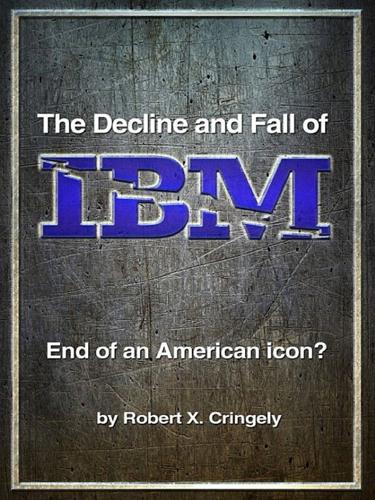
The Decline and Fall of IBM: End of an American Icon?
by
Robert X. Cringely
Published 1 Jun 2014
Software companies work best when they have a core set of excellent developers who are dedicated to the business. Randomly picking programmers from an ever-changing pool of talent rarely works well. IBM’s current approach has crushed the life from most of the software companies it has purchased. Another market trend is Software as a Service (SaaS). SaaS could be a big business opportunity for IBM’s Cloud, if IBM had software that customers wanted to use. IBM should invest more in software and make more software acquisitions. The company just needs to be a lot smarter about its investments. IBM needs to reach new customers and new markets.
…
IBM has a fighting chance to be profitable with Cloud, but the big question is "how much can IBM really make?" IBM needs to provide value-added services to its Cloud platform to increase both revenue and profit. There isn’t enough money in Platform as a Service (PaaS) for IBM to get a good return on its $1.2 billion investment. IBM needs to provide Software as a Service (SaaS), and to do that IBM needs to have software applications that the market needs. This market is not comprised of IBM’s huge legacy customers; it is the other 80 percent of the market, consisting of not-so-big companies that IBM has served poorly (if at all) in recent years. IBM will be selling its Cloud services to this new market, and IBM needs to invest in the software those new customers will want to use.
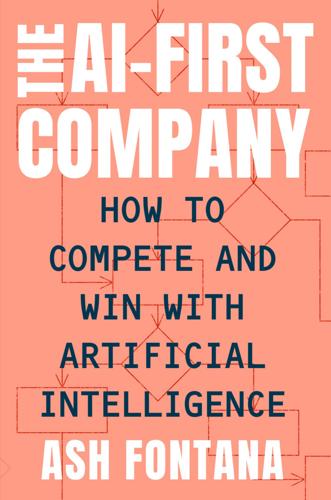
The AI-First Company
by
Ash Fontana
Published 4 May 2021
GLOSSARY A/B TEST: testing for user preferences by randomly showing two different variants of a product (i.e., variants A and B) to different groups of users; also known as a split test ACYCLIC: jumping between points rather than going through points in the same pattern each time AGENT-BASED MODEL: model that generates the actions of agents and interactions with other agents given the agent’s properties, incentives, and environmental constraints AGGREGATION THEORY: the theory that new entrants in a market can aggregate existing quantities in that market; for example, data points, to create new and valuable products APPLICATION PROGRAMMING INTERFACE: a set of functions that allows applications to communicate with other applications, either to use a feature or fetch data; effectively, a structured way for software to communicate with other pieces of software AREA UNDERNEATH THE CURVE (AUC): the integral of the ROC curve BLOCKCHAIN: decentralized and distributed public ledger of transactions CLUSTERING TOOL: using unsupervised machine learning to group similar objects COMPLEMENTARY DATA: new data that increases the value of existing data CONCAVE PAYOFF: decreasing dividends from using a product CONCEPT DRIFT: when the idea behind the subject of a prediction changes based on observations CONSUMER APP: software application primarily used by individuals (rather than businesses) CONTRIBUTION MARGIN: average price per unit minus labor and quality control costs associated with that unit CONVEX PAYOFF: increasing dividends from using a product COST LEADERSHIP: a form of competitive advantage that comes from having the lowest cost of production with respect to competitors in a given industry CRYPTOGRAPHY: writing and solving codes CRYPTO TOKEN: representation of an asset that is kept on a blockchain CUSTOMER RELATIONSHIP MANAGEMENT SOFTWARE: software that stores and manipulates data about customers CUSTOMER SUPPORT AGENT: employee that is paid to respond to customer support tickets CUSTOMER SUPPORT TICKET: message from user of a product requesting help in using that product CYBERNETICS: the science of control and communication in machines and living things DATA: facts and statistics collected together for reference or analysis DATA ANALYST: person who sets up dashboards, visualizes data, and interprets model outputs DATA DRIFT: (1) when the distribution on which a prediction is based changes such that it no longer represents observed reality; or (2) when the data on which a prediction is based changes such that some of it is no longer available or properly formed DATA ENGINEER: person who cleans data, creates automated data management tools, maintains the data catalogue, consolidates data assets, incorporates new data sources, maintains data pipelines, sets up links to external data sources, and more DATA EXHAUST: data collected when users perform operations in an application, for example clicking buttons and changing values DATA INFRASTRUCTURE ENGINEER: person who chooses the right database, sets up databases, moves data between them, and manages infrastructure cost and more DATA LABELING: adding a piece of information to a piece of data DATA LEARNING EFFECT: the automatic compounding of information DATA LEARNING LOOP: the endogenous and continuous generation of proprietary data from an intelligent system that provides the basis of the next generation of that intelligent system DATA NETWORK: set of data that is built by a group of otherwise unrelated entities, rather than a single entity DATA NETWORK EFFECT: the increase in marginal benefit that comes from adding a new data point to an existing collection of data; the marginal benefit is defined in terms of informational value DATA PRODUCT MANAGER: person who incorporates the data needs of the model with the usability intentions of the product designers and preferences of users in order to prioritize product features that collect proprietary data DATA SCIENTIST: person who sets up and runs data science experiments DATA STEWARD: person responsible for ensuring compliance to data storage standards DEEP LEARNING: artificial neural network with multiple layers DEFENSIBILITY: the relative ability to protect a source of income; for example, an income-generating asset DIFFERENTIAL PRIVACY: system for sharing datasets without revealing the individual data points DIMENSIONALITY REDUCTION: transforming data (using a method such as principal component analysis) to reduce the measures associated with each data point DISRUPTION THEORY: the theory that new entrants in a market can appropriate customers from incumbent suppliers by selling a specialized product to a niche segment of customers at a fraction of the cost of the incumbent’s product DRIFT: when a model’s concept or data diverges from reality EDGE: connections between nodes; also called a link or a line ENTERPRISE RESOURCE PLANNING PRODUCT: software that collects and thus contains data about product inventory ENTRY-LEVEL DATA NETWORK EFFECT: the compounding marginal benefit that comes from adding new data to an existing collection of data; the marginal benefit is defined in terms of informational value to the model computed over that data EPOCH: completed pass of the entire training dataset by the machine learning model ETL (EXTRACT, TRANSFORM, AND LOAD): the three, main steps in moving data from one place to another EXAMPLE: a single input and output pair from which a machine learning model learns FEATURE: set of mathematical functions that are fed data to output a prediction FEDERATED LEARNING: method for training machine learning models across different computers without exchanging data between those computers FIRST-MOVER: company that collects scarce assets, builds technological leadership, and creates switching costs in a market by virtue of entering that market before other companies GAUSSIAN MIXTURE MODEL: probabilistic model representing a subset within a set, assuming a normal distribution, without requiring the observed data match the subset GLOBAL, MULTIUSER MODEL: model that makes predictions about something common to all customers of a given company; this is generally trained on data aggregated across all customers GRADIENT BOOSTED TREE: method for producing a decision tree in multiple stages according to a loss function GRAPH: mathematical structure made up of nodes and edges that is typically used to model interactions between objects HEURISTICS: knowledge acquired by doing HISTOGRAM: diagram consisting of rectangles whose area is proportional to the frequency of a variable and whose width is equal to the class interval HORIZONTAL INTEGRATION: the combination in one product of multiple industry-specific functions normally operated by separate products HUMAN-IN-THE-LOOP SYSTEM: machine learning system that requires human input to generate an output HYPERPARAMETER: parameter that is used to control the machine learning model HYPERTEXT MARKUP LANGUAGE: programming language specifically for writing documents to be displayed in a web browser INCUMBENT: existing market leader INDEPENDENT SOFTWARE VENDOR: a company that publishes software INFORMATION: data that resolves uncertainty for the receiver INSOURCING: finding the resources to complete a task within an existing organization such that it’s not necessary to contract new resources to complete that task INTEGRATOR: software company that builds tools to connect data sources, normalizes data across sources, and updates connections as these sources change INTELLIGENT APPLICATION: application that runs machine learning algorithms over data to make predictions or decisions INTERACTIVE MACHINE LEARNING: machine learning models that collect data from a user, put that data into a model, present the model output back to the user, and so on K-MEANS: unsupervised machine learning method to group objects in a number of clusters based on the cluster with the center point, or average, that’s closest to the object LABEL: the output of a machine learning system based on learning from examples LAYER: aggregation of neurons; layers can be connected to other layers LEAN AI: the process of building a small but complete and accurate AI to solve a specific problem LEARNING EFFECT: the process through which knowledge accumulation leads to an economic benefit LEGACY APPLICATION: application already in use LOSS: the quantum of how right or wrong a model was in making a given prediction LOSS FUNCTION: mathematical function that determines the degree to which the output of a model is incorrect MACHINE LEARNING: computable algorithms that automatically improve with the addition of novel data MACHINE LEARNING ENGINEER: person who implements, trains, monitors, and fixes machine learning models MACHINE LEARNING MANAGEMENT LOOP: automated system for continuous incorporation of real-world data into machine learning models MACHINE LEARNING RESEARCHER: person who sets up and runs machine learning experiments MARKETING SEGMENTATION: dividing customers into groups based on similarity MINIMUM VIABLE PRODUCT: the minimum set of product features that a customer needs for a product to be useful MOAT: accumulation of assets that form a barrier to other parties that may reduce the income-generating potential of those assets MONITORING: observing a product to ensure both quality and reliability NETWORK EFFECT: the increase in marginal benefit that comes from adding a new node to an existing collection of nodes; the marginal benefit is defined in terms of utility to the user of the collection NEURAL NETWORK: collection of nodes that are connected to each other such that they can transmit signals to each other across the edges of the network, with the strength of the signal depending on the weights on each node and edge NEXT-LEVEL DATA NETWORK EFFECT: the compounding marginal benefit that comes from adding new data to an existing collection of data; the marginal benefit is defined in terms of the rate of automatic data creation by the model computed over that data NODE: discrete part of a network that can receive, process, and send signals; also called a vertex or a point OPTICAL CHARACTER RECOGNITION SOFTWARE: software that turns images into machine-readable text PARETO OPTIMAL SOLUTION: achieving 80 percent of the optimal solution for 20 percent of the work PARTIAL PLOT: graph that shows the effect of adding an incremental variable to a function PERSONALLY IDENTIFIABLE INFORMATION: information that can be linked to a real person PERTURBATION: deliberately modifying an object, e.g., data POWER GENERATOR: user that contributes an inordinate amount of data with respect to other users POWER USER: user that uses a product an inordinate amount with respect to other users PRECISION: the number of relevant data points retrieved by the model over the total number of data points PREDICTION USABILITY THRESHOLD: the point at which a prediction becomes useful to a customer PRICING: product usage; for example, hours spent using a product PROOF OF CONCEPT: a project jointly conducted by potential customers and vendors of a software product to prove the value theoretically provided by that, in practice PROPRIETARY INFORMATION: information that is owned by a specific entity and not in the public domain QUERY LANGUAGE: programming language used to retrieve data from a database RANDOM FOREST: method for analyzing data that constructs multiple decision trees and outputs the class of objects that occurs most often among all the objects or the average prediction across all of the decision trees RECALL: the number of relevant data points retrieved by the model over the total number of relevant data points RECEIVER OPERATING CHARACTERISTIC (ROC) CURVE: plot that shows how well the model performed at different discrimination thresholds, e.g., true and false positive rates RECURSION: repeated application of a method REINFORCEMENT LEARNING: ML that learns from objectives RETURN ON INVESTMENT (ROI): calculated by dividing the return from using an asset by the investment in that asset ROI-BASED PRICING: pricing that is directly correlated with a rate of return on an investment SCALE EFFECT: the increase in marginal benefit or reduction in marginal cost that comes from having a higher quantity of the asset or capability that generates the benefit SCATTER PLOT: graph in which the values of two variables are plotted along two axes, the pattern of the resulting points revealing any correlation present SCHEME: the form common to all values in a particular table in a database SECURE MULTIPARTY COMPUTATION: method for jointly computing inputs while keeping the inputs private from the participating computers SENSOR NETWORK: a collection of devices that collect data from the real world SIMULATION: method that generates inputs to put through a program to see if that program fails to execute or generates inaccurate outputs SOFTWARE-AS-A-SERVICE (SAAS): method of delivering software online and licensing that software on a subscription basis SOFTWARE DEVELOPMENT KIT: tool made by software developers to allow other software developers to build on top of or alongside their software STATISTICAL PROCESS CONTROL: quality control process that is based on statistical methods SUPERVISED MACHINE LEARNING: ML that learns from inputs given outputs SUPPORT VECTOR MACHINE: supervised learning model that classifies new data points by category SYSTEM OF ENGAGEMENT: system that actively (e.g., through user input) aggregates information about a particular business function SYSTEM OF RECORD: system that passively aggregates information about a particular business function SYSTEMS INTEGRATOR: an entity that installs new software systems such that they function with customers’ existing systems TALENT LOOP: the compounding competitive advantage in attracting high-quality personnel that comes from having more high quality data than competitors TRANSACTIONAL PRICING: pricing that is directly correlated with the quantum of units transacted through a product, for example, number of processed data points or computation cycles UNSUPERVISED MACHINE LEARNING: ML that learns from inputs without outputs USAGE-BASED PRICING: pricing that is directly correlated with the quantum of product usage; for example, hours of time spent using a product USER INTERFACE: set of objects that exist in software that are manipulated to initiate a function in that software VALUE CHAIN: the process by which a company adds value to an asset; for example, adding value to a data point by processing that data into information, and that information into a prediction VARIABLE IMPORTANCE PLOT: list of the most important variables in a function in terms of their contribution to a given prediction, or predictive power VERSIONING: keeping a copy of every form of a model, program, or dataset VERTICAL INTEGRATION: the combination in one company of multiple stages of production (or points on a value chain) normally operated by separate firms VERTICAL PRODUCT: software product that is only relevant to users in a particular industry WATERFALL CHART: data visualization that shows the result of adding or subtracting sequential values in adjacent columns WEB CRAWLER: program that systematically queries webpages or other documents on the internet; strips out the unnecessary content on those pages, such as formatting; grabs salient data, puts it in a standard document format (e.g., JSON), and puts it in a private data repository WEIGHT: the relative measure of strength ascribed to nodes and edges in a network; this can be automatically or manually adjusted after learning of a more optimal weight WORKFLOW APPLICATION: software that takes a sequence of things that someone does in the real world and puts those steps into an interface that allows for data input at each step ZETTABYTE: 10^21 bytes or 1 trillion gigabytes A B C D E F G H I J K L M N O P Q R S T U V W X Y Z INDEX The page numbers in this index refer to the printed version of this book.
…
A/B test, 271 accessibility of data, 72, 107 accuracy, 175, 203–4 in proof of concept phase, 59–60 active learning-based systems, 94–95 acyclic, 150, 271 advertising, 227, 240 agent-based models (ABMs), 103–5, 271 simulations versus, 105 aggregated data, 81, 83 aggregating advantages, 222–65 branding and, 255–56 data aggregation and, 241–45 on demand side, 225 disruption and, 239–41 first-mover advantage and, 253–55 and integrating incumbents, 244–45 and leveraging the loop against incumbents, 256–61 positioning and, 245–56 ecosystem, 251–53 staging, 249–51 standardization, 247–51 storage, 246–47 pricing and, 236–39 customer data contribution, 237 features, 238–39 transactional, 237, 281 updating, 238 usage-based, 237–38, 281 on supply side, 224–25 talent loop and, 260–61 traditional forms of competitive advantage versus, 224–25 with vertical integration, see vertical integration aggregation theory, 243–44, 271 agreement rate, 216 AI (artificial intelligence), 1–3 coining of term, 5 definitions and analogies regarding, 15–16 investment in, 7 lean, see Lean AI AI-First Century, 3 first half of (1950–2000), 3–9 cost and power of computers and, 8 progression to practice, 5–7 theoretical foundations, 4–5 second half of (2000–2050), 9 AI-First companies, 1, 9, 10, 44 eight-part framework for, 10–13 learning journey of, 44–45 AI-First teams, 127–42 centralized, 138–39 decentralized, 139 management of, 135–38 organization structure of, 138–39 outsourcing, 131 support for, 134–35 when to hire, 130–32 where to find people for, 133 who to hire, 128–30 airlines, 42 Alexa, 8, , 228, 230 algorithms, 23, 58, 200–201 evolutionary, 150–51, 153 alliances of corporate and noncorporate organizations, 251 Amazon, 34, 37, 84, 112, 226 Alexa, 8, 228, 230 Mechanical Turk, 98, 99, 215 analytics, 50–52 anonymized data, 81, 83 Apple, 8, 226 iPhone, 252 application programming interfaces (APIs), 86, 118–22, 159, 172, 236, 271 applications, 171 area underneath the curve (AUC), 206, 272 artificial intelligence, see AI artificial neural network, 5 Atlassian Corporation, 243 augmentation, 172 automation versus, 163 availability of data, 72–73 Babbage, Charles, 2 Bank of England, 104–5 Bayesian networks, 150, 201 Bengio, Yoshua, 7 bias, 177 big-data era, 28 BillGuard, 112 binary classification, 204–6 blockchain, 109–10, 117, 272 Bloomberg, 73, 121 brain, 5, 15, 31–32 shared, 31–33 branding, 256–57 breadth of data, 76 business goal, in proof of concept phase, 60 business software companies, 113 buying data, 119–22 data brokers, 119–22 financial, 120–21 marketing, 120 car insurance, 85 Carnegie, Andrew, 226 cars, 6, 254 causes, 145 census, 118 centrifugal process, 49–50 centripetal process, 50 chess, 6 chief data officer (CDO), 138 chief information officer (CIO), 138 chief technology officer (CTO), 139 Christensen, Clay, 239 cloud computing, 8, 22, 78–79, 87, 242, 248, 257 Cloudflare, 35–36 clustering, 53, 64, 95, 272 Coase, Ronald, 226 compatibility, 251–52 competitions, 117–18 competitive advantages, 16, 20, 22 in DLEs, 24, 33 traditional forms of, 224–25 see also aggregating advantages complementarity, 253 complementary data, 89, 124, 272 compliance concerns, 80 computer chips, 7, 22, 250 computers, 2, 3, 6 cost of, 8–9 power of, 7, 8, 19, 22 computer vision, 90 concave payoffs, 195–98, 272 concept drift, 175–76, 272 confusion matrix, 173–74 consistency, 256–57 consultants, 117–18, 131 consumer apps, 111–13, 272 consumer data, 109–14 apps, 111–13 customer-contributed data versus, 109 sensor networks, 113–14 token-based incentives for, 109–10 consumer reviews, 29, 43 contractual rights, 78–82 clean start advantage and, 78–79 negotiating, 79 structuring, 79–82 contribution margin, 214, 272 convex payoffs, 195–97, 202, 272 convolutional neural networks (CNNs), 151, 153 Conway, John, 104 cost of data labeling, 108 in ML management, 158 in proof of concept phase, 60 cost leadership, 272 DLEs and, 39–41 cost of goods sold (COGS), 217 crawling, 115–16, 281 Credit Karma, 112 credit scores, 36–37 CRM (customer relationship management), 159, 230–31, 255, 260, 272 Salesforce, 159, 212, 243, 248, 258 cryptography, 272 crypto tokens, 109–10, 272 CUDA, 250 customer-generated data, 77–91 consumer data versus, 109 contractual rights and, 78–82 clean start advantage and, 78–79 negotiating, 79 structuring, 79–82 customer data coalitions, 82–84 data integrators and, 86–89 partnerships and, 89–91 pricing and, 237 workflow applications for, 84–86 customers costs to serve, 242 direct relationship with, 242 needs of, 49–50 customer support agents, 232, 272 customer support tickets, 260, 272 cybernetics, 4, 273 Dark Sky, 112, 113 DARPA (Defense Advanced Research Projects Agency), 5 dashboards, 171 data, 1, 8, 69, 273 aggregation of, 241–45 big-data era, 28 complementary, 89 harvesting from multiple sources, 57 incomplete, 178 information versus, 22–23 missing sources of, 177 in proof of concept phase, 60 quality of, 177–78 scale effects with, 22 sensitive, 57 starting small with, 56–58 vertical integration and, 231–32 data acquisition, 69–126, 134 buying data, 119–22 consumer data, 109–14 apps, 111–13 customer-contributed data versus, 109 sensor networks, 113–14 token-based incentives for, 109–10 customer-generated data, see customer-generated data human-generated data, see human-generated data machine-generated data, 102–8 agent-based models, 103–5 simulation, 103–4 synthetic, 105–8 partnerships for, 89–91 public data, 115–22 buying, see buying data consulting and competitions, 117–18 crawling, 115–16, 281 governments, 118–19 media, 118 valuation of, 71–77 accessibility, 72, 107 availability, 72–73 breadth, 76 cost, 73 determination, 74–76 dimensionality, 75 discrimination, 72–74 fungibility, 74 perishability and relevance, 74–75, 201 self-reinforcement, 76 time, 73–74 veracity, 75 volume of, 76–77 data analysts, 128–30, 132, 133, 137, 273 data as a service (DaaS), 116, 120 databases, 258 data brokers, 119–22 financial, 120–21 marketing, 120 data cleaning, 162–63 data distribution drift, 178 data drift, 176, 273 data-driven media, 118 data engineering, 52 data engineers, 128–30, 132, 133, 137, 161, 273 data exhaust, 80, 257–58, 273 data infrastructure engineers, 129–32, 137, 273 data integration and integrators, 86–90, 276 data labeling, 57, 58, 92–100, 273 best practices for, 98 human-in-the-loop (HIL) systems, 100–101, 276 management of, 98–99 measurement in, 99–100 missing labels, 178 outsourcing of, 101–2 profitability metrics and, 215–16 tools for, 93–97 data lake, 57, 163 data learning effects (DLEs), 15–47, 48, 69, 222, 273 competitive advantages of, 24, 33 data network effects, 19, 26–33, 44, 273 edges of, 24 entry-level, 26–29, 31–33, 36–37, 274 network effects versus, 24–25 next-level, 26–27, 29–33, 36–37, 278 what type to build, 33 economies of scale in, 34 formula for, 17–20 information accumulation and, 21 learning effects and, 20–21 limitations of, 21, 42–43 loops around, see loops network effects and, 24–26 powers of, 34–42 compounding, 36–38 cost leadership, 39–41 flywheels, 37–38 price optimization, 41–42 product utility, 35–36 winner-take-all dynamics, 34–35 product value and, 39 scale effects and, 21–23 variety and, 34–35 data learning loops, see loops data lock-in, 247–48 data networks, 109–10, 143–44, 273 normal networks versus, 26 underneath products, 25–26 data pipelines, 181, 216 breaks in, 87, 181 data platform, 57 data processing capabilities (computing power), 7, 8, 19, 22 data product managers, 129–32, 274 data rights, 78–82, 246 data science, 52–56 decoupling software engineering from, 133 data scientists, 54–56, 117, 128–30, 132–39, 161, 274 data stewards, 58, 274 data storage, 57, 81, 246–47, 257 data validators, 161 data valuation, 71–77 accessibility in, 72, 107 availability in, 72–73 breadth in, 76 cost in, 73 determination in, 74–76 dimensionality in, 75 discrimination in, 72–74 fungibility in, 74 perishability and relevance in, 74–75, 201 self-reinforcement in, 76 time in, 73–74 veracity in, 75 decision networks, 150, 153 decision trees, 149–50, 153 deduction and induction, 49–50 deep learning, 7, 147–48, 274 defensibility, 200, 274 defensible assets, 25 Dell, Michael, 226 Dell Technologies, 226 demand, 225 denial-of-service (DoS) attacks, 36 designers, 129 differential privacy, 117, 274 dimensionality reduction, 53, 274 disruption, 239–41 disruption theory, 239, 274 distributed systems, 8, 9 distribution costs, 243 DLEs, see data learning effects DoS (denial-of-service) attacks, 36 drift, 175–77, 203, 274 concept, 175–76 data, 176 minimizing, 201 e-commerce, 29, 31, 34, 37, 41, 84 economies of scale, 19, 34 ecosystem, 251–52 edges, 24, 274 enterprise resource planning (ERP), 161, 250, 274 entry-level data network effects, 26–29, 31–33, 36–37, 274 epochs, 173, 275 equity capital, 230 ETL (extract, transform, and load), 58, 275 evolutionary algorithms, 150–51, 153 expected error reduction, 96 expected model change, 96 Expensify, 85–86 Facebook, 25, 43, 112, 119, 122 features, 63–64, 145, 275 finding, 64–65 pricing and, 238–39 federated learning, 117, 275 feedback data, 36, 199–200 feed-forward networks, 151, 153 financial data brokers for, 120–21 stock market, 72, 74, 120–21 first-movers, 253–55, 275 flywheels, 37–38, 243–44 Ford, Henry, 49 fungibility of data, 74 Game of Life, 104 Gaussian mixture model, 275 generative adversarial networks (GANs), 152, 153 give-to-get model, 36 global multiuser models, 275 glossary, 271–82 Google, 111–12, 115, 195, 241, 251, 253–54 governments, 118–19 gradient boosted tree, 53, 275 gradient descent, 208 graph, 275 Gulf War, 6 hedge funds, 227 heuristics, 139, 231, 275 Hinton, Geoffrey, 7 histogram, 53, 275 holdout data, 199 horizontal products, 210–12, 276 HTML (hypertext markup language), 116, 276 human-generated data, 91–102 data labeling in, 57, 58, 92–100, 273 best practices for, 98 human-in-the-loop (HIL) systems, 100–101, 276 management of, 98–99 measurement in, 99–100 missing labels, 178 outsourcing of, 101–2 profitability metrics and, 215–16 tools for, 93–97 human learning, 16–17 hyperparameters, 173, 276 hypertext markup language (HTML), 116, 276 IBM (International Business Machines), 5–8, 255 image recognition, 76–77, 146 optical character, 72, 278 incumbents, 276 integrating, 245–46 leveraging the loop against, 256–61 independent software vendors (ISVs), 161, 248, 276 induction and deduction, 49–50 inductive logic programming (ILP), 149, 153 Informatica, 86 information, 1, 2, 276 data versus, 22–23 informational leverage, 3 Innovator’s Dilemma, The (Christensen), 239 input cost analysis, 215–16 input data, 199 insourcing, 102, 276 integration, 86–90, 276 predictions and, 171 testing, 174 integrations-first versus workflow-first companies, 88–89 intellectual leverage, 3 intellectual property (IP), 25, 251 intelligence, 1, 2, 5, 15, 16 artificial, see AI intelligent applications, 257–60, 276 intelligent systems, 19 interaction frequency, 197 interactive machine learning (IML), 96–97, 276 International Telecommunications Union (ITU), 250–51 Internet, 8, 19, 32, 69, 241–42, 244 inventory management software, 260 investment firms, 232 iPhone, 252 JIRA, 243 Kaggle, 9, 56, 117 Keras, 251 k-means, 276 knowledge economy, 21 Kubernetes, 251 language processing, 77, 94 latency, 158 layers of neurons, 7, 277 Lean AI, 48–68, 277 customer needs and, 49–50 decision tree for, 50–52 determining customer need for AI, 50–60 data and, 56–58 data science and, 54–56 sales and, 58–60 statistics and, 53–54 lean start-up versus, 61–62 levels in, 65–66 milestones for, 61 minimum viable product and, 62–63 model features lean start-ups, 61–62 learning human formula for, 16–17 machine formula for, 17–20 learning effects, 20–22, 277 moving beyond, 20–21 legacy applications, 257, 277 leverage, 3 linear optimization, 42 LinkedIn, 122 loans, 35, 37, 227 lock-in, 247–48 loops, 187–221, 273 drift and, 201 entropy and, 191–92 good versus bad, 191–92 metrics for measuring, see metrics moats versus, 187–88, 192–94 physics of, 190–92 prediction and, 202–3 product payoffs and, 195–98, 202 concave, 195–98 convex, 195–97, 202 picking the product to build, 198 repeatability in, 188–89 scale and, 198–201, 203 and data that doesn’t contribute to output, 199–200 loss, 207–8, 277 loss function, 275, 277 machine-generated data, 102–8 agent-based models, 103–5 simulation, 103–4 synthetic, 105–8 machine learning (ML), 9, 145–47, 277 types of, 147–48 machine learning engineers, 39, 56, 117–18, 129, 130, 132, 138, 139, 161, 277 machine learning management loop, 277 machine learning models (ML models), 9, 26, 27, 31, 52–56, 59, 61, 134 customer predictions and, 80–81 features of, 61, 63 machine learning models, building, 64–65, 143–54 compounding, 148–52 diverse disciplines in, 149–51 convolutional neural networks in, 151, 153 decision networks in, 150, 153 decision trees in, 149–50, 153 defining features, 146–47 evolutionary algorithms in, 150–51, 153 feed-forward networks in, 151, 153 generative adversarial networks in, 152, 153 inductive logic programming in, 149, 153 machine learning in, 151–52 primer for, 145–47 recurrent neural networks in, 151, 153 reinforcement learning in, 152, 153 statistical analysis in, 149, 153 machine learning models, managing, 155–86 acceptance, 157, 162–66 accountability and, 164 and augmentation versus automation, 163 budget and, 164 data cleaning and, 162–63 distribution and, 165 executive education and, 165–66 experiments and, 165 explainability and, 166 feature development and, 163 incentives and, 164 politics and, 163–66 product enhancements and, 165 retraining and, 163 and revenues versus costs, 164 schedule and, 163 technical, 162–63 and time to value, 164 usage tracking and, 166 decentralization versus centralization in, 156 experimentation versus implementation in, 155 implementation, 158–66 data, 158–59 security, 159–60 sensors, 160 services, 161 software, 159 staffing, 161–162 loop in, 156, 166–81 deployment, 171–72 monitoring, see monitoring model performance training, 168–69 redeploying, 181 reproducibility and, 170 rethinking, 181 reworking, 179–80 testing, 172–74 versioning, 169–70, 281 ROI in, 164, 176, 181 testing and observing in, 156 machine learning researchers, 129–34, 135–36, 138, 277 management of AI-First teams, 135–38 of data labeling, 98–99 of machine learning models, see machine learning models, managing manual acceptance, 208–9 manufacturing, 6 marketing, customer data coalitions and, 83 marketing segmentation, 277 McCulloch, Warren, 4–5 McDonald’s, 256 Mechanical Turk, 98, 99, 215 media, 118 medical applications, 90–91, 145, 208 metrics, 203 measurement, 203–9 accuracy, 203–4 area underneath the curve, 206, 272 binary classification, 204–6 loss, 207–8 manual acceptance, 208–9 precision and recall, 206–7 receiver operating characteristic, 205–6, 279 usage, 209 profitability, 209–18 data labeling and, 215–16 data pipes and, 216 input cost analysis, 215–16 research cost analysis, 217–18 unit analysis, 213–14 and vertical versus horizontal products, 210–12 Microsoft, 8, 247 Access, 257 Outlook, 252 military, 6, 7 minimum viable product (MVP), 62–63, 277 MIT (Massachusetts Institute of Technology), 4, 5 ML models, see machine learning models moats, 277 loops versus, 187–88, 192–94 mobile phones, 113 iPhone, 252 monitoring, 277 monitoring model performance, 174–78 accuracy, 175 bias, 177 data quality, 177–78 reworking and, 179–80 stability, 175–77 MuleSoft, 86, 87 negotiating data rights, 79, 80 Netflix, 242, 243 network effects, 15–16, 20, 22, 23, 44, 278 compounding of, 36 data network effects versus, 24–25 edges of, 24 limits to, 42–43 moving beyond, 24–26 products with versus without, 26 scale effects versus, 24 traditional, 27 value of, 27 networks, 7, 15, 17 data networks versus, 26 neural networks, 5, 7, 8, 19, 23, 53, 54, 277–78 neurons, 5, 7, 15 layers of, 7, 276 next-level data network effects, 26–27, 29–33, 36–37, 278 nodes, 21, 23–25, 27, 44, 278 NVIDIA, 250 Obama administration, 118 Onavo, 112 optical character recognition software, 72, 278 Oracle, 247, 248 outsourcing, 216 data labeling, 101–2 team members, 131 overfitting, 82 Pareto optimal solution, 56, 278 partial plots, 53, 278 payoffs, 195–98 concave, 195–98 convex, 195–97, 202 perceptron algorithm, 5 perishability of data, 74–75, 201 personalization, 255–56 personally identifiable information (PII), 81, 278 personnel lock-in, 248 perturbation, 178, 278 physical leverage, 3 Pitts, Walter, 4–5 POC (proof of concept), 59–60, 63, 278 positioning, 245–56 power generators, 209, 278 power teachers, 209 precision, 278 precision and recall, 206–7 prediction usability threshold (PUT), 62–64, 90, 91, 173, 200–202, 279 predictions, 34–35, 48, 63, 65, 148, 202–3 predictive pricing, 41, 42 prices charged by data vendors, 73 pricing of AI-First products, 236–39 customer data contribution and, 237 features and, 238–39 transactional, 237, 280 updating and, 238 usage-based, 237–38, 281 of data integration products, 87 optimization of, 41–42 personalized, 41 predictive, 41, 42 ROI-based, 235–36, 279 Principia Mathematica, 4 prisoner’s dilemma, 104 probability, in data labeling, 107 process automation, 6 process lock-in, 248 products, 59 features of, 61, 63 lock-in and, 248 utility of, 35–36 value of, 39 profit, 213 profitability metrics, 209–18 data labeling and, 215–16 data pipes and, 216 input cost analysis, 215–16 research cost analysis, 217–18 unit analysis, 213–14 and vertical versus horizontal products, 210–12 proof of concept (POC), 59–60, 63, 278 proprietary information, 44, 279 feedback data, 199–200 protocols, 248 public data, 115–22 buying, see buying data consulting and competitions, 117–18 crawling, 115–16, 281 governments, 118–19 media, 118 PUT (prediction usability threshold), 62–64, 90, 91, 173, 200–202, 278 quality, 175, 177–78 query by committee, 96 query languages, 279 random forest, 53, 64, 279 recall, 279 receiver operating characteristic (ROC) curve, 205–6, 279 recurrent neural networks (RNNs), 151, 153 recursion, 150, 279 regression, 64 reinforcement learning (RL), 103, 147–48, 152, 153, 279 relevance of data, 74–75 reliability, 175 reports, 171 research and development (R & D), 42 cost analysis, 217–18 revolutionary products, 252 robots, 6 ROI (return on investment), 55, 63–65, 93, 164, 176, 181, 198, 279 pricing based on, 235–36, 279 Russell, Bertrand, 4 sales, 58–60 Salesforce, 159, 212, 243, 248, 258 SAP (Systems Applications and Products in Data Processing), 6, 159, 161, 247, 248 SAS, 253 scalability, in data labeling, 106 scale, 20–22, 227, 279 economies of, 19, 34 loops and, 198–200, 203 in ML management, 158 moving beyond, 21–23 network effects versus, 24 scatter plot, 53, 280 scheme, 279 search engines, 31 secure multiparty computation, 117, 279 security, 159 Segment, 87–88 self-reinforcing data, 76 selling data, 122 sensors, 113–14, 160, 280 shopping online, 29, 31, 34, 37, 41, 84 simulation, 103–4, 280 ABMs versus, 105 social networks, 16, 20, 44 Facebook, 25, 43, 112, 119, 122 LinkedIn, 122 software, 159 traditional business models for, 233–34 software-as-a-service (SaaS), 87, 280 software development kits (SDKs), 112, 280 software engineering, decoupling data science from, 133 software engineers, 139, 134–37 Sony, 7 speed of data labeling, 108 spreadsheets, 171 Square Capital, 35 stability, 175–77 staging, 249–51 standardization, 247–48, 249–50 statistical analysis, 149, 153 statistical process control (SPC), 156, 173, 280 statistics, 53–54 stocks, 72, 74, 120–21 supervised machine learning, 147–48, 280 supply, 225 supply-chain tracking, 260 support vector machines, 280 synthetic data, 105–8, 216 system of engagement, 280 system of record, 243, 281 systems integrators (SIs), 161, 248, 281 Tableau, 253 talent loop, 260–61, 281 Taylor, Frederick W., 6 teams in proof of concept phase, 60 see also AI-First teams telecommunications industry, 250–51 telephones mobile, 113 iPhone, 253 networks, 23–25 templates, 171 temporal leverage, 3 threshold logic unit (TLU), 5 ticker data, 120–21 token-based incentives, 109–10 tools, 2–3, 93–97 training data, 199 transactional pricing, 237, 280 transaction costs, 243 transfer learning, 147–48 true and false, 204–6 Turing, Alan, 5 23andMe, 112 Twilio, 87 uncertainty sampling, 96 unit analysis, 213–14 United Nations, 250 unsupervised machine learning, 53, 147–48, 281 Upwork, 99 usability, 255–56 usage-based pricing, 237–38, 281 usage metrics, 209 user interface (UI), 89, 159, 281 utility of network effects, 42 of products, 35–36 validation data, 199 value chain, 18–19, 281 value proposition, 59 values, missing, 178 variable importance plots, 53, 281 variance reduction, 96 Veeva Systems, 212 vendors, 73, 161 data, prices charged by, 73 independent software, 161, 248, 276 lock-in and, 247–48 venture capital, 230 veracity of data, 75 versioning, 169–70, 281 vertical integration, 226–37, 239, 244, 252, 281 vertical products, 210–12, 282 VMWare, 248 waterfall charts, 282 Web crawlers, 115–16, 282 weights, 150, 281 workflow applications, 84–86, 253, 259, 282 workflow-first versus integrations-first companies, 88–89 yield management systems, 42 Zapier, 87 Zendesk, 233 zettabyte, 8, 282 Zetta Venture Partners, 8–9 A B C D E F G H I J K L M N O P Q R S T U V W X Y Z ABOUT THE AUTHOR Ash Fontana became one of the most recognized startup investors in the world after launching online investing at AngelList.
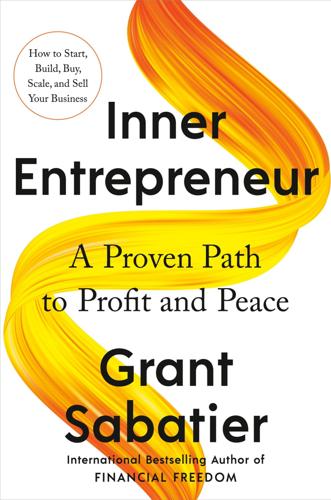
Inner Entrepreneur: A Proven Path to Profit and Peace
by
Grant Sabatier
Published 10 Mar 2025
Price your fixed fee to have dependable revenue and a higher profit margin than you could earn by the hour. Content-Writing Packages—Offer content-creation services with packages for blog posts, articles, or website copy, each with a set word count and turnaround time. SaaS Business A Software as a Service (SaaS) business sells software that customers access over the internet through a subscription. Popular SaaS businesses include Dropbox, Slack, Salesforce, and many others. As with any subscription business, a SaaS business can generate significant recurring revenue if you find product-market fit and add value to users.
…
If it’s less than 100 percent, you’re losing customers and revenue faster than you are picking up new customers and revenue. Anything below 100 percent means your business is in trouble. If it’s over 100 percent, you’re acquiring more new net revenue than you are losing. The higher the percentage, the stronger the subscription business. Some of the most profitable examples are Software as a Service (SaaS) businesses, which, of course, are digital software. Slack, the project management software, had an NDR of 143 percent when it went public in 2019, and Asana, the project management tool, had an NDR of 120 percent when it went public in 2020. The average for a public SaaS company is about 115 percent.
…
See also buffer funds scale and scalability and advantages of holding companies, 318 and buying an existing business, 340, 344 and digital advertising, 236–37 and digital product businesses, 49 and experimental entrepreneurs, 13 and productized service businesses, 63–66 and standardizing business-management systems, 211–15 S corporations, 144 search engine optimization (SEO) and advantages of holding companies, 322 and buying an existing business, 371 and expense reduction, 142 and growing your business, 108–10 and hiring employees, 272 and selling your business, 293 and traditional media, 252 and value of great content, 97, 104, 161 and website content, 118 seasonal businesses and products, 49–50, 52, 56 See’s Candies, 346 seller’s discretionary earnings (SDE), 302, 329 selling your business and author’s entrepreneurial background, 283–85 building a business to sell, 287–90 and deal terms, 301–4 finding potential buyers, 296–98 key metrics and processes, 290–96 meaning and math of, 284–87 and perceived value, 298–300 and service businesses, 59 timing of, 308–10 and total purchase price, 304–8 Semrush, 76, 112 service businesses, 36, 63–67, 85–86, 321 Shah, Tanvi, 46 Shopify, 55, 124–25, 205 Simplified Employee Pension Individual Retirement Account (SEP-IRA), 144, 196–99 skills and expertise aligning with your passions, 41–47 and buying an existing business, 340 developing new skills, 38–39 and digital product businesses, 50–51 and diversification, 26–27 filling skills gaps, 35 and formula for perfect business, 35–36 and obstacles to entrepreneurship, 9 and search engine optimization, 109 skills gaps, 35 and trust-building, 100, 162 Slack, 66, 278 The Small and Mighty Real Estate Investor (Carson), 201 Small Business Administration (SBA), 330, 350–52 social media and accessibility of entrepreneurship, 8 and aligning passions with skills, 46 and buying an existing business, 343, 358 and contractor team-building, 216, 218 and crowdsourcing support, 158 and digital marketing costs, 232–33 and digital product businesses, 50–51 and direct to consumers (DTC) sales, 55–56 and diversification of products, 253 and hiring employees, 269 and marketing your business, 104–6 and market research, 77 and pricing of products, 80 researching competitors, 254 and search engine optimization, 108 and selling your business, 298 and value of great content, 103–4 Social Security, 144, 264 Software as a Service (SaaS) businesses, 66–67, 245 sole proprietorships, 144 Solopreneurs and author’s entrepreneurial background, 161, 175, 256–58 and cash-flow management, 177–78 and community-building, 156–57 and contractor team-building, 215–16 described, 13, 153–54 and hiring employees, 265 and sustainability challenges, 203–4 and turning your service into a product, 212–13 Sorkin, Mitchell, 8 special purchasing vehicles (SPVs), 328 spy tools, 77, 254 standard operating procedures (SOPs) and buying an existing business, 371–73 and contractor team-building, 217 creating, 210–11 and hiring employees, 263, 266 horizontal integration, 340–41 and productized service businesses, 65 and selling your business, 292–93 State of the Global Workplace: 2023 (Gallup), 5 stocks and stock options, 2, 306–7, 327, 330.
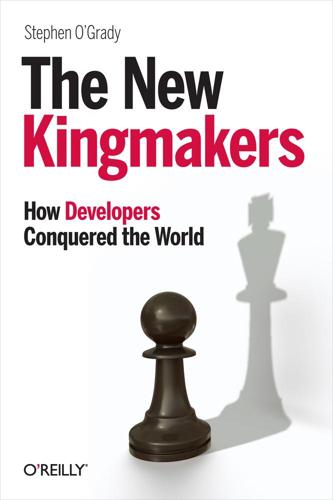
The New Kingmakers
by
Stephen O'Grady
Published 14 Mar 2013
Android developers, meanwhile, can count on an addressable market that’s activating 1.3 million new devices per day. Amazon, Microsoft, and RIM all have their own equivalents as well. Over on the desktop, Apple, Canonical, and Microsoft are or will soon be offering the ability to sell applications to users. The same is true for Software-as-a-Service; platforms like Google or Jive are increasingly offering their own “app stores,” giving developers or third parties the opportunity to sell to their customers. Marketing and selling yourself or the applications you’ve built requires training, obviously. Historically, this has been a challenge.
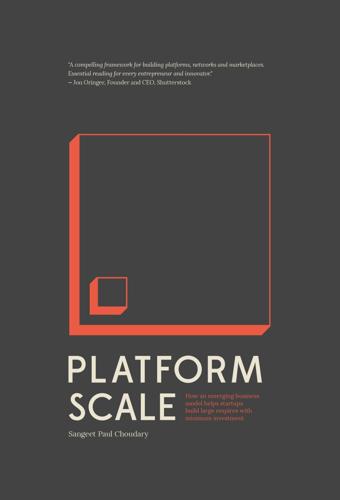
Platform Scale: How an Emerging Business Model Helps Startups Build Large Empires With Minimum Investment
by
Sangeet Paul Choudary
Published 14 Sep 2015
There is a linear movement of value from a producer to one or many consumers in all examples of pipe businesses. Early digital business models also followed the pipe design. The first media companies on the Internet worked like pipes. Amazon’s e-commerce store started as a pipe. Single-user software-as-a-service runs like a pipe, where the software is created by the business and delivered to the consumer. Even today, many businesses continue to see the Internet as a pipe, one of many delivery channels. However, three forces today – increasing connectedness, decentralized production, and the rise of artificial intelligence – are driving a whole new design for business.
…
Several startups, providing invoicing, payments, procurement management, and accounting tools to small businesses, are trying to take a similar approach to go beyond the tools and build out a ‘commercial graph’. Much like Facebook’s social graph, which maps out the social relationships between its users, a commercial graph would map out the nature of commercial relationships between businesses. Software as a service (SAAS) providers like Tradeshift, SPS Commerce, and Procurify are powering the first few instances of the commercial graph today. These providers follow a four-step strategy to build out the commercial graph. 1.Provision Of Tools. At the outset, they provide invoicing and procurement software to enable companies to manage their network interactions better.
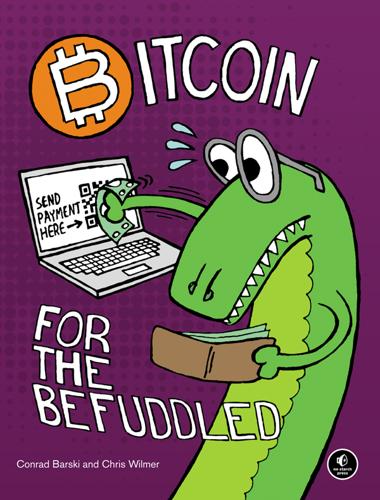
Bitcoin for the Befuddled
by
Conrad Barski
Published 13 Nov 2014
Alternatively, with a hosted wallet, a third party knows your private keys and doesn’t reveal them to you, but the company will send, receive, and store bitcoins on your behalf (not unlike a traditional bank, which stores your cash in a vault and won’t give you the keys to open it). Some companies also offer software as a service. In this case, they host the wallet software on their servers but not the private keys. Users can log in, send and receive bitcoins, and monitor Bitcoin transactions using their own private keys (which the company never receives). We refer to such services as online personal wallets because the private keys are not hosted.
…
See also security protocol, for Bitcoin, 112 public information, transactions as, 11 public key, 150 encryption, 91 master, 188 parable of, 141–145 reversing function of, 136 sharing, 156 public key cryptography, 133–135 public/private key pair, creating with ECDSA, 154 pushing, Bitcoin programming, 223 Python, 226 Q quick response (QR) codes, for Bitcoin address, 10 R Race Integrity Primitives Evaluation Message Digest (RIPEMD), 139–141, 188 radical decentralization, 126 random key generation, 187–190 randomness, for generating Bitcoin address, 39 relay node, 170 RelayRides, 67 remote servers, Electrum connection to, 15 retailers, acceptance of Bitcoin, 116 reversible transactions, 55–56 rewards, 170 from Bitcoin-mining lottery, 22 for transaction processing, 26 RIPEMD (Race Integrity Primitives Evaluation Message Digest), 139–141, 188 risks, to Bitcoin, 117–121 Rivest, Ron, 133–134 rounding errors, 235 and cryptography, 151 RSA encryption, 133–134, 137 Ruby, 226 S safety, of storage, 35 satoshi (bitcoin unit), 9 SatoshiLabs, 43 Satoshi Square, 71 savings, Bitcoin for, 121–122 scarcity, of currency, 118 Sean’s Outpost, 18 Secure Hash Algorithm (SHA), 139–141, 188 ASIC optimization to calculate, 174 security, 14, 118–119 of Bitcoin exchanges, 63 confidence in, 216–217 double hash scheme and, 156 SPV wallets vs. full wallets, 193–194 of storage, 35 seed, in Electrum, 14, 15 sending money from Bitcoin address, 236–239 code for, 238 SendRequest object, 238 settlement period, 55, 56 SHA (Secure Hash Algorithm), 139–141, 188 ASIC optimization to calculate, 174 Shamir, Adi, 133–134 Shamir’s Secret Sharing method, 42 shares, of mining reward, 176 side chains, 121 Silk Road website, 124 simplified payment verification (SPV), 191, 233 vs. full wallets, 193–195 single key generation wallet programs, 188 smartphones private keys on, 44 wallets on, 192 software as a service, 34 speed of payments, SPV wallets vs. full wallets, 193 spending bitcoins, 17–19 SPV (simplified payment verification), 191, 233 vs. full wallets, 193–195 SPVBlockStore object, 232, 233 stateless currencies, 2 storage, Bitcoin, 31–47 choosing method, 46–47 hot vs. cold, 33–34 of large amounts of bitcoins, 38–42 private key, 33 safety, security, and convenience, 35 of small amounts of bitcoins, 35–38 SPV wallets vs. full wallets, 194 Trezor, 43–45 summation, pseudocode for, elliptic curve cryptography, 158–159 symmetric key cryptography, 133 synchronization, SPV wallets vs. full wallets, 193 T Takhteyev, Yuri, 112n tangent to curve, elliptic curve cryptography, 150 thick wallets, 191 thin wallets, 192 third-party service provider, as bank, 33 timestamp, for block, 172 Tor, 127 trade volume, of exchange, 63 transaction confirmation, 25 transaction fees.
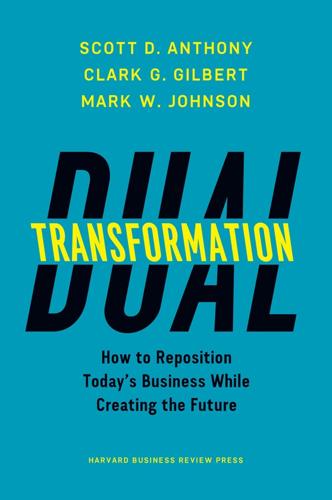
Dual Transformation: How to Reposition Today's Business While Creating the Future
by
Scott D. Anthony
and
Mark W. Johnson
Published 27 Mar 2017
At the time of the acquisition, HuffPo had roughly the same website traffic as the venerable New York Times. The newcomer had fifty journalists. The Times employed twelve hundred. In 1999, Marc Benioff founded Salesforce.com. He was one of the pioneers of a movement that came to be called software as a service, or SaaS. As internet connectivity became increasingly ubiquitous and access speeds spiked, Benioff bet on a shift in the historical means by which companies distributed computer software. Rather than require customers to go to a retail store or order shrink-wrapped software through a mail catalog, Salesforce’s core customer relationship management (CRM) software, which helped companies manage their salesforce, was licensed to users, hosted and maintained by Salesforce, and delivered over the internet.
…
George looks up to see Andy hovering over him. “How long have you been there?” “About five minutes,” Andy says. “You look really absorbed, so I hate to bother you, but we need to talk.” “Sure—what’s up?” “Well, we’ve got a problem,” Andy says. “The rumor mill says that Carla is going to leave to work at a software-as-a-service supply chain startup called SAASUP.” George groans. Carla is a vital cog in his core business. She manages supplier relations and does it extremely well. Partzelg hasn’t announced the precise details about its new leasing model, but it will require tighter integration with suppliers, and this means Carla’s responsibilities will increase.

Buy Then Build: How Acquisition Entrepreneurs Outsmart the Startup Game
by
Walker Deibel
Published 19 Oct 2018
By offering landscaping as well, they likely have a way to stay in communication with their customers, as well as invoice year-round. 62 John Warrillow’s book, The Automatic Customer, calls for companies to turn to subscription models in order to increase the dependability of revenue and, in turn, the value of their business. This is the same underlying principal that is behind an eternally profitable business—a sort of “software as a service” subscription model. But it’s not necessarily limited to companies with recurring monthly income either. Plumbing, laundry, electricity, boat docks, FBOs, and preschools are all potential examples of business models holding similar “eternal” characteristics. It’s tougher to have a differentiated value proposition in these markets, and they often heavily compete on price, so you’ll want to consider what the driver of the business is.
…
Typically, the size of the target is identified by revenue but then valued on a multiple of SDE or cash flow. Now that you know which type of company profile you want to purchase, you’ll need to identify the target SDE. As a result, defining what you are looking for by revenue is just the wrong metric. What if you find a software-as-a-service company with 70 percent net income to revenue? Or a metal-trading company with 1 percent net income? Defining by revenue doesn’t define your target by the thing you are buying in the first place: the cash flow. Instead, define the target by the amount of SDE. To review, the Seller Discretionary Earnings (SDE), is a measure of how much total cash flow the seller of the firm has been enjoying.
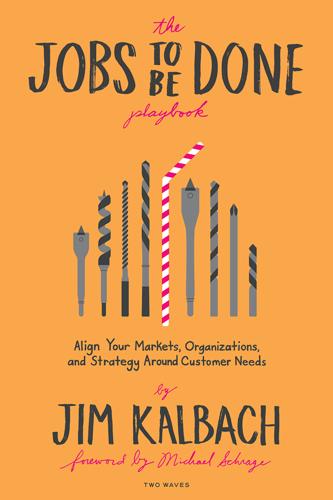
The Jobs to Be Done Playbook: Align Your Markets, Organization, and Strategy Around Customer Needs
by
Jim Kalbach
Published 6 Apr 2020
To address the situation, the company created a team that was labeled “customer success.” Their mission: help customers get value out of the solution and keep them loyal. The results of their customer success team decreased cancellations significantly. And so the field of customer success was born and adopted by other software as a service (SaaS) companies. The principle for subscription-based services was straightforward: help customers get their job done, and the business will grow. Get Customers off to a Good Start Onboarding customers into a subscription is critical to their long-term success. JTBD provides a consistent way to see how the objectives a customer is trying to achieve are independent of the solutions they use.
…
See also organization, around jobs reviewer, as function in job ecosystem, 19–21 Revlon, 220 Revson, Charles, 220 Re-Wired Group, 67 Rhea, Brian, 184 Rich, Jessica, 149–150, 153, 266 Ries, Eric, 151, 153, 266 roadmap. See development roadmap, creating Rogers, Everett, 95, 185 root cause analysis, 36–37, 180–181 Ryan, Evan, 122, 127, 263 S SaaS (software as a service), 77, 170 Salesforce, 169–170 satisfaction vs. importance matrix, 84–85, 89–91, 92, 114–115 Schrage, Michael, 153, 266 Segway, 149, 161–162, 185 shared value, 216–217 Silverstein, Daniel, 156 Sinclair, Rebecca, 220 Singer, Ryan, 170, 177, 268 Sinha, Janmejaya, 203 Skype, 195–196, 208 social jobs, 23–24, 26–27, 32 social responsibility, 217 Soler, Agustin, 246–250 solution architecture, 137–148, 265 architecture defined, 137 model of experience design, 138 modeling systems, 140–144 user environment design (UED), 141–144 web navigation design, 145–148 solution experience vs. job comprehension, 171–174 solutions competing.
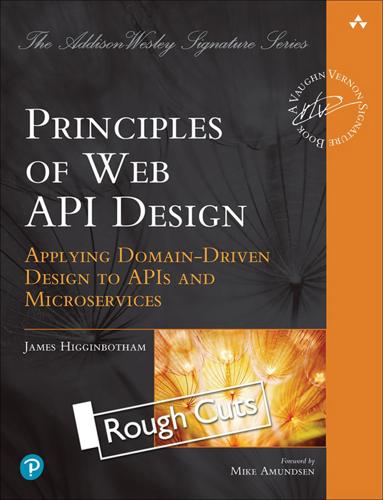
Principles of Web API Design: Delivering Value with APIs and Microservices
by
James Higginbotham
Published 20 Dec 2021
The challenge most organizations face, however, is that each integration has been custom-made. For each new partner or customer integration, a dedicated team consisting of developers, a project manager, and an account manager were tasked with building a custom integration. This involved tremendous effort and was often repeated, with per-partner customizations. The growth of the software-as-a-service (SaaS) business model, along with the increase in demand for web APIs, have shifted the discussion from one-off integration with partners and customers to a focus on product thinking. Applying product thinking to the API design process shifts the team focus from a single customer or partner to an effective API design that is able to handle new automation opportunities with little-to-no customization effort for a given customer segment.
…
Any individual or organization hosting their code with GitHub could be notified, via an HTTP-based POST, when new code was available and trigger a new build process. Over time, continuous integration and delivery (CI/CD) tools that were previously restricted to on-premises installation could now be offered via a software-as-a-service (SaaS) model. These solutions would be granted permission to receive the Webhook-based notification and start a new build process. This one async API notification ultimately created an entire SaaS market of hosted CI/CD tools. That is the power of async APIs. Before the full potential of async APIs can be unlocked, it is important to understand messaging fundamentals.
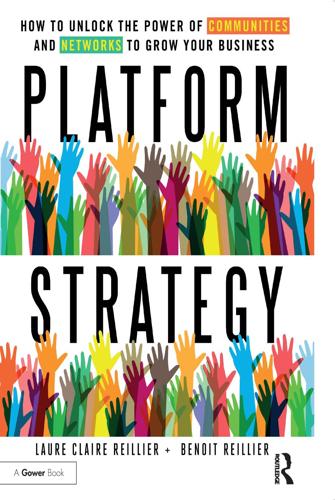
Open for Business Harnessing the Power of Platform Ecosystems
by
Lauren Turner Claire
,
Laure Claire Reillier
and
Benoit Reillier
Published 14 Oct 2017
For existing businesses that may not have the right in-house development capabilities but wish to add a marketplace to their existing ecommerce offering, buying off-the-shelf software and plugging it into an existing infrastructure 88 Life stages of platforms: design is likely to be the fastest and least risky solution – at least in the short term. For well-defined verticals such as marketplaces for products, some welldeveloped software solutions9 do exist. Solutions are usually Software as a Service (SaaS)-based and priced on a revenue sharing model, which may be fine initially but can become fairly costly for the platform owner as the platform scales. If you’re starting from scratch, or are addressing a specific vertical that is not covered by existing software solutions, you may need to build the platform infrastructure yourself.
…
Other software building blocks, such as matching algorithm – increasingly powered by artificial intelligence models – and instant messaging solutions are also evolving at an unprecedented pace, and enabling increasingly efficient The future of platforms 213 and frictionless matching and connection of platform participants. Analytics and big data provide unique ways of monitoring platforms in real time and optimizing their architecture. In fact, the availability of core software-powering platforms – often through the software as a service model (SaaS) – is now making basic technical development of a platform proposition very easy.16 Platforms to save the world Lastly, we think platforms also have the potential to help us deal with some of the global issues of our time, including inequalities, diseases, food and water supply, and global warming.
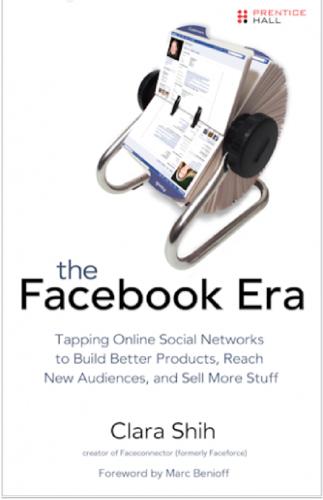
The Facebook era: tapping online social networks to build better products, reach new audiences, and sell more stuff
by
Clara Shih
Published 30 Apr 2009
From the Library of Kerri Ross xiv Th e Fa ce b o o k E ra About the Author Clara Shih is the creator of Faceconnector (formerly Faceforce), the first business application on Facebook. In addition, Clara is the product line director of AppExchange, salesforce.com’s online marketplace for business Software-as-a-service applications built by third-party developers and ISVs. (Editor’s note: Upon completing this book, Clara has created a new role and team at salesforce.com focused on enterprise social networking alliances and product strategy.) Previously, Clara worked in strategy and business operations at Google, and before that as a software developer at Microsoft.
…
, Excite, and Google began providing affordable, real-time information for workers as well as a new medium for reaching customers. eBay, PayPal, and commerce sites like Amazon.com proved the feasibility and popularity of self-service transactions. Within the enterprise software space, the Internet paved the way for the open source software and Software-as-a-service, or SaaS, movements, both of which have greatly democratized access to enterprise-grade software and services for small business and From the Library of Kerri Ross 16 Pa r t I A B r i e f H i s to r y o f S o c i a l M e d i a self-employed individuals. The Web made it dramatically easier and cheaper to start and run businesses.

Blitzscaling: The Lightning-Fast Path to Building Massively Valuable Companies
by
Reid Hoffman
and
Chris Yeh
Published 14 Apr 2018
The higher the gross margin, the more valuable each dollar of sales is to the company because it means that for each dollar of sales, the company has more cash available to fund growth and expansion. Many high-tech businesses have high gross margins by default, which is why this factor is often overlooked. Software businesses have high gross margins because the cost of duplicating software is essentially zero. Software-as-a-service (SaaS) businesses have a slightly higher cost of goods sold because they need to operate a service, but thanks to cloud providers like Amazon, this cost is becoming smaller all the time. In contrast, “old economy” businesses often have low gross margins. Growing wheat is a low-margin business, as is selling goods in a store or serving food in a restaurant.
…
And by connecting buyers and sellers instead of holding inventory or managing logistics (and thus dealing in bits rather than atoms), online marketplaces avoid many of the growth limits of human or infrastructure scalability. PROVEN PATTERN #5: SUBSCRIPTIONS When Salesforce.com first launched its on-demand customer relationship management product, there were many legitimate questions about this new software-as-a-service (SaaS) model. Selling software as a subscription, delivered via the Internet, represented a major departure for enterprise software vendors. The previous model of selling permanent licenses for on-premise software and charging for maintenance provided more cash up front than monthly or annual subscriptions.
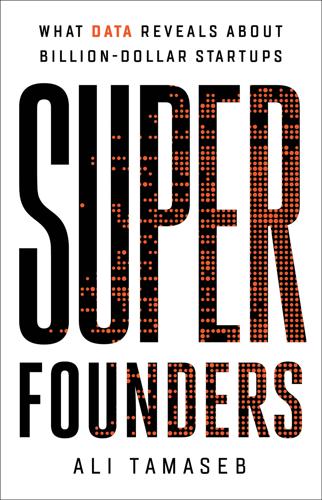
Super Founders: What Data Reveals About Billion-Dollar Startups
by
Ali Tamaseb
Published 14 Sep 2021
Similarly, Max Mullen kept a journal in which he wrote down ideas and spent years thinking about the on-demand economy—the magic of “pushing a button and something happens in the physical world”—before he focused his sights on the idea that would become Instacart. Todd McKinnon, whom we know for founding Okta, a billion-dollar password-management startup, wasn’t missionary about solving the password problem. He had observed the explosion of software-as-a-service (SaaS) tools and started contemplating this trend. He knew that the shift from on-premise software to cloud was going to disrupt the business of existing vendors.1 He iterated on different ideas until he settled on building Okta. The founders of DoorDash, an on-demand delivery company valued at over $50 billion in an IPO that happened only seven years after founding, weren’t missionary about restaurant delivery either.
…
There are only so many companies that can raise enough capital to put hundreds of satellites in space; at some point for new entrants, raising all that money just to have a chance to compete becomes a problem. Investors or founders shouldn’t rule out capital-intensive startups. They could be more resilient, and the high capital need creates a greater barrier to entry for competitors. It’s also a misconception that only low CapEx software-as-a-service companies can be capital efficient. My data indicates that the most capital-efficient billion-dollar startups were not only SaaS companies, but rather encompassed many types of startups. Some were consumer companies, like WhatsApp; others were pharma companies like Kite Pharma and Stemcentrx.

Vassal State
by
Angus Hanton
Published 25 Mar 2024
At that firm’s annual conference in Cannes, Benioff hired every cab in the city, and placed salesmen in them who subjected each Siebel delegate to the full force of Salesforce’s pitch. The pitch was not complicated: instead of buying expensive software outright, businesses could rent what they needed when they needed it online. Benioff was aggressively persuading buyers that ‘Software-as-a-Service’ (SaaS) was a better proposition than purchasing single-user licences. By 2003, Salesforce had grown its annual sales to $100 million, and since then it has multiplied them by 300, making it one of America’s largest tech firms. It has the objective ‘of making enterprise software as easy to use as a website like Amazon’.3 But the idea of transforming software from a product you buy and install into one you rent did not just build one business: it revolutionised first the entire tech sector and then the rest of the economy, in Britain and across the business world.
…
The company is owned by US investors, led by Sequoia Capital of Menlo Park, California.42 Life-as-a-Service, with its unavoidable and potentially crippling outgoings, has become a way of life not just for millions of consumers but for UK companies and the government. Organisations have signed up en masse to pay monthly for software and other services. There has been exponential growth in ‘cloud computing’ such as Software-as-a-Service (programs), Platform-as-a-Service (hardware and software for running apps), Infrastructure-as-a-Service (hosting of websites) and Communications-as-a-Service (communications systems). So the Brits and their companies are being rapidly moved from being owners of their assets to being renters and then borrowers, and much of what they consume and pay for is done through the monthly treadmill.
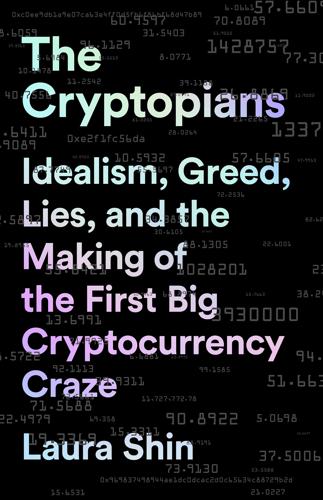
The Cryptopians: Idealism, Greed, Lies, and the Making of the First Big Cryptocurrency Craze
by
Laura Shin
Published 22 Feb 2022
In the remarks, Gav had talked about how the current dominance of SaaS, or “software-as-a-service,” products—such as companies using Eventbrite to sell tickets or Gmail for corporate email—would give way to what he called DsaaS, or “decentralized software-as-a-service,” products. PayPal, for instance, was PayPal, Inc., an entity that employed people who could be sued by regulators, brought to court, or put in prison. He noted that there was no company called Bitcoin—that, as a DsaaS, it was more of a “force of nature.” “When you’re creating new decentralized software as a service, you’re actually kind of creating a whole new force of nature,” Gav said.
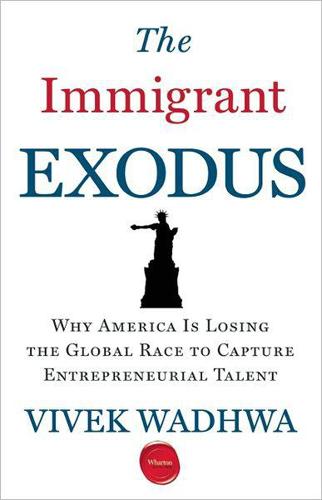
The Immigrant Exodus: Why America Is Losing the Global Race to Capture Entrepreneurial Talent
by
Vivek Wadhwa
Published 1 Oct 2012
The early foreign startup participants pulled in $8 million in venture capital financing from venture capital funds in Argentina, Brazil, France, the United States, and Uruguay. The program has sparked a spread of Silicon Valley–style entrepreneurship around Chile. There are now tribes of entrepreneurs and locals to build expertise on diverse topics, from biotech to consumer products to software-as-a-service to social media. The pairing of locals wanting to broaden their horizons with Start-Up Chile participants made such an impression that many of the Chileans I spoke to after the program started became interested in launching their own high-growth startups. In a nod to this development, the government of Chile opened the program to local entrepreneurs in July 2011.

Designing for Emotion
by
Aarron Walter
Published 4 Oct 2011
Though the individual workflow steps are relatively straightforward, you must jump from device to device to complete the setup process, so it’s easy for Dropbox to lose people along the way. As a new customer invests more time into getting started, the costs can start to seem greater than the benefits. Dropbox is also not your typical software as a service. It’s a web app, but it’s also a desktop and mobile app at the same time. That’s new territory for a lot of people, and there’s a learning curve to using the service as well as understanding how it will make your life easier. Getting people in the door is easy for Dropbox. It’s retaining users and getting them invested that’s tricky.

Service Design Patterns: Fundamental Design Solutions for SOAP/WSDL and RESTful Web Services
by
Robert Daigneau
Published 14 Sep 2011
I saw them as a pragmatic way to integrate systems and reuse common business logic. Since then, REST has gained significant momentum, WS* services have established a solid foothold, and SOA was proclaimed dead [Manes]. Through it all, my fascination with web services never waned. As mobile, cloud, and Software-as-a-Service (SaaS) platforms cause software to become increasingly distributed, the importance of web services will only continue to increase. We live in exciting times indeed! What Is This Book About? This book is a catalogue of design solutions for web services that leverage SOAP/WSDL or follow the REST architectural style.
…
Because of this, clients may not be aware of the potential latencies involved, and may not always implement the necessary logic to handle Service Connector 174 C HAPTER 6 W EB S ERVICE I NFRASTRUCTURES network-related failures like lost connections, server crashes, and busy services. However, many developers have learned that use of a Service Connector typically implies distributed communications, and that one must create exception-handling logic around the connector to handle communication errors. Example: Examples of Popular Service Connectors A number of Software-as-a-Service (SaaS) providers and their developer communities have produced robust Service Connectors. Two notable examples include Amazon Web Services: http://aws.amazon.com/ Twitter: https://dev.twitter.com/docs/twitter-libraries Example: A Typical Client-Service Interaction through a Service Proxy Service Connector The following Java code demonstrates how a client might interact with an RPC API (18).
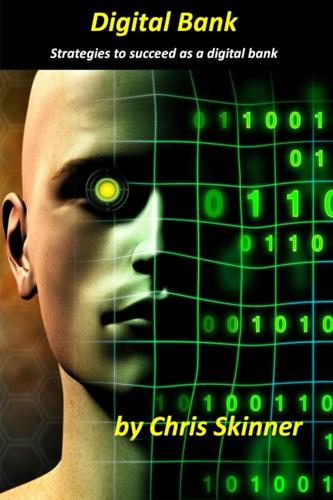
Digital Bank: Strategies for Launching or Becoming a Digital Bank
by
Chris Skinner
Published 27 Aug 2013
Cloud Computing is a wide and diverse operation that has gained a panacea status of being all things to all people. It’s Salesforce.com, Azure, Exalogic, Amazon and more. Put in “Cloud Computing” to Google, who also provide clouds, and you get sponsored adverts from HP, Intel, Siemens and more all talking about clouds. It’s Software as a Service, Platform as a Service, and Infrastructure as a Service. It’s public clouds, private clouds, hybrid clouds. It’s every and any darned thing you want and, as a result, it’s lost its meaning. As a result, bank CIO’s have heard about Cloud Computing, but have no idea how to articulate what it is to their Board and CEO, how to justify it, how to present it as meaningful and how to get a decision.
…
The Currency Cloud is, therefore, built as a technology platform that will bring a world of currencies with simplicity and low-cost to a whole range of businesses that did not have it before. We have around a hundred clients accessing our payments platform through our API, and interfacing their business applications directly into the currency markets through our platform. I assume you are a cloud-based service, with a name like Currency Cloud? We are a Software-as-a-Service (SaaS) based platform, and make a distinction between online platforms that you might get from your bank, where you are connected through a screen to the banks’ platform, and what we are doing. We are enabling online applications, including payroll, ERP, invoicing, corporate treasury and more, through a connection to ourselves.
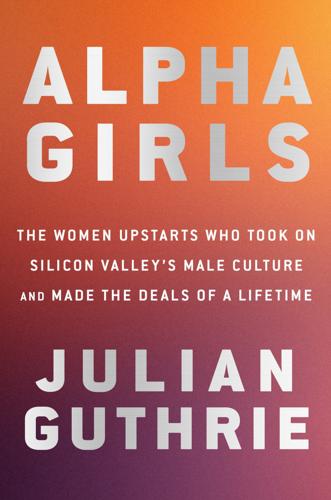
Alpha Girls: The Women Upstarts Who Took on Silicon Valley's Male Culture and Made the Deals of a Lifetime
by
Julian Guthrie
Published 15 Nov 2019
“I think it’s a great idea,” Magdalena said without hesitation. “I think enterprise software with its multimillion-dollar price tags for license and implementation will go away over time.” She had long been convinced that “big and clunky” networked software companies would soon be replaced by nimbler pay-as-you-go software-as-a-service, where a business could buy only the software it needed, as it needed it. “We need software that is ‘pay by the drink,’ ” she said. Benioff asked, “So should I do this?” And “Can I do this on my own?” Magdalena smiled seeing the start-up sparkle in his eyes. “Yes, and yes,” she said.
…
As Oracle absorbed Siebel, setting up a fierce competition between former friends Larry Ellison and Marc Benioff, Salesforce continued its astounding growth. In 2005 Salesforce reported $176 million in revenue, an 84 percent increase over the year before, with 227,000 subscribers. In 2006 revenue jumped to $450 million, and the company had nearly 400,000 subscribers. * * * The terms SaaS (Software as a Service), cloud, and cloud computing were entering the national lexicon. In 2006 Google’s CEO, Eric Schmidt—a friend of Magdalena’s from her CyberCash days and from his time at Sun Microsystems—popularized the term cloud at an industry conference. Schmidt said, “What’s interesting is that there is an emergent new model.

Heart of the Machine: Our Future in a World of Artificial Emotional Intelligence
by
Richard Yonck
Published 7 Mar 2017
Companies now make it possible to leverage and disseminate their hard-won technological capabilities through a range of different methods. Application programming interfaces (APIs) and software development kits (SDKs) provide the means for other companies, individuals, and even competitors to incorporate these new technologies into their own processes. At the same time, software as a service (SaaS) makes it possible to provide a range of services to everyone from licensees and subscribers to ad-supported websites and apps. All of these (and much more) make it possible to begin building new features and capabilities to fill market needs. As this continues, a new infrastructure is developed that supports still further innovation—innovation that wasn’t possible before all of the other supporting technology existed.
…
Over time, as processing power, bandwidth, and algorithms improve, new emotionally aware systems will become available, providing vendors with capabilities they’ll use with greater and greater ease. Eventually, assuming there’s a profit to be made (and there will be), these capabilities will evolve into a system of services, often known today as Software as a Service or SaaS. Companies can use these integrated services to perform various tasks for a reasonable fee, without having to develop the software and databases themselves. Such services could abstract and automate many of the more complex aspects of facial recognition, 3D scanning, affective computing, and augmented reality, allowing businesses to engage consumers on the fly in real time as easily as you or I send an email or spell-check a document.
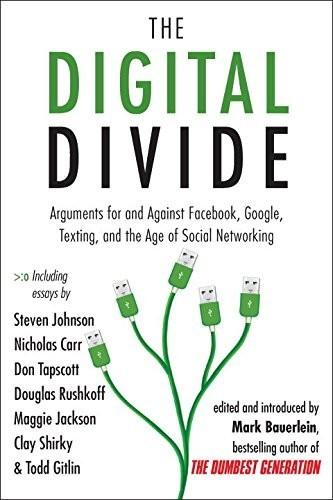
The Digital Divide: Arguments for and Against Facebook, Google, Texting, and the Age of Social Netwo Rking
by
Mark Bauerlein
Published 7 Sep 2011
While both Netscape and Google could be described as software companies, it’s clear that Netscape belonged to the same software world as Lotus, Microsoft, Oracle, SAP, and other companies that got their start in the 1980s software revolution, while Google’s fellows are other Internet applications like eBay, Amazon, Napster, and, yes, DoubleClick and Akamai. DoubleClick vs. Overture and AdSense Like Google, DoubleClick is a true child of the Internet era. It harnesses software as a service, has a core competency in data management, and, as noted above, was a pioneer in Web services long before Web services even had a name. However, DoubleClick was ultimately limited by its business model. It bought into the ’90s notion that the Web was about publishing, not participation; that advertisers, not consumers, ought to call the shots; that size mattered; and that the Internet was increasingly being dominated by the top websites as measured by MediaMetrix and other Web ad scoring companies.
…
We also studied a burgeoning group of start–ups and asked why they were growing so quickly. The answers helped us understand the rules of business on this new platform. Chief among our insights was that “the network as platform” means far more than just offering old applications via the network (“software as a service”); it means building applications that literally get better the more people use them, harnessing network effects not only to acquire users, but also to learn from them and build on their contributions. From Google and Amazon to Wikipedia, eBay, and craigslist, we saw that the value was facilitated by the software, but was cocreated by and for the community of connected users.
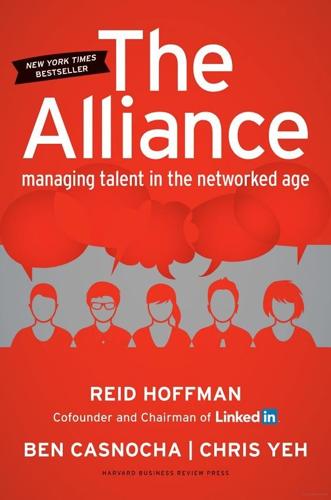
The Alliance: Managing Talent in the Networked Age
by
Reid Hoffman
,
Ben Casnocha
and
Chris Yeh
Published 15 Jan 2014
Perhaps this is due to the hard line that the finance world draws between “public” and “insider” information. But outside the world of financial exchanges and markets, nonpublic information comes in two very different flavors. For example, entrepreneurs often contact Chris for his advice on how to price Software-as-a-Service (SaaS) business software. Through his work with PBworks and other start-ups, he has direct operational experience in increasing revenues by introducing new pricing schemes. In the case of PBworks, for example, he was able to increase the size of the company’s largest customer from less than $100 to nearly $1 million over the course of four years.
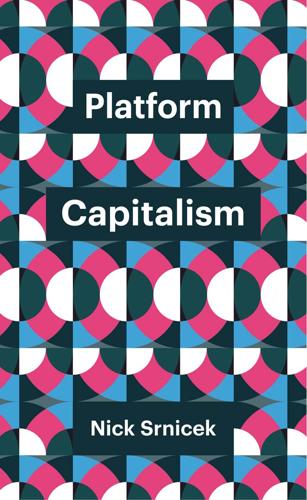
Platform Capitalism
by
Nick Srnicek
Published 22 Dec 2016
For one example of a data value chain, see Dumbill, 2014. 29. Finnegan, 2014. 30. Davidson, 2016. 31. CB Insights, 2016b. 32. Henwood, 2003: 30. 33. Hook, 2016. 34. Clark and Young, 2013. 35. Burrington, 2016. 36. In the industry, these are known respectively as ‘infrastructure as a service’ (IaaS), ‘platform as a service’ (Paas), and ‘software as a service’ (SaaS). 37. Clark, 2016. 38. Miller, 2016. 39. Asay, 2015. 40. McBride and Medhora, 2016. 41. Webb, 2015; Bughin, Chui, and Manyika, 2015. 42. Bughin, Chui, and Manyika, 2015. 43. Alessi, 2014. 44. World Economic Forum, 2015: 4. 45. Zaske, 2015. 46. CB Insights, 2016c. 47. Waters, 2016. 48.
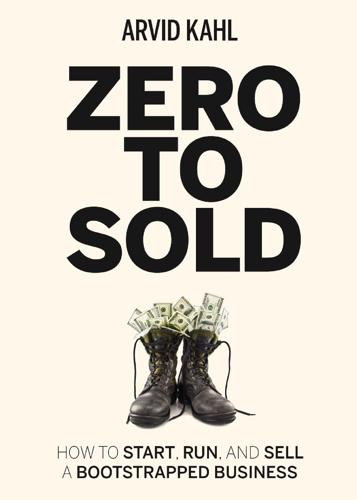
Zero to Sold: How to Start, Run, and Sell a Bootstrapped Business
by
Arvid Kahl
Published 24 Jun 2020
No matter if you are just starting to think about being an entrepreneur, are in the middle of running a bootstrapped company, or are a seasoned founder, you will find useful strategies, thought-provoking anecdotes, and insightful concepts in this guide. Zero to Sold will focus on examples from the Software-as-a-Service (SaaS) ecosystem, as this is my area of expertise. Most advice will be applicable to non-software businesses, too. While this is a guide, a manual, and a compendium, in the end, you are the agent of your own success. Carefully reflect if the advice in this book applies to your business. Read and learn as much as you can, but treat all guidance and direction as anecdotal.
…
On Bootstrapping The FeedbackPanda Story I wrote Zero to Sold because I've been through starting multiple bootstrapped businesses, growing a few, and selling one of them. Allow me to share the story of the one I sold. Within two years, I co-founded, ran, grew, and finally sold a Software-as-a-Service business called FeedbackPanda, a productivity tool for online English teachers. What many don’t realize is that this was an overnight success many years in the making. FeedbackPanda wasn't my first rodeo. I've been part of many internet businesses before, and I've had my fair share of failures.
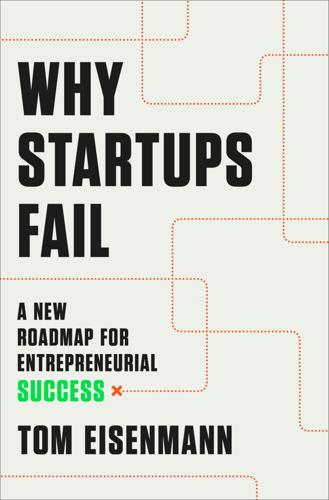
Why Startups Fail: A New Roadmap for Entrepreneurial Success
by
Tom Eisenmann
Published 29 Mar 2021
Recall that LTV reflects the gross margin (revenue minus variable costs) earned from a typical customer over time. The venture must achieve a high enough gross margin from all its customers to cover their acquisition costs along with the firm’s fixed expenses, thus generating a profit. Businesses with high fixed expenses, like “Software as a Service” (SaaS) ventures, must surpass a high LTV/CAC threshold: 3.0 is a typical target for such businesses. So, how fast can a startup grow and keep its LTV/CAC ratio above the relevant threshold? Factors that set a speed limit, outlined in the last chapter, now come into play. They include 1) saturation risk, that is, the point at which the startup has offered its product to most prospects in targeted customer segments; 2) quality exposure, that is, how quickly the startup can grow without spawning product flaws and customer service errors; and 3) rivalry, in particular, the competitive response provoked by rapid expansion.
…
If the discounted present value of the gross margin from a single customer is $100, and if each new customer attracts, on average, 0.5 additional new customers, then customer lifetime value (LTV) equals $100 x (1 + v), that is, $100 x 1.5, or $150. So, if the target LTV/CAC ratio is 1.0, then this startup can afford to spend up to $150 per new customer on paid marketing. Contrast that to the maximum CAC for a software-as-a-service (SaaS) startup without network effects that happens also to earn $100 in gross margin from each customer. With a 3.0 target LTV/CAC ratio, as proposed in the “Ready?” section, that SaaS startup could spend only $33 to acquire each new customer. That’s a huge difference in the maximum affordable CAC and shows how network effects can motivate aggressive marketing.
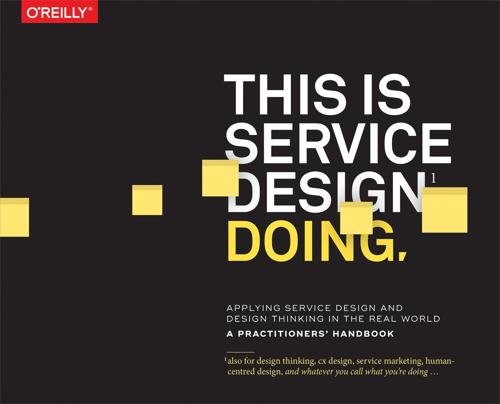
This Is Service Design Doing: Applying Service Design Thinking in the Real World: A Practitioners' Handbook
by
Marc Stickdorn
,
Markus Edgar Hormess
,
Adam Lawrence
and
Jakob Schneider
Published 12 Jan 2018
Unfortunately, we were fighting legal boundaries in Austria at that time and had to discard this approach for legal reasons. 39 To finally get started, we decided to bootstrap Smaply and finance everything out of our own pockets. Developing our business model We planned Smaply as a classic Software-as-a-Service (SaaS) product. The interesting aspect about these business models is their scalability: you maintain relatively stable costs, no matter how many products you sell. One crucial aspect of SaaS business models is their pricing. In the beginning, our pricing was based on gut feeling. We are experienced SaaS users ourselves and asked ourselves what we would pay for this kind of software.
…
questions 179, 201, 333 Huang, Cathy 447–451 human-centered design about 11, 467 basis of design research 98 bringing into organizational DNA 470 case study approach 146–148, 246–251 human-centered implementation 274 human-centered principle 27–28, 274 planning implementation 274 principle of 25, 27 suppporting behavioral change 278 human-centered implementation 274 human-centered principle 27–28, 274 human-human interactions 61–62 human-machine interactions 61–62 Hunt, Andy 281–282 Hunt, Patti 422–423 I idea generation 165–167 idea portfolio 184–185, 228, 334 idea selection 167–169 ideation about 91, 93, 157–159 decision making 160–162, 334 design sprints and 474 human-centered implementation and 274 ideation methods 164–167, 169, 177–187 ideation planning 163–165, 350–351 process overview 159, 163–175, 333–334 quality vs. quantity 158 in software development 286 visual representation of 93 ideation case studies about 188–189 building on solid research 196–200 co-design with hybrid methods 193–195 mixed-method ideation 200–203 opening the design studio to customers 190–193, 397 supporting creativity with visual triggers 203–205 ideation methods adding depth and diversity 167, 177, 181–182 generating many ideas 167, 177, 180–181 pre-ideation 167, 177–179 reducing options 169, 177, 186–187 selecting 164–167 understanding, clustering, and ranking options 169, 177, 183–185 ideation planning about 350–351 fixing outputs 165 immersion and inspiration 163 method selection 164 planning ideation loops 164 selecting contributors 164 setting stopping criteria 165 splitting the challenge 163 starting point 163 ideation process about 163 defining scope 163 documentation 169–173 idea generation 165–167 idea selection 167–169 ideation planning 163–165 Kano model 174–175 visual representation 159 idea wall 228, 285 IDEO (case study) 262–263, 301 imagination phase (product lifecycle) 289–290 imagine-like prototyping 227 impact analysis 277–279 implementation about 91–92, 271–272 architecture in 274, 298–305 change management in 274–279 design sprints and 475 human-centered 274 implementation case studies 306–324 pilots and 272–273 planning 274, 351–352 process overview 335 product management in 274, 289–297 software development in 274, 280–288 visual representation of 92 implementation case studies about 306–307 business impact through piloting and implementing projects 322–324 creating experiences, momentum, and results in sales 313–316 empowering employees for sustainable implementation 308–312 service design in a software startup 317–321 implementation projects 345–346 impossible deadlines 408 incubation projects 345 in-depth interviews (data collection) 122 indexing 110, 113 indirect prototyping 227 infinite prototyping 256–258 in-house design department 64 innovation. service design case studies abductive thinking and 161 increasing rate of 84 innovation jams 465–466 Kano model on 175 managing expectations 355 multitracking 352 need for 10–11 innovation jams 465–466 InReality (case study) 193–195 institution arrangements (SDL) 29–30 institutions (SDL) 29–30 integration prototypes 215 interactive click modelling 236–237, 335 interpreted data (second-order concept) 38–39, 109 interviewer effect 107 interviews contextual 121 impact analysis using 277 in-depth 122 investigative rehearsal 232, 335, 403 iron triangle 341 Itaú (case study) 384–386 iteration cost considerations 272 defined 90 in ideation (ideation loops) 159, 164 in implementation (implementation loops) 352 iterative principle 27–28 managing 329, 336, 363–368 planned 345–349 planning 361–363 in prototyping (prototyping loops) 211, 215, 223–224 in research (research loops) 102 review considerations 367–368 J jamming concept 465–466 jobs to be done (JTBD) 47, 52, 113, 131, 228 Joker (role) 393, 395 Jonas, Julia 272, 351, 355, 364 Jones, Lauren 198 journey maps about 44 Business Model Canvas and 76–79 co-creative workshops using 126 components of 46–47 data visualization, synthesis, and analysis using 129–130, 111 dramatic arcs in 47–49 embedding service design in organizations case studies 482, 485 factors important in 50–53 focus of 51–53 ideas from 178 lanes in 50, 52 perspective of 46, 51 reliability of 50 research case studies 146–153 scope and scale of 44, 51 service blueprints and 54–56 stakeholder maps and 59 state of 50, 149–153, 216, 332 typology of 50–53 zoom levels 44, 51 JTBD. jobs to be done Judelman, Greg 435, 439 Jung, Rob 144 K Kano model 10–11, 174–175 Karlsson, Henrik 256–258 Kenya cookstove users case study 203–205 Kernahan, Damian 424–425 key activities (Business Model Canvas) 77–78 key insights data visualization, synthesis, and analysis using 113, 131, 228 developing 131, 332 ideas from 179 passing on 355–356 key partners (Business Model Canvas) 77, 79 key performance indicators (KPIs) 7, 22, 469 key resources (Business Model Canvas) 77, 79 killer words 404 Kimbell, Lucy 143 Kistorp, Kaja Misvær 252–255 kits, carts, and trucks (space) 430 KLM (case study) 190–192, 397 Köln International School of Design 487 KPIs. key performance indicators Kranz, Eduardo 259–261 Kumar, Vijay 291 L lab prototyping 223 Laje (case study) 384–386 Lambe, Fiona 203–205 Lamott, Ann 401 lanes in journey maps 50, 52 in service blueprints 55–56 Laseau, Paul 85 Lean mindset 281 Leavitt’s diamond 276–277 Levitt, Theodore 52 Li, Angela 447–451 lifecycle in product management about 289 definition phase 291 imagination phase 289–290 realization phase 291–292 retirement/disposal phase 296 support/use phase 292–295 Li Ke Qiang 447 Lim, Youn-Kyung 220 Lindner, Klara 264–267, 456 line of interaction (service blueprints) 54–55 line of internal interactions (service blueprints) 55–56 line of visibility (service blueprints) 54–56 “lipstick on a pig” 24 Liszt, Marianne 481 Livaudais, Chris 193–195 Livework (case study) 19, 322–324 look-and-feel prototypes 214–215 looks-like prototypes 70 Low, Kristin 422–423 Lufthansa (case study) 262–263 Lusch, Robert 29 M machine-machine interactions 61–62 Madsen, Bjørg Torill 324 Maeda, John 214 Mager, Birgit 19, 23, 25, 295, 430, 487 Maintenance step (TTM) 278–279 making space for service design. physical spaces making space for service design case studies. physical spaces case studies Malan, Laura 139–141 management buy-in 457 management lead (role) 342 Manhäes, Mauricio 10, 29–31, 110 many pages, many pens mode (work mode in teams) 406 market decline stage (product lifecycle) 296 market growth stage (product lifecycle) 293–294 market introduction stage (product lifecycle) 293 market maturity stage (product lifecycle) 294–296 Martins, Patricia 386 material knowledge 275 maximum-input sampling 103 maximum-variation sampling 103 Mayr, Helga 480–483 MCDA (multiple criteria decision analysis) 185 McGrath, Jeff 11, 13–14, 22 Medzich, Maik 105, 431–432, 438, 444–446, 467, 471–472 mental health ideation case study 196–200 research case study 146–148 methods data collection 105–110, 113, 117–126 data visualization, synthesis, and analysis 127–133 defined 37 facilitating workshops 417–419 ideation 164–167, 177–187 prototyping 67–74, 231–243 tools versus 37 method triangulation 107–109 Met Office (case study) 142–146 Miettinen, Satu 166 milestones 353–355 mindset change stage (architecture) 299–300 mindset, service design as 21, 360 minds&makers (case study) 136–138 minimal viable product (MVP) 281–282, 476 Miradora, Joub 422–423 Miss Marple dramatic arc 49 mobile ethnography (data collection) 124 mobile spaces 430, 433 Mobisol (case study) 264–267 model maker (role) 219 Møller, Rune Yndestad 322–324 Mo’ MAGIC (case study) 146–148 Moments of Truth (MoT) 57 monitoring stage (architecture) 303–304 mood boards 238–239 More Than Metrics (case study) 317–321 Moritz, Stefan 19 Möslein, Kathrin 271, 345 MoT (Moments of Truth) 57 multiple criteria decision analysis (MCDA) 185 multitracking 224, 352 MVP (minimal viable product) 281–282, 476 N needs assessment stage (architecture) 300–301 Net Promoter Score (NPS) 11 neutrality in facilitator role 393 Nisbett, Alex 378–380 Nissar, Susanna 203–205, 460 non-participant approaches (data collection) about 107, 117 cultural probes 124–125 mobile ethnography 124 non-participant observation 123 non-participant observation (data collection) 123 Normann, Richard 57 NPS (Net Promoter Score) 11 O octopus clustering 183–184 Olympic Games (case study) 378–381 one page, many pens mode (work mode in teams) 405–406 one page, one pen mode (work mode in teams) 405–406 online ethnography (data collection) 120 On Off Group (case study) 422–423 Oosterom, Arne van 20, 22, 399, 495 operator (role) 219 organizations adopting a service design approach 14–15 challenges for 6–13 design sprints in 475–476 embedding service design in 455–477 Orient Landscape Group 450 Oslo City (case study) 322–324 Oslo City Council 324 Oslo University Hospital (case study) 252–255 Osterwalder, Alexander 76, 221 outputs (deliverables) 165, 354–357 output (space) 432 overt research 106 P Pahl-Schoenbein, Julia 12 Palmgren, Anna 486 paper prototyping 235, 335 parallel positioning 412 participant approaches (data collection) about 107, 117 contextual interviews 121–122 focus groups 123 in-depth interviews 122 participant observation 120–121 participant observation (data collection) 120–121 Pass the Parcel game 3 Pauling, Linus 65 PDCA management process 22 Pedagogical UniversityTyrol (case study) 480–483 peer review in research 113 people element (Leavitt’s diamond) 276–277 performance factor (Kano model) 11, 174 permanent/in-house spaces 432–433 permanent/remote spaces 432–433 personas about 41 boundary objects and 41, 43 Business Model Canvas and 78 co-creative workshops using 125 components of 41–42 creating 128–129 data visualization, synthesis, and analysis using 111, 128, 228 in journey maps 46 in product management 297 research case study 142–146 phases identifying and mapping for projects 353–354 in journey maps 46 physical commitment 186–187 physical evidences 54–55, 75, 217 physical objects/products 67, 69–71, 101, 217, 234 physical spaces building 434–440 creating safe space 399–405 dedicated 429 determining need for 441 holding 440 mobile solutions 430, 433 permanent/in-house solutions 432–433 permanent/remote solutions 432–433 room considerations when facilitating workshops 408–409 temporary/in-house solutions 431, 433 temporary/remote solutions 430–431 types of 430–433 physical spaces case studies about 442–443 sending a message in a major organization 444–446 sowing the seeds of innovation and change 447–451 Pichler, Erich 289–297 pilots 272–273, 322–324, 354, 475 planned iterations 345–349 planning core activities 349–352 facilitating workshops 398 ideation 163–165, 350–351 implementation 274, 351–352 prototyping 65–67, 218–226, 351 research 102–105, 350 service design process 337–360 Pobes, Itziar 200–202 The Point People (case study) 196–199 Polaine, Andy 259–261 Policy Lab (case study) 139–141 pop-up (space) 430–431 post-it or lose it (sticky notes) technique 410–411 Powell, Doug 429, 434, 437 Pre-contemplation step (TTM) 278–279 preparatory research 99, 118, 159, 211, 338–339, 353 presentational prototypes 213–214 Press, Mike 38, 50, 59, 467 pretotypes 74 primary data 108–109 principles of service design 26–28, 360 probability sampling 104 problem-solving 83–87, 115, 157, 329 problem space 115 Prochaska, James 278–279 product-centered journey maps 51–53 product management 274, 289–297 product manager (role) 292–296 Product Owner (Scrum role) 394–395 proficiency, establishing (as an organization) about 467 bringing service design into organizational DNA 470 disrupting your own business 469–470 eating your own dog food 468 leading through co-creation 468 looking beyond quantitative statistics and metrics 468–469 making design tangible 470 practicing empathy 468 reducing fear of change and failure 469 understanding design process 467–468 using customer-centric KPIs 469 project manager (role) 342 project owner (role) 342, 395 project teams 64, 342–344, 462–464 props 69, 217, 409 Protopartners (case study) 424–425 prototyper bias 219–220 prototyping about 65, 91, 93, 210 Business Model Canvas and 76, 78 dealing with failure and critique 229 design sprints and 474 direct experience 227 experience prototyping 225, 227 imagine-like 227 impact analysis using 277 implementation considerations 272–274 indirect imagination 227 infinite 256–258 learning through 68 pilots and 272–273 process overview 65–67, 211–229, 334–335 prototyping case studies 244–267 prototyping methods 67–74, 210, 231–243 prototyping planning 65–67, 218–226, 351 reducing uncertainty 210 scale of 217 scope of 217 in software projects 286–287 visual representation of 93 prototyping case studies about 244–245 enabling effective co-creation through prototyping minimum viable solutions and contextual mock-ups 246–251 enabling staff and stakeholders to prototype for continuous evolution 256–258 minimum lovalbe products, living prototypes, and high-fidelity sketching in code 259–261 using multifaceted prototyping to create and iterate business and service models 264–267 using prototyping and co-creation to create ownership and close collaboration 252–255 using role-plays and simulations in large-scale 1:1 prototypes 262–263 prototyping methods about 67, 210, 225, 231, 242–243 digital artifacts and software 67, 72–73, 216, 231, 235–237 ecosystems and business value 67, 74, 231, 237–239 environments, spaces, and architecture 67, 71, 216–217, 231, 234 general methods 231, 238–241 physical objects 67, 70–71, 216, 231 selecting 224–225 service processes and experiences 67–69, 216–217, 231–234 prototyping planning about 218, 351 audience in 66–67, 217–219 context in 66–67, 217, 221–223, 246–251 fidelity 65–66, 220–222 method selection 224–225 multitracking 224 prototyping loops 223–224 roles in the team 219–220 visual representation 225 prototyping process about 65–67, 211–212 assessing what to make or build 216–218 data visualization, synthesis, and analysis 228 planning prototyping 218–226 prototyping questions 65, 214–216 purpose of 65, 212–214 running prototyping sessions 226 Q qualitative research 50, 97–133, 139–141 quantitative research 50, 98, 139–141 questions addressed by prototyping 65, 214–216 by research 100–102 from stakeholders 365 quick voting methods 186 quota sampling 103 R Raffy, Belina 158, 163, 167, 400, 402, 407, 411 random association 182–183 random sampling 104 ranking ideas 183–185 raw data (first-order concept) 38, 109 realization phase (product lifecycle) 291–292 real principle 27–28 red and green feedback method 418 reflection in action 166 reflection out-of-action 166 Reiss, Eric 468–469 Relapse step (TTM) 278 relationships Business Model Canvas and 78 in ecosystem maps 63 in stakeholder maps 59–60 reliability of journey maps 50 Ren, Sissi 450 reports data synthesis and analysis using 113, 132–133, 228 research 113, 132–133 research and research data about 38–39, 91 assumption-based tools 40 data collection methods 105– 110, 113, 117–126 data visualization, synthesis, and analysis 127–133 design sprints 473–474 interpreted data 38–39 moving beyond assumptions 97–99 process overview 100–115, 330–332 raw data 38 research-based tools 40, 50, 211 research case studies 134–153 research methods 105–107 research planning 102–105, 350 research reports 132–133 visual representation of 92 research-based tools 40, 50, 211 research case studies about 134–135 current-state and future-state journey mapping 149–153 ethnography to gain actionable insights 136–138 illustrating research data with journey maps 146–148 qualitative and quantitative research 139–141 valuable persona 142–146 researcher bias 110 researcher (role) 219 researcher triangulation 107–110 research methods about 117, 127 autoethnography 119 building a research wall 128 co-creating journey maps 126 co-creating personas 125 co-creating system maps 126 co-creative workshops 125–126 compiling research reports 132 contextual interview 121 creating personas 128 cultural probes 124 data collection 117–126 data visualization, synthesis, and analysis 127–133 desk research 118–119 developing key insights 131 focus groups 123 generating jobs-to-be-done insights 131 in-depth interview 122 mapping journeys 129 mapping systems 130 mobile ethnography 124 non-participant approach 123–124 non-participant observation 123 online ethnography 120 participant approach 120–123 participant observation 120 preparatory research 118 secondary research 119 self-ethnographic approach 119–120 writing user stories 132 research planning about 102, 350 research context 104 research loops 102 sample selection 103–104 sample size 104–105 research process about 100 data collection 105–110 data visualization, synthesis, and analysis 111–114 research outcomes 114 research planning 102–105 research questions 100–102 research scope 100–102 visual representation 99 research reports 113, 132–133 research wall 128, 228, 331 retirement/disposal phase (product lifecycle) 296 retreat (space) 432 revenue streams (Business Model Canvas) 77, 79 Rolfsen, Marianne 322–324 room considerations when facilitating workshops 408–409 Rose, Phillippa 111, 128, 142–145 routine phase (economic business cycle) 10 Royal Institute of British Architects (RIBA) 298–299 rubber duck debugging 412 Ruello, Giovanni 347 Rules of Rehearsal 400–401, 403 Ryan, Chirryl-Lee 259–261 Rydqvist, Pia 484–486 S SaaS (Software-as-a-Service) 318 safe space about 399 avoiding judgement 404 avoiding killer words 404 breaking with routine 400 easing in 400–401, 403 failing first 404 giving orientation 401 invoking authority 400 making a mess 402, 405 mixing activities 402 noticing more and adapting 404 offering safety nets 404 owning the space 399 principles in practice 402–403 sh!
…
tty first drafts 401–403, 405 starting in familiar territory 399 sample selection 103–104 sample size 104–105 sampling bias 103 sampling error 104 Sant Joan Déu Barcelona Children’s Hospital (case study) 200–202 Sardenberg, Danielle 384, 386 scale of journey maps 44, 51 in prototyping 217 Schauer, Brandon 23 Schilling, Ole 476, 491–494 Schneider, Jakob 317–321 Schrage, Michael 226 Schuurman, Tim 495–498 Schwarzenberger, Klaus 280–288, 317–321 scope of ideation activities 163 of journey maps 44, 51 of prototyping 217 of research 100–102 of service design process 337–338 Scrum Master (role) 394–395 SDL (service-dominant logic) 29–31 secondary data 108–109 secondary research (data collection) 119 second-order concept (interpreted data) 38–39, 109 sectors in ecosystem maps 63 in stakeholder maps 59–60 in value network maps 61–62 self-ethnographic approaches (data collection) about 107, 117 autoethnography 119 online ethnography 120 research case study 136–138 self-selective sampling 103 sensemaking process. data visualization, synthesis, and analysis Sepp, Mario 308–312 sequencing principle 25–26 sequential principle 27–28 Serrano, Marta Sánchez 381–383 servant leaders 395 service advertisements 74, 237, 335 service blueprints about 54, 78–79 backstage actions 54–56 customer actions 54–55 custom perspectives 55–56 frontstage actions 54–55 impact analysis using 277 line of interaction 54–55 line of internal interactions 55–56 line of visibility 54–56 physical evidences 54–55 support processes 55–56 service delivery teams 64 service design challenges for organizations 6–12 commandments of 32–33 core activities 83–93 defining 19–20 different views of 21–22 embedding in organizations 455–477 facilitating workshops 391–419 ideation. ideation implementation. implementation managing iteration 329, 336 origins and progress 23 planning and preparation 330 practitioners on why they chose 12–13 principles of 25–28 process overview 21–22, 329–336 process templates 369–375 prototyping. prototyping research. research and research data service-dominant logic and 29–31 tools for 37–79 what customers want 3–5 what it isn’t 24 why use this approach 12–15 service design case studies embedding service design in organizations 478–503 facilitation workshops 420–425 ideation 188–205 implementation 306–325 making space for service design 442–451 prototyping 244–267 research 134–153 service design process and management 376–387 service design process, managing iteration management 363–367 iteration planning 361–363 iteration review 367–368 service design process, planning for about 337 budgeting 358–360 dealing with constraints 340 documentation 356–358 mindsets, principles, and styles 360 multitracking 352 outputs and outcomes 355–356 preparatory research 338–339 project brief 337–338 project phases and milestones 353–355 project structure 343–352 project team and stakeholders 339–343 service design teams choosing name to fit organizational culture 463–464 core team roles 64, 342, 462 cross-functional 464 extended team roles 64, 343, 462–463 planning for 339–343 prototyping team roles 219–220 scouting and recruiting for 460–461 service delivery teams 64 setting up 397, 462 team building 344 team members in facilitator role 396 team work modes 404–406 service-dominant logic (SDL) 29–31 service prototyping. prototyping service recovery, service design and 24 service (SDL) 29 shark tank session 413 Shvedun, Dima 144 silos, organizational 7–10 similarities in design processes 88 Simion-Popescu, Simona 495, 497 simple random sampling 104 Siodmok, Andrea 13 sketching methods 181, 240–241, 259–261, 333, 407 skewed sample selection 103 slicing the elephant 177–178 Smaply (case study) 317–321 SMART method 313–316 Snook (case study) 196–199 snowball sampling 103 SNV Netherlands Development Organisation (case study) 203–205 Soap Opera dramatic arc 49 software. digital artifacts and software Software-as-a-Service (SaaS) 318 software development 274, 280–288, 317–321, 412 solution space 115 Sotoca, Jesús 381–383 spaces. environments, spaces, and architecture; physical spaces; physical spaces case studies Spanton, Jay 144 Spectator Experience, London Organizing Committee of the Olympic and Paralympic Games (case study) 378–380 splitting the challenge (method) 163, 177–178 sponsor (role) 342 sports coach (role) 394 squat (space) 431 Squiggle 348 stage (setting) of prototypes 69, 217 stages (phases) in journey maps 46 stakeholder constellation 179 stakeholder maps about 58–59 in architectural process 299 data synthesis and analysis using 228 in ideation process 164 relationships in 59–60 sectors in 59–60 stakeholders in 59–60 stakeholders common terminology 63–64 defined 63 in journey maps 47 in prototyping 219 questions they have 365 in service design process planning 339 in system maps 59–62 Stanford Center for Innovations in Learning 300–301 Stark, Patricia 289–297 state of journey maps 50, 149–153, 216, 332 of system maps 58, 332–333 status/control matrix 414 status in facilitator role 393, 413–414 STBY (case study) 149–153, 499–503 steps in journey maps 46, 57 sticky notes (post-it or lose it) technique 410–411 Stockholm Environment Institute Africa Center, Nairobi, Kenya (case study) 203–205 Stockholm Environment Institute (case study) 203–205 Stolterman, Erik 220 storyboards in journey maps 46 storytelling in change management 279 in data synthesis and analysis 113, 132, 228 in facilitating workshops 403 in idea generation 165 in prototyping 67, 213, 222, 237 Støvring, Ingvild 322–324 stratified random sampling 104 stress testing 233 Strømmen Olsen, Emilie 252–255 structure element (Leavitt’s diamond) 276–277 studio (space) 432 subject matter content 69 subject matter experts (role) 219 subtext 232–233 Successful Design (case study) 447–451 Sun Life Financial (case study) 422–423 support processes (service blueprints) 55–56 support staff 64 support/use phase (product lifecycle) about 292–293 market decline stage 296 market growth stage 293–294 market introduction stage 293 market maturity stage 294–296 support 296 Swedish Public Employment Service (case study) 484–486 synthesizing data. data visualization, synthesis, and analysis systematic random sampling 104 system maps about 58 Business Model Canvas and 78–79 co-creative workshops using 126 data visualization, synthesis, and analysis on 113, 130 desktop system maps 74, 179, 238 ecosystem maps 58, 61–63 ideas from 179 stakeholder maps 58–60 state of 58, 332–333 value network maps 58, 60–62 T Tanghe, Jürgen 104, 161, 177, 275–279 task element (Leavitt’s diamond) 276–277 Taylorism 7 TCDC Thailand (case study) 487–490 team retrospectives 367–368 technology element (Leavitt’s diamond) 277 technology lead (role) 342 Teeraprasert, Waritthi 487–490 templates, service design process 369–375 temporary/in-house spaces 431, 433 temporary/remote spaces 430–431 Tenenberg, Josh 220 10 plus 10 180–181, 333 Terzi, Francesca 88, 213, 343 testing 233, 277, 288, 302 theoretical saturation 105 theory triangulation 107 Thesen, Philipp 491–494 Thirty-five game 184 31Volts (case study) 19, 190–192 Thomas, David 282 three-brain warm-up 417, 419 timing considerations for facilitators 408, 410 tool set, service design as 21 tools for service design assumption-based 40, 50 Business Model Canvas 76–79 defined 37 facilitating workshops 409 journey maps 44–57 methods versus 37 personas 41–42 prototypes 65–75, 211 research-based 40, 50, 211 research data 38–40, 50 system maps 58–63 Total Quality Management 7 touchpoints 57, 489 tracer-bullet development 282, 287 Transformator Design (case study) 203–205, 484–486 Transtheoretical Model (TTM) of behavioral change 278–279 triangular positioning 412 triangulation data 107–109 method 107–109 researcher 107–110 theory 107 Troenokarso, Eriano 191 Tsaklev, Vladimir 495–498 TTM (Transtheoretical Model) of behavioral change 278–279 Turner, Mark 316 Tzanidou, Katie 499–503 U ugly baby bias 343 UK Department of Health, Work and Pensions (case study) 196–199 unique selling proposition (USP) 10 United Airlines 8–9 “United Breaks Guitars” videos 8–9 usability tests 105 Uscreates (case study) 139–141 user-centered principle 25 user feedback 282 users defined 63 Moments of Truth 57 user stories data synthesis and analysis using 113, 132, 228 ideas from 179 writing 132 USP (unique selling proposition) 10 V value 29, 67, 74, 231, 237–239 value exchanges in ecosystem maps 63 in value network maps 58, 60–62 value network maps 58, 60–62 value propositions (Business Model Canvas) 76–77, 318–319 value prototypes 214–215, 221 van Dijk, Geke 103–104, 149–153, 499–503 Vargo, Steven 29 Venn diagram on product management 289–290 VEP (Visionary Empowerment Programme) (case study) 203–205 Verschoor, Carola 13, 224, 392, 395 Virtual Reality (VR) 243 visualization (facilitating workshops technique) 409–410 visualizing data. data visualization, synthesis, and analysis Vodafone (case study) 149–153, 381–383 Vollmer, Florian 193–195 voting methods, quick 186 VR (Virtual Reality) 243 VUCA acronym 84 W Wanjiru, Hannah 203–205 warm-up facilitation methods 400, 407, 417–419, 482 WECO (case study) 447–451 Wendland, Stefan 262 Wend, Michael 136–138 We Question Our Project (case study) 200–202 Werner, Michael 193 Weschenfelder, Nina 136–138 What if?

Robot Futures
by
Illah Reza Nourbakhsh
Published 1 Mar 2013
Given power limitations and weight limitations, this required significant electronics engineering to do as much of the perceptual processing as possible, and thanks to these efforts robots began to be entirely self-contained systems at the close of the twentieth century. Then came the age of software-as-a-service, and its natural application to robotics, with the architectural desire to have 36 Chapter 2 the robot use as many Internet-based resources as possible. For instance, ask external resources to do the face recognition so that the robot can have minimal electronics on board yet be able to recognize every person in the robot lab and say good morning to them.
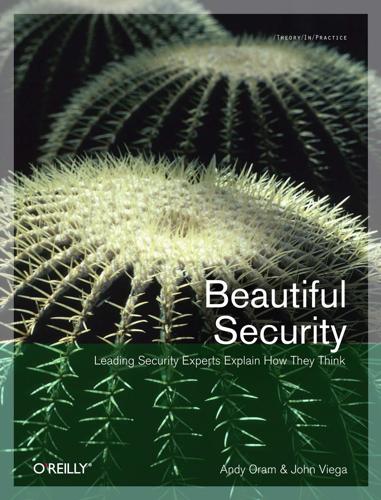
Beautiful security
by
Andy Oram
and
John Viega
Published 15 Dec 2009
Cloud Computing and Web Services: The Single Machine Is Here Civilization advances by extending the number of important operations which we can perform without thinking of them. —Alfred North Whitehead An Introduction to Mathematics (1911) Today, much is being made of “cloud computing” in the press. For at least the past five years, the computer industry has also expressed a lot of excitement about web services, which can range from Software as a Service (SaaS) to various web-based APIs and service-oriented architecture (SOA, pronounced “so-ah”). Cloud computing is really nothing more than the abstraction of computing infrastructure (be it storage, processing power, or application hosting) from the hardware system or users. Just as you don’t know where your photo is stored physically after you upload it to Flickr, you can run an entire business on a service that is free to run it on any system it chooses.
…
N ICHOLS is a serial entrepreneur who has applied mathematics to develop solutions in satellite mission optimization, industrial process control, war gaming, economic modeling, enterprise systems and network management, and most recently, security metrics. In 2007, with her husband, Joseph, she cofounded PlexLogic LLC, a firm that offers metrics on-demand using the Software as a Service delivery model. She is the CTO and VP of engineering. Prior to starting PlexLogic, Betsy cofounded two other software companies in the role of CTO and VP of engineering. The first company, Digital Analysis Corporation (DAC), implemented network and systems management software. DAC was acquired by Legent Corporation, which was in turn acquired by Computer Associates (CA) during the Internet bubble in the mid-1990s when Unix, the Web, and networks were booming.

The Blockchain Alternative: Rethinking Macroeconomic Policy and Economic Theory
by
Kariappa Bheemaiah
Published 26 Feb 2017
Their BRACKETS25 technology makes smart contracts to govern all phases of a typical trade agreement from order, shipment, and invoice to final payment. CredyCo Identity and KYC Created by Trustatom, CredyCo provides a cryptographic due diligence service built on top of Bitcoin’s blockchain. They provide document verification “software as a service” (SaaS) which uses smart contracts and identity technology built on top of the blockchain to ensure the credibility and irrefutability of all statements. Primarily targeting the venture capital industry, the company seeks to automate KYC practices by allowing their customers to authorize transactions with cryptographic signatures.
…
Payment protection insurance (PPI) Peer-to-peer (P2P) Personal identification number (PIN) Polycoin Popperian falsifiability Public Company Accounting Oversight Board (PCAOB) Public-key certificate (PKC) Public-key infrastructure (PKI) Q Quantitative easing (QE) Quantitative model R R3 CORDA™ Rational expectations Rational expectations structural models Rational expectations theory (RET) Rational expectations theory (RMT) RBCmodels SeeReal Business Cycle (RBC) models Reaganomics Real Business Cycle (RBC) models Real Time Gross Settlement (RTGS) system Regular laws Ripple protocol S Santa Fe artificial stock market model Sarbanes-Oxley Act (SOX) Scalability SecureKey Concierge Seigniorage Shadow banking and systemic risk commercial banks definition dynamic stochastic general equilibrium models economic flexibility EMH and RET financial markets and monetary policy growth of financial products macroeconomic theories non-bank channels securitization trades Sharding Blockchain FinTech transformation global Fintech financing activity private sector ShoCard SIGEmodels SeeSticky Information General Equilibrium (SIGE) models Skill-biased technological change (SBTC) SkuChain Software as a service (SaaS) Sticky Information General Equilibrium (SIGE) models SWIFT network Systemically important financial institutions (SIFI) System identification number (SIN) T Tax evasion Tech-led firms Technology and invention accelerating consilience of technology blockchain combinatorial evolution complexity EDVAC equilibrium and rational expectations Konratiev waves Moore’s law and Wright’s law Popperian scientific method punch cards socialization specialised operations technological change Technology and invention socialization and complexity specialisation, diversity and ubiquity The Chicago Plan advantages benefits commercial banks debt feature existing debt fractional banking system monetary policies money principles and assumptions reduce private and public debt levels zero bound problem Too Big to Fail (TBTF) Bandits’ Club banking innovations CDS market derivative instruments endingTBTF approaches banking industry Dodd Frank Act goals and implementations innovative process Kashkari, Neel Living Will Review process optimal level questions systemically important financial institutions financial history fragmentation Gramm-Leach-Bliley financial modernization act ideological kidnapping macroeconomic models McFadden Act PPI process of technological innovations Trade finance automation banks and clients Blockchain capitalistic markets financial institutions limitations R3 CORDA™ regulators and policy makers supply chain management SWIFT network Wilson, Lamar Traditional structural models Tradle Transactional cost theory (TCT) Trunomi TUPAS U Unique Identification Authority of India (UIDAI) acts Universal Basic Income (UBI) U.S.

Exponential: How Accelerating Technology Is Leaving Us Behind and What to Do About It
by
Azeem Azhar
Published 6 Sep 2021
It seems so obvious to us today, but in 1999 it was a radical idea. Back then, corporations bought software, installed it on central servers, and then had IT workers wander the offices to install the application on every single desktop computer. It was a pain. Benioff pioneered the idea of ‘software as a service’ powered through a web browser – and in the process he transformed the software industry. In 20 years, Salesforce has grown from a handful of founders to a $200-billion business with nearly 50,000 employees. But as it has expanded, the company has figured out how to make each additional employee more productive – and how to get more money from its customers.
…
Abu Dhabi, UAE, 250 Acemoglu, Daron, 139 Acorn Computers, 16, 21 Ada Lovelace Institute, 8 additive manufacturing, 43–4, 46, 48, 88, 166, 169, 175–9 Adidas, 176 advertising, 94, 112–13, 116, 117, 227–8 AdWords, 227 aeroponics, 171 Afghanistan, 38, 205 Africa, 177–8, 182–3 Aftenposten, 216 Age of Spiritual Machines, The (Kurzweil), 77 agglomeration, 181 Air Jordan sneakers, 102 Airbnb, 102, 188 aircraft, 49–50 Alexandria, Egypt, 180 AlexNet, 33 Algeciras, HMM 61 Alibaba, 48, 102, 108, 111, 122 Alipay, 111 Allen, Robert, 80 Alphabet, 65, 113–14, 131, 163 aluminium, 170 Amazon, 65, 67–8, 94, 104, 108, 112, 122, 135–6 Alexa, 25, 117 automation, 135–6, 137, 139, 154 collective bargaining and, 163 Covid-19 pandemic (2020–21), 135–6 drone sales, 206 Ecobee and, 117 Go stores, 136 Kiva Systems acquisition (2012), 136 management, 154 Mechanical Turk, 142–3, 144, 145 monopoly, 115, 117, 122 Prime, 136, 154 R&D, 67–8, 113 Ami Pro, 99 Amiga, 16 Anarkali, Lahore, 102 anchoring bias, 74 Android, 85, 94, 117, 120 Angola, 186 Ant Brain, 111 Ant Financial, 111–12 antitrust laws, 114, 119–20 Apache HTTP Server, 242 Appelbaum, Binyamin, 63 Apple, 47, 62, 65, 85, 94, 104, 108, 112, 122 App Store, 105, 112, 115 chip production, 113 Covid-19 pandemic (2019–21), 222–3 data collection, 228 iOS, 85 iPhone, 47, 62, 85, 94, 105 media subscription, 112 watches, 112 APT33 hacker group, 198 Aral, Sinan, 238 Aramco, 108, 198 Armenia, 206–7 Arthur, William Brian, 110, 123 artificial intelligence, 4, 8, 31–4, 54, 88, 113, 249 academic brain drain, 118 automation, 125–42 data and, 31–2, 142 data network effect, 106–7 drone technology and, 208, 214 education and, 88 employment and, 126–7 healthcare and, 88, 103 job interviews and, 153 regulation of, 187, 188 arXiv, 59 Asana, 151 Asian Development Bank, 193 Aslam, Yaseen, 148 Assembly Bill 5 (California, 2019), 148 asymmetric conflict, 206 AT&T, 76, 100 Atari, 16 attack surfaces, 192–3, 196, 209, 210 Aurora, 141 Australia, 102, 197 automation, 125–42 autonomous weapons, 208, 214 Azerbaijan, 173, 206–7 Ballmer, Steve, 85 Bangladesh, 175 banking, 122, 237 Barcelona, Catalonia, 188 Barlow, John Perry, 184 Barrons, Richard, 195, 211 Bartlett, Albert, 73 batteries, 40, 51, 53–4, 250, 251 Battle of the Overpass (1937), 162 Bayraktar TB2 drone, 206 Bee Gees, 72 Bekar, Clifford, 45 Bell Labs, 18 Bell Telephone Company, 100 Benioff, Marc, 108–9 Bentham, Jeremy, 152 Berlin Wall, fall of (1989), 4 Bermuda, 119 Berners-Lee, Timothy, 55, 100, 160, 239 Bessen, James, 46 Bezos, Jeffrey, 135–6 BGI, 41 Biden, Joseph, 225 Bing, 107 biological weapons, 207, 213 biology, 10, 39, 40–42, 44, 46 genome sequencing, 40–41, 90, 229, 234, 245–7, 250, 252 synthetic biology, 42, 46, 69, 174, 245, 250 biopolymers, 42 bits, 18 Black Death (1346–53), 12 BlackBerry, 120 Blair, Tony, 81 Bletchley Park, Buckinghamshire, 22 blitzscaling, 110 Blockbuster, 138 BMW, 177 Boeing, 51, 236 Bol.com, 103 Bollywood, 181 Boole, George, 18 Bork, Robert, 114–15, 117, 119 Bosworth, Andrew, 233 Boyer, Pascal, 75 Boyle, James, 234 BP, 92, 158 brain, 77 Braudel, Fernand, 75 Brave, 242 Brazil, 202 Bremmer, Ian, 187 Bretton Woods Conference (1944), 87 Brexit (2016–20), 6, 168 British Broadcasting Corporation (BBC), 87, 129, 191 Brookings Institution, 130 BT, 123 Bulgaria, 145 Bundy, Willard Legrand, 149 Busan, South Korea, 56 business, 82, 92–124 diminishing returns to scale, 93, 108 economic dynamism and, 117 economies of scale, 50, 92 growth, 110–13 increasing returns to scale, 108–10 intangible economy, 104–7, 118, 156, 175, 180 linear value chains, 101 market share, 93–6, 111 monopolies, 10, 71, 94, 95, 114–24 network effect, 96–101 platform model, 101–3, 219 re-localisation, 11, 166–79, 187, 252, 255 state-sized companies, 11, 67 superstar companies, 10, 94–6 supply chains, 61–2, 166–7, 169, 175, 187, 252, 255 taxation of, 96, 118–19 Butler, Nick, 179 ByteDance, 28 C40 initiative, 189 Cambridge University, 127, 188 cancer, 57–8, 127 Capitol building storming (2021), 225 car industry, 93 carbon emissions, 35, 90, 251 Carlaw, Kenneth, 45 Carnegie, Andrew, 112 Carnegie Mellon University, 131 Catholic Church, 83, 88 censorship, 216–17, 224–6, 236 Central Intelligence Agency (CIA), 194 Cerebras, 34 cervical smears, 57–8 chemical weapons, 207, 213 Chen, Brian, 228 chewing gum, 78 Chicago Pile-1 reactor, 64 Chile, 170 China automation in, 127, 137 brainwave reading in, 152 Covid-19 pandemic (2019–21), 245 drone technology in, 207 Great Firewall, 186, 201 Greater Bay Area, 182 horizontal expansion in, 111–12 manufacturing in, 176 misinformation campaigns, 203 raw materials, demand for, 178 Singles’ Day, 48 social credit systems, 230 superstar companies in, 95 US, relations with, 166 chips, 19–22, 28–9, 48–9, 52, 113, 251 Christchurch massacre (2019), 236 Christensen, Clayton, 24 CIPD, 153 cities, 11, 75, 169, 179–84, 188, 255 Clegg, Nick, 225–6, 235 climate change, 90, 169, 187, 189, 251, 252 cloud computing, 85, 112 Cloudflare, 200 cluster bombs, 213 CNN, 185, 190 coal, 40, 65, 172 Coase, Ronald, 92 Coca-Cola, 93 code is law, 220–22, 235 cold fusion, 113–14 Cold War (1947–91), 194, 212, 213 collective bargaining, 147, 149, 154, 156, 162–5 Colombia, 145 colonialism, 167 Columbus, Christopher, 4 combination, 53–7 Comical Ali, 201 commons, 234–5, 241–3, 256 companies, see business comparative advantage, 170 complex systems, 2 compounding, 22–3, 28 CompuServe, 100 computing, 4, 10, 15–36, 44, 46, 249 artificial intelligence, 4, 8, 31–4, 54, 88 cloud computing, 85, 112 internet, 47–8, 55, 65, 84 Law of Accelerating Returns, 30–31, 33, 35 machining, 43 Moore’s Law, see Moore’s Law quantum computing, 35 transistors, 18–22, 28–9, 48–9, 52 conflict, 87, 189, 190–215 attack surfaces, 192–3, 196, 209, 210 cyberattacks, 11, 114, 140, 181, 187, 190–200, 209–14, 256 de-escalation, 212–13 drone technology, 11, 192, 204–9, 214, 256 institutional change and, 87 misinformation, 11, 191, 192, 200–204, 209, 212, 217, 225 new wars, 194 non-proliferation, 213–14 re-localisation and, 189, 193, 194, 209 consent of the networked, 223 Costco, 67 Coursera, 58 Covid-19 pandemic (2019–21), 12–13, 59, 78–9, 131, 245–9 automation and, 127, 135, 136 cities and, 183 contact-tracing apps, 222–3 gig economy and, 146 lockdowns, 12, 152, 176, 183, 246 manufacturing and, 176 misinformation and, 202–4, 247–8 preprint servers and, 60 recession (2020–21), 178 remote working and, 146, 151, 153 supply chains and, 169, 246 vaccines, 12, 202, 211, 245–7 workplace cultures and, 151, 152 cranks, 54 credit ratings, 162, 229 critical thinking skills, 212 Croatia, 145 Crocker, David, 55 crowdsourcing, 143–4 Cuba, 203 Cuban missile crisis (1962), 99, 212 cultural lag, 85 cyberattacks, 11, 114, 140, 181, 187, 190–200, 209–14, 256 CyberPeace Institute, 214 Daniel, Simon, 173–4 Dar es Salaam, Tanzania, 183 Darktrace, 197 data, 8, 11, 71, 217–19, 226–31, 235, 237–42, 256 AI and, 8, 32, 33, 58, 106 compensation for, 239 commons, 242 cyberattacks and, 196 doppelgängers, 219, 226, 228, 239 interoperability and, 237–9 network effects, 106–7, 111 protection laws, 186, 226 rights, 240 Daugherty, Paul, 141 DDT (dichlorodiphenyltrichloroe thane), 253 death benefits, 151 Dediu, Horace, 24, 30 deep learning, 32–4, 54, 58, 127 deforestation, 251 dehumanisation, 71, 154, 158 deindustrialisation, 168 Deliveroo, 154, 163 Delphi, 100 dematerialised techniques, 166, 175 Denmark, 58, 160, 199–200, 257 Deutsche Bank, 130 Diamandis, Peter, 5 Dickens, Charles, 80 digital cameras, 83–4 Digital Geneva Convention, 211 Digital Markets Act (EU, 2020), 122 digital minilateralism, 188 Digital Nations group, 188 Digital Services Act (EU, 2020), 123 diminishing returns, 93, 108 disinformation, see misinformation DoorDash, 147, 148, 248 dot-com bubble (1995–2000), 8, 108, 150 Double Irish tax loophole, 119 DoubleClick, 117 drone technology, 11, 192, 204–9, 214, 256 Dubai, UAE, 43 Duke University, 234 dystopia, 208, 230, 253 Eagan, Nicole, 197 eBay, 98, 121 Ecobee, 120 economies of scale, 50, 92 Economist, The, 8, 65, 119, 183, 239 economists, 63 Edelman, 3 education artificial intelligence and, 88 media literacy, 211–12 Egypt, 145, 186 Elance, 144 electric cars, 51, 69, 75, 173–4, 177, 250 electricity, 26, 45, 46, 54, 157, 249–50 see also energy Electronic Frontier Foundation, 184 email, 6, 55 embodied institutions, 82 employment, 10, 71, 125–65 automation, 125–42 collective bargaining, 147, 149, 154, 156, 162–5 dehumanisation and, 71, 154, 158 flexicurity, 160–61, 257 gig economy, 10, 71, 142–9, 153, 162, 164, 239, 252, 255 income inequality, 155–8, 161, 168 lump of labour fallacy, 139 management, 149–54, 158–9 protections, 85–6, 147–9 reskilling, 159–60 universal basic income (UBI), 160, 189 Enclosure, 234–5, 241 energy, 11, 37–8, 39–40, 44, 46, 172–4, 250 cold fusion, 113–14 fossil fuels, 40, 159, 172, 250 gravitational potential, 53 solar power, 37–8, 53, 65, 77, 82, 90, 171, 172, 173, 249, 250, 251 storage, 40, 53, 114, 173–4, 250, 251 wind power, 39–40, 52 Energy Vault, 53–4, 173 Engels, Friedrich, 81 Engels’ pause, 80, 81 environmental movement, 73 Epic Games, 116 estate agents, 100 Estonia, 188, 190–91, 200, 211 Etzion Airbase, Sinai Peninsula, 195 European Commission, 116, 122, 123 European Space Agency, 56 European Union, 6, 82, 147, 186, 226 Excel, 99 exogeny, 2 exponential gap, 9, 10, 67–91, 70, 89, 253 cyber security and, 193 institutions and, 9, 10, 79–88, 90 mathematical understanding and, 71–5 predictions and, 75–9 price declines and, 68–9 superstar companies and, 10, 94–124 exponential growth bias, 73 Exponential View, 8–9 externalities, 97 extremism, 232–4 ExxonMobil, 65, 92 Facebook, 27, 28, 65, 94, 104, 108, 122, 216–17, 218, 219, 221–2, 223 advertising business, 94, 228 censorship on, 216–17, 224–6, 236 collective bargaining and, 164 data collection on, 228, 239–40 extremism and, 233–4 Instagram acquisition (2012), 117, 120 integrity teams, 234 interoperability, 237–8 Kenosha unrest shooting (2020), 224 misinformation on, 201, 225 network effect and, 98, 223 Oculus acquisition (2014), 117 pay at, 156–7 Phan photo controversy (2016), 216–17, 224, 225 platform model, 101 polarisation and, 233 relationship status on, 221–2 Rohingya ethnic cleansing (2018), 224, 225 US presidential election (2016), 217 WhatsApp acquisition (2014), 117 facial recognition, 152, 208 Factory Act (UK, 1833), 81 Fairchild Semiconductor, 19, 21 fake news, 201–4 family dinners, 86 farming, 170–72, 251 Farrar, James, 148 fax machines, 97 Federal Aviation Administration (US), 236 feedback loops, 3, 13 fertilizers, 35, 90 5G, 203 Financial Conduct Authority, 122 Financial Times, 183 Finland, 160, 211–12 Fitbit, 158 Fiverr, 144 flashing of headlights, 83 flexicurity, 160, 257 flints, 42 flywheels, 54 Ford, 54, 92, 162 Ford, Gerald, 114 Ford, Henry, 54, 162 Ford, Martin, 125 Fortnite, 116 fossil fuels, 40, 159, 172 France, 100, 138, 139, 147, 163 free-market economics, 63–4 freelance work, 10, 71, 142–9 Frey, Carl, 129, 134, 141 Friedman, Milton, 63–4, 241 Friedman, Thomas, 167 FriendFeed, 238 Friendster, 26 Fudan University, 245 fund management, 132 Galilei, Galileo, 83 gaming, 86 Gates, Bill, 17, 25, 84 gender, 6 General Agreement on Tariffs and Trade, 87 General Data Protection Regulation (GDPR), 226 General Electric, 52 General Motors, 92, 125, 130 general purpose technologies, 10, 45–8 generative adversarial networks (GANs), 58 Geneva Conventions, 193, 199, 209 Genghis Khan, 44 GEnie, 100 genome sequencing, 40–41, 90, 229, 234, 245–7, 250, 252 Germany, 75, 134, 147 Giddens, Anthony, 82 gig economy, 10, 71, 142–9, 153, 162, 164, 239, 252, 255 Gilbreth, Lillian, 150 Ginsparg, Paul, 59 GitHub, 58, 60 GlaxoSmithKline, 229–30 global financial crisis (2007–9), 168 Global Hawk drones, 206 global positioning systems (GPS), 197 globalisation, 11, 62, 64, 156, 166, 167–71, 177, 179, 187, 193 internet and, 185 conflict and, 189, 193, 194 Glocer, Thomas, 56 Go (game), 132 GOAT, 102 Gojek, 103 Golden Triangle, 170 Goldman Sachs, 151 Goodfellow, Ian, 58 Google, 5, 35, 36, 94, 98, 104, 108, 115, 122 advertising business, 94, 112–13, 116, 117, 227 Android, 85, 94, 117, 120 chip production, 113 Covid-19 pandemic (2019–21), 222–3 data network effect, 106–7 death benefits, 151 Double Irish tax loophole, 119 Maps, 113 quantum computing, 35 R&D, 114, 118 vertical integration, 112–13, 116 X, 114 YouTube acquisition (2006), 112, 117 Gopher, 59, 100 GPT-3, 33 Graeber, David, 133–4 Grand Bazaar, Istanbul, 102 Graphcore, 34, 35 graphics chips, 34 Grateful Dead, The, 184 gravitational potential energy, 53 gravity bombs, 195 Greater Bay Area, China, 182 Greenberg, Andy, 199 Gross, Bill, 53 Grove, Andrew, 17 GRU (Glavnoje Razvedyvatel’noje Upravlenije), 199 Guangzhou, Guangdong, 182 Guardian, 8, 125, 154, 226, 227 Guiyang, Guizhou, 166 H1N1 virus, 75 Habermas, Jürgen, 218 Hard Times (Dickens), 80 Hardin, Garrett, 241 Harop drones, 207–8 Harpy drones, 207–8 Harvard University, 150, 218, 220, 221, 253 healthcare artificial intelligence and, 57–8, 88, 103 data and, 230, 239, 250–51 wearable devices and, 158, 251 Helsinki, Finland, 160 Herlev Hospital, Denmark, 58 Hinton, Geoffrey, 32, 126–7 HIPA Act (US, 1996), 230 Hitachi, 152 Hobbes, Thomas, 210 Hoffman, Josh, 174 Hoffman, Reid, 110, 111 Holmes, Edward, 245 homophily, 231–4 Hong Kong, 182 horizontal expansion, 111–12, 218 Houston Islam protests (2016), 203 Houthis, 206 Howe, Jeff, 143 Hsinchu, Taiwan, 181 Hughes, Chris, 217 Hull, Charles, 43 Human + Machine (Daugherty), 141 human brain, 77 human genome, 40–41, 90, 229, 234, 250 human resources, 150 Hussein, Saddam, 195 Hyaline, 174 hydroponics, 171 hyperinflation, 75 IBM, 17, 21, 47, 98 IDC, 219 Ideal-X, 61 Ikea, 144 Illumina, 41 Ilves, Toomas Hendrik, 190 ImageNet, 32 immigration, 139, 168, 183–4 Impossible Foods, 69 Improv, 99 income inequality, 155–8, 161, 168 India, 103, 145, 181, 186, 224, 253, 254 Indonesia, 103 Industrial Revolution (1760–1840), 79–81, 157, 235 informational networks, 59–60 ING, 178 innovation, 14, 117 Innovator’s Dilemma, The (Christensen), 24 Instagram, 84, 117, 120, 121, 237 institutions, 9, 10, 79–88, 90–91 path dependence, 86–7 punctuated equilibrium, 87–8 intangible economy, 104–7, 118, 156, 175, 180 integrated circuits, 19 Intel, 16–17, 19, 163 intellectual property law, 82 Intermediate-Range Nuclear Forces Treaty (1987), 237 International Alliance of App-Based Transport Workers, 164 International Court of Justice, 224 International Criminal Court, 208 International Energy Agency, 77, 82 International Labour Organization, 131 International Monetary Fund (IMF), 87, 167, 187 international organisations, 82 International Organization for Standardization, 55, 61 International Rescue Committee, 184 International Telecommunication Union, 55 internet, 7, 47–8, 55, 65, 72, 75, 84–5, 88, 115, 184–6 code is law, 220–22, 235 data and, 11, 32, 71 informational networks, 59–60 localisation, 185–6 lockdowns and, 12 network effect, 100–101 online shopping, 48, 61, 62, 75, 94, 102, 135 platform model and, 102 public sphere and, 223 standardisation, 55 Wi-Fi, 151 interoperability, 55, 120–22, 237–9, 241, 243, 256–7 iPhone, 47, 62, 85, 94, 115, 175 Iran, 186, 196, 198, 203, 206 Iraq, 195–6, 201, 209 Ireland, 57–8, 119 Islamic State, 194, 233 Israel, 37, 188, 195–6, 198, 206, 207–8 Istanbul, Turkey, 102 Jacobs, Jane, 182 Japan, 37, 152, 171, 174 Jasanoff, Sheila, 253 JD.com, 137 Jena, Rajesh, 127 Jio, 103 job interviews, 153, 156 John Paul II, Pope, 83 Johnson, Boris, 79 Jumia, 103 just in time supply chains, 61–2 Kahneman, Daniel, 74 KakaoTalk, 27 Kaldor, Mary, 194 Kapor, Mitchell, 99 Karunaratne, Sid, 140–41, 151 Kenosha unrest shooting (2020), 224 Keynes, John Maynard, 126, 158 Khan, Lina, 119 Khartoum, Sudan, 183 Kim Jong-un, 198 King’s College London, 179 Kiva Systems, 136 Kobo360, 145 Kodak, 83–4, 88 Kranzberg, Melvin, 254 Krizhevsky, Alex, 32–3, 34 Kubursi, Atif, 178 Kurdistan Workers’ Party, 206 Kurzweil, Ray, 29–31, 33, 35, 77 Lagos, Nigeria, 182 Lahore, Pakistan, 102 landmines, 213 Law of Accelerating Returns, 30–31, 33, 35 Laws of Motion, 20 learning by doing, 48, 53 Leggatt, George, 148 Lemonade, 56 Lessig, Larry, 220–21 Leviathan (Hobbes), 210 Li Fei-Fei, 32 life expectancy, 25, 26 light bulbs, 44, 157 Lime, 27 Limits to Growth, The (Meadows et al.), 73 linear value chains, 101 LinkedIn, 26, 110, 121, 237, 238 Linkos Group, 197 Linux OS, 242 Lipsey, Richard, 45 lithium-ion batteries, 40, 51 lithium, 170 localism, 11, 166–90, 252, 255 log files, 227 logarithmic scales, 20 logic gates, 18 logistic curve, 25, 30, 51, 52, 69–70 London, England, 180, 181, 183 London Underground, 133–4 looms, 157 Lordstown Strike (1972), 125 Lotus Development Corporation, 99 Luddites, 125, 253 Lufa Farms, 171–2 Luminate, 240 lump of labour fallacy, 139 Lusaka, Zambia, 15 Lyft, 146, 148 machine learning, 31–4, 54, 58, 88, 127, 129, 143 MacKinnon, Rebecca, 223 Maersk, 197, 199, 211 malaria, 253 Malaysia Airlines Flight 17 shootdown (2014), 199 Malta, 114 Malthus, Thomas, 72–3 malware, 197 Man with the Golden Gun, The (1974 film), 37 manufacturing, 10, 39, 42–4, 46, 166–7, 175–9 additive, 43–4, 46, 48, 88, 166, 169, 175–9 automation and, 130 re-localisation, 175–9 subtractive, 42–3 market saturation, 25–8, 51, 52 market share, 93–6, 111 Marshall, Alfred, 97 Massachusetts Institute of Technology, 18, 147, 202, 238 Mastercard, 98 May, Theresa, 183 Mayors for a Guaranteed Income, 189 McCarthy, John, 31 McKinsey, 76, 94 McMaster University, 178 measles, 246 Mechanical Turk, 142–3, 144, 145 media literacy, 211–12 meningitis, 246 Mexico, 202 microorganisms, 42, 46, 69 Microsoft, 16–17, 65, 84–5, 88, 98–9, 100, 105, 108, 122, 221 Bing, 107 cloud computing, 85 data collection, 228 Excel, 99 internet and, 84–5, 100 network effect and, 99 Office software, 98–9, 110, 152 Windows, 85, 98–9 Workplace Productivity scores, 152 Mill, John Stuart, 193 miniaturisation, 34–5 minimum wage, 147, 161 misinformation, 11, 191, 192, 200–204, 209, 212, 217, 225, 247–8 mobile phones, 76, 121 see also smartphones; telecom companies Moderna, 245, 247 Moixa, 174 Mondelez, 197, 211 Mongol Empire (1206–1368), 44 monopolies, 10, 71, 94, 95, 114–24, 218, 255 Monopoly (board game), 82 Montreal, Quebec, 171 mood detection systems, 152 Moore, Gordon, 19, 48 Moore’s Law, 19–22, 26, 28–9, 31, 34, 63, 64, 74 artificial intelligence and, 32, 33–4 Kodak and, 83 price and, 41–2, 51, 68–9 as social fact, 29, 49 superstar companies and, 95 time, relationship with, 48–9 Moravec, Hans, 131 Moravec’s paradox, 131–2 Motorola, 76 Mount Mercy College, Cork, 57 Mozilla Firefox, 242 Mumbai, India, 181 mumps, 246 muskets, 54–5 MySpace, 26–7 Nadella, Satya, 85 Nagorno-Karabakh War (2020), 206–7 napalm, 216 NASA (National Aeronautics and Space Administration), 56 Natanz nuclear site, Iran, 196 National Health Service (NHS), 87 nationalism, 168, 186 NATO (North Atlantic Treaty Organization), 191, 213 Netflix, 104, 107, 109, 136, 137, 138, 139, 151, 248 Netherlands, 103 Netscape Communicator, 6 networks, 58–62 network effects, 96–101, 106, 110, 121, 223 neural networks, 32–4 neutral, technology as, 5, 220–21, 254 new wars, 194 New York City, New York, 180, 183 New York Times, 3, 125, 190, 228 New Zealand, 188, 236 Newton, Isaac, 20 Nigeria, 103, 145, 182, 254 Niinistö, Sauli, 212 Nike, 102 nitrogen fertilizers, 35 Nixon, Richard, 25, 114 Nobel Prize, 64, 74, 241 Nokia, 120 non-state actors, 194, 213 North Korea, 198 North Macedonia, 200–201 Norway, 173, 216 NotPetya malware, 197, 199–200, 211, 213 Novell, 98 Noyce, Robert, 19 NSO Group, 214 nuclear weapons, 193, 195–6, 212, 237 Nuremberg Trials (1945–6), 208 O’Reilly, Tim, 107 O’Sullivan, Laura, 57–8, 60 Obama, Barack, 205, 214, 225 Ocado, 137 Ocasio-Cortez, Alexandria, 239 Oculus, 117 oDesk, 144 Ofcom, 8 Ofoto, 84 Ogburn, William, 85 oil industry, 172, 250 Houthi drone attacks (2019), 206 OAPEC crisis (1973–4), 37, 258 Shamoon attack (2012), 198 Standard Oil breakup (1911), 93–4 Olduvai, Tanzania, 42 online shopping, 48, 61, 62, 75, 94, 102, 135 open-source software, 242 Openreach, 123 Operation Opera (1981), 195–6, 209 opium, 38 Orange, 121 Organisation for Economic Co-operation and Development (OECD), 119, 167 Osborne Computer Corporation, 16 Osborne, Michael, 129 Osirak nuclear reactor, Iraq, 195–6, 209 Ostrom, Elinor, 241 Oxford University, 129, 134, 203, 226 pace of change, 3 pagers, 87 Pakistan, 145, 205 palladium, 170 PalmPilot, 173 panopticon, 152 Paris, France, 181, 183 path dependence, 86 PayPal, 98, 110 PC clones, 17 PeerIndex, 8, 201, 237 Pegasus, 214 PeoplePerHour, 144 PepsiCo, 93 Perez, Carlota, 46–7 pernicious polarization, 232 perpetual motion, 95, 106, 107, 182 Petersen, Michael Bang, 75 Phan Thi Kim Phuc, 216–17, 224, 225 pharmaceutical industry, 6, 93, 250 phase transitions, 4 Philippines, 186, 203 Phillips Exeter Academy, 150 phishing scams, 211 Phoenix, Arizona, 134 photolithography, 19 Pigou, Arthur Cecil, 97 Piketty, Thomas, 160 Ping An Good Doctor, 103, 250 Pix Moving, 166, 169, 175 PKK (Partîya Karkerên Kurdistanê), 206 Planet Labs, 69 platforms, 101–3, 219 PlayStation, 86 plough, 157 Polanyi, Michael, 133 polarisation, 231–4 polio, 246 population, 72–3 Portify, 162 Postel, Jon, 55 Postings, Robert, 233 Predator drones, 205, 206 preprints, 59–60 price gouging, 93 price of technology, 22, 68–9 computing, 68–9, 191, 249 cyber-weapons, 191–2 drones, 192 genome sequencing, 41–2, 252 renewable energy, 39–40, 250 printing press, 45 public sphere, 218, 221, 223 Pulitzer Prize, 216 punctuated equilibrium, 87–8 al-Qaeda, 205, 210–11 Qatar, 198 quantum computing, 35 quantum physics, 29 quarantines, 12, 152, 176, 183, 246 R&D (research and development), 67–8, 113, 118 racial bias, 231 racism, 225, 231, 234 radicalisation pathways, 233 radiologists, 126 Raford, Noah, 43 Raz, Ze’ev, 195, 209 RB, 197 re-localisation, 11, 166–90, 253, 255 conflict and, 189, 193, 194, 209 Reagan, Ronald, 64, 163 religion, 6, 82, 83 resilience, 257 reskilling, 159–60 responsibility gap, 209 Restrepo, Pascual, 139 Reuters, 8, 56, 132 revolutions, 87 Ricardo, David, 169–70, 177 rights, 240–41 Rise of the Robots, The (Ford), 125 Rittenhouse, Kyle, 224 Roche, 67 Rockefeller, John, 93 Rohingyas, 224 Rome, ancient, 180 Rose, Carol, 243 Rotterdam, Netherlands, 56 Rule of Law, 82 running shoes, 102, 175–6 Russell, Stuart, 31, 118 Russian Federation, 122 disinformation campaigns, 203 Estonia cyberattacks (2007), 190–91, 200 Finland, relations with, 212 Nagorno-Karabakh War (2020), 206 nuclear weapons, 237 Ukraine cyberattacks (2017), 197, 199–200 US election interference (2016), 217 Yandex, 122 S-curve, 25, 30, 51, 52, 69–70 al-Sahhaf, Muhammad Saeed, 201 Salesforce, 108–9 Saliba, Samer, 184 salt, 114 Samsung, 93, 228 San Francisco, California, 181 Sandel, Michael, 218 Sanders, Bernard, 163 Sandworm, 197, 199–200, 211 Santander, 95 Sasson, Steve, 83 satellites, 56–7, 69 Saturday Night Fever (1977 soundtrack), 72 Saudi Arabia, 108, 178, 198, 203, 206 Schmidt, Eric, 5 Schwarz Gruppe, 67 Second Machine Age, The (Brynjolfsson and McAfee), 129 self-driving vehicles, 78, 134–5, 141 semiconductors, 18–22, 28–9, 48–9, 52, 113, 251 September 11 attacks (2001), 205, 210–11 Shamoon virus, 198 Shanghai, China, 56 Shannon, Claude, 18 Sharp, 16 Shenzhen, Guangdong, 182 shipping containers, 61–2, 63 shopping, 48, 61, 62, 75, 94, 102, 135 Siemens, 196 silicon chips, see chips Silicon Valley, 5, 7, 15, 24, 65, 110, 129, 223 Sinai Peninsula, 195 Sinclair ZX81, 15, 17, 21, 36 Singapore, 56 Singles’ Day, 48 Singularity University, 5 SixDegrees, 26 Skydio R1 drone, 208 smartphones, 22, 26, 46, 47–8, 65, 86, 88, 105, 111, 222 Smith, Adam, 169–70 sneakers, 102, 175–6 Snow, Charles Percy, 7 social credit systems, 230 social media, 26–8 censorship on, 216–17, 224–6, 236 collective bargaining and, 164 data collection on, 228 interoperability, 121, 237–8 market saturation, 25–8 misinformation on, 192, 201–4, 217, 247–8 network effect, 98, 223 polarisation and, 231–4 software as a service, 109 solar power, 37–8, 53, 65, 77, 82, 90, 171, 172, 173, 249, 250, 251 SolarWinds, 200 Solberg, Erna, 216 South Africa, 170 South Korea, 188, 198, 202 Southey, Robert, 80 sovereignty, 185, 199, 214 Soviet Union (1922–91), 185, 190, 194, 212 Spain, 170, 188 Spanish flu pandemic (1918–20), 75 Speedfactory, Ansbach, 176 Spire, 69 Spotify, 69 Sputnik 1 orbit (1957), 64, 83 stagflation, 63 Standard and Poor, 104 Standard Oil, 93–4 standardisation, 54–7, 61, 62 Stanford University, 32, 58 Star Wars franchise, 99 state-sized companies, 11, 67 see also superstar companies states, 82 stirrups, 44 Stockholm International Peace Research Institute, 208 Stockton, California, 160 strategic snowflakes, 211 stress tests, 237 Stuxnet, 196, 214 Sudan, 183 superstar companies, 10, 11, 67, 94–124, 218–26, 252, 255 blitzscaling, 110 collective bargaining and, 163 horizontal expansion, 111–12, 218 increasing returns to scale, 108–10 innovation and, 117–18 intangible economy, 104–7, 118, 156 interoperability and, 120–22, 237–9 monopolies, 114–24, 218 network effect, 96–101, 121 platform model, 101–3, 219 taxation of, 118–19 vertical expansion, 112–13 workplace cultures, 151 supply chains, 61–2, 166–7, 169, 175, 187, 252 surveillance, 152–3, 158 Surviving AI (Chace), 129 Sutskever, Ilya, 32 synthetic biology, 42, 46, 69, 174, 245, 250 Syria, 186 Taiwan, 181, 212 Talkspace, 144 Tallinn, Estonia, 190 Tang, Audrey, 212 Tanzania, 42, 183 TaskRabbit, 144 Tasmania, Australia, 197 taxation, 10, 63, 96, 118–19 gig economy and, 146 superstar companies and, 118–19 Taylor, Frederick Winslow, 150, 152, 153, 154 Tel Aviv, Israel, 181 telecom companies, 122–3 Tencent, 65, 104, 108, 122 territorial sovereignty, 185, 199, 214 Tesco, 67, 93 Tesla, 69, 78, 113 Thailand, 176, 203 Thatcher, Margaret, 64, 163 Thelen, Kathleen, 87 Thiel, Peter, 110–11 3D printing, see additive manufacturing TikTok, 28, 69, 159–60, 219 Tisné, Martin, 240 Tomahawk missiles, 207 Toyota, 95 trade networks, 61–2, 166–7, 169, 175 trade unions, see collective bargaining Trading Places (1983 film), 132 Tragedy of the Commons, The (Hardin), 241 transistors, 18–22, 28–9, 48–9, 52, 113, 251 transparency, 236 Treaty of Westphalia (1648), 199 TRS-80, 16 Trump, Donald, 79, 119, 166, 201, 225, 237 Tufekci, Zeynep, 233 Turing, Alan, 18, 22 Turkey, 102, 176, 186, 198, 202, 206, 231 Tversky, Amos, 74 23andMe, 229–30 Twilio, 151 Twitch, 225 Twitter, 65, 201, 202, 219, 223, 225, 237 two cultures, 7, 8 Uber, 69, 94, 102, 103, 106, 142, 144, 145 Assembly Bill 5 (California, 2019), 148 engineering jobs, 156 London ban (2019), 183, 188 London protest (2016), 153 pay at, 147, 156 satisfaction levels at, 146 Uber BV v Aslam (2021), 148 UiPath, 130 Ukraine, 197, 199 Unilever, 153 Union of Concerned Scientists, 56 unions, see collective bargaining United Arab Emirates, 43, 198, 250 United Autoworkers Union, 162 United Kingdom BBC, 87 Biobank, 242 Brexit (2016–20), 6, 168 collective bargaining in, 163 Covid-19 epidemic (2020–21), 79, 203 DDT in, 253 digital minilateralism, 188 drone technology in, 207 flashing of headlights in, 83 Golden Triangle, 170 Google and, 116 Industrial Revolution (1760–1840), 79–81 Luddite rebellion (1811–16), 125, 253 misinformation in, 203, 204 National Cyber Force, 200 NHS, 87 self-employment in, 148 telecom companies in, 123 Thatcher government (1979–90), 64, 163 United Nations, 87, 88, 188 United States antitrust law in, 114 automation in, 127 Battle of the Overpass (1937), 162 Capitol building storming (2021), 225 China, relations with, 166 Cold War (1947–91), 194, 212, 213 collective bargaining in, 163 Covid-19 epidemic (2020–21), 79, 202–4 Cyber Command, 200, 210 DDT in, 253 drone technology in, 205, 214 economists in, 63 HIPA Act (1996), 230 Kenosha unrest shooting (2020), 224 Lordstown Strike (1972), 125 manufacturing in, 130 misinformation in, 202–4 mobile phones in, 76 nuclear weapons, 237 Obama administration (2009–17), 205, 214 polarisation in, 232 presidential election (2016), 199, 201, 217 presidential election (2020), 202–3 Reagan administration (1981–9), 64, 163 self-employment in, 148 September 11 attacks (2001), 205, 210–11 shipping containers in, 61 shopping in, 48 solar energy research, 37 Standard Oil breakup (1911), 93–4 taxation in, 63, 119 Trump administration (2017–21), 79, 119, 166, 168, 201, 225, 237 Vietnam War (1955–75), 216 War on Terror (2001–), 205 universal basic income (UBI), 160, 189 universal service obligation, 122 University of Cambridge, 127, 188 University of Chicago, 63 University of Colorado, 73 University of Delaware, 55 University of Oxford, 129, 134, 203, 226 University of Southern California, 55 unwritten rules, 82 Uppsala Conflict Data Program, 194 UpWork, 145–6 USB (Universal Serial Bus), 51 Ut, Nick, 216 utility providers, 122–3 vaccines, 12, 202, 211, 245–7 Vail, Theodore, 100 value-free, technology as, 5, 220–21, 254 Veles, North Macedonia, 200–201 Véliz, Carissa, 226 Venezuela, 75 venture capitalists, 117 vertical expansion, 112–13, 116 vertical farms, 171–2, 251 video games, 86 Vietnam, 61, 175, 216 Virological, 245 Visa, 98 VisiCalc, 99 Vodafone, 121 Vogels, Werner, 68 Wag!
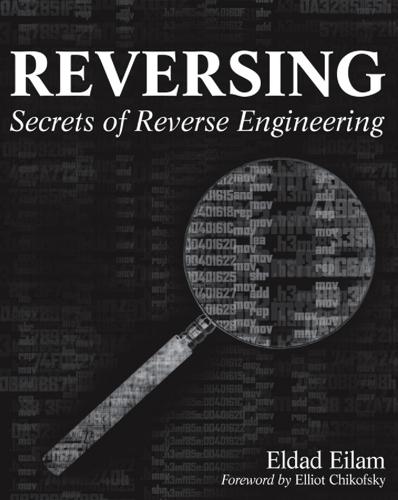
Reversing: Secrets of Reverse Engineering
by
Eldad Eilam
Published 15 Feb 2005
Case Study: The Generic Table API in NTDLL.DLL RtlInitializeGenericTable RtlNumberGenericTableElements RtlIsGenericTableEmpty RtlGetElementGenericTable Setup and Initialization Logic and Structure Search Loop 1 Search Loop 2 Search Loop 3 Search Loop 4 Reconstructing the Source Code RtlInsertElementGenericTable RtlLocateNodeGenericTable RtlRealInsertElementWorker Splay Trees RtlLookupElementGenericTable RtlDeleteElementGenericTable Putting the Pieces Together Chapter 6 144 145 146 151 152 153 155 159 161 163 164 165 165 168 170 178 187 188 193 194 Conclusion 196 Deciphering File Formats Cryptex Using Cryptex Reversing Cryptex The Password Verification Process 199 200 201 202 207 Catching the “Bad Password” Message The Password Transformation Algorithm Hashing the Password The Directory Layout Analyzing the Directory Processing Code Analyzing a File Entry Dumping the Directory Layout The File Extraction Process Scanning the File List Decrypting the File The Floating-Point Sequence The Decryption Loop Verifying the Hash Value The Big Picture Digging Deeper Conclusion 207 210 213 218 218 223 227 228 234 235 236 238 239 239 241 242 xvii xviii Contents Chapter 7 Auditing Program Binaries Defining the Problem Vulnerabilities Stack Overflows A Simple Stack Vulnerability Intrinsic Implementations Stack Checking Nonexecutable Memory Heap Overflows String Filters Integer Overflows Arithmetic Operations on User-Supplied Integers Type Conversion Errors Case-Study: The IIS Indexing Service Vulnerability CVariableSet::AddExtensionControlBlock DecodeURLEscapes Chapter 8 243 243 245 245 247 249 250 254 255 256 256 258 260 262 263 267 Conclusion 271 Reversing Malware Types of Malware 273 274 Viruses Worms Trojan Horses Backdoors Mobile Code Adware/Spyware 274 274 275 276 276 276 Sticky Software Future Malware Information-Stealing Worms BIOS/Firmware Malware Uses of Malware Malware Vulnerability Polymorphism Metamorphism Establishing a Secure Environment The Backdoor.Hacarmy.D Unpacking the Executable Initial Impressions The Initial Installation Initializing Communications Connecting to the Server Joining the Channel Communicating with the Backdoor Running SOCKS4 Servers Clearing the Crime Scene The Backdoor.Hacarmy.D: A Command Reference Conclusion 277 278 278 279 280 281 282 283 285 285 286 290 291 294 296 298 299 303 303 304 306 Contents Part III Cracking 307 Chapter 9 Piracy and Copy Protection Copyrights in the New World The Social Aspect Software Piracy 309 309 310 310 Defining the Problem Class Breaks Requirements The Theoretically Uncrackable Model Types of Protection Media-Based Protections Serial Numbers Challenge Response and Online Activations Hardware-Based Protections Software as a Service Advanced Protection Concepts Crypto-Processors Digital Rights Management DRM Models The Windows Media Rights Manager Secure Audio Path Watermarking Trusted Computing Attacking Copy Protection Technologies Conclusion Chapter 10 Antireversing Techniques Why Antireversing? Basic Approaches to Antireversing Eliminating Symbolic Information Code Encryption Active Antidebugger Techniques Debugger Basics The IsDebuggerPresent API SystemKernelDebuggerInformation Detecting SoftICE Using the Single-Step Interrupt The Trap Flag Code Checksums Confusing Disassemblers Linear Sweep Disassemblers Recursive Traversal Disassemblers Applications Code Obfuscation Control Flow Transformations Opaque Predicates Confusing Decompilers Table Interpretation 311 312 313 314 314 314 315 315 316 317 318 318 319 320 321 321 321 322 324 324 327 327 328 329 330 331 331 332 333 334 335 335 336 337 338 343 344 346 346 348 348 xix xx Contents Inlining and Outlining Interleaving Code Ordering Transformations Data Transformations Modifying Variable Encoding Restructuring Arrays Conclusion Chapter 11 Breaking Protections Patching Keygenning Ripping Key-Generation Algorithms Advanced Cracking: Defender Reversing Defender’s Initialization Routine Analyzing the Decrypted Code SoftICE’s Disappearance Reversing the Secondary Thread Defeating the “Killer” Thread Loading KERNEL32.DLL Reencrypting the Function Back at the Entry Point Parsing the Program Parameters Processing the Username Validating User Information Unlocking the Code Brute-Forcing Your Way through Defender Protection Technologies in Defender Localized Function-Level Encryption Relatively Strong Cipher Block Chaining Reencrypting Obfuscated Application/Operating System Interface Processor Time-Stamp Verification Thread Runtime Generation of Decryption Keys Interdependent Keys User-Input-Based Decryption Keys Heavy Inlining Conclusion Part IV Beyond Disassembly Chapter 12 Reversing .NET Ground Rules .NET Basics Managed Code .NET Programming Languages Common Type System (CTS) Intermediate Language (IL) The Evaluation Stack Activation Records 353 354 355 355 355 356 356 357 358 364 365 370 377 387 396 396 399 400 401 402 404 406 407 409 409 415 415 415 416 416 417 418 418 419 419 419 421 423 424 426 426 428 428 429 430 430 Contents IL Instructions IL Code Samples Counting Items A Linked List Sample Decompilers Obfuscators Renaming Symbols Control Flow Obfuscation Breaking Decompilation and Disassembly Reversing Obfuscated Code XenoCode Obfuscator DotFuscator by Preemptive Solutions Remotesoft Obfuscator and Linker Remotesoft Protector Precompiled Assemblies Encrypted Assemblies Conclusion Chapter 13 Decompilation Native Code Decompilation: An Unsolvable Problem?
…
Types of Protection Let us discuss the different approaches to software copy protection technologies and evaluate their effectiveness. The following sections introduce mediabased protections, serial-number-based protections, challenge response and online activations, hardware-based protections, and the concept of using software as a service as a means of defending against software piracy. Media-Based Protections Media-based software copy protections were the primary copy protection approach in the 1980s. The idea was to have a program check the media with which it is shipped and confirm that it is an original. In floppy disks, this was implemented by creating special “bad” sectors in the distribution floppies and verifying that these sectors were present when the program was executed.
…
Keeping the encryption keys safe inside the dongle makes it effectively impossible to emulate the dongle. At that point the only approach a cracker can take is to rip the decrypted code from memory piece by piece. Remember that smart protection technologies never keep the entire program unencrypted in memory, so this might not be as easy as it sounds. Software as a Service As time moves on, more and more computers are permanently connected to the Internet, and the connections are getting faster and more reliable. This has created a natural transition towards server-based software. Server-based software isn’t a suitable model for every type of software, but certain applications can really benefit from it.

The Fourth Industrial Revolution
by
Klaus Schwab
Published 11 Jan 2016
Source: Frey, C.B. and M.A. Osborne, “The Future of Employment: How Susceptible Are Jobs to Computerisation?”, 17 September 2013 Positive impacts – Cost reductions – Efficiency gains – Unlocking innovation, opportunities for small business, start-ups (smaller barriers to entry, “software as a service” for everything) Negative impacts – Job losses – Accountability and liability – Change to legal, financial disclosure, risk – Job automation (refer to the Oxford Martin study) The shift in action Advances in automation were reported on by FORTUNE: “IBM’s Watson, well known for its stellar performance in the TV game show Jeopardy!
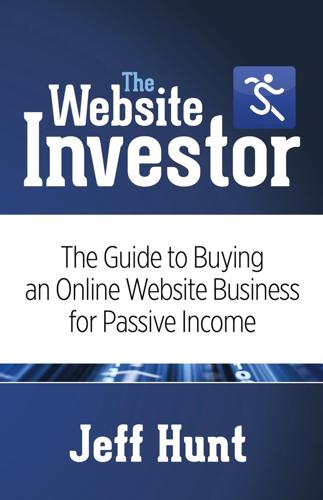
The Website Investor: The Guide to Buying an Online Website Business for Passive Income
by
Jeff Hunt
Published 17 Nov 2014
There are successful monetization methods for free apps, but free apps need to have a large install base to pay off. I expect to see a merger of the kind of tools and functions offered by current apps and the easy accessibility of websites in the future. An “App as a Service” model similar to the “Software as a Service” model will emerge. Apps have to be independently downloaded. Websites can all be accessed from a single browser. The new model will provide app functionality delivered through a generic, browser-like service. You read it here first. As an example of how unpredictable the ROI with apps is, consider my friend Joel Comm.

The Future of Technology
by
Tom Standage
Published 31 Aug 2005
In fact, vendors are already changing their business models, mostly by moving up the technology stack. Sun, which made a killing during the dotcom boom by selling high-end servers, is trying to become more of a software firm and a builder of power plants 37 THE FUTURE OF TECHNOLOGY for computing utilities. And much of Microsoft’s .net effort is about software as a service. Yet it is ibm that is betting most on the prediction that the it industry will follow historic patterns of evolution. Big Blue expects profits to migrate to software and services (see Chart 1.9), and is managing its product portfolio accordingly. For example, it has sold its hard-drive business and acquired the consulting arm of PricewaterhouseCoopers, an accountancy firm.
…
People do not put safes into their basements but open bank accounts. Similarly, “most people shouldn’t build their own aeroplanes,” says Sun’s Mr Papadopoulos. “They shouldn’t even own them; in fact, they shouldn’t even rent them; what they should do is rent a seat on one.” In it, the equivalent of renting a seat on an aircraft is to rent software as a service from specialised firms called “application service providers”, or asps. These companies build huge datacentres so that other companies do not have to. The best-known asp today is Salesforce.com, a San Francisco firm that made its debut on the stockmarket in June 2004. As the name suggests, Salesforce.com specialises in software that salespeople use to keep track of their marketing leads and client information.

Seeking SRE: Conversations About Running Production Systems at Scale
by
David N. Blank-Edelman
Published 16 Sep 2018
Always weigh whether a solution/integration under consideration is both your core competency as well as the company’s core competency. Third parties offer specialized solutions and have teams of engineers working to expand their value proposition by building additional features and services. A Software as a Service (SaaS) solution for log aggregation might be more effective in the long run than trying to adopt an open source solution such as Elasticsearch. You have to decide whether Elasticsearch is really something that you, your team, and your company need to focus on. Integration timeline? However long you think it’s going to take to complete an integration, double it.
…
Johannes Russek, officially former SRE and technical product manager at Spotify, unofficially dropped-ball finder and software systems archeologist. Favorite tool is a whiteboard. Chapter 8. Introducing SRE in Large Enterprises Sriram Gollapalli, Agilent Technologies This chapter describes my story of how an acquired Software as a Service (SaaS) startup (founded in 2006) introduced SRE into a large enterprise (originally founded in the 1930s), including the challenges and opportunities of traditional IT, operations, support/quality teams, and distinct product engineering divisions working in concert with one another. This is intended for managers who understand that SRE is what their organization and products need but they are struggling to determine how to implement these ideas.
…
At its core, site reliability engineering embodies and encourages the same exact principles that have been associated with DevOps since the term began entering the web operations lexicon. Building and operating digital services with 24/7 availability expectations has become a necessity for more than just Software as a Service vendors. Businesses, governments, and organizations across nearly every industry are faced with balancing rapid development of new functionality with maintaining the health and availability of the service. Engineering practices, teams, and individuals lumped in to the title of SRE helps businesses assign a concrete effort to these roles.
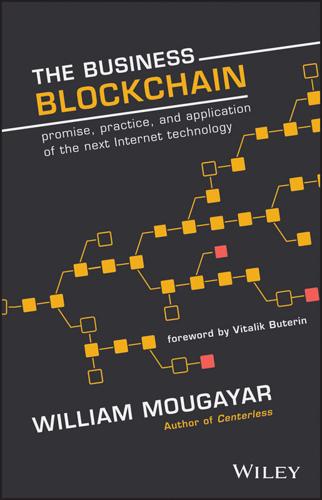
The Business Blockchain: Promise, Practice, and Application of the Next Internet Technology
by
William Mougayar
Published 25 Apr 2016
Contractual Law is being sliced off, for example via Ricardian contracts that track the liability of one party to another (for example, OpenBazaar is implementing them in their peer-to-peer e-commerce protocol). Here is a profound implication for large enterprises. Business users will also be able to run their own smart contracts, P2P apps, and other Dapps on open blockchains without seeking permission from IT departments, in the same way that Software-as-a-Service (SaaS) was a Trojan horse that enabled employees to sign up for services on their own without disturbing the company infrastructures (until it was time to perform some integrations). This new form of SaaS will be possible because a new infrastructure layer can emerge by being supported on a peer-to-peer and shared-cost basis.
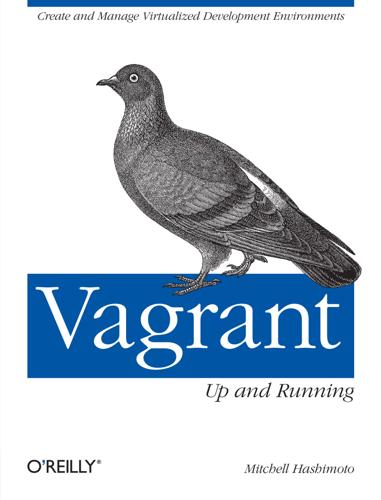
Vagrant: Up and Running
by
Mitchell Hashimoto
Published 29 May 2013
Foreword Jeff Sussna Founder and Principal, Ingineering.IT Every so often, you encounter software that immediately strikes you with its combination of clarity, simplicity, power, and usefulness. You simultaneously say “wow!” and “why didn’t I think of that?” But you couldn’t have thought of it. It needs an author who can conceive and implement that particular vision, not just appreciate it. Vagrant is that kind of software, and Mitchell Hashimoto is that kind of author. Software as a service dramatically lowers the cost of change for its users. As a result, they come to expect near-instantaneous responsiveness from software vendors. The ability to continuously deliver new features is taking its place alongside the features themselves as a competitive advantage. Service providers face the conundrum of needing to accelerate velocity without sacrificing quality.
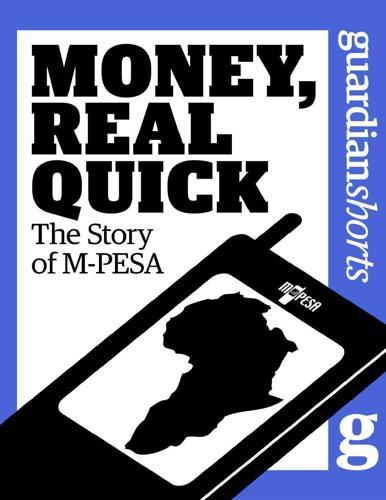
Money, Real Quick: The Story of M-PESA
by
Tonny K. Omwansa
,
Nicholas P. Sullivan
and
The Guardian
Published 28 Feb 2012
Flexus Technologies is a Kenyan company that partnered with PayG Solutions from the U.K (several PayG programmers worked on the initial M-PESA software). Kopo Kopo is a U.S.-based Company with East African headquarters at the m:lab incubator in Nairobi, with seed-capital investments from the U.S. ******ebook converter DEMO Watermarks******* (Gray Ghost Ventures and Presumed Abundance), Kopo Kopo builds software-as-a-service (SAAS) platforms to integrate mobile money system with a range of back-office systems used by MFIs and SACCOs, who lease the software for $400 or less per month. Contrast that with paying anywhere from 5 to 10 employees from $20,000 to $50,000 a year. NAIROBI’S SWAHILI SILICON VALLEY The rapid spread of mobile telephony starting in 2000, followed by the rapid spread of mobile money starting in 2007, has clearly spawned a new ICT (Information, and Communications Technology) cluster in Nairobi.
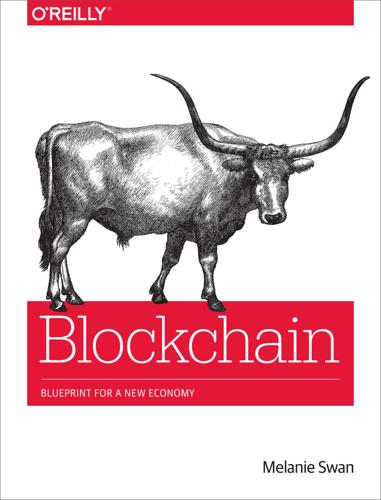
Blockchain: Blueprint for a New Economy
by
Melanie Swan
Published 22 Jan 2014
Looking ahead, reconfiguring all of business and commerce with smart contracts in the Bitcoin 2.0 era could likely be complicated and difficult to implement, with many opportunities for service providers to offer implementation services, customer education, standard setting, and other value-added facilitations. Some of the many types of business models that have developed with enterprise software and cloud computing might be applicable, too, for the Bitcoin economy—for example, the Red Hat model (fee-based services to implement open source software), and SaaS, providing Software as a Service, including with customization. One possible job of the future could be smart contract auditor, to confirm that AI smart contracts running on the blockchain are indeed doing as instructed, and determining and measuring how the smart contracts have self-rewritten to maximize the issuing agent’s utility.

Lifestyle Entrepreneur: Live Your Dreams, Ignite Your Passions and Run Your Business From Anywhere in the World
by
Jesse Krieger
Published 2 Jun 2014
Sites like Alibaba.com have vendors in their Software section that have ready-made, easily customizable CRM solutions that are geared specifically for e-commerce of various goods. You can also hire programming firms from sites such as Elance.com or Guru.com to customize free open-source CRM software such as SugarCRM. Perhaps the easiest solution, however, is using off-the-shelf software-as-a-service (SaaS) CRM platforms such as Salesforce.com, crm.zoho.com, or vtiger.com. My recommendation: Use Zoho.com to start with. It’s free for up to three uses and very affordable thereafter. Their CRM setup already includes all the forms and modules you will need for your business (Sales Order, Invoice, Purchase Order, etc.).
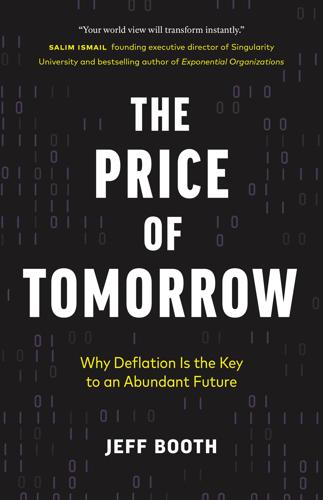
The Price of Tomorrow: Why Deflation Is the Key to an Abundant Future
by
Jeff Booth
Published 14 Jan 2020
Instead, automotive production, and the jobs with it, could fall by 50 percent or more as autonomous cars move into the mainstream. Automotive companies, instead of making money through the sale and service of vehicles, will need to adjust their models to remain viable. Most likely that adjustment will have them selling cars as a service option, similar to software-as-a-service models in technology delivery today. Those aren’t the only second- and third-order effects of self-driving cars. As much as riders have benefitted from great new services, it is difficult to see how the ride-sharing companies, such as Uber or Lyft are going to make money in the future. The same key consideration for how to decrease their costs and increase their profits by removing drivers (automation) is going to make them compete against automotive manufacturers reinventing their models to stay in business.
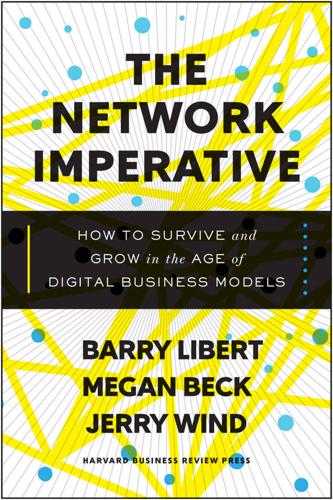
The Network Imperative: How to Survive and Grow in the Age of Digital Business Models
by
Barry Libert
and
Megan Beck
Published 6 Jun 2016
These packages of delight and surprise are only the latest iteration in the ongoing business quest for low-cost, recurring revenue from happy and loyal customers. Subscriptions have been around for a long time, and so have contracts, both of which connect customers and companies over the long term. Software-as-a-service has already swept the software industry, with Microsoft and Adobe moving to the subscription model for key products. But the truth is, our ongoing relationships with the newspapers we subscribe to, the cell phone providers we contract with, and the software makers we rely on don’t bring much joy or intimacy.
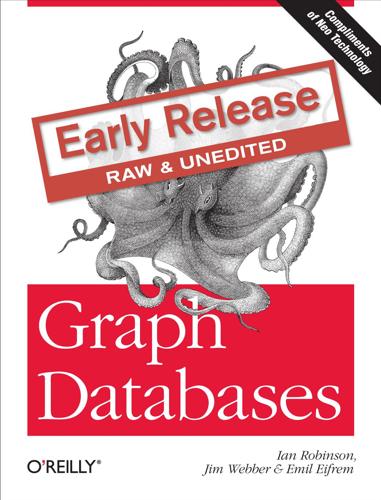
Graph Databases
by
Ian Robinson
,
Jim Webber
and
Emil Eifrem
Published 13 Jun 2013
See http://en.wikipedia.org/wiki/Complex_event_processing 98 | Chapter 5: Graphs in the Real World • Which resource can an end-user access? • Given a particular resource, who can modify its access settings? (Bottom-up) Graph database access control and authorization solutions are particularly applicable in the areas of content management, federated authorization services, social networking preferences, and software as a service offerings, where they realizing minutes to milli‐ seconds increases in performance over their hand-rolled, relational predecessors. Real-World Examples In this section we describe three example use cases in detail: social and recommenda‐ tions, authorization and access control, and logistics.
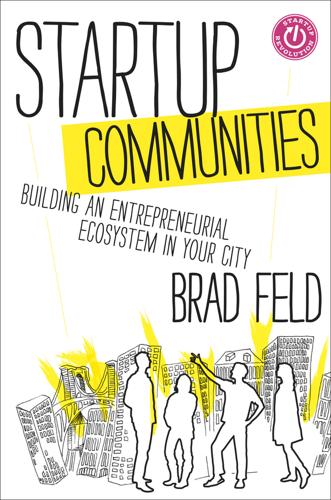
Startup Communities: Building an Entrepreneurial Ecosystem in Your City
by
Brad Feld
Published 8 Oct 2012
I bumped into Fred Wilson’s blog (http://startuprev.com/l4) and Brad Feld’s blog (http://startuprev.com/o4 and http://startuprev.com/h1) and was amazed at the wealth of knowledge and wisdom that these two individuals were sharing freely on the Internet. I met this small team sitting in the old fishing factory in the Reykjavik Harbor, working on text mining. They were each younger than 25 years old and called their company CLARA. They wanted to build a software-as-a-service company that helped gaming companies understand their communities. I was startled. These kids were not worried about the ISK or the government or the global financial crisis or anything. They were building something and wanted to sell it to create value. I was impressed. I found out that they needed capital to get their minimum viable product onto the market.
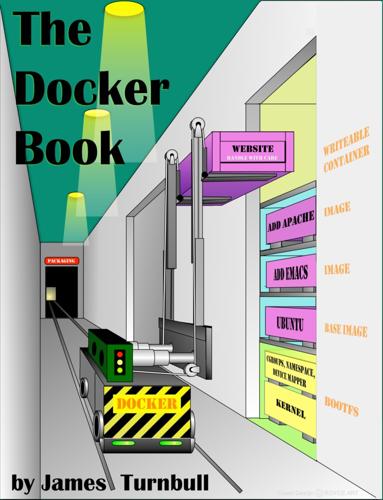
The Docker Book
by
James Turnbull
Published 13 Jul 2014
Building and testing complex applications and architectures on a local host prior to deployment into a production environment. Building a multi-user Platform-as-a-Service (PAAS) infrastructure. Providing lightweight stand-alone sandbox environments for developing, testing, and teaching technologies, such as the Unix shell or a programming language. Software as a Service applications; Highly performant, hyperscale deployments of hosts. You can see a list of some of the early projects built on and around the Docker ecosystem in the blog post here. Docker with configuration management Since Docker was announced, there have been a lot of discussions about where Docker fits with configuration management tools like Puppet and Chef.

Human + Machine: Reimagining Work in the Age of AI
by
Paul R. Daugherty
and
H. James Wilson
Published 15 Jan 2018
James Wilson, Allan Alter, and Sharad Sachdev, “Business Processes Are Learning to Hack Themselves,” Harvard Business Review, June 27, 2016, https://hbr.org/2016/06/business-processes-are-learning-to-hack-themselves; author interview with Andreas Nettsträter, February 8, 2016. 6.Steve Lohr, “G.E., the 124-Year-Old Software Start-Up,” New York Times, August 27, 2016, https://www.nytimes.com/2016/08/28/technology/ge-the-124-year-old-software-start-up.html. 7.Charles Babcock, “GE Doubles Down on ‘Digital Twins’ for Business Knowledge,” Information Week, October 24, 2016, http://www.informationweek.com/cloud/software-as-a-service/ge-doubles-down-on-digital-twins-for-business-knowledge/d/d-id/1327256. 8.Ibid. 9.Tomas Kellner, “Wind in the Cloud? How the Digital Wind Farm Will Make Wind Power 20 Percent More Efficient,” GE Reports, September 27, 2015, http://www.gereports.com/post/119300678660/wind-in-the-cloud-how-the-digital-wind-farm-will/. 10.Author interview with Joe Caracappa, October 13, 2016. 11.Leanna Garfield, “Inside the World’s Largest Vertical Farm, Where Plants Stack 30 Feet High,” Business Insider, March 15, 2016, http://www.businessinsider.com/inside-aerofarms-the-worlds-largest-vertical-farm-2016-3. 12.
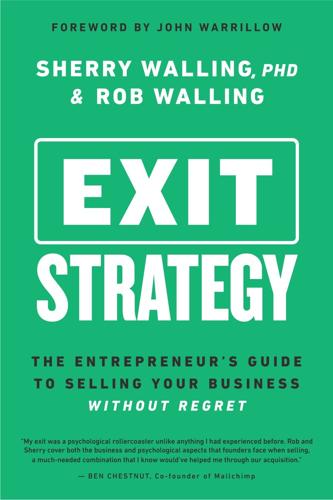
Exit Strategy
by
Sherry Walling, Rob Walling
Published 22 Nov 2024
For detailed guidance on deal structure and company preparation, see our resources at the end of this book for well-crafted, practical content about preparing your business for your departure. Whether you’re selling an e-commerce company, a children’s brand, a trapeze franchise, a consulting agency, or a software-as-a-service (SaaS) business, we’re here to help you prepare. Every exit is unique, and there’s no such thing as a game plan that will lead you through all the steps. As the Spanish poet Antonio Machado wrote: By walking, the path is made And when you look back You’ll see a road Never to be trodden again.

WTF?: What's the Future and Why It's Up to Us
by
Tim O'Reilly
Published 9 Oct 2017
A lot depends not just on how much data you have, of course, but how able you are to make sense of it. There Google, Tesla, and Uber have a big edge on traditional auto companies. THE END OF THE SOFTWARE RELEASE CYCLE In the PC era, we were accustomed to thinking of software as an artifact. Companies had to start thinking of software as a service. This meant we’d see a whole new approach to software development. While I didn’t develop this idea as fully as the previous three, it was clear even in 2005 that what we now call “iterative, user-centered, data-driven development” would be the new normal. Software built in what we now call “the cloud” is constantly updated.
…
Its search engine is the pervasive neocortex of the information economy, a critical component of the global brain that the Internet has become, connecting billions of humans with the data and documents we collectively create. The principles that led me to make Google the poster child for Web 2.0 are still unfolding as drivers of the future: big data, algorithms, collective intelligence, software as a service, with the addition of a new focus on machine learning and AI. Understanding how algorithmic systems shape not just new services but also society is a central theme of this book. The Android phone operating system puts Google’s services into the pockets of billions of people. The company kicked off the race for self-driving cars and has been a leader in their development.
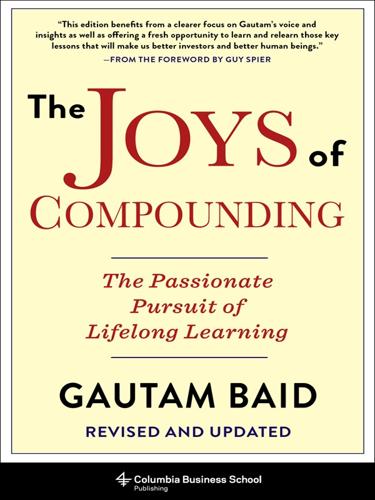
The Joys of Compounding: The Passionate Pursuit of Lifelong Learning, Revised and Updated
by
Gautam Baid
Published 1 Jun 2020
TABLE 29.1 Sum of the parts valuation Business segment Price/share (Rs) Valuation method Existing power business 956 1× FY2019 book value Chandrapur power plant 61 15% discount on invested equity Haldia power plant 86 On equity invested CESC property 19 On equity invested Spencer’s and others (58) Discount for loss-making retail business 11. The reported earnings in financial statements are becoming less useful for analytical purposes in the modern digital world. In his second quarter 2018 letter to Heller House fund clients, Marcelo Lima wrote: “Cheap” is a poor proxy for value: the new business models…—SaaS [software as a service] in particular—are not well suited to traditional GAAP [generally accepted accounting principles] accounting. Here’s why: if distribution costs are zero, the optimal strategy is to gain as many customers for your software product, as quickly as possible. In digital businesses, there are increasing advantages to scale, and many of these companies operate in winner-take-all or winner-take-most markets.
…
E., 40 Shleifer, Andrei, 348 short-term thinking, Keynes on, 108 sidecar investing, 313–315 Siegel, Jeremy, 171; on fear, 274 signal and noise, 295–296 Simon, Herbert, 14–15, 26, 328 simplicity, 68, 152; Buffett on, 72; Einstein on, 73; focus and, 74; Munger on, 72–73; Prabai on, 70; steps for, 73–76; as way of life, 76–77 Sinclair, Upton, 78 Sinegal, Jim, 124 Singleton, Henry, 287 Singularity Is Near, The (Kurzweil), 318 six sigma, 261 Skinner, B. F., 146 SKS Microfinance, 342 S&L crisis. See savings and loan crisis “Slow Dance” (Weatherford), 375–376 Smith, Adam, 10, 13, 93, 278 Smith, Edgar Lawrence, 215 Smith, Terry, 175 Snowball, The, 5–6 social media, 14, 105 Socrates, 38 software as a service (SaaS), 311 Solin, Dan, 271 “Solitude and Leadership” (Deresiewicz), 30 Son, Masayoshi, 314 Soros, George, 190, 247, 285, 319 South Sea Bubble, 282, 339 S&P 500, 167, 255, 270, 279–280; constituents of, 336; largest companies in, 231 specialists, Munger on, 27 special situations, Graham on, 199–200 Spier, Guy, 46, 48, 87, 137, 370 spinoffs: Greenblatt on, 202–203; Klarman on, 201; long-term potential of, 205; Lynch on, 204; performance of, 202, 204; returns from, 200; in United States, 204; Wall Street on, 204–205 Srivastava, Anup, 312–313 stalwarts, Lynch on, 231–232 Stanley, Thomas, 79 status quo bias, 135 staying power, 266 stereotyping, 240; Kahneman on, 238–239 stock market: luck in, 331; as pari-mutuel system, 297 stocks: anchoring and, 337–338; blue-chip, 230–231; bonds and, 121–122; Buffett on, 121; certainty and, 212; commodity, 191–192; comparison of returns, 220; Graphite India, 188; HEG, 188, 195; high-quality, 234; Loeb on, 216; Lynch on, 236; maturity of, 121; par value of, 121; penny, 313; performance of, 299; time frame and, 185; total real returns on, 274 strangers, kindness of, 264–265 stress-influence tendency, 342–343 Subex, 334–335 subtractive epistemology, Taleb on, 21 success: Buffett on, 209, 327; core test of, 209 sum of parts valuation, 311 Sunstein, Cass, 345 Sun Tzu, 142 super-cat insurance, 313 Superforecasting (Tetlock & Gardner), 292 supply deficits, 194 Surat Diamond Bourse, 198 surfing, Munger on, 315 Surowiecki, James, 241 Swensen, David, 247 switching costs: in business models, 211; ROIC and, 223 syntopical reading, 17 Tagore, Rabindranath, 76 Taleb, Nassim Nicholas, 15, 145, 253, 259, 261, 266, 319; on life, 321; on Lindy effect, 16; on subtractive epistemology, 21 Talent is Overrated (Colvin), 42 tangible equity, pretax return on, 132 target prices, 122 taxes, 130; profit before, 132 tax-free municipal bonds, 88–89 tech bubble, 282 Techno-Funda, 185–186 technology: Munger on, 289; proprietary, 211 Templeton, John, 236; on bull markets, 233; on investment, 299 Teresa (Mother), 66, 370 Tetlock, Philip, 294–295; on Bayesian methods, 292–293 Thailand, 326 Thaler, Richard, 345 Theory of Moral Sentiments, The (Smith, A.), 93 Thiel, Peter, 319 thinking: calculation and, 309–313; Darwin on, 296; fine-tuning, 305–306; first principles, 19–21; flexibility of, 300; Franklin on, 297; golden rule of, 296; Griffin on, 29–30; happiness and, 352; about market conditions, 232–240; mental models and, 29–30; Munger on, 158–159; opportunity costs and, 305–306; positive, 351–356; second-level, 306; time management and, 11–13 Thinking, Fast and Slow (Kahneman), 292 Thorndike, William, 227 Thorp, Ed, 249, 259 three-bucket framework, 28 thumb-sucking, Munger on, 300 Tide, 222 time: Buffett on, 216; nonrenewability of, 11–12; stocks and, 185; wealth and, 78–79 timelessness, of wisdom, 16 time management, 6; learning and, 11–13; reading and, 11–13; thinking and, 11–13 Toffler, Alvin, 284 Tolle, Eckhart, 351 Tolstoy, Leo, 12 Torrent Pharmaceuticals, 197–198 total debt, 131 total real returns, 274 trade-offs, 40–41 Treasury bonds, 255 Treasury rate, 58 Truman, Harry, 281 trust: building, 49; earning, 49–50; Munger on, 49; Welch on, 49 truths, absolute, 55–56 turnarounds, Buffett on, 294 Tversky, Amos, 141, 344 twaddle tendency, 335 Twain, Mark, 16, 39, 187, 264, 346 Twitter, market conditions and, 236 Tzu, Lao, 285 Uber, 225, 286 uncertainty: certainty and, 54–55; Feynman on, 55; risk and, 240, 314 underspending, 79 understanding, 31 Undervalued Corporation, 217 unforced errors, 219 United States (US): equity markets in, 280; GDP of, 278; spinoffs in, 204 United Technologies, 39–40 Upanishads, 33 US.
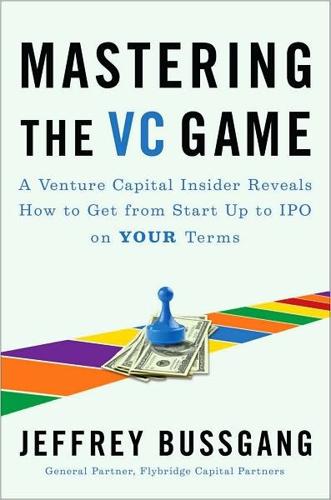
Mastering the VC Game: A Venture Capital Insider Reveals How to Get From Start-Up to IPO on Your Terms
by
Jeffrey Bussgang
Published 31 Mar 2010
” So Gail started fund-raising immediately. “We had a lot of things going against us. We didn’t have a sweet spot in the market. It was still the world of enterprise software with million-dollar deals the norm. We were saying, ‘We’re going to sell our product for thirty dollars a month.’ Plus, the idea of ‘software as a service’ didn’t really exist yet.” Gail pitched forty firms looking for a first round of VC investment. “I was a first-time CEO. It was my first time raising money. First-time everything. What befuddled me was that I was pitching a very practical and reasonable growth trajectory, but everybody kept telling me, ‘Oh no, that’s not aggressive enough.
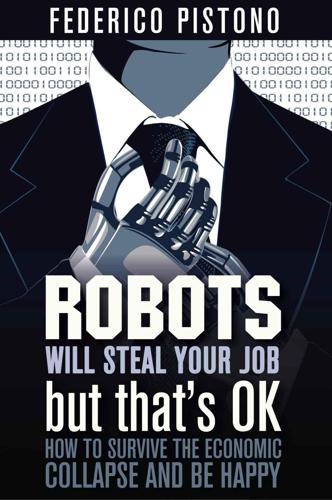
Robots Will Steal Your Job, But That's OK: How to Survive the Economic Collapse and Be Happy
by
Pistono, Federico
Published 14 Oct 2012
The approach by Andrew Ng inspired many others, who are now teaching under the umbrella of a non-profit called ‘Coursera’, with high level subjects such as Model Thinking, Natural Language Processing, Game Theory, Probabilistic Graphical Models, Cryptography, Design and Analysis of Algorithms, Software as a Service, Computer Vision, Computer Science, Machine Learning, Human-Computer Interaction, Making Green Buildings, Information Theory, Anatomy, and Computer Security. Needless to say, this is just the beginning. It is the natural evolution of education when combined with technology. Embrace change, or die.

Choose Yourself!
by
James Altucher
Published 14 Sep 2013
Catch-22: showing people there are a small chance they’ll see a hundred-fold return on their money. The secret of salesmanship is getting through the Catch-22. Rejecting a cash offer for your company when you have almost no revenues. Hello Friendster and foursquare. What are some signs of a professional? Going from bullshit product to services to software as a service (SaaS) product. (Corollary: the reverse is amateur hour). Cutting costs every day. When you have a billion in revenues, staying focused. When you have zero revenues, staying unfocused and coming up with new ideas every day. Saying no to people who are obvious losers. Saying yes to any meeting at all with someone who is an obvious winner.
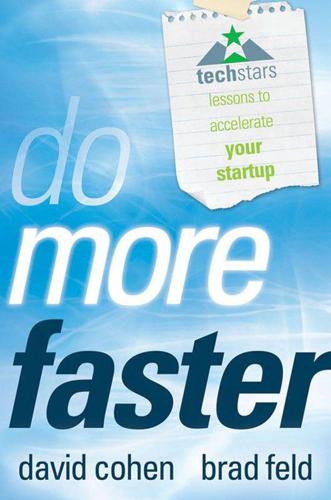
Do More Faster: TechStars Lessons to Accelerate Your Startup
by
Brad Feld
and
David Cohen
Published 18 Oct 2010
—accelgolf.com ADstruc (2010)—is an online buying platform for outdoor advertising that enables an auction and listing-based marketplace and makes the process of buying and selling faster and more profitable.—adstruc.com AmpIdea (2009)—is helping new parents by offering services through a web-enabled baby monitor.—ampidea.com AppX (2008)—provides software as a service to parties that invest in venture capital and private equity.—app-x.com Appswell (2010)—is a mobile crowd-sourcing platform that allows people, companies, and brands to harness the wisdom of their crowds.—appswell.com Baydin (2009)—creates e-mail utilities and collaboration catalysts that make e-mail even more valuable.
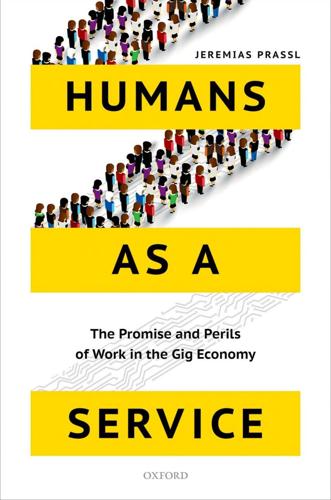
Humans as a Service: The Promise and Perils of Work in the Gig Economy
by
Jeremias Prassl
Published 7 May 2018
On the one hand, there are those who enthusiastically promote the gig economy as nothing less than a fundamental reinvention of labour markets, weaving ‘a fascinating tapestry of innovation, one that provides an early glimpse of what capitalist societies might evolve into over the coming decades’5—a story of platforms facilitating ‘the exchange of goods, services, or social currency, thereby enabling value creation for all participants’.6 Vociferous critics, on the other hand, castigate gig platforms for extend- ing ‘a harsh and deregulated free market into previously protected areas of our lives’,7 thus: forging an economic system in which those with money will be able to use faceless, anonymous interactions via brokerage websites and mobile apps to hire those without money by forcing an online bidding war to see who will charge the least for their labor.8 Humans as a Service Back in 2006, Jeff Bezos had no such qualms. The CEO of one of the world’s largest tech companies was excited by MTurk’s business promise. In addition to books, groceries, and gadgets, Amazon would henceforth sell work: You’ve heard of software as a service— —Well, this is basically humans as a service.9 Humans have always provided services to their employers and customers, of course. As workers, however, they enjoy significant legal and economic pro- tection in return, from minimum wage and unfair dismissal laws, to social security and pensions.
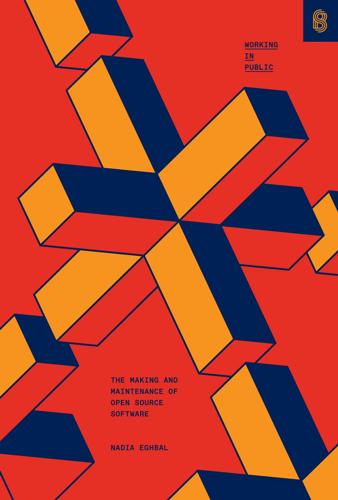
Working in Public: The Making and Maintenance of Open Source Software
by
Nadia Eghbal
Published 3 Aug 2020
In terms of value proposition, projects are attractive to corporate funders because they deliver commensurate benefits: code security and stability, influence, attracting hiring talent. And from an execution standpoint, funding projects is not unlike paying for software: they become a line item in a team’s budget, like expensing a SaaS (software as a service) product. By contrast, funding an individual developer is more like a contractor agreement, in which a company “hires” an individual for their services. These arrangements tend to be harder to pull off, both in terms of execution and making the case for the decision internally. Raising money on the basis of personal reputation is liberating, in that developers like Sindre Sorhus aren’t tied to any one specific project.

Company of One: Why Staying Small Is the Next Big Thing for Business
by
Paul Jarvis
Published 1 Jan 2019
Happy clients then did sales pitches for me, unasked, by telling everyone they knew that I was the person to hire for design work. For over a decade (until I moved away from services into products), these word-of-mouth referrals created a waiting list a few months long. Even product businesses like Trello—a SaaS (software as a service) that lets you collaborate on projects online—have grown their reach and customer numbers, mostly through word of mouth. Trello has had 100 percent organic growth (i.e., no paid ads) to more than ten million users simply because people talk about its product, often, and in places visible to large groups of people, like social media or blogs.
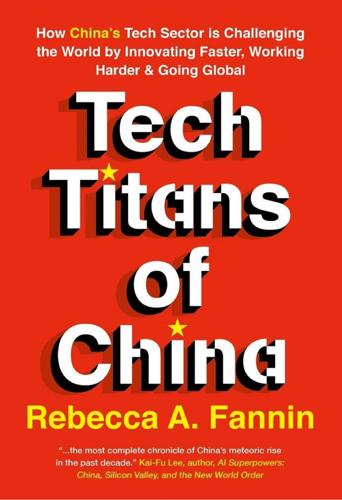
Tech Titans of China: How China's Tech Sector Is Challenging the World by Innovating Faster, Working Harder, and Going Global
by
Rebecca Fannin
Published 2 Sep 2019
In 2018, Chen pulled off the masterful feat of selling Renren’s failing social networking business and spinning off 44 of Renren’s portfolio company investments, including well-known social finance business SoFi in a controversial deal to his privately held Oak Pacific Interactive, controlled by Chen and his Renren cofounders. Renren is now left with a used car sales platform in China, a trucking app in the United States, a (software-as-a-service) business for the US real estate market—and a sagging stock price on the NYSE. Similarly, China’s once promising Amazon-like book retailer, Dangdang, and its cofounding wife-and-husband team, Peggy YuYu and Li Guoqing, faltered. Looking to one-up Amazon CEO Jeff Bezos in China, YuYu used her Wall Street smarts to expand Dangdang (sounds like a cash register) into selling apparel, toys, and linens and list the company on NYSE in 2010.
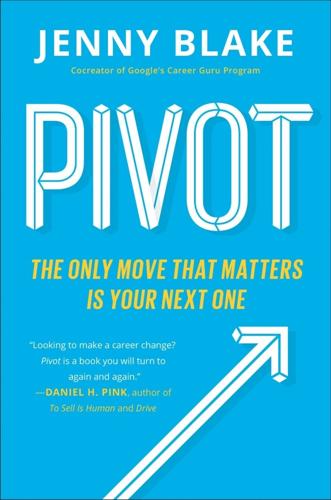
Pivot: The Only Move That Matters Is Your Next One
by
Jenny Blake
Published 14 Jul 2016
Subject matter expert (SME): Sharing ideas, solutions, and best practices on what you know about a specific area; forecasting or interpreting trends in your industry; disseminating knowledge and projections beyond the classroom. For example: in addition to teaching computer science at Georgetown University, Cal Newport shares “study hacks” for career success in his blog and books. Software as a service (SaaS): Create software or systems that improve efficiency or automate a specific market need. For example: online scheduling tools like Calendly and ScheduleOnce make booking meetings a snap; an accountability tracking service like AskMeEvery.com sends a question you have written, such as “Did you work out today?”
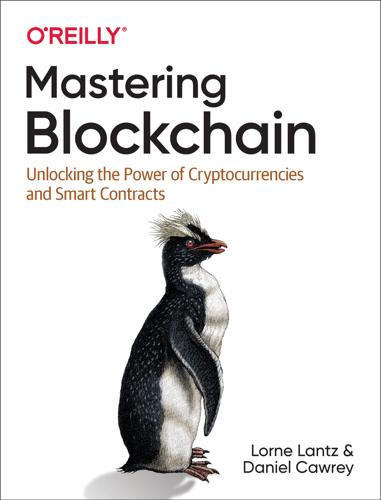
Mastering Blockchain: Unlocking the Power of Cryptocurrencies and Smart Contracts
by
Lorne Lantz
and
Daniel Cawrey
Published 8 Dec 2020
It is thus easier to shift ledgers or storage models after a contract has been created. Blockchain as a Service The concept of Blockchain as a Service (BaaS), where vendors provide easy-to-implement solutions that can be customized, is likely to grow as use cases for the technology increase. Similar to Software as a Service (SaaS) and cloud offerings, these blockchain products provide elements such as centralized management of users and distribution of nodes. Here are a few examples: Amazon Quantum Ledger Part of Amazon Web Services, the Quantum Ledger Database (QLDB) is a ledger that is secured by cryptography and uses the Ethereum and Hyperledger Fabric frameworks.

Future Crimes: Everything Is Connected, Everyone Is Vulnerable and What We Can Do About It
by
Marc Goodman
Published 24 Feb 2015
The cloud refers to the massive network of computing resources available online and the practice of using these remote servers to store, manage, and process the world’s information. The changing paradigm in computing means that less information is stored locally on our machines and is instead being hosted elsewhere on earth. We mostly do not buy software anymore; we just rent it or receive it for free using a new business model known as Software as a Service (SaaS). On the personal front, cloud computing means Google is storing our mail, Instagram our photographs, and Dropbox our documents—not to mention what mobile phones are automatically uploading to the cloud for us. In the corporate world, enterprise customers not only are using Dropbox but also have outsourced primary business functions that would have previously been handled inside the company to SaaS providers such as Salesforce.com, Zoho.com, and Box.com.
…
Crime as a Service With an untraceable illicit monetary system in place, crime is no longer something that you just commit; it is something you can buy. Crime as a Service (CaaS) is the new business model and allows all or part of an offense to be carried out by others, while the crime-trepreneur who organized and invested in the scheme is ensured the profit. Just as large corporations are increasingly using Software as a Service to carry out their enterprise operations beyond their core competencies, so too are criminals. One of the most oft-purchased services is that of IT infrastructure—the technological guts and pipes required to run any successful modern enterprise. But Crime, Inc. has special technological infrastructure needs, specifically for what has become an exceeding rare commodity these days: privacy and anonymity.

Technical Blogging: Turn Your Expertise Into a Remarkable Online Presence
by
Antonio Cangiano
Published 15 Mar 2012
Make your blog ultra-technical, with scores of behind-the-scene details regarding how you develop the software that you sell, and you’ll attract the attention of fellow developers. If your ideal customer base is developers or if you’re trying to hire some new talent, this could be a solid strategy. If that’s not the case, however, the explanation of your fancy continuous deployment setup for your SaaS (software as a service) won’t mean a thing to your customers. Likewise, taking an all-business approach in which you either share the details of how you run your startup or go into business topics at great length will tend to attract fellow entrepreneurs. Again, if they are your potential customers (e.g., your product is B2B), this approach can pay off.
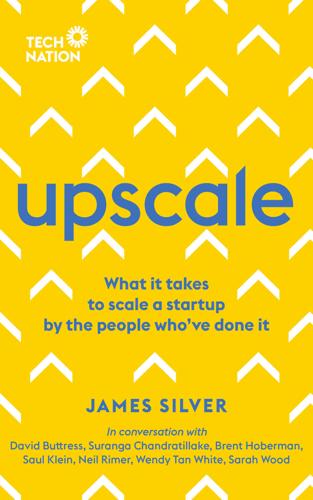
Upscale: What It Takes to Scale a Startup. By the People Who've Done It.
by
James Silver
Published 15 Nov 2018
Basic things like where you’re sourcing candidates from, how long it’s taking you to fill roles, how much time overall in the business is the whole hiring and/or interview process taking, which team members are the most effective interviewers - or whatever you feel is most helpful. Then you can measure and try to optimise around that. 15. Install an applicant tracking system (ATS) very early The entire hiring process will be much easier to manage if you’ve got an ATS in place. One of the London-based SaaS (software as a service) startups Index backed in 2017, Beamery, has the tagline ‘Treat candidates like customers’ - and that’s exactly the right approach to recruitment. Measure your recruiting process in the same way you measure sales - i.e. building a pipeline to source leads from, how the funnel breaks down, which parts are inefficient, what’s your conversion rate, and so on.

Live Work Work Work Die: A Journey Into the Savage Heart of Silicon Valley
by
Corey Pein
Published 23 Apr 2018
For the competitor,” I said. That was it. My time was up. The seconds passed like hours as I awaited judgment. Istvan was the first to break the silence. “So, I didn’t actually hear a product. It sounds like a service,” he said. “Yeah,” I said. “Strikes as a service.” “Which is not, you know—it’s not software as a service, but I guess it’s still SAAS. Nevertheless, this is not going to fly with a VC because it’s not scalable. VCs rarely, if ever, invest in service companies that require, you know, humans. That’s the biggest thing I see here.” I didn’t argue, but I knew he was wrong. Uber definitely required humans, for instance.
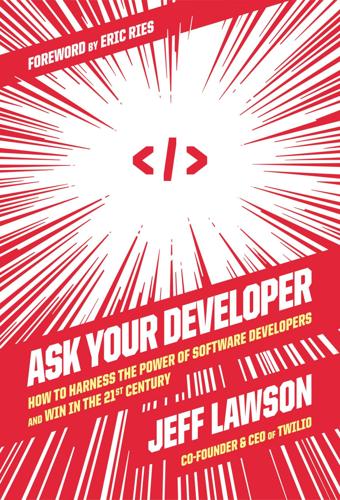
Ask Your Developer: How to Harness the Power of Software Developers and Win in the 21st Century
by
Jeff Lawson
Published 12 Jan 2021
They just used software to run their internal operations—accounting, enterprise resource planning, and the like. And if you were a line-of-business owner inside a company, such as a head of sales or HR, and you wanted software to run your department—well, you had to send a request to IT and then get in line. This problem got solved when the second era of software—Software as a Service (SaaS)—began, about twenty years ago. The company that pioneered this model is Salesforce. Its founder and CEO, Marc Benioff, interned as an assembly language programmer at Apple (translation: he was a hard-core coder) and after university joined Oracle, where he quickly became a legendary salesman.
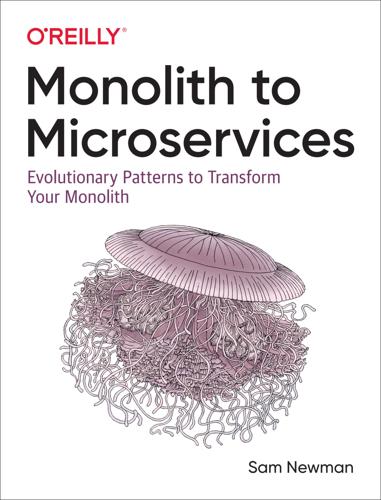
Monolith to Microservices: Evolutionary Patterns to Transform Your Monolith
by
Sam Newman
Published 14 Nov 2019
These might include things like payroll systems, CRM systems, and HR systems. The common factor here is that it’s software developed by other people, and you don’t have the ability to change the code. It could be off-the-shelf software you’ve deployed on your own infrastructure, or could be a Software-as-a-Service (SaaS) product you are using. Many of the decomposition techniques we’ll explore in this book can be used even with systems where you cannot change the underlying code. Challenges of Monoliths The monolith, be it a single-process monolith or a distributed monolith, is often more vulnerable to the perils of coupling—specifically, implementation and deployment coupling, topics we’ll explore more shortly.
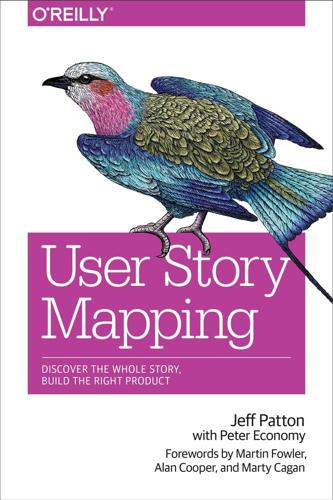
User Story Mapping: Discover the Whole Story, Build the Right Product
by
Jeff Patton
and
Peter Economy
Published 14 Apr 2014
He later describes it in more detail in his book Inspired: How to Create Products Customers Love (SVPG Press). Chapter 4. Plan to Finish on Time This is Aaron and Mike. They work for a company called Workiva. Workiva makes a suite of products on a platform called Wdesk. It solves big problems for large companies, and it’s one of the biggest software-as-a-service companies you’ve likely never heard of. Aaron and Mike look happy, don’t they? But that’s typical for people who’ve worked together to solve tough problems. Or could it be because the guy on the right has a beer in his hand? Nah, that’s not it. It’s that feeling from having solved a tough problem that’s making them happy.
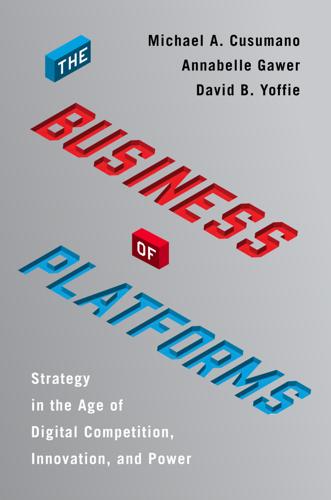
The Business of Platforms: Strategy in the Age of Digital Competition, Innovation, and Power
by
Michael A. Cusumano
,
Annabelle Gawer
and
David B. Yoffie
Published 6 May 2019
“We believe deeply in subscription models being the future, so we’re trying to build subscriptions that are priced based on the value that they deliver,” according to one GE executive.74 In addition to deriving income from customer subscriptions to its platform, GE hoped to generate revenue from taking a percentage on third-party application sales or subscription revenue. While Predix was primarily an innovation platform, GE wanted to position Predix as a hybrid platform by adding a marketplace. GE also developed several hundred application suites running on Predix that it offered as software-as-a-service offerings. However, the viability of this business model depended heavily on the broad and successful deployment of Predix. At best, it would take years to deliver a reasonable return. As we finished this book, it was too soon to tell whether GE would be able to transform itself into a platform company.
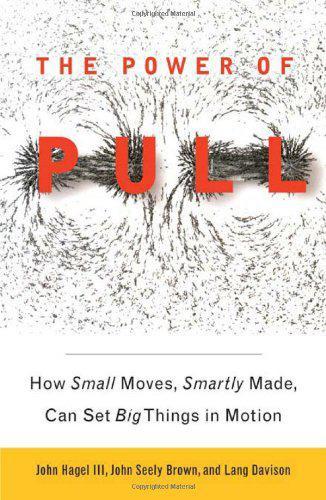
The Power of Pull: How Small Moves, Smartly Made, Can Set Big Things in Motion
by
John Hagel Iii
and
John Seely Brown
Published 12 Apr 2010
In the business world, it has been exceptional individuals who have managed to reshape the terms of competition in markets, industries, and even entire economic sectors. In Salesforce.com’s early years, for example, founder and CEO Marc Benioff painted a compelling view of how to reshape the software industry around a new form of delivery: software as a service. The Fung brothers revolutionized supply-chain practice in the apparel industry. Malcom McLean led Sea-Land to a preeminent position in the containerized shipping business by driving standardization around his innovative container designs. And Dee Hock helped Visa make an exemplary shaping move in the 1970s at a time when banks had gotten into difficulty by aggressively sending out preapproved credit cards (even to newborns and family pets) without the infrastructure needed to support such large-scale transactions, or to sufficiently guard against fraud.
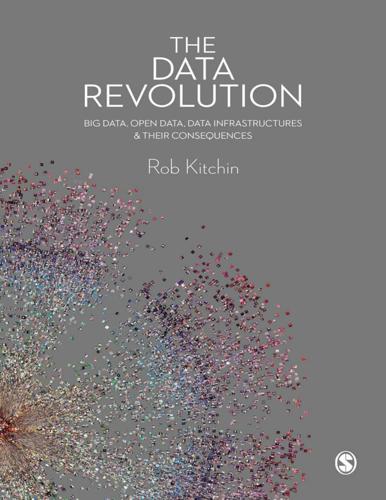
The Data Revolution: Big Data, Open Data, Data Infrastructures and Their Consequences
by
Rob Kitchin
Published 25 Aug 2014
Utility clouds provide IT capabilities as locationindependent, on-demand services accessible via the Internet, including ‘infrastructure as a service’ (IaaS) such as storage, servers and networks, ‘platform as a service’ (PaaS) comprising an execution environment for the development of custom applications and databases, and ‘software as a service’ (SaaS) that enables users to access their applications and to process data remotely (Farber et al. 2011; Hancke et al. 2012). Data clouds enable massive volumes of data, that might be generated across an enterprise, to be linked, stored and processed remotely, drawing on the computational power of hundreds of machines, and analysed via utility services (Farber et al. 2011).
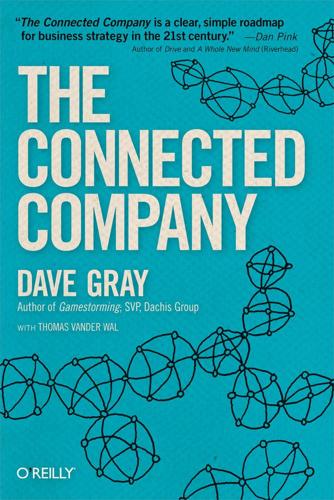
The Connected Company
by
Dave Gray
and
Thomas Vander Wal
Published 2 Dec 2014
Maneuver warfare requires that central commanders trust their forces to make tactical decisions in the field, within the context of a larger strategy. Thus, a central tenet of a maneuver strategy is distributed control. You can see maneuver strategies employed today by companies such as Amazon, which operates at a faster strategic pace than traditional booksellers and publishers, and software-as-a-service companies like Salesforce, which can run circles around traditional enterprise software vendors by making their software so easy to buy and start using that their sales cycles move much faster than competitors. Moral: Boyd said “People, not weapons, win wars.” Moral warfare concentrates on the people factor, focusing on winning the hearts and minds of the people while undermining the adversary’s efforts.
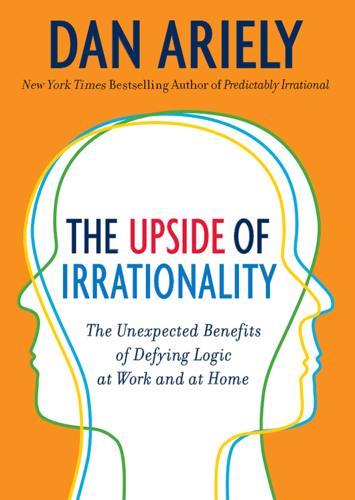
The Upside of Irrationality: The Unexpected Benefits of Defying Logic at Work and at Home
by
Dan Ariely
Published 31 May 2010
.* If we think about organizational culture as an important component of the Not-Invented-Here mentality, one way to track this tendency might be to look at the speed in which acronyms blossom inside companies, industries, and professions. (For example, ICRM stands for Innovative Customer Relationship Management; KPI for Key Performance Indicator; OPR for Other People’s Resources; QSC for Quality, Service, Cleanliness; GAAP for Generally Accepted Accounting Principles; SAAS for Software as a Service; TCO for Total Cost of Ownership; and so on). Acronyms confer a kind of secret insider knowledge; they give people a way to talk about an idea in shorthand. They increase the perceived importance of ideas, and at the same time they also help keep other ideas from entering the inner circle.
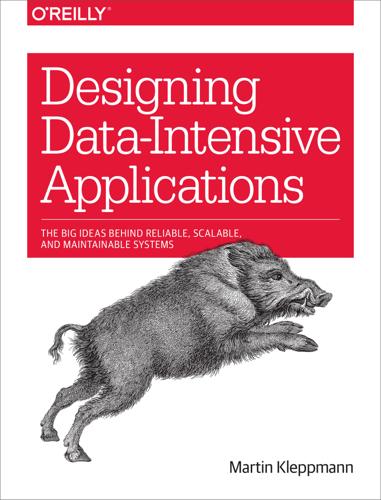
Designing Data-Intensive Applications: The Big Ideas Behind Reliable, Scalable, and Maintainable Systems
by
Martin Kleppmann
Published 16 Mar 2017
This book has a bias toward free and open source software (FOSS), because reading, modifying, and executing source code is a great way to understand how something works in detail. Open platforms also reduce the risk of vendor lock-in. However, where appropriate, we also discuss proprietary software (closed-source software, software as a service, or companies’ in-house software that is only described in literature but not released publicly). Outline of This Book This book is arranged into three parts: In Part I, we discuss the fundamental ideas that underpin the design of data-intensive applications. We start in Chapter 1 by discussing what we’re actually trying to achieve: reliability, scalability, and maintainability; how we need to think about them; and how we can achieve them.
…
And remarkably, relational databases turned out to generalize very well, beyond their original scope of business data processing, to a broad variety of use cases. Much of what you see on the web today is still powered by relational databases, be it online publishing, discussion, social networking, ecommerce, games, software-as-a-service productivity applications, or much more. The Birth of NoSQL Now, in the 2010s, NoSQL is the latest attempt to overthrow the relational model’s dominance. The name “NoSQL” is unfortunate, since it doesn’t actually refer to any particular technology—it was originally intended simply as a catchy Twitter hashtag for a meetup on open source, distributed, nonrelational databases in 2009 [3].

The End of Ownership: Personal Property in the Digital Economy
by
Aaron Perzanowski
and
Jason Schultz
Published 4 Nov 2016
In the next chapter, we will discuss the licensing practices of software companies in greater detail. For now, it’s enough to note that the industry pioneered the widespread use of license agreements as a strategy for undermining end user ownership and exhaustion. Other innovations in the software industry, from digital rights management to the software-as-a-service business model, have helped developers put even greater distance between software transactions and the traditional rules of private property. Legislatively, the industry successfully lobbied Congress to pass the Computer Software Rental Amendments Act, which prevents the rental of most software programs.52 Today, the video game industry is the fiercest opponent of exhaustion.
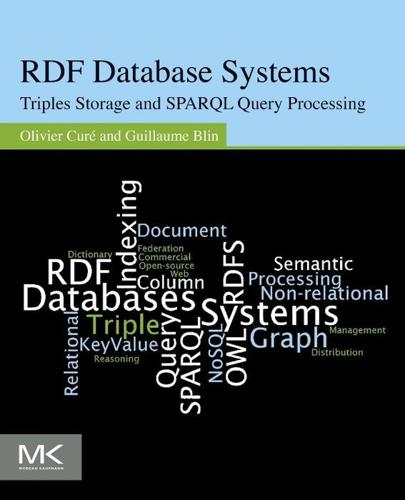
RDF Database Systems: Triples Storage and SPARQL Query Processing
by
Olivier Cure
and
Guillaume Blin
Published 10 Dec 2014
The next two systems are evolving in a cloud infrastructure using the available data stores. They have been implemented in the Amazon Web Service (AWS) cloud but are using different database solutions. Amada is defined by its authors as a Web data repository in the cloud. Its architecture belongs to the software as a service (SaaS) category, which natively provides scalability and elastic resource allocation.The system aims at providing a storage solution for Web data formats of the W3C, namely XML and RDF, and is based on the AWS cloud infrastructure. As such, it uses two of its data storage solutions: Amazon’s Simple Storage Service (S3) is responsible for storing the data (i.e., RDF triples), while the column family SimpleDB, one of Amazon’s proprietary stores, takes care of data indexes.
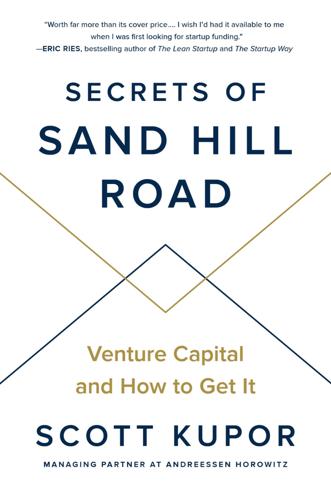
Secrets of Sand Hill Road: Venture Capital and How to Get It
by
Scott Kupor
Published 3 Jun 2019
In that case, your job as an entrepreneur is to fit yourself into that market and explain what macro trends are evolving in that market that create an opportunity for you to own it. An example from our portfolio is Okta, which is a now-public company that we first invested in back in 2009. Okta is an enterprise software company that provides a way for companies to consolidate log-in credentials for their many software-as-a-service (SAAS) applications. For example, many modern companies use Gmail, Salesforce, and a variety of other internet-based SAAS applications, each of which has its own method of logging in and authenticating users into the applications. Okta provides a unified portal whereby a user needs only to log in to Okta once, and then Okta passes those credentials through to all the SAAS applications for which an employee is granted access.
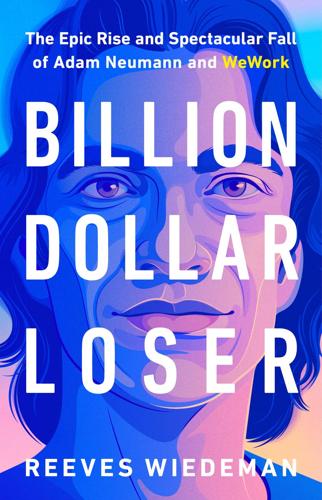
Billion Dollar Loser: The Epic Rise and Spectacular Fall of Adam Neumann and WeWork
by
Reeves Wiedeman
Published 19 Oct 2020
Benioff launched Salesforce during the last dot-com boom and came out the other side as a majordomo of the start-up world. He was preparing to move his company into an eponymously named tower that would be San Francisco’s tallest. Salesforce, which offered back-end technological solutions for corporations, was at the leading edge of the software-as-a-service movement. The new business model centered on selling subscriptions to a variety of computer applications that could be accessed through the cloud. Masa had built his fortune selling floppy disks and CD-ROMs, but thirty years later, SaaS businesses were producing some of Silicon Valley’s largest valuations: Salesforce, Slack, Palantir, and a host of largely anonymous companies that offered new cloud-based services forming the backbone of the new economy.
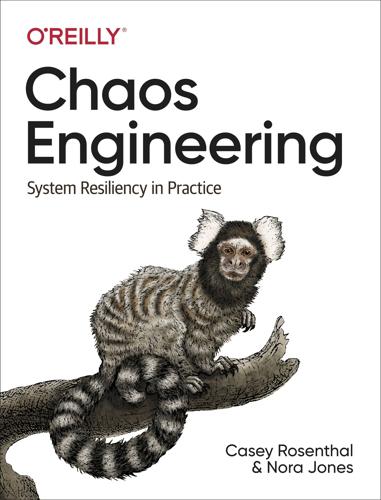
Chaos Engineering: System Resiliency in Practice
by
Casey Rosenthal
and
Nora Jones
Published 27 Apr 2020
When you start to have more ideas, then time to try them, you know you’re headed in the right direction. About the Author Andy Fleener is a humanist and a “new view” safety nerd who believes software is as much about the people developing and operating it as it is the people using it. He is the senior platform operations manager at SportsEngine, where he’s been building and running software-as-a-service applications for youth and amateur sports organizations since 2011. 1 SNAFUcatchers, “Dark Debt,” STELLA: Report from the SNAFUcatchers Workshop on Coping With Complexity, March 14-16, 2017, https://oreil.ly/D34nE. 2 Steven Shorrock, “The Varieties and Archetypes of Human Work,” Safety Synthesis: The Repository for Safety-II (website), https://oreil.ly/6ECXu. 3 Richard I.

Ghost Road: Beyond the Driverless Car
by
Anthony M. Townsend
Published 15 Jun 2020
It sounds odd, but it’s surprisingly straightforward. This is a recipe for reorganizing the remaining people-moving we can’t avoid after we make the shift from transportation to mobility. It’s an approach that we’re all familiar with, too, as so much of our online lives is already delivered asa-service. Take webmail, a good example of software-as-a-service. Twenty years ago, if you wanted to read email you installed an app on your computer and it fetched the messages from a server. As your little digital letters were plucked from the remote mailbox, they’d disappear over there and appear here. It was an utterly useless anachronism, which webmail thankfully did away with by moving both the email software and the data back to the server for good.
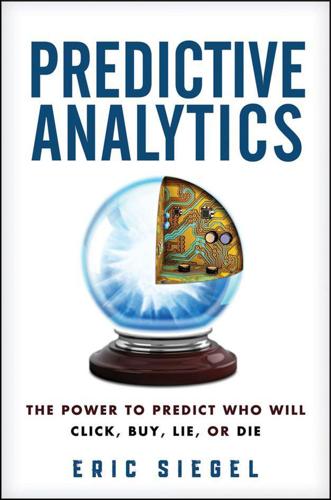
Predictive Analytics: The Power to Predict Who Will Click, Buy, Lie, or Die
by
Eric Siegel
Published 19 Feb 2013
Countless sensors deploy daily. Mobile devices, robots, and shipping containers record movement, interactions, inventory counts, and radiation levels. Personal health monitors watch your vital signs and exercise routine. The mass migration of online applications from your desktop up into the cloud (aka software as a service) makes even more of your computer use recordable by organizations. Free public data is also busting out, so a wealth of knowledge sits at your fingertips. Following the open data movement, often embracing a not-for-profit philosophy, many data sets are available online from fields like biodiversity, business, cartography, chemistry, genomics, and medicine.

Augmented: Life in the Smart Lane
by
Brett King
Published 5 May 2016
In his spare time, he is an IFR-rated private pilot, scuba diver and gamer. About the Contributors Andy Lark Andy Lark is a globally awarded marketer and business leader. Today, he is the chief marketing and business officer of Xero, the cloud accounting software leader and one of the world’s fastest-growing software as a service (SAAS) companies. Xero was named the world’s most innovative growth company in 2015 by Forbes. For the past two decades, Lark has worked alongside CEOs and their leadership teams to define—and then attain—digital and brand greatness for their institutions. These include Air New Zealand, Brocade, Commonwealth Bank, Coles, Dell, Emirates Team New Zealand, IBM, Simplot, Southwest Airlines, Sun, the New Zealand government, Visa and Xero.

The Industries of the Future
by
Alec Ross
Published 2 Feb 2016
Precision agriculture is not based on huge enterprise software systems that take up half the barn. That expensive software is in the cloud and accessible on cheap devices like smartphones and the tablets I saw in the tractor’s “cockpit.” The costs on the hardware side, including the sensors, will continue to decline, and the real costs will come from subscriptions to the software as a service—the precision agriculture content. This is the business model the big agribusinesses are already pushing, and it will spread from the highest-tech farmers working huge fields to the small family farm. It will still take years for this kind of technology to mainstream in wealthy parts of the world, but it will happen.
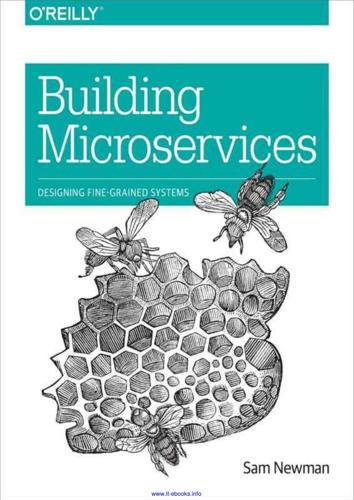
Building Microservices
by
Sam Newman
Published 25 Dec 2014
Integrating with Third-Party Software We’ve looked at approaches to breaking apart existing systems that are under our control, but what about when we can’t change the things we talk to? For many valid reasons, the organizations we work for buy commercial off-the-shelf software (COTS) or make use of software as a service (SaaS) offerings over which we have little control. So how do we integrate with them sensibly? If you’re reading this book, you probably work at an organization that writes code. You might write software for your own internal purposes or for an external client, or both. Nonetheless, even if you are an organization with the ability to create a significant amount of custom software, you’ll still use software products provided by external parties, be they commercial or open source.
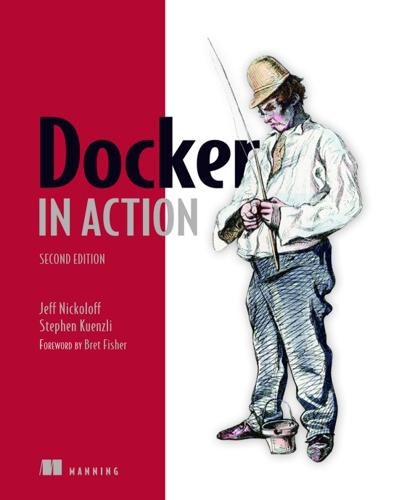
Docker in Action
by
Jeff Nickoloff
and
Stephen Kuenzli
Published 10 Dec 2019
He has done these things at Amazon.com, Limelight Networks, and Arizona State University. After leaving Amazon in 2014, he founded a consulting company and focused on delivering tools, training, and best practices for Fortune 100 companies and startups alike. In 2019, he and Portia Dean founded Topple Inc., where they build productivity software as a service. Topple helps teams address the communication and coordination issues that slow them down, put their business at risk, and generally make work suck. If you’d like to chat or work together, you can find him at http://allingeek.com, or on Twitter as @allingeek. STEPHEN KUENZLI has designed, built, deployed, and operated highly available, scalable software systems in high-tech manufacturing, banking, and e-commerce systems for nearly 20 years.
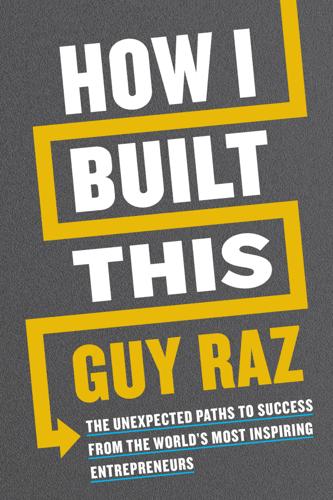
How I Built This: The Unexpected Paths to Success From the World's Most Inspiring Entrepreneurs
by
Guy Raz
Published 14 Sep 2020
The high-cost Palo Alto office filled with West Coast tech people who had different ideas for what Bonobos should be, and the derivative golf (Maide) and women’s clothing (AYR) brands they launched—those were experiments that were “outside the scope of the Bonobos brand.” Maide hung on to become Bonobos Golf in 2017, but AYR was successfully spun out, as were the technology functions of the Palo Alto office, into a personalization SaaS (software as a service) company with their former chief technology officer, Michael Hart, as CEO. By 2014, Bonobos was already “massively turning the corner,” to use Andy’s phrase. The key mover that did it for them was twofold: they finally owned what the brand was, and then they took it multichannel beyond e-commerce into physical brick-and-mortar with their Guideshops and Nordstrom partnership.

Boom: Bubbles and the End of Stagnation
by
Byrne Hobart
and
Tobias Huber
Published 29 Oct 2024
Unfortunately, a ritualistic invocation of the shibboleth of “innovation” hasn’t magically translated into actual human progress. 7 It’s telling that right after the Moon landing the use of the word “progress” started to decline and use of the term “innovation” took off, reflecting a linguistic narrowing that refers almost exclusively to developments in software and information technologies. 8 The contemporary “cult of innovation,” as philosopher René Girard called it, 9 seems to distract us from the fact that true progress has become an increasingly rare occurrence. Against the self-aggrandizing claims of “innovation”—often simply employed to sell a slightly improved beauty care formula, the latest software-as-a-service product, or any startup pitched as “X for Y”—we need to reclaim the meaning of innovation as a truly singular inflection point, a development that reorders the present and impacts the trajectory of the future. If the root cause of techno-economic stagnation is essentially cultural and spiritual, then it becomes clear that a technological upgrade might not be enough to reverse the trend of civilizational entropy.

The Age of Surveillance Capitalism
by
Shoshana Zuboff
Published 15 Jan 2019
This obfuscation is no longer tenable, as every consumer who pays his or her monthly telecom bill now also purchases the privilege of a remote and abstract but nevertheless rapacious digital strip search.148 New and established companies from every sector—including retail, finance, fitness, insurance, automotive, travel, hospitality, health, and education—are joining the migratory path to surveillance revenues, lured by the magnetism of outsized growth, profit, and the promise of the lavish rewards that only the financial markets can confer. We will explore many examples drawn from these sectors in the coming chapters. In another trend, surveillance in the interest of behavioral surplus capture and sale has become a service in its own right. Such companies are often referred to as “software-as-a-service” or SaaS, but they are more accurately termed “surveillance as a service,” or “SVaaS.” For example, a new app-based approach to lending instantly establishes creditworthiness based on detailed mining of an individual’s smartphone and other online behaviors, including texts, e-mails, GPS coordinates, social media posts, Facebook profiles, retail transactions, and communication patterns.149 Data sources can include intimate details such as the frequency with which you charge your phone battery, the number of incoming messages you receive, if and when you return phone calls, how many contacts you have listed in your phone, how you fill out online forms, or how many miles you travel each day.
…
See also Facebook social participation: as coextensive with means of behavioral modification, 342; and dependency on digital connection, 4, 11, 174, 339, 342, 446, 449, 455–456 social persuasion: as one reason for success of surveillance capitalism, 343 Social Physics (Pentland), 418, 419, 430 social pressure: experienced by young people on social media, 447–448, 454; Facebook’s use of, 436, 446, 463, 467, 468–469; and instrumentarianism, 444; operating through privatized digital spaces, 456; Pentland’s advocacy of, in social learning, 431, 435–437; social comparison heightening, 463 social proof, 456–457 social relations, instrumentarianism’s principles of, 431–441; applied utopistics, 437–438; behavior for the greater good (collective perspective and values), 431–432; death of individuality, 438–441; as facts of modern life, 469; plans replace politics, 432–435; social pressure for harmony, 435–437 social relations, rendition of, 419–429; instruments for, 419–421, 423–424; Pentland’s essay on, 426–429; and Pentland’s work on sociometrics, 422–425; and reality mining, 420–423 social trust: in China, 389; and contracts, 334; decline of, 383–384; superseded by instrumentarianism, 442; and the uncontract, 336–337 society: instrumentarianism’s control over, 20–21, 399, 400–404 “Society’s Nervous System: Building Effective Government, Energy, and Public Health Systems” (Pentland), 426–429 sociometer, 420, 423–424 Sociometric Solutions (later renamed Humanyze), 424–425 software-as-a-service (SaaS), 172–174 Sonnets from China (Auden), 24; I, 98, 176, 398; II, 27; III, 495; VI, 63, 199; VII, 376; VIII, 445; IX, 329; X, 351, 416; XI, 293 Sontag, Susan, 233 sorcerer’s apprentice, 404, 481 soul, the: as exempt from scientific inquiry, 364–365; totalitarianism’s engineering of, 353, 354–355, 359, 372–373 sovereignty of the individual, 6, 21, 36, 469, 521; and creation of meaning from experience, 290–291; elemental rights of, 54, 332.
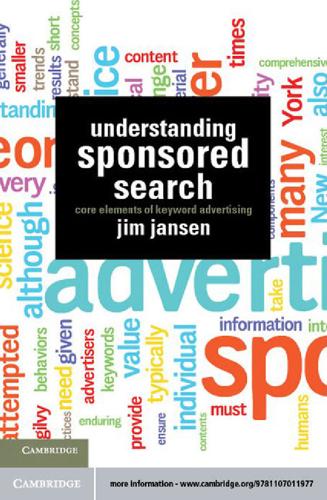
Understanding Sponsored Search: Core Elements of Keyword Advertising
by
Jim Jansen
Published 25 Jul 2011
Social media: a category of sites that is based on user participation and user-generated content. They include social networking sites like LinkedIn or Facebook, social bookmarking sites like Del.icio.us, social news sites like Digg or Reddit, and other sites that are centered on user interaction (Source: Search Engine Watch) (see Chapter 10 future). Software as a service (SaaS): sometimes referred to as “software on demand,” it is software that is deployed over the Internet and/or is deployed to run behind a firewall on a local area network (LAN) or personal computer. With SaaS, a provider licenses an application to customers either as a service on-demand, through a subscription, on a “pay-as-you-go” basis, or (increasingly) at no charge.
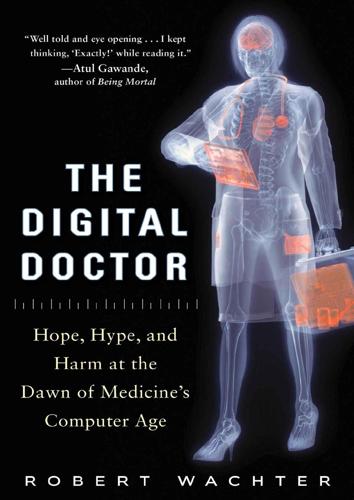
The Digital Doctor: Hope, Hype, and Harm at the Dawn of Medicine’s Computer Age
by
Robert Wachter
Published 7 Apr 2015
This is techno-speak for the difference between using a suite of the old Microsoft Office programs (all of which lived on physical servers in your company’s closets and required lots of training, legions of on-site IT staff, and insertion of new disks for program upgrades) to the modern cloud-based architecture (software as a service, or SaaS) of products like Gmail and Dropbox. After stints as a New Orleans EMT, an army medic, and a Booz Allen consultant (“I was a misfit as a consultant,” he said. “I couldn’t even spell well”), in 1997, Bush and Todd Park,35 a fellow consultant, launched a birthing center in San Diego (“we would be the Starbucks of obstetrics, a no-nonsense moneymaker that’s warm on the outside and knows the customers’ needs, tastes, and phobias,” he wrote in 2014).
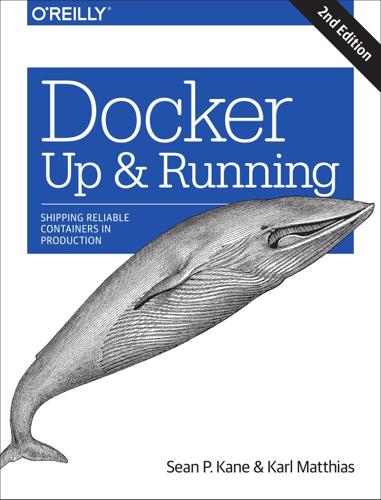
Docker: Up & Running: Shipping Reliable Containers in Production
by
Sean P. Kane
and
Karl Matthias
Published 15 Mar 2018
Both documents contain a lot of ideas that should help guide you through the design and implementation of your container platform and ensure more resiliency and supportability across the board. 299 The Twelve-Factor App In November of 2011, well before the release of Docker, Heroku cofounder Adam Wiggins and his colleagues released an article called “The Twelve-Factor App.” This document describes a series of 12 practices, distilled from the experiences of the Her‐ oku engineers, for designing applications that will thrive and grow in a modern container-based Software-as-a-Service (SaaS) environment. Although not required, applications built with these 12 steps in mind are ideal candi‐ dates for the Docker workflow. Next we will explore each of these steps and explain why they can, in numerous ways, help improve your development cycle. Codebase One codebase tracked in revision control.
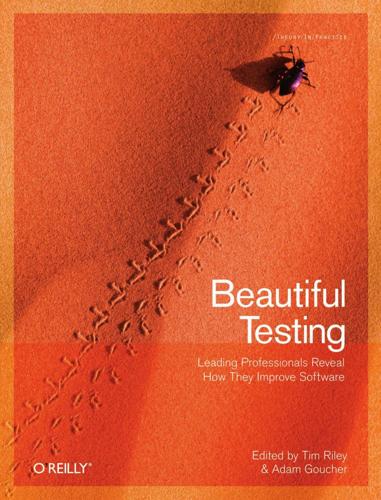
Beautiful Testing: Leading Professionals Reveal How They Improve Software (Theory in Practice)
by
Adam Goucher
and
Tim Riley
Published 13 Oct 2009
I found that I could add 250 characters of text with no spaces and cause serious scrollbar and margin issues in the revision history page. After a quick huddle, we decided that a) you don’t see this issue using the largest words in the English dictionary, b) it should probably be fixed, but perhaps not today, and c) I would create a bug report. That tests the story once, but we release out to our Software-as-a-Service production server every two weeks, and a minor change to something else can easily ripple. If we retested every acceptance test on every browser every two weeks, the burden would eventually cripple the team. So we do some test automation using a framework we developed called wikitests. Wikitests‡ A wikitest is a keyword-driven test that drives the browser.
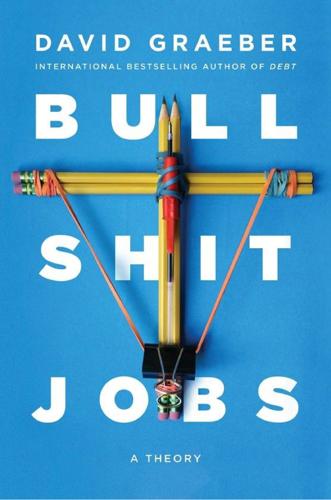
Bullshit Jobs: A Theory
by
David Graeber
Published 14 May 2018
Finn works for a company that licenses software on a subscription basis: Finn: From the moment I first read the “Bullshit Jobs” essay a couple of years back, it resonated with me. I continue to pull it out occasionally to read and refer friends to. I’m a manager of technical support for a software-as-a-service company. My job seems to mostly consist of sitting in meetings, emailing, communicating coming changes to my team, serving as an escalation point for client issues, and doing performance reviews. Performance reviews, Finn admits, are bullshit, explaining, “Everyone already knows who the slackers are.”

The Optimist: Sam Altman, OpenAI, and the Race to Invent the Future
by
Keach Hagey
Published 19 May 2025
At the time, Palo Alto was the center of the tech universe; the industry had not yet migrated to San Francisco. On any given night, beneath the eerie pink Peninsula skies, there were multiple mixers and events sponsored by startups and venture firms where the talk was about what’s next in mobile or software-as-a-service. Then Radiate’s team would head over to Antonio’s Nut House, a dive bar stinking of cheap beer and the peanut shells that littered the floor. Otherwise they’d go to parties hosted by fellow startup founders. The Radiate crew could sometimes be found at the curious house/office rented by Aaron Levie and Dylan Smith, who had dropped out of college to co-found the cloud storage company Box the same year and threw parties featuring foosball and beer pong.
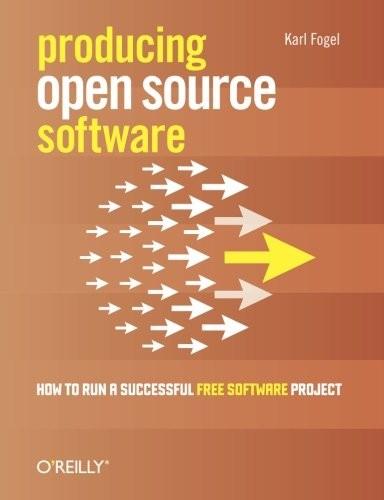
Producing Open Source Software: How to Run a Successful Free Software Project
by
Karl Fogel
Published 13 Oct 2005
If you conclude that for business reasons you want to try it anyway, then I hope this section will at least help you mitigate some of those effects.[99] * * * [97] This is sometimes also called dual licensing, but that term is ambiguous, as it has historically also referred to releasing open source software under two or more open source licenses simultaneously. I am grateful to Bradley Kuhn for pointing out this ambiguity and suggesting the more accurate term. [98] In both cases hosted as Software-as-a-Service (SaaS), just to be clear. [99] Sometimes the terms-of-service agreements for online software distribution services — the Apple App Store, for example — effectively force you to use proprietary relicensing if you want to distribute copylefted software. I won't go into detail here, but if you're distributing GPL-licensed or other copylefted code from a place that restricts users from redistributing what they download, you may be in this situation.
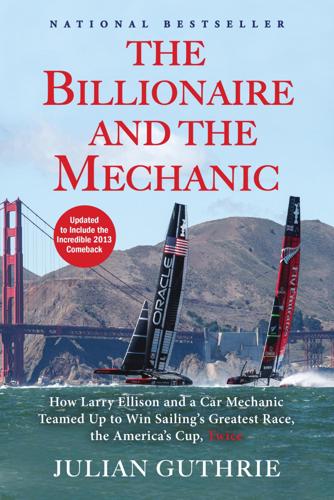
The Billionaire and the Mechanic: How Larry Ellison and a Car Mechanic Teamed Up to Win Sailing's Greatest Race, the Americas Cup, Twice
by
Julian Guthrie
Published 31 Mar 2014
One of the anticipated topics was cloud computing, and Larry was expected to introduce Oracle’s newest applications for the cloud, something critics said he was late in bringing to the game. Larry responded that he “could not have been late to the cloud” because he “invented the cloud” in 1998, when he founded NetSuite, which offered the cloud-based Software-as-a-Service (SAAS) for business management. NetSuite was started six months before Salesforce.com was founded in 1999 by Marc Benioff, a former Oracle employee. NetSuite was the second-biggest cloud company in the world, trailing Salesforce, but Larry vowed, “In a few years Oracle will be number one in the cloud.”
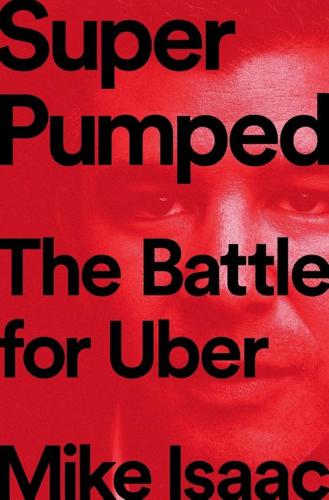
Super Pumped: The Battle for Uber
by
Mike Isaac
Published 2 Sep 2019
Kalanick brought a meticulously composed slide deck, larded with cherry-picked numbers that showed Uber’s enormous “hockey stick potential”—a term that referred to the shape of the growth curve every entrepreneur and venture capitalist wants to see when building a company. And he didn’t have to work hard to get those numbers. Uber had what was called “negative churn”—a term often used to describe software as a service, or SaaS, companies. Having negative churn meant that once customers used the product, they were more likely to keep using it regularly thereafter. “It means that customer accounts are like high-yield savings accounts,” a venture capitalist once wrote of the term. “Every month, more money comes in, without much effort.”

Actionable Gamification: Beyond Points, Badges and Leaderboards
by
Yu-Kai Chou
Published 13 Apr 2015
Though these endorsements mean very little from a career standpoint, by allowing users to aimlessly endorse each other, there is finally something to do on Linkedin. Conformity Anchor (Game Technique #58) Earlier we learned about the power of Social Norming. A game design technique I call Conformity Anchors implements this effect into products or experiences by displaying how close users are to the social norm through Feedback Mechanics. The SaaS (Software-as-a-Service) company Opower, which supplies services to public utilities, is a great example of using Conformity Anchors. Opower’s mission is to reduce our collective energy consumption. Their model is inspired by Robert Cialdini whom we have mentioned a few times in this book and is one of the leading experts on Core Drives 4 and 5, as well as the upcoming Core Drive 6: Scarcity & Impatience.
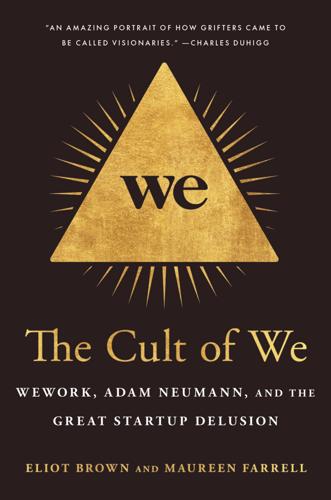
The Cult of We: WeWork, Adam Neumann, and the Great Startup Delusion
by
Eliot Brown
and
Maureen Farrell
Published 19 Jul 2021
WeWork was part of the sharing economy; it needed offices just as Uber and Airbnb needed cars and apartments, he told investors. Its tech was cutting edge, he’d say. The entrepreneur who could barely use a MacBook managed to pepper references to technology effortlessly into his pitch. WeWork was offering “space as a service”—a play on the “software as a service” business model that was taking off in Silicon Valley. The company was “powered by technology at every layer,” according to slide presentations. In these pitches, WeWork neatly displayed data within screenshots of iPhones and MacBooks, as though they were essential tools for using the office space.
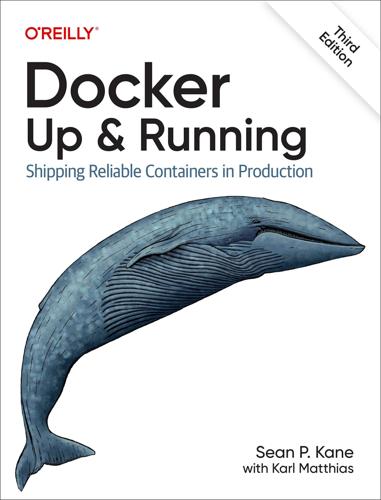
Docker: Up & Running: Shipping Reliable Containers in Production
by
Sean Kane
and
Karl Matthias
Published 14 May 2023
Nabla Containers provide another sandboxed runtime designed to significantly reduce the attack surface of Linux containers. The space around deploying containers and orchestrating entire systems of containers continues to expand, too. Many of these are open source and available both on premises and as cloud or software as a service (SaaS) offerings from various providers, either in their clouds or yours. Given the amount of investment continuing to pour into the Linux container space, it’s likely that Docker will continue to have an important role in the modern internet. Architecture Docker is a powerful technology, and that often indicates both tools and processes that come with a high level of complexity.

Makers at Work: Folks Reinventing the World One Object or Idea at a Time
by
Steven Osborn
Published 17 Sep 2013
I think it’s important to not spend too much time building that first prototype, to not make it perfect, because the laws of business still apply: most things will fail. I actually had a Kickstarter project before the Digispark that failed. It fell flat. Nobody was interested in it. And it was a software project. It was a software as a service dashboarding application, intended to provide real-time metrics. And I thought it was such a great idea. I thought it would be a big hit, and it fell completely flat. With the Digispark, I thought maybe I could sell one hundred of them, and it took off. So I think you’ve got to build it and test it, and test the waters and not spend too much time on the details until you do that.

The Zero Marginal Cost Society: The Internet of Things, the Collaborative Commons, and the Eclipse of Capitalism
by
Jeremy Rifkin
Published 31 Mar 2014
I have long been a skeptic when it comes to the prospect of AI besting world-class translators. Still, recent advances in AI are bringing that day ever closer. Lionbridge is a company that provides real-time translation for online customer support, allowing consumers to speak across languages via instant translation of user-generated content. Its GeoFluent plug-in software-as-a-service solution, which uses Microsoft translation technology, provides translations between 39 languages. While not yet as proficient as the best translators, GeoFluent is good enough to break the language barrier and bring one-third of the human race already online together in the first truly shared global conversation in all of history, speeding the transition into a universal Commons and Collaborative Age.41 Within a decade or so, businesspeople, workers, and travelers will be equipped with mobile apps allowing them to effortlessly have conversations online or face to face with someone who speaks a different language.

Data and Goliath: The Hidden Battles to Collect Your Data and Control Your World
by
Bruce Schneier
Published 2 Mar 2015
You might expect users to respond by favoring secure services over insecure ones— after all, they’re making their own buying decisions on the basis of the same market model. But that’s not generally possible. In some cases, software monopolies limit the available product choice. In other cases, the “lock-in effect” created by proprietary file formats, existing infrastructure, compatibility requirements, or software-as-a-service makes it harder to switch. In many cases, we don’t know who is collecting our data; recall the discussion of hidden surveillance in Chapter 2. In all cases, it’s hard for buyers to assess the security of any data service. And it’s not just nontechnical buyers; even I can’t tell you whether or not to entrust your privacy to any particular service provider.
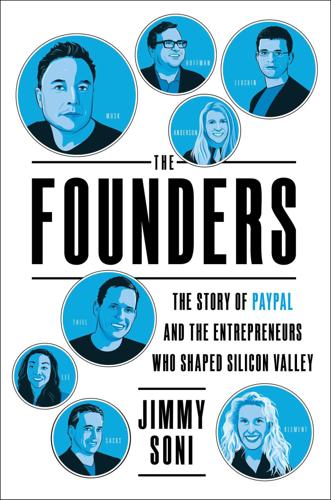
The Founders: The Story of Paypal and the Entrepreneurs Who Shaped Silicon Valley
by
Jimmy Soni
Published 22 Feb 2022
So he revisited a funding model he first used during the lean SponsorNet days: he daisy-chained credit cards to finance the company’s growth, which saddled him with high-interest debt and marred his credit rating for years. * * * Nominally, Levchin was the founder of NetMeridian, a promising software-as-a-service start-up. In reality, he was an indebted twenty-year-old struggling to stay solvent. Thankfully, coders who could work around the clock were in high demand, and Levchin landed a lucrative gig from John Bedford, the head of a firm called Market Access International (MAI). Levchin credited Bedford with his “extraction from poverty,” through programming jobs that paid several thousand dollars per week.

Troublemakers: Silicon Valley's Coming of Age
by
Leslie Berlin
Published 7 Nov 2017
The solution she and Lavey devised, called ASKNET, allowed customers that installed terminals (not full computers) at their companies to use MANMAN software, paying a monthly fee for processing (which would be run on computers at ASK), rather than making a large up-front purchase. In some sense, ASKNET was a throwback to the old time-sharing model. It also anticipated what today is called “software as a service,” in which companies—Salesforce.com is among the best known—offer their services as software that a user accesses through a browser over the web, rather than installing a program on a computer’s hard drive. ASKNET was intended as a stepping-stone for companies too small, new, or timid to invest in their own computers, but businesses ended up staying with ASKNET long past the time it made economic sense.
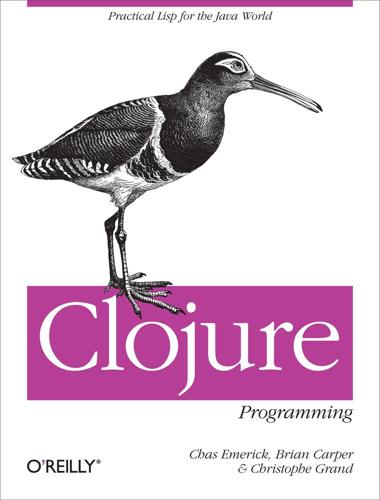
Clojure Programming
by
Chas Emerick
,
Brian Carper
and
Christophe Grand
Published 15 Aug 2011
Read about functional programming in Chapter 2, and pure functions specifically in Pure Functions. Build “Build” is an umbrella term that has come to encompass more and more of the things we do after we’ve written the code but before the code has been delivered (another loaded term, given the complications of software as a service, cloud computing, and so on). For our purposes here, we’ll consider build to mean: Compilation Dependency management, which allows you to systematically use external libraries Packaging the results of compilation and other project assets into artifacts Distribution of those artifacts within a dependency management context That overly formal description sounds more complicated than the activities it describes.
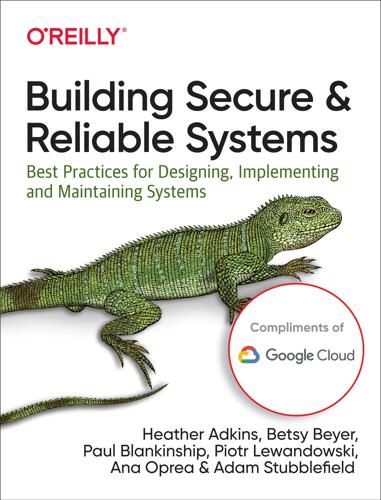
Building Secure and Reliable Systems: Best Practices for Designing, Implementing, and Maintaining Systems
by
Heather Adkins
,
Betsy Beyer
,
Paul Blankinship
,
Ana Oprea
,
Piotr Lewandowski
and
Adam Stubblefield
Published 29 Mar 2020
As we mention in “Improve observability”, instrumenting your applications for logging can also facilitate debugging for esoteric security and reliability issues that would otherwise be difficult to triage. Cloud logs Increasingly, organizations are moving parts of their business or IT processes to cloud-based services, ranging from data in Software-as-a-Service (SaaS) applications to virtual machines running critical customer-facing workloads. All of these services present unique attack surfaces and generate unique logs. For example, an attacker can compromise the account credentials for a cloud project, deploy new containers to the project’s Kubernetes cluster, and use those containers to steal data from the cluster’s accessible storage buckets.

Tools of Titans: The Tactics, Routines, and Habits of Billionaires, Icons, and World-Class Performers
by
Timothy Ferriss
Published 6 Dec 2016
Grow things that you can fully control that directly affect sales, like your email list. ‘Likes’ don’t pay the bills. Sales do.” ✸ Who are three people or sources you’ve learned from—or followed closely—in the last year? Andrew Chen (Growth team at Uber), Tomasz Tunguz (venture capitalist and software as a service [SaaS] expert), Jonathan Siegel (chairman of Earth Class Mail) For Hiring Well—“Who?” Is Often More Important Than “What?” “The Who book [by Geoff Smart, Randy Street] is a condensed version of Topgrading, and I learned of it at Mint, where the founder was using it.” TF: I now recommend this book to all of my startup founders, who have, in turn, recommended it to others.
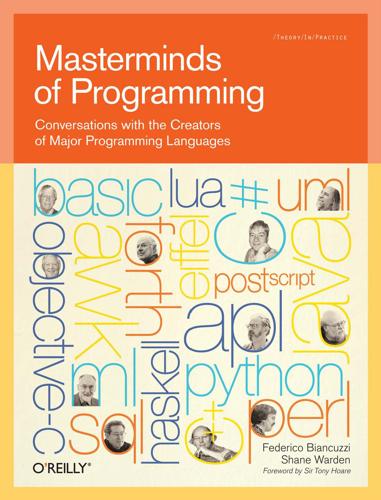
Masterminds of Programming: Conversations With the Creators of Major Programming Languages
by
Federico Biancuzzi
and
Shane Warden
Published 21 Mar 2009
I’ve spent a lot of time in military simulations and it’s very attractive for that kind of problem. There may be other applicable problems that I haven’t thought about. Quality As an Economic Phenomenon How can we improve the quality of software? Brad: One way is to keep software on servers, as we see in Software as a Service (SaaS). There may be hope for an economic answer there, although that approach also has obvious tradeoffs (privacy, security, performance, etc.). I spent a number of years working on the opposite approach, creating an economic system around components that run locally on the end user’s machine, but I have grown pessimistic about this approach because the discussion ends up in digital rights management fight and that could go on forever.

Designing Data-Intensive Applications: The Big Ideas Behind Reliable, Scalable, and Maintainable Systems
by
Martin Kleppmann
Published 17 Apr 2017
And remarkably, relational databases turned out to generalize very well, beyond their original scope of business data processing, to a broad variety of use cases. Much of what you see on the web today is still powered by relational databases, be it online publishing, discussion, social networking, ecom‐ merce, games, software-as-a-service productivity applications, or much more. The Birth of NoSQL Now, in the 2010s, NoSQL is the latest attempt to overthrow the relational model’s dominance. The name “NoSQL” is unfortunate, since it doesn’t actually refer to any particular technology—it was originally intended simply as a catchy Twitter hashtag for a meetup on open source, distributed, nonrelational databases in 2009 [3].
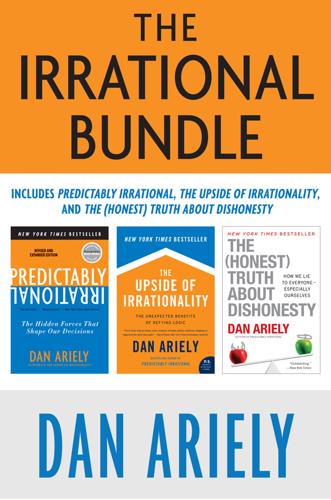
The Irrational Bundle
by
Dan Ariely
Published 3 Apr 2013
.* If we think about organizational culture as an important component of the Not-Invented-Here mentality, one way to track this tendency might be to look at the speed in which acronyms blossom inside companies, industries, and professions. (For example, ICRM stands for Innovative Customer Relationship Management; KPI for Key Performance Indicator; OPR for Other People’s Resources; QSC for Quality, Service, Cleanliness; GAAP for Generally Accepted Accounting Principles; SAAS for Software as a Service; TCO for Total Cost of Ownership; and so on). Acronyms confer a kind of secret insider knowledge; they give people a way to talk about an idea in shorthand. They increase the perceived importance of ideas, and at the same time they also help keep other ideas from entering the inner circle.

Palo Alto: A History of California, Capitalism, and the World
by
Malcolm Harris
Published 14 Feb 2023
The NSFNET commercialized at the same time, and as the world went online, Sun sold the gold pans in the form of powerful web servers and the universal web programming language Java, which did for web coding what the multiprotocol router did for networking. These were the first internet boom years, when vast arrays of internetworked hardware promised to disrupt every industry in the world. Companies raced to snap up networking and hosting equipment from 3Com, Cisco, and Sun as well as the software-as-a-service offerings of Oracle. Buoyed by market enthusiasm, the firms scaled by acquisition, interweaving into friendly keiretsus through their shared shareholders. In 1995, Bechtolsheim left Sun to found a company devoted to speeding up Ethernet, which was quickly snapped up by Cisco for a cool $220 million, a nice payback to Bechtolsheim for designing the company’s original computer board.10 The firm 3Com got so big that it bought the naming rights to Candlestick Park, home of the San Francisco Giants and 49ers, a venue previously named for the chilly promontory where it had sat since the baseball team moved there, in 1960.